Laccospadix australasicus
Lachnagrostis billardierei
Lachnagrostis filiformis
Lagenophora gracilis
Lagenophora sublyrata
Lagerstroemia archeriana
Lagunaria patersonii
Lambertia echinata
Lambertia formosa
Landoltia punctata
Larsenaikia ochreata
Lasiopetalum ferrugineum
Lasiopetalum macrophyllum
Lasiopetalum schulzenii
Lastreopsis acuminata
Lastreopsis decomposita
Lastreopsis marginans
Lastreopsis microsora
Lastreopsis munita
Lastreopsis rufescens
Laxmannia gracilis
Lechenaultia biloba
Lechenaultia formosa
Leea indica
Leea novoguineensis
Leersia hexandra
Legnephora moorei
Leiocarpa serpens
Leionema elatius
Lemna minor
Lemna trisulca
Lenwebbia prominens
Lepiderema pulchella
Lepidosperma concavum
Lepidosperma elatius
Lepidosperma filiforme
Lepidosperma gunnii
Lepidosperma latens
Lepidosperma laterale
Lepidosperma limicola
Lepidosperma longitudinale
Lepidosperma neesii
Lepidosperma quadrangulatum
Lepidosperma tortuosum
Lepidosperma urophorum
Lepidozamia hopei
Lepidozamia peroffskyana
Lepironia articulata
Leptocarpus tenax
Leptomeria acida
Leptomeria drupacea
Laccospadix australasicus
Classification:
Unranked: Monocots
Unranked:Commelinids
Order: Arecales
Family: Arecaceae
Subfamily: Arecoideae
Tribe: Areceae
Genus: From Lakkos, which is Ancient Greek or later Lacos, which is Latin for a pit and Spadix which is Ancient Greek for a palm frond. It refers to the flowers, which are born in hollow pits on the same type of spadix as the fronds.
Specie: From Terra Australis, which is Latin for land of the south and Asiatica, which is Latin for Asia. It refers to plants, which are found from Asia (Minor) through to Australia.
Common Name: Walking Stick Palm.
Distribution:
Laccospadix australasicus is found south from Mount Finnegan to Benham Lookout in the Paluma National Park in far north Queensland.
It is also found in eastern Indonesia, New Guinee and the western Pacific Island Nations.
https://avh.ala.org.au/occurrences/search?taxa=Laccospadix+australasicus#tab_mapView
Habitat Aspect Climate:
Laccospadix australasicus prefers medium shade to heavy shade. It grows along creek banks in well-developed warm rainforests, wet littoral rainforests or Melaleuca forests. The altitude ranges from 100 meter ASL to 1600 meters ASL.
The temperatures range from 10 degrees in August to 36 degrees in January.
The rainfall ranges from lows of 1800mm to an average of 3200mm.
Soil Requirements:
Laccospadix australasicus prefer to grow on better quality sandy loams to light gritty clays. The soils are usually derived from decomposed granites. The soils pH ranges from 5pH to 6pH. It does not tolerate waterlogged soils. Non saline soils to the lower end of very saline soils are tolerated.
Height & Spread:
Wild Plants: 4m to 6.5m by 1.5m to 2m.
Characteristics:
Laccospadix australasicus’s grows as a small single trunk or multi trunked self-cleaning palm. The trunks are pale maroon with grey patches and often with lichens while the upper trunk is covered in scars from the old leaf bases and old fruiting spikes. The trunk measures 50mm to 80mm in diameter.
Laccospadix australasicus’s crown has 10 to 14 leaves. The rounded triangular petiole measures 550mm to 650mm in length by 10mm to 16mm in diameter. The petiole is grass-green.
The chartaceous, linear leaves measure 170mm to 400mm in length by 15mm to 30mm in width. There are 40 to 50 individual leaflets on a rachis. The bases are folded longitudinally and are convex on the upper lamina while the apexes are acute. The concolourous laminas are mid grass-green to deep grass-green and glabrous. The 7 to 9 major veins are prominent on the upper laminas and are visible from the lower laminas. The new growth is maroon-bronze and glossy.
The inflorescence of Laccospadix australasicus is born on a long pendulous spike. The peduncle measures 400mm to 500mm in length while the inflorescence rachis measures 200mm to 1600mm in length. The creamy–yellow male and female flowers are born on separate spikes.
The sepals are deep brown and measure 1mm to 2mm in length. The 3 yellow-ochre sepals are elliptical, cupuliform and coriaceous. The petals measure 8mm to 10mm in length by 5mm to 6mm in width.
The 3, 6, 9 or 12 white to translucent filaments measure 1mm to 1.5mm in length. The basifixed, oblong white anthers measure 4mm to 5mm in length.
The ovary is cream while the cream style is slightly exerted and measures 1.2mm to 1.3mm in length. The 3 or 6 staminodes surround the ovary.
Laccospadix australasicus’s fruits are small ovoidal to ellipsoidal berries. The berries measure 15mm to 16mm in length by 7mm to 8mm in diameter. The pale green berries turn deep scarlet-red when ripe.
Wildlife:
Laccospadix australasicus’s wildlife is unknown to the author.
Cultivation:
Laccospadix australasicus are beautiful small palms that grow particularly well on moist sandy loams. It is suitable for small, medium and large gardens close to the coast or high in the mountains in sub-tropical or tropical gardens. As garden subjects it will grow from 3 meters to 5 meters in height by 3 meters to 5 meters in diameter when grown in a cluster or 5 meters to 7 meters in height by 1.5 meters to 2 meters when grown as single trunk palm when grown in the shade. It is cold tolerant to temperatures at least as low as 3 degrees once established but are very slow in establishing themselves. I have grown this plant in Nana Glen where outside temperatures had dropped to minus 6 yet the plants inside and under the canopy of taller rainforest trees survived without any protection. They were not exposed to frosts at any stage. The plants were very slow in growth and after 12 years had just started to trunk. It is a very attractive palms for growing in rainforest gardens. Exposed plants tend to be yellow and bend excessively with the prevailing winds.
The plants need copious quantities of mulch for optimum growth.
Propagation:
Seeds: Laccospadix australasicus seeds can be sown directly into a seed raising mix after roughing the sides with fine sandpaper to assist in germination. Cover the seeds with 5mm to 10mm of fine weed free mulch and keep moist. Place the tray in a warm shady position beneath 70mm shade cloth. When the seedlings are 50mm to 60mm tall, prick them out and plant them into 50mm native tubes using a good organic mix.
Once the seedlings reach 150mm to 200mm in height they can be planted out into their permanent positions.
Fertilize using seaweed, fish emulsion or organic chicken pellets soaked in water on an alternate basis. Fertilize every two months until the plants are established then twice annually in early September and March to maintain health, vitality and better flowering.
Further Comments from Readers:
Hi reader, it seems you use The Bible of Botany a lot. That’s great as we have great pleasure in bringing it to you! It’s a little awkward for us to ask, but our first aim is to purchase land approximately 1,600 hectares to link several parcels of N.P. into one at The Pinnacles NSW Australia, but we need your help. We’re not salespeople. We’re amateur botanists who have dedicated over 30 years to saving the environment in a practical way. We depend on donations to reach our goal. If you donate just $5, the price of your coffee this Sunday, We can help to keep the planet alive in a real way and continue to bring you regular updates and features on Australian plants all in one Botanical Bible. Any support is greatly appreciated. Thank you.
In the spirit of reconciliation we acknowledge the Bundjalung, Gumbaynggirr and Yaegl and all aboriginal nations throughout Australia and their connections to land, sea and community. We pay our respect to their Elders past, present and future for the pleasures we have gained.
Lachnagrostis billardierei
Classification:
Unranked: Monocots
Unranked: Commelinids
Order: Poales
Family: Poaceae
Genus: From Lakhne, which is Ancient Greek for woolly type hair and Agros, which is Ancient Greek for a field (grassy). It refers to the grass resembling those in the Agrostis genus.
Specie: Is named in honour of Billardier; 1755-1834 who travelled with the D’entrecasteaux Expedition to Western Australia and Tasmania where he discovered many new species.
Sub specie:
Common Name: Blowngrass.
Distribution:
Lachnagrostis billardierei is found in Western Australia along the Blackwood River and Flinders Peninsula south of Albany.
In the east it is found south along the coastal strip from the Clarence River in northern New South Wales to Sheringa in South Australia.
It is also found circumnavigating Tasmania and the Bass Strait Islands.
https://avh.ala.org.au/occurrences/search?taxa=Lachnagrostis+billardierei#tab_mapView
Habitat Aspect Climate:
Lachnagrostis billardierei prefers full sunlight to very light dappled shade. It grows in very exposed situations along the frontal dunes and creek, stream and river estuaries. The altitude ranges from 1 meter ASL to 10 meters ASL.
The temperatures range from minus 3 degrees in August to 42 degrees in January.
The rainfall ranges from lows of 750mm to 1650mm average per annum.
Soil Requirements:
Lachnagrostis billardierei prefers course sands to fine sharp sands. The soils are usually derived from light alluvial sands or accumulated beach sands. The soils pH ranges from 4.5pH to 7.5pH. It does not tolerate waterlogged soils. Non saline soils to the high end of very saline soils are tolerated as are salt laden winds.
Height & Spread:
Wild Plants: 0.25m to 0.8m by 0.25m to 0.4m
Characteristics:
Lachnagrostis billardierei grows as an open tufted annual or perennial without rhizomes or when present are very short. The culms are erect or geniculately ascending and measure 250mm to750mm in height. The 3 node culms and mid culms are glabrous.
The filiform to linear leaves measure 50mm to 500mm in length by 1mm to 8mm in width. The leaf sheaths are introrsely scabrous while the ligules are eciliate membranes. The sheaths measure 3mm to 12mm in length. It is abaxially scaberulous while the margins are lacerate. The bases merge into the sheaths while the apexes are obtuse or acute. The concolourous laminas are soft, pale blue-green and are sparsely covered in fine papillose lumps. The laminas are flat to conduplicate while the margins are entire. The midvein is slightly prominent on the lower lamina and is faintly visible from the upper lamina
The inflorescences are loose, open, pyramidal compound panicles. The panicles measure 100mm to 300mm in length by 50mm to 300mm in diameter at the base.
The pedicelled spikelets comprise of a single fertile floret with a barren rachilla extension. The laterally compressed spikelets measure 3mm to 7mm in length.
The similar glumes have a single keel with a single nerve. The lower lanceolate glumes are membranous, glabrous and measure 4mm to 7mm in length. The upper lanceolate glumes are membranous, scabrous and measure 4mm to 7mm in length.
The fertile lemmas are without keels and have 5 nerves and measure 2.5mm to 4.5mm in length. The glabrous lemmas apexes are dentate, muticus or have a single awn. The main awn is sub apical or dorsal and measures 3mm to 10mmin length. The awn’s column is twisted. The palae are dentate on the apex. The lodicules are present at the base and measure 0.7mm to 0.9mm in diameter.
The 3 stamens have filiform, white filaments while the pale yellow obloidal anthers measure 0.6mm to 1.5mm in length. The flowers appear from September to November.
The ovoidal caryopsis is pale fawn to pastel straw-yellow and measure 0.4mm to 0.8mm in length.
Wildlife:
Lachnagrostis billardierei’s leaves have high nutritional value for stock but does not recuperate quickly from grazing nor does it accept heavy traffic. The leaves are eaten by the Grey Kangaroo (Macropus giganteus), the Pretty Face Wallaby (Macropus parryi) and the Swamp Wallaby (Wallabia bicolor).
Cultivation:
Lachnagrostis billardierei are unusual flowering grasses for dry sub-tropical to temperate gardens with sandy soils. It requires little water and attention though making it ideal for coastal sandy beach front homes. In cultivation they will grow 500mm to 700mm in height by 100mm to 200mm in diameter when grown in an open situation in full sun.
Lachnagrostis billardierei offers the non-conforming gardener an astonishing new concept for rockeries or small heaths. The fine wispy leaves and culms are very delicate offering a peaceful, tranquil setting.
It is easy to grow, harvest and propagate but needs other small fine leaf plants around it to be successful. Low mounded plants with small bright green leaves would add to the fairy like scene. Hibbertia linearis, Hibbertia obtusifolia, Isotoma axillaris, most of the dwarf Goodenia specie would be satisfactory despite having larger leaves as would and Viola betonicifolia would all suffice beautifully.
Mass plantings are best achieved by leaving spaces between the individual plants so plant them at 300mm to 600mm centers.
Propagation:
Seeds: Collecting seeds from mature plants of Lachnagrostis billardierei is not difficult but the collector must be vigilant as the seeds will disperse over in a matter of a couple of days to a week when fully ripe. The fresh seeds can be sown directly into a seed raising mix however better; more even germination is gained if the seeds are stratified for a short period and sown in spring. This can be achieved by placing the seeds in a paper bag in the vegetable crisper for a few weeks prior to sowing. Cover the seeds to a depth of 2mm. Seeds usually germinate rapidly with a strike rate of over 80mm.
When the seedlings are 20mm to 30mm tall, prick them out and plant them into 50mm native tubes using a good quality mix.
Once the seedlings reach 50mm in height they can be repotted for indoor use or 100mm to 150mm in height plant them out into their permanent position.
Fertilize using seaweed, fish emulsion or organic chicken pellets soaked in water on an alternate basis. Fertilize every two months until the plants are established then twice annually in early September or March to maintain health, vitality and better flowering.
Further Comments from Readers:
Hi reader, it seems you use The Bible of Botany a lot. That’s great as we have great pleasure in bringing it to you! It’s a little awkward for us to ask, but our first aim is to purchase land approximately 1,600 hectares to link several parcels of N.P. into one at The Pinnacles NSW Australia, but we need your help. We’re not salespeople. We’re amateur botanists who have dedicated over 30 years to saving the environment in a practical way. We depend on donations to reach our goal. If you donate just $5, the price of your coffee this Sunday, We can help to keep the planet alive in a real way and continue to bring you regular updates and features on Australian plants all in one Botanical Bible. Any support is greatly appreciated. Thank you.
In the spirit of reconciliation we acknowledge the Bundjalung, Gumbaynggirr and Yaegl and all aboriginal nations throughout Australia and their connections to land, sea and community. We pay our respect to their Elders past, present and future for the pleasures we have gained.
Lachnagrostis filiformis
Classification:
Unranked: Monocots
Unranked: Commelinids
Order: Poales
Family: Poaceae
Genus: From Lakhne, which is Ancient Greek for woolly type hair and Agros, which is Ancient Greek for a field (grassy). It refers to the grass resembling those in the Agrostis genus.
Specie: From Filum, which is Latin for a thread or a thin cord and Forme, which is Latin for to take the shape or form of. It refers to a structure or organ, which is thread like.
Sub specie:
Common Name: Blowngrass.
Distribution:
Lachnagrostis filiformis is found in the southern half of the continent including Tasmania and the Bass Strait Islands. It is found in a line east from Walabi Island to Meekatharra, Lorna Glen Station then south to Seemore Station near Kalgoorlie in Western Australia.
It then moves north east to Peterman-Simpson and the Ilparpa Swamp in the Northern Territory before heading east again at Orminston Station and south east to Thargomindah where it turns north east to Bauhinia, to Kroombit Tablelands National Park and Maryborough in Queensland. There are several isolated populations further north at the Upper Mossman River, Bellenden Kerr, Herberton, Einasleigh Uplands Broken River west of Mackay and east on Lord Howe Island.
https://avh.ala.org.au/occurrences/search?taxa=Lachnagrostis+filiformis#tab_mapView
Habitat Aspect Climate:
Lachnagrostis filiformis prefers full sunlight to light dappled shade. It grows in open dry eucalypt forests, open moist Eucalyptus forests, open woodlands, closed woodlands, open grass lands in shallow depressions, drainage lines riparian zones. It is found on steeper slopes and ridges in higher rainfall areas and on plains riparian zones in lower rainfall areas. The altitude ranges from 1 meter ASL to 950 meters ASL.
The temperatures range from minus 4 degrees in August to 42 degrees in January.
The rainfall ranges from lows of 150mm to 2600mm average per annum.
Soil Requirements:
Lachnagrostis filiformis prefers medium clays to heavy clays or heavy alluvial silts. The soil’s pH ranges from 4.5pH to 7pH. It does not tolerate waterlogged soils but is usually found in areas where the soils retain some moisture well after rain has ceased. Non saline soils to very saline soils are tolerated as are salt laden winds.
Height & Spread:
Wild Plants: 0.5m to 0.8m 0.2m to 0.3m
Characteristics:
Lachnagrostis filiformis grows as an open tufted, annual or perennial with short, wiry rhizomes. The culms are soft pale blue-green erect or geniculately ascending and measure 150mm to 800mm in length. The 4 node culms are glabrous.
The linear basal leaves measure 80mm to 300mm in length by 1mm to 5mm in width. The leaf sheaths are scabrous and glabrous while the ligules are eciliate membranes and measure 1mm to 2.5mm in length. The sheaths measure 2mm to 8mm in length. The margins are lacerate while the apexes are obtuse to acute. The bases merge into the sheaths while the apexes are obtuse or acute. The concolourous laminas are soft, pale blue-green and glabrous. The laminas are flat to conduplicate while the margins are entire to finely scabrid. The midvein is slightly prominent on the lower lamina and is faintly visible from the upper lamina
The inflorescences are loose, open, pyramidal compound panicles. The panicles measure 90mm to 300mm in length by 50mm to 300mm in diameter at the base.
The filiform branches are unequal, finely scabrid and are enclosed at base by the uppermost leaf-sheath.
The spikelets are in small clusters of 2 to 5 florets. The laterally compressed pale silvery green to purplish spikelets measure 2.2mm to 4.2mm in length.
The sub similar glabrous glumes are with acute to acuminate apexes. The glumes have a single keel with a single nerve. The lower linear glume’s keel is scabrid and measure 2.2mm to 3mm in length. The upper narrow lanceolate glumes are glabrous and measure 2mm to 2.6mm in length.
The fertile lemmas are without keels and have 5 nerves and measure 1.3mm to 2.3mm in length. The oblong to ovate lemmas are sparsely covered in white puberulent hairs but are glabrous on the hyaline margins. The apexes are erose and have a single awn. The main mid dorsal to dorsal awn measures 3mm to 6mm in length. The awn’s column is geniculate twisted. The palea have a dentate apex.
The linear lodicules are acute at the apexes and measure 0.5mm to 0.9mm in length. The 3 stamens have filiform, white filaments while the pale yellow ovate anthers measure 0.2mm to 0.5mm in length. The flowers appear from September to February.
The ovoidal caryopsis are pale fawn to pastel straw-yellow and measure 0.8mm to 1.3mm in length by 0.3mm to 0.5mm in diameter.
Wildlife:
The leaves have high nutritional value for stock but does not recuperate quickly from grazing nor does it accept heavy traffic. The leaves are eaten by the Grey Kangaroo (Macropus giganteus), the Pretty Face Wallaby (Macropus parryi) and the Swamp Wallaby (Wallabia bicolor).
Cultivation:
Lachnagrostis filiformis are magnificent and unusual flowering grasses for dry sub-tropical to temperate gardens with sandy soils. It requires little water and attention though making it ideal for coastal sandy beach front homes. In cultivation they will grow 600mm to 800mm in height by 100mm to 250mm in diameter when grown in an open situation in full sun.
It offers the non-conforming gardener an astonishing new concept for rockeries or small heaths. The fine wispy leaves and culms are very delicate offering a peaceful, tranquil setting.
It is easy to grow, harvest and propagate but needs other small fine leaf plants around it to be successful. Low mounded plants with small bright green leaves would add to the fairy like scene. Hibbertia linearis, Hibbertia obtusifolia, Isotoma axillaris, most of the dwarf Goodenia specie would be satisfactory despite having larger leaves as would and Viola betonicifolia would all suffice beautifully.
Mass plantings are best achieved by leaving spaces between the individual plants so plant them at 300mm to 600mm centres.
Propagation:
Seeds: Collecting seeds from mature plants of Lachnagrostis filiformis is not difficult but the collector must be vigilant as the seeds will disperse over in a matter of a couple of days to a week when fully ripe. The fresh seeds can be sown directly into a seed raising mix however better; more even germination is gained if the seeds are stratified for a short period and sown in spring. This can be achieved by placing the seeds in a paper bag in the vegetable crisper for a few weeks prior to sowing. Cover the seeds to a depth of 2mm. Seeds usually germinate rapidly with a strike rate of over 80mm.
When the seedlings are 20mm to 30mm tall, prick them out and plant them into 50mm native tubes using a good quality mix.
Once the seedlings reach 50mm in height they can be repotted for indoor use or 100mm to 150mm in height plant them out into their permanent position.
Fertilize using seaweed, fish emulsion or organic chicken pellets soaked in water on an alternate basis. Fertilize every two months until the plants are established then twice annually in early September and March to maintain health, vitality and better flowering.
Further Comments from Readers:
Hi reader, it seems you use The Bible of Botany a lot. That’s great as we have great pleasure in bringing it to you! It’s a little awkward for us to ask, but our first aim is to purchase land approximately 1,600 hectares to link several parcels of N.P. into one at The Pinnacles NSW Australia, but we need your help. We’re not salespeople. We’re amateur botanists who have dedicated over 30 years to saving the environment in a practical way. We depend on donations to reach our goal. If you donate just $5, the price of your coffee this Sunday, We can help to keep the planet alive in a real way and continue to bring you regular updates and features on Australian plants all in one Botanical Bible. Any support is greatly appreciated. Thank you.
In the spirit of reconciliation we acknowledge the Bundjalung, Gumbaynggirr and Yaegl and all aboriginal nations throughout Australia and their connections to land, sea and community. We pay our respect to their Elders past, present and future for the pleasures we have gained.

The Pinnacles NSW
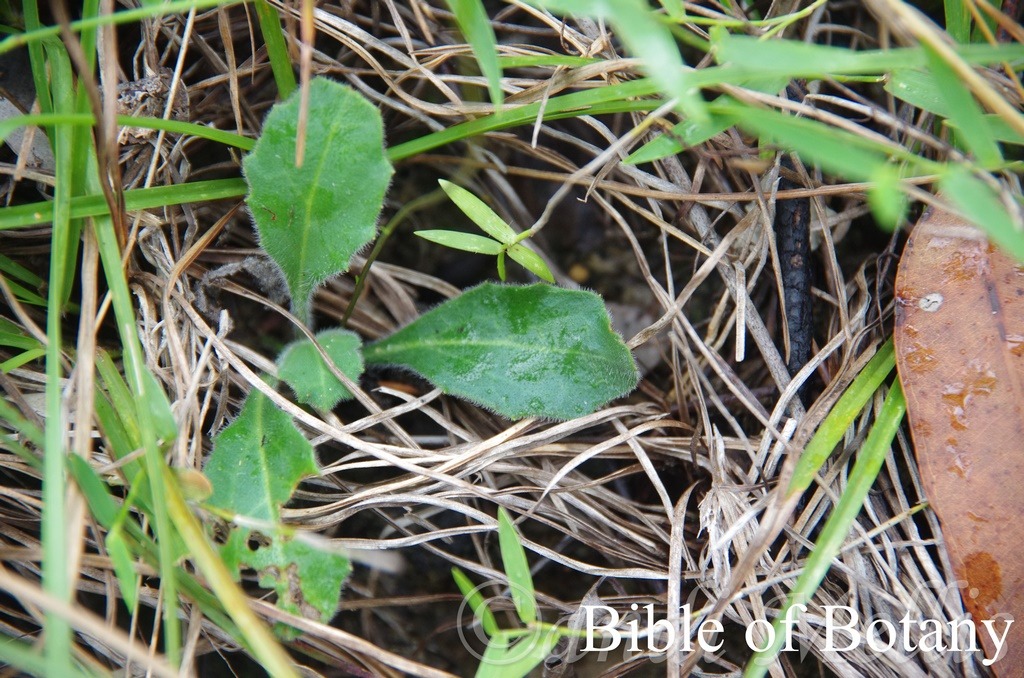
Banyabba National Park NSW
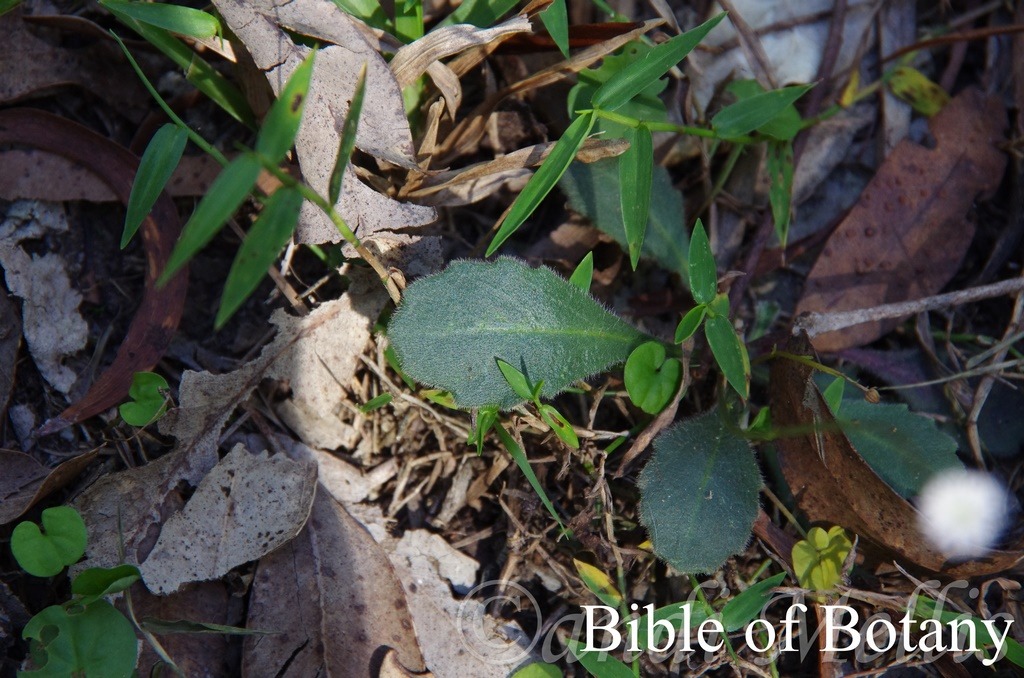
Pillar Valley NSW
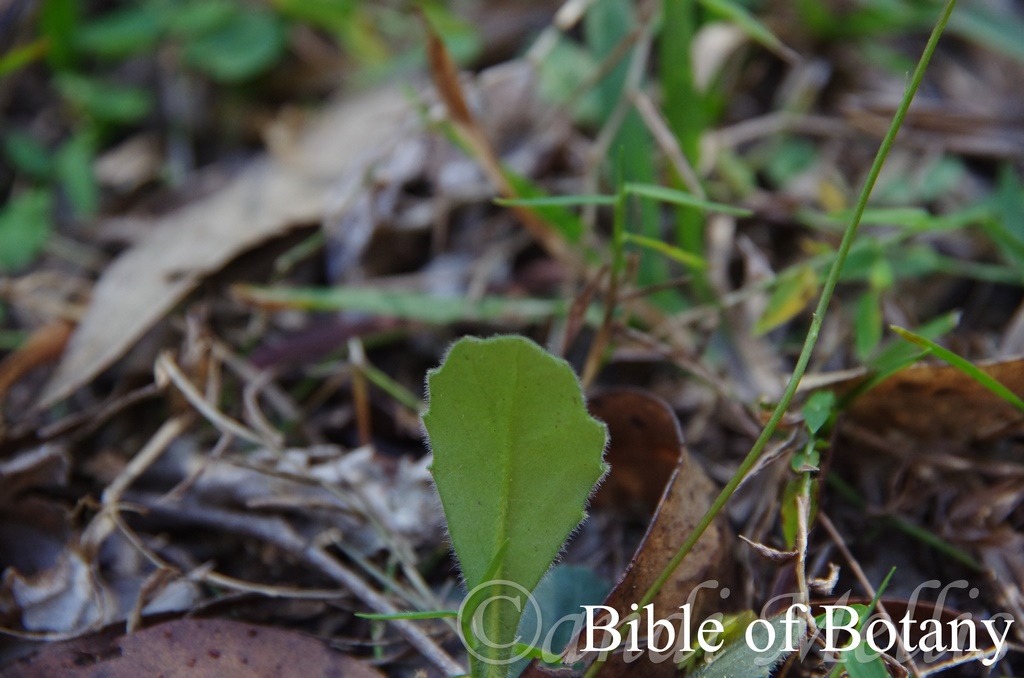
Pillar Valley NSW
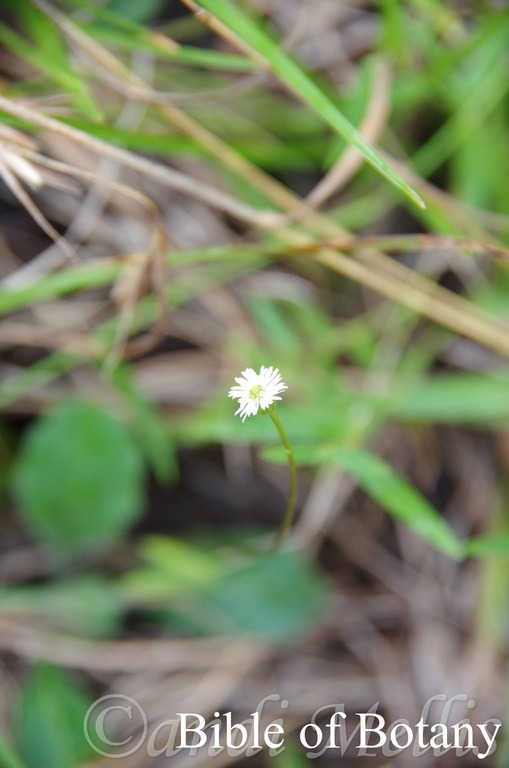
Banyabba National Park NSW
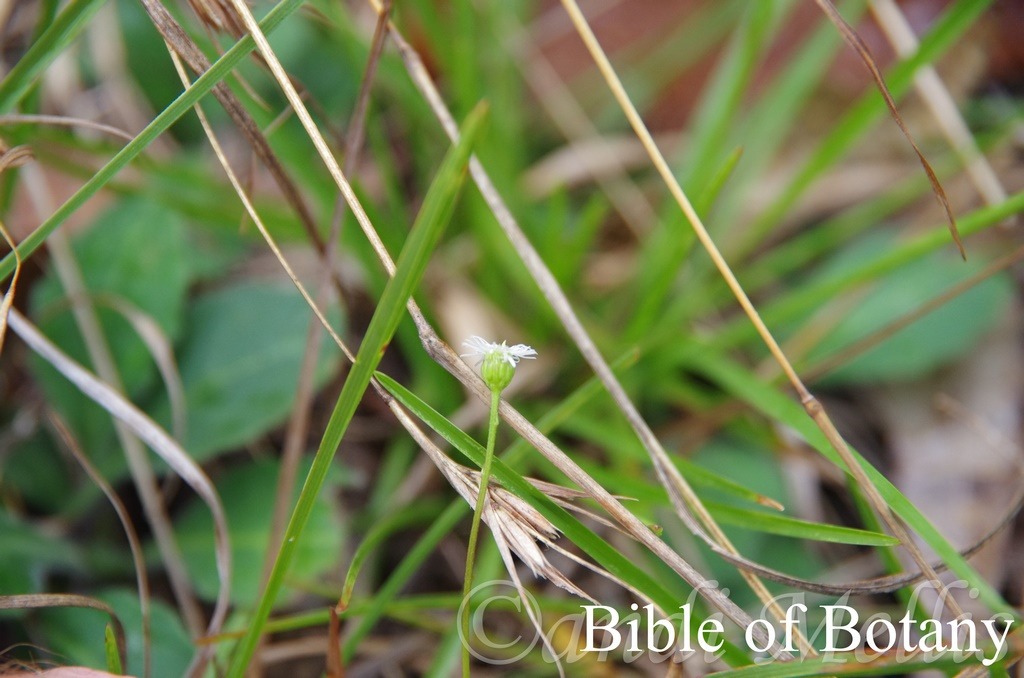
Banyabba National Park NSW
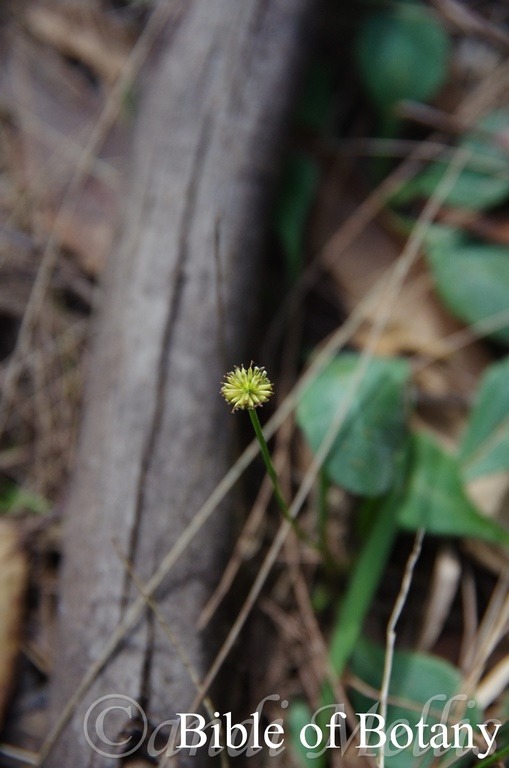
The Pinnacles NSW
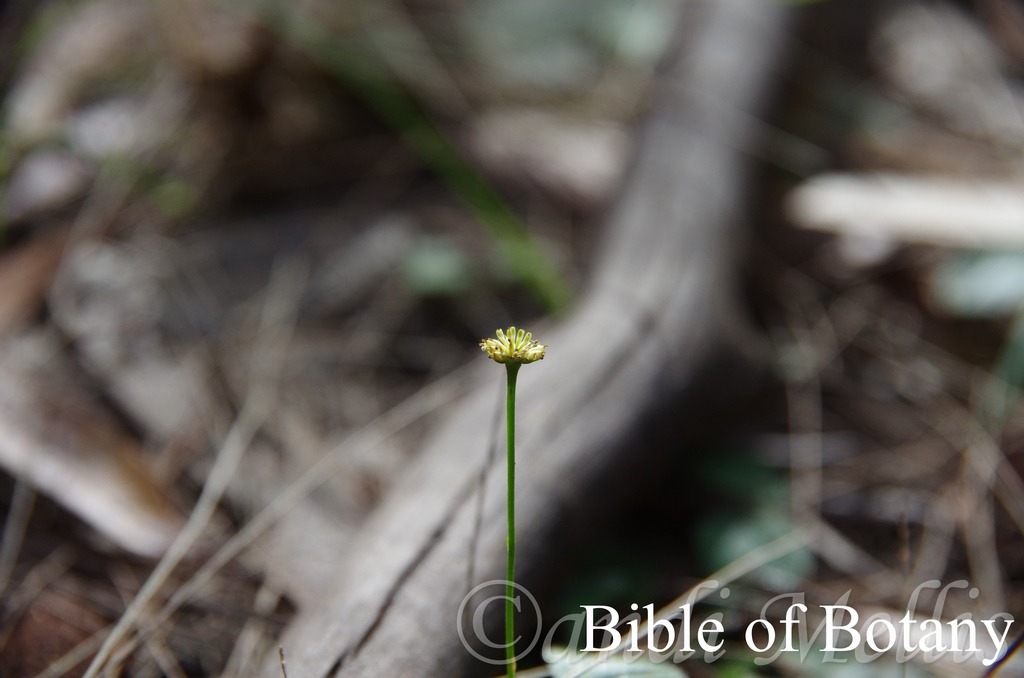
The Pinnacles NSW
Lagenophora gracilis
Classification:
Clade: Eudicots
Clade: Asterids
Order: Asterales
Family: Asteraceae
Genus: From Lágēnos, which is Ancient Greek for flagon, pitcher or a flask, and Phóros, which is Ancient Greek for to bearing or I carry. It refers to plants, which bear an organ or structure which resemble a pitcher or flagon. Here it refers to the achenes resembling a pitcher.
Specie: From Gracilis, which is for slender and graceful and Us, which is Greek/Latin for the degree. It refers to plants, which are the more graceful and have more slender stems than other species in the genus.
Sub specie:
Common Name: Slender Bottle Daisy or Slender Lagenophora
Distribution:
Lagenophora gracilis is found south from Mount Carbine in coastal far north eastern Queensland on and east of the Great Dividing Range to Kangaroo Island in south eastern South Australia.
It is also found on the eastern side of Tasmania with an isolated population onlong the Franklin River.
It is also found in the far south eastern corner of Western Australia from Boonanarring Brook NE of Gingin in the north to King Creek near Mount Manypeak.
https://avh.ala.org.au/occurrences/search?taxa=Lagenophora+gracilis#tab_mapView
Habitat Aspect Climate:
Lagenophora gracilis prefers full sunlight to light dappled shade. It grows in open wet eucalypt forests, open wet Eucalyptus forests, wet grass lands in shallow depressions, drainage lines and riparian zones. The altitude ranges from 5 meter ASL to 1040 meters ASL.
The temperatures range from minus 4 degrees in August to 36 degrees in January.
The rainfall ranges from lows of 150mm to 2600mm average per annum.
Soil Requirements:
Lagenophora gracilis prefers course sands, medium clays to heavy clays or heavy alluvial silts. The soil’s pH ranges from 4.5pH to 7pH. It tolerates waterlogged soils and is found in areas where the soils retain some moisture well after rain has ceased. Non saline soils to mildly saline soils are tolerated as are salt laden winds.
Height & Spread:
Wild Plants: 25mm to 80mm 40mm to 50mm
Characteristics:
Lagenophora gracilis grows as a small herb with short rhizome, fleshy roots.
The obovate to spathulate, obtuse leaves measure 10mm to 80mm in length by 6mm to 25mm in width. The margins are sinuate to shallowly toothed with acute or obtuse apexes. The bases merge into the central axis while the apexes are obtuse. The discolourous laminas are deep green and dull on the upper lamina while the lower lamina is dull and paler. The laminas are flat to conduplicate and glabrous to slightly covered in greyish hirsute hairs. The midvein is prominent on the lower lamina and is faintly visible from the upper lamina with the lateral veins.
The inflorescences are born on a long slender glabrous scape, is sparsely covered in white appressed pubescent hairs behind the head and measure 50mm to 350mm in length. loose, open, pyramidal compound panicles. The panicles measure 90mm to 300mm in length by 50mm to 300mm in diameter at the base. The heads measure 3mm to 4mm diameter. The 0 to 2 bracts and glabrous, lanceolate involucre bracts measure 2.5mm to 3mm in length. The ray florets are white to purple and measure 2.5mm to 3.5mm in length. The flowers appear from late September to February.
The fruits are oblanceolate achenes that measure 2mm to 3.5mm in length, often with short hirsute hairs at base. The apical, curved beak measures 0.2mm to 0.5mm in length has a thickened white apical ring. The beak and adjacent margins are glandular.
Wildlife:
Is unknown to the author.
Cultivation:
Lagenophora gracilis makes an interesting pot plant or small niche area specimen when mass planted. It would brighten up a sunny court yard or between rocks around a swimming pool or fish or frog ponds.
It offers the non-conforming gardener an astonishing new concept for rockeries or small heaths. It is easy to grow, harvest and propagate but is best when standing alone.
Propagation:
Seeds: Collecting seeds from mature plants of Lagenophora gracilisis easy but the collector must be vigilant as the seeds will disperse over in a matter of a couple of days when fully ripe. The fresh seeds can be sown directly into a seed raising mix however better; more even germination is gained if the seeds are stratified for a short period and sown in spring. This can be achieved by placing the seeds in a paper bag in the vegetable crisper for a few weeks prior to sowing. Cover the seeds to a depth of 2mm. Seeds usually germinate rapidly with a strike rate of over 80%.
When the seedlings are at the two or three leaf stage, prick them out and plant them into their permanent position giving them a good watering and keeping them moist.
Fertilize using seaweed, fish emulsion or organic chicken pellets soaked in water on an alternate basis.
Further Comments from Readers:
Hi reader, it seems you use The Bible of Botany a lot. That’s great as we have great pleasure in bringing it to you! It’s a little awkward for us to ask, but our first aim is to purchase land approximately 1,600 hectares to link several parcels of N.P. into one at The Pinnacles NSW Australia, but we need your help. We’re not salespeople. We’re amateur botanists who have dedicated over 30 years to saving the environment in a practical way. We depend on donations to reach our goal. If you donate just $5, the price of your coffee this Sunday, We can help to keep the planet alive in a real way and continue to bring you regular updates and features on Australian plants all in one Botanical Bible. Any support is greatly appreciated. Thank you.
In the spirit of reconciliation we acknowledge the Bundjalung, Gumbaynggirr and Yaegl and all aboriginal nations throughout Australia and their connections to land, sea and community. We pay our respect to their Elders past, present and future for the pleasures we have gained.
Lagenophora sublyrata
Classification:
Unranked: Eudicots
Unranked: Asterids
Order: Asterales
Family: Asteraceae
Genus: From Lágēnos, which is Ancient Greek for flagon, pitcher or a flask, and Phóros, which is Ancient Greek for to bearing or I carry. It refers to plants, which bear an organ or structure which resemble a pitcher or flagon. Here it refers to the achenes resembling a pitcher.
Specie: From Sub, which is Ancient Greek and Latin for below or under and Lyrātum, which is Latin for the musical instrument – a lyre. It refers to leaves, which somewhat resemble a lyre in shape or form.
Common Name: Slender Bottle-daisy or Slender Lagenophora
Distribution:
Lagenophora sublyrata is found south from Cape York Peninsula in far north eastern Queensland to Kangaroo Island in southern South Australia. It is mainly found on and east of the Great Dividing Range to the coast.
It is mainly found on the eastern side of Tasmania including the eastern Bass Strait Islands.
The previous plants known as Lagenophora gracilis are now considered only to be found in the south west corner of Western Australia close to the coast, south from Boonanarring Brook near Gin Gin to Poronguruup.
https://avh.ala.org.au/occurrences/search?taxa=Lagenophora+sublyrata#tab_mapView
Habitat Aspect Climate:
Lagenophora sublyrata prefers full sun to filtered light. It is found on coastal slopes and hills, rocky outcrops, valleys and headlands. The altitude ranges from 5 meter ASL to 300 meters ASL.
The temperatures range from 10 degrees in August to 30 degrees in January.
The rainfalls range from lows of 700mm to an average of 3200mm.
Soil Requirements:
Lagenophora sublyrata prefers rocky loams to medium rocky clays. It can be found on hill slopes valleys and plains. The soils are usually derived from decomposed black basalts. The soils pH ranges from 5pH to 6.5pH. It does not tolerate waterlogged soils. Non saline soils to the medium saline soils are tolerated as are salt laden winds.
Height & Spread:
Wild Plants 200mm to 350mm by 100mm to 150mm.
Characteristics:
Lagenophora sublyrata is a perennial herb with short rhizome and fleshy roots that has a life span of 3 to 4 years.
The rosette leaves of Lagenophora sublyrata are obovate to spathulate, obtuse and fleshy. They measure 10mm to 80mm in length by 6mm to 20mm width. The bases taper to a winged petiole while the apexes are obtuse. The discolourous laminas are deep green and glabrous or sparsely covered in white hirsute hairs and semi glossy on the upper lamina, while the lower is much paler and dull. The laminas gently recurve upwards slightly from the mid vein to the sinuate to toothed with acute or obtuse teeth. The mid vein and lateral veins are prominent on the lower lamina and are visible from above.
The inflorescence of Lagenophora sublyrata appear as composite heads on a long spike from the rosette of leaves. The heads measure 30mm to 40mm in diameter. The long scape is glabrous to sparsely covered in appressed, antrorse pubescent hairs and measure 50mm to 150mm in length. The deep green cauline leaves when present measure up to 3mm in length. The green, linear, glabrous bracts measure 1mm to 2mm in length, while the narrow to linear involucral bracts are glabrous and measure 2.5mm to 3mm length. The 30 to 80 ray floret’s ligules are white to lilac and measure 10mm to 12mm in length. The flowers appear from September to March.
Lagenophora sublyrata’s fruits are oblanceolate achenes that measure 2mm to 3.5mm in length glandular hairs or at times with straight hirsute hairs at the base. The apical beak is curved, with thickened white apical ring and measures 0.2mm to 0.5mm in length. The beak and adjacent margins are glandular.
Wildlife:
Lagenophora sublyrata’s wildlife is unknown to the author.
Cultivation:
Lagenophora sublyrata makes an interesting addition to any moist or rockery. In my garden the simplicity has made it an immediate favourite of young and old when they see it. Its round yellow center glistens with gladness like the sun and its white or lilac ray florets add the brilliance to remember.
In the garden, perennial daisies can carry a bed all by themselves or make a great filler amongst rocks or between old logs. The first flush of blooms in spring not only heralds warmth but bridges the gap between new flushes of growth and winter colour and summer colour. A single plant can add colour but a mass planting is vividly displayed during the warmer months as the first flowers open.
Daisies have a versatility and when white can make a strong statement that only daisies the ability to do. Once established Lagenophora sublyrata will match any exotic daisy, will flourish in almost any soil and with our fertilizing programme will flower all spring and summer. It has not been troubled by insects or disease in my garden.
Propagation:
Seeds: Lagenophora sublyrata seeds can be sown directly into a seed raising mix. Cover them with 5mm to 6mm of fine weed free mulch and keep moist. Place the tray in a warm sunny position or beneath 30mm shade cloth.
When the seedlings are 20mm to 30mm tall, prick them out and plant them into 50mm native tubes using a good organic mix or straight out into their permanent position, but first prepare the ground for their arrival.
Fertilize using seaweed, fish emulsion or organic chicken pellets soaked in water on an alternate basis. Fertilize every two months until the plants are established then twice annually in early September and March to maintain health, vitality and better flowering.
Further Comments from Readers:
Hi reader, it seems you use The Bible of Botany a lot. That’s great as we have great pleasure in bringing it to you! It’s a little awkward for us to ask, but our first aim is to purchase land approximately 1,600 hectares to link several parcels of N.P. into one at The Pinnacles NSW Australia, but we need your help. We’re not salespeople. We’re amateur botanists who have dedicated over 30 years to saving the environment in a practical way. We depend on donations to reach our goal. If you donate just $5, the price of your coffee this Sunday, We can help to keep the planet alive in a real way and continue to bring you regular updates and features on Australian plants all in one Botanical Bible. Any support is greatly appreciated. Thank you.
In the spirit of reconciliation we acknowledge the Bundjalung, Gumbaynggirr and Yaegl and all aboriginal nations throughout Australia and their connections to land, sea and community. We pay our respect to their Elders past, present and future for the pleasures we have gained.
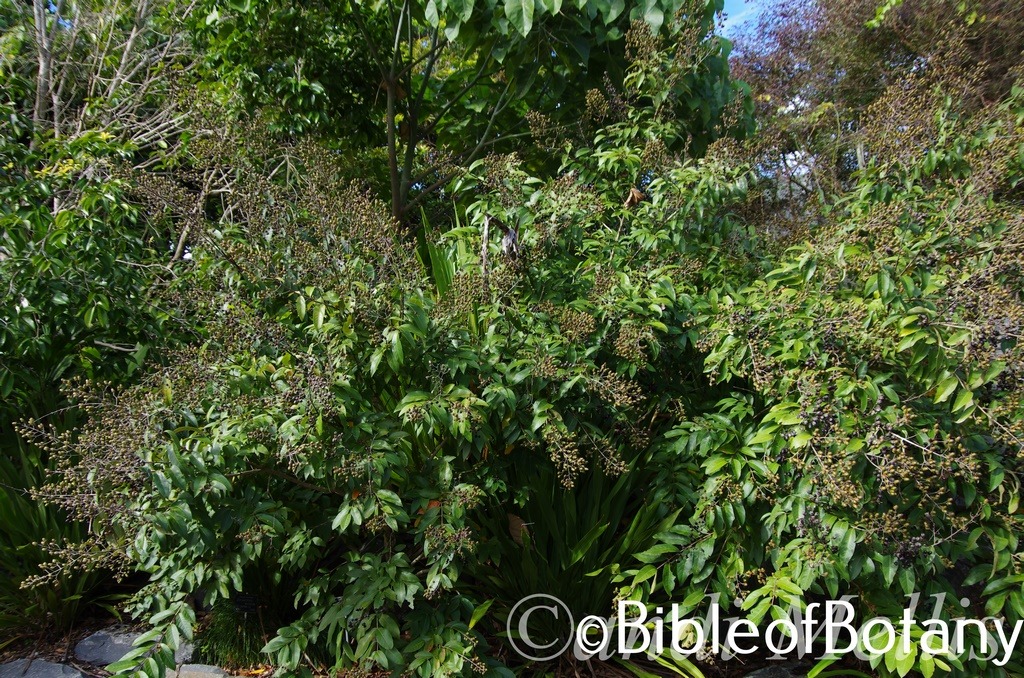
Mount Cootha Botanic Gardens Qld.
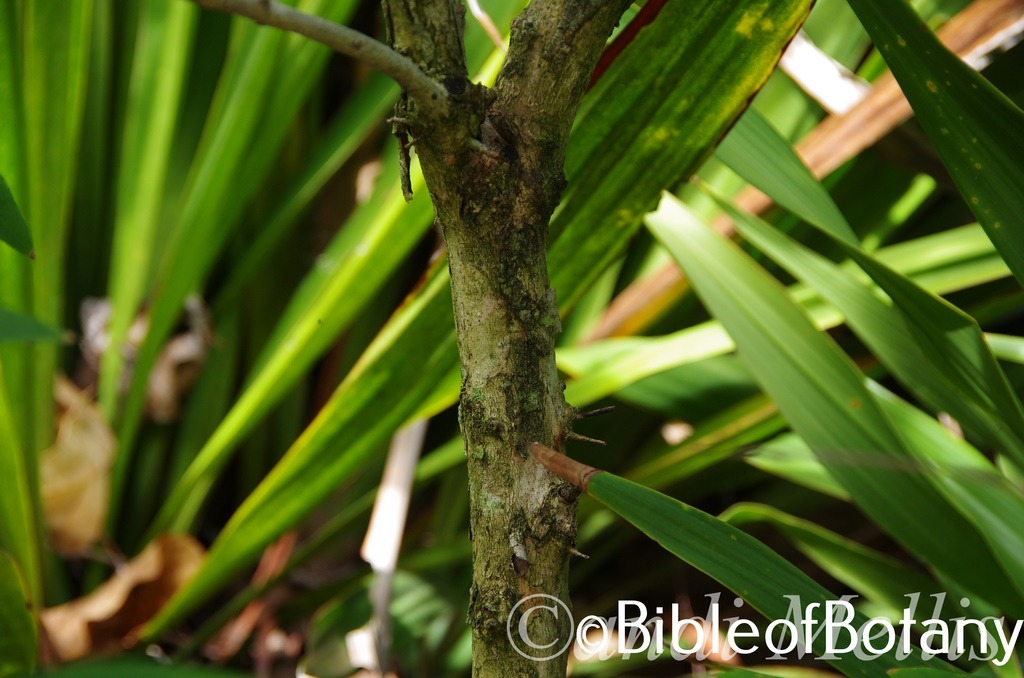
Mount Cootha Botanic Gardens Qld.

Mount Cootha Botanic Gardens Qld.
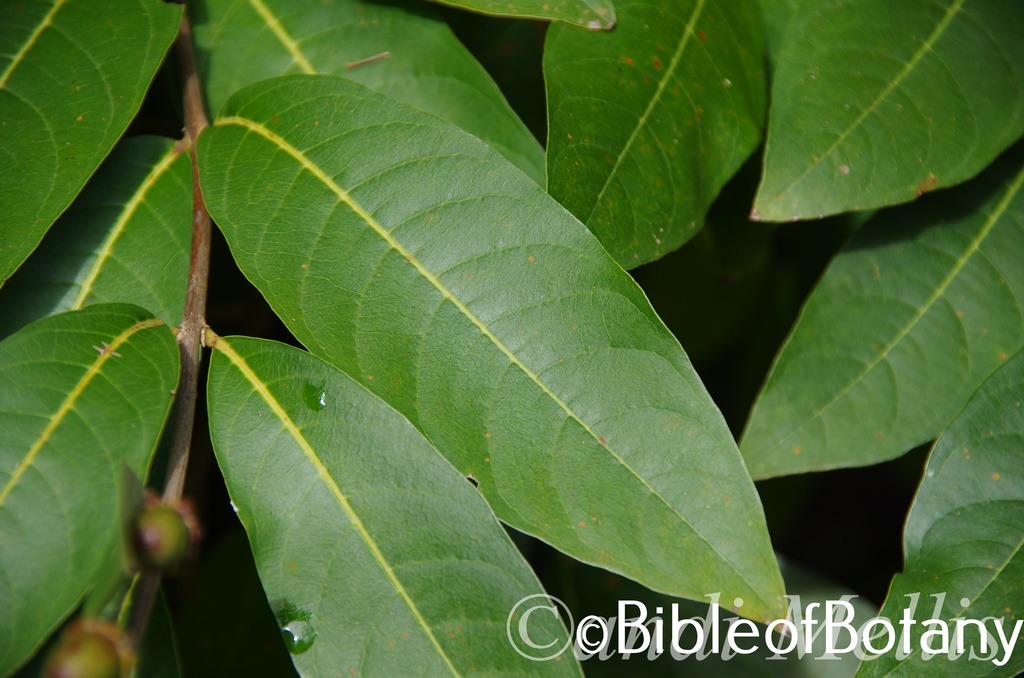
Mount Cootha Botanic Gardens Qld.

Mount Cootha Botanic Gardens Qld.

Mount Cootha Botanic Gardens Qld.

Mount Cootha Botanic Gardens Qld.
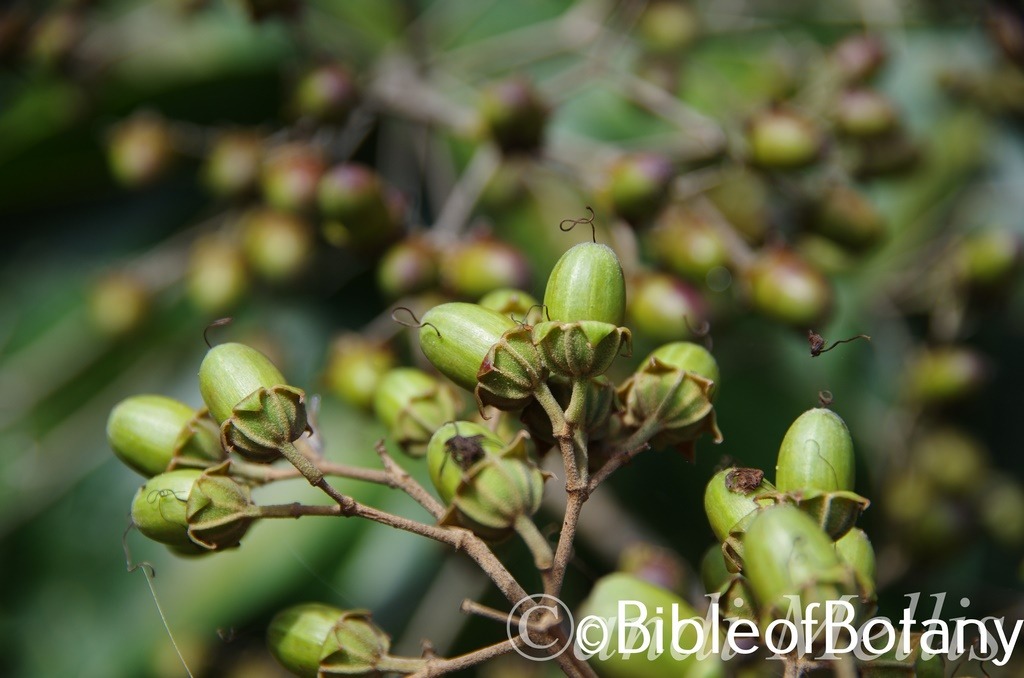
Mount Cootha Botanic Gardens Qld.
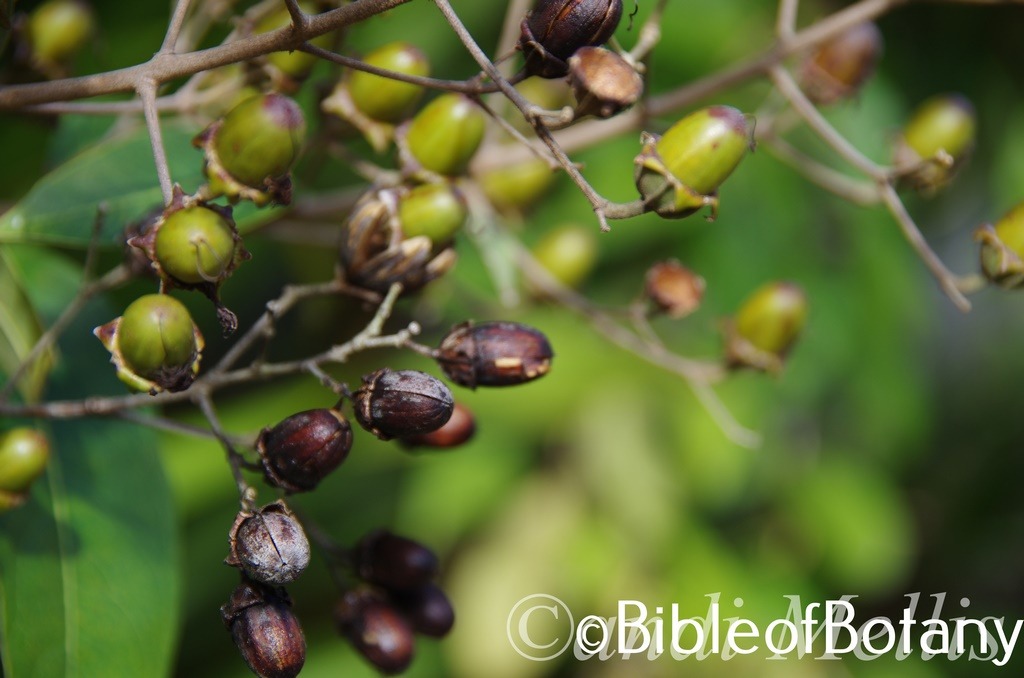
Mount Cootha Botanic Gardens Qld.
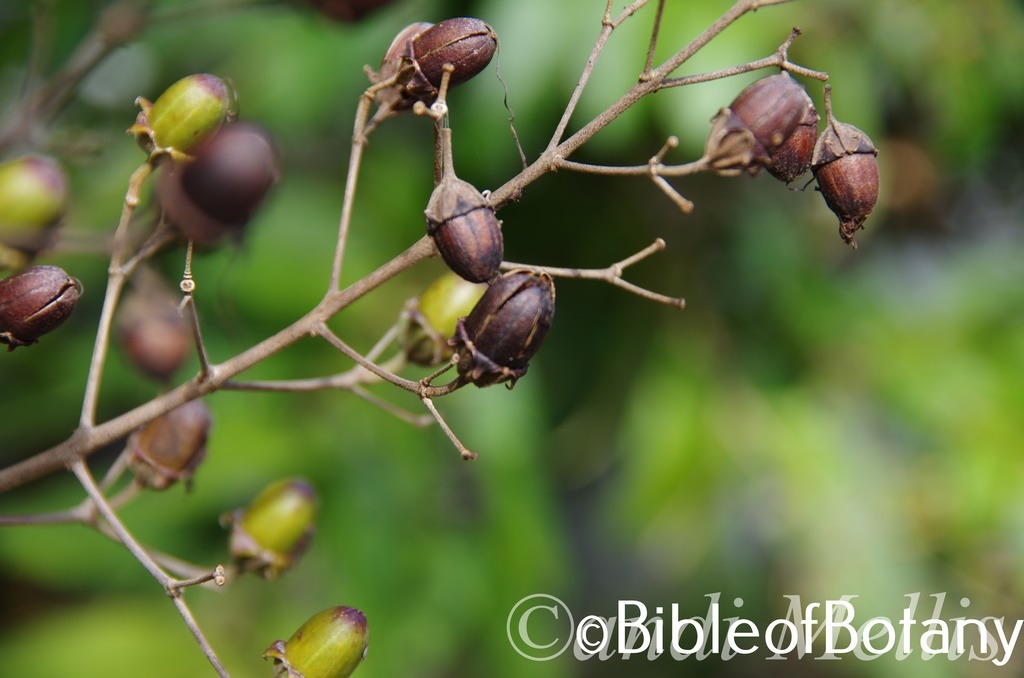
Mount Cootha Botanic Gardens Qld.
Lagerstroemia archeriana
Classification:
Clade: Eudicots
Clade: Rosids
Order: Myrtales
Family: Lythraceae
Subfamily: Lythroideae
Genus: Is named in honour of Magnus Von Lagerstroem; 1696-1759, who was a good friend of Karl Linnaeus and generous supporter of botany.
Specie: Is named in honour of William Archer; 1820-1874 who was a Tasmanian botanist.
Common Name: Native Crepe Myrtle or Crepe Myrtle
Distribution:
Lagerstroemia archeriana is found in two distinct populations.
It is found south of Osborn Island to Cone Bay Granite Peninsula Beach in far north eastern Western Australia and inland to around to Lawley River and Grevillea Gorge on the Charnley River.
In the east, it is found on Cape York Peninsula, south from the Wenlock River to Georgetown.
It is also found in New Guinea.
https://avh.ala.org.au/occurrences/search?taxa=Lagenophora+sublyrata#tab_mapView
Height & Spread:
Wild Plants 5m to 8m by 4m to 6m.
Characteristics:
Lagerstroemia archeriana grows as a single or multi trunk tree with a trunk girth rarely exceeding 300mm dbh. The thin bark is pale grey, while the juvenile branchlets are reddish-brown and somewhat scaly or slightly stringy.
The trees are leafless for a short period between September and October. The leaves turn bright red before falling. The short, terete petioles measure 1mm to 3mm in length. The narrow ovate to ovate leaves of Lagerstroemia archeriana measure 70mm to 170mm in length by 20mm to 50mm in width. The caducous stipules are small, with a short swollen base and abruptly tapering into a small, prickle-like apex. The bases are rounded-acute while the apexes are acute. The discolourous laminas are mid to deep green, semi glossy and glabrous on the upper lamina, while the lower is much paler, dull and are glabrous to moderately covered in very short pannate hairs. The mid vein and lateral veins, which curved throughout their length, often forming loops inside the laminas margin are strongly prominent on the lower lamina.
The inflorescence of Lagerstroemia archeriana appear in terminal panicles. The panicles measure 100mm to 140mm in diameter. The 6 calyx are strongly ribbed from the base to the apex of the lobes and alternately. The calyx lobes measure 2.5mm to 5mm in length. The calyx is moderately covered in white dendritic (branched) hairs. The deep pink petals measure 16mm to 10mm in length. The pink to red staminodes are much larger than the stamens. The flowers appear from November to February.
Lagerstroemia archeriana’s fruits are oblong, glabrous capsules, with a rounded base and obtuse apex. The capsules measure 8mm to 15mm in length by 5mm to10mm in diametre. The calyx lobes and style are persistent on the green fruits while the calyx lobes are persistent on the brown ripe fruits. The seeds winged are winged at one end and measure 7mm to 10mm by 3mm to 4mm in width including the wing.
Wildlife:
Lagerstroemia archeriana’s is a good flowering plant that attracts all native bees, pollen flies and small insectivorous and nectar eating birds.
Cultivation:
Lagerstroemia archeriana would make a beautiful interesting addition to any garden. In the garden, it can be planted close to infrastructures as it has a non invasive root system. The first flush of blooms in summer can be used to extend the flowering of your spring flowering garden to great effect. A single plant can add colour but a mass planting gives a vivid display during the warmer months as the first flowers open.
It is a great small tree for smaller gardens to the largest gardens. It can be pruned in the early stages to enhance a multi trunk small tree or medium to large shrub. It makes an excellent specimen tree and will grow to 10 metres with a single trunk or to 4 metres by 5 metres as a shrub. It can be grown as a hedge to line your front yard or used as a border, along a fence line. As a street tree it will not hamper power lines.
It can be grown in a large pot for many years and in China the local species there have been grown as Bonsai plants.
Propagation:
Seeds: Lagerstroemia archeriana seeds are easy to collect and can be sown directly into a seed raising mix. Cover them with 5mm to 6mm of fine weed free mulch and keep moist. Place the tray in a warm sunny position or beneath 30% shade cloth.
When the seedlings are 20mm to 30mm tall, prick them out and plant them into 50mm native tubes using a good organic mix or straight out into their permanent position, but first prepare the ground for their arrival.
Fertilize using seaweed, fish emulsion or organic chicken pellets soaked in water on an alternate basis. Fertilize every two months until the plants are established then twice annually in early September and March to maintain health, vitality and better flowering.
Further Comments from Readers:
Hi reader, it seems you use The Bible of Botany a lot. That’s great as we have great pleasure in bringing it to you! It’s a little awkward for us to ask, but our first aim is to purchase land approximately 1,600 hectares to link several parcels of N.P. into one at The Pinnacles NSW Australia, but we need your help. We’re not salespeople. We’re amateur botanists who have dedicated over 30 years to saving the environment in a practical way. We depend on donations to reach our goal. If you donate just $5, the price of your coffee this Sunday, We can help to keep the planet alive in a real way and continue to bring you regular updates and features on Australian plants all in one Botanical Bible. Any support is greatly appreciated. Thank you.
In the spirit of reconciliation we acknowledge the Bundjalung, Gumbaynggirr and Yaegl and all aboriginal nations throughout Australia and their connections to land, sea and community. We pay our respect to their Elders past, present and future for the pleasures we have gained.
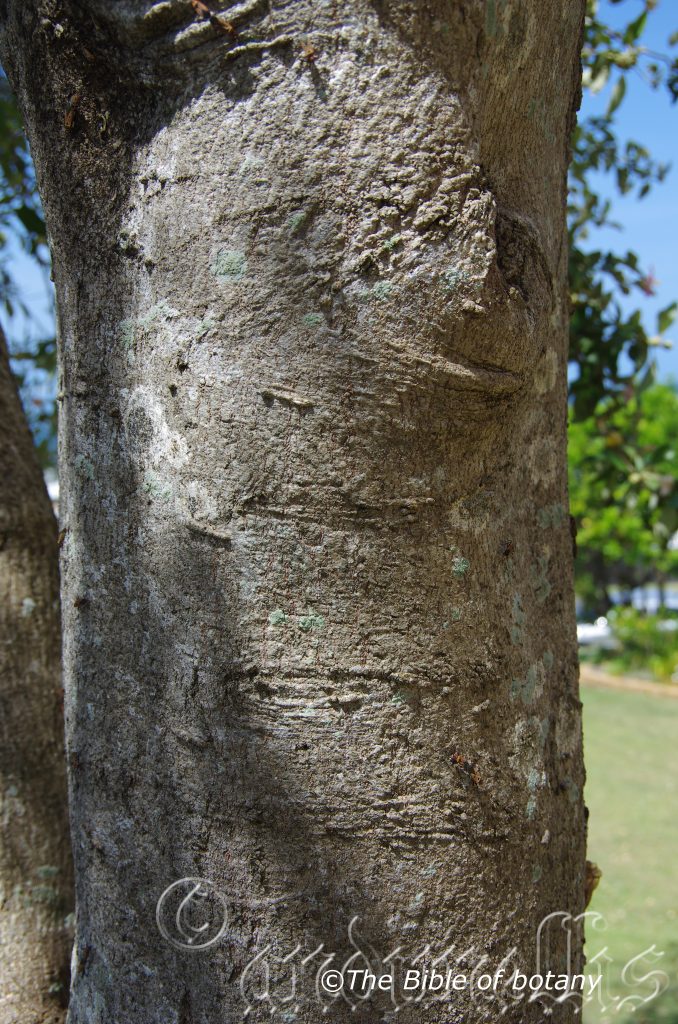
Coffs Harbour NSW
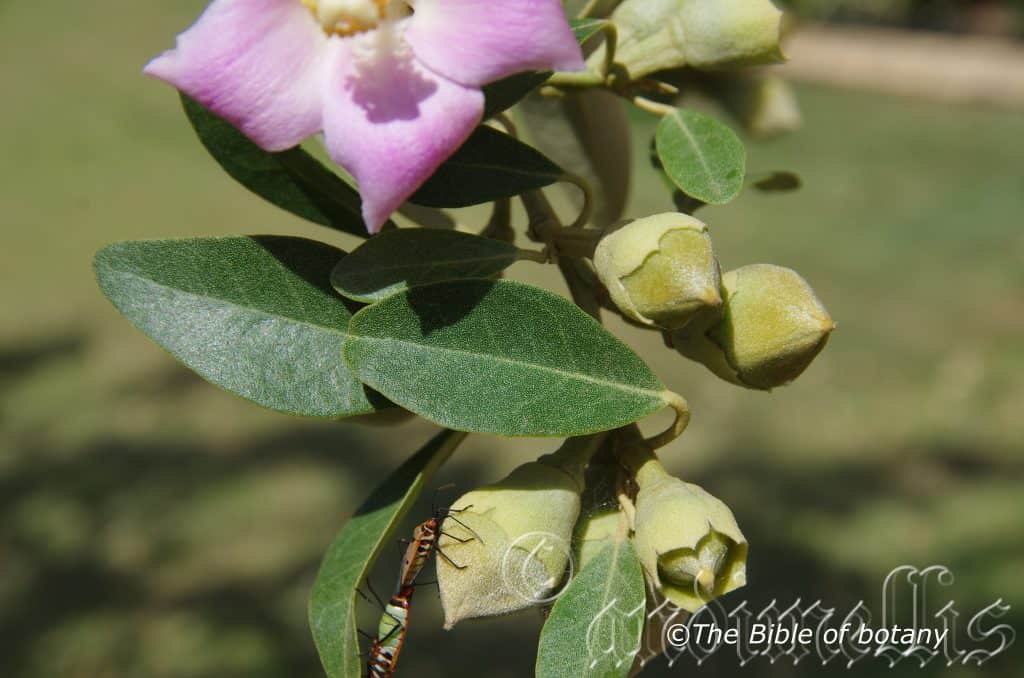
Coffs Harbour NSW
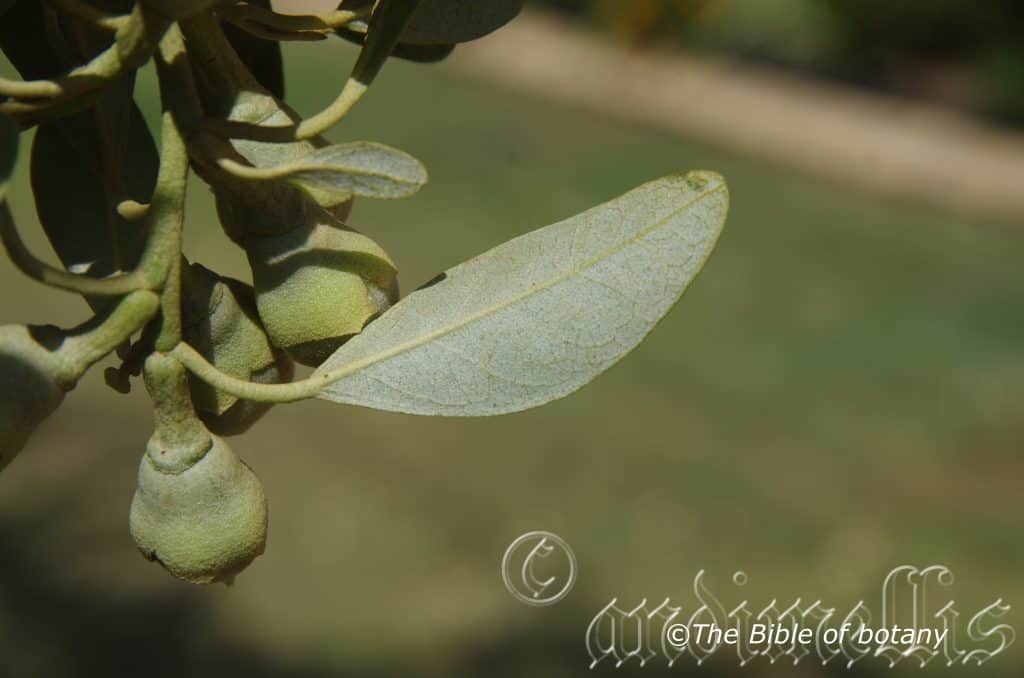
Coffs Harbour NSW
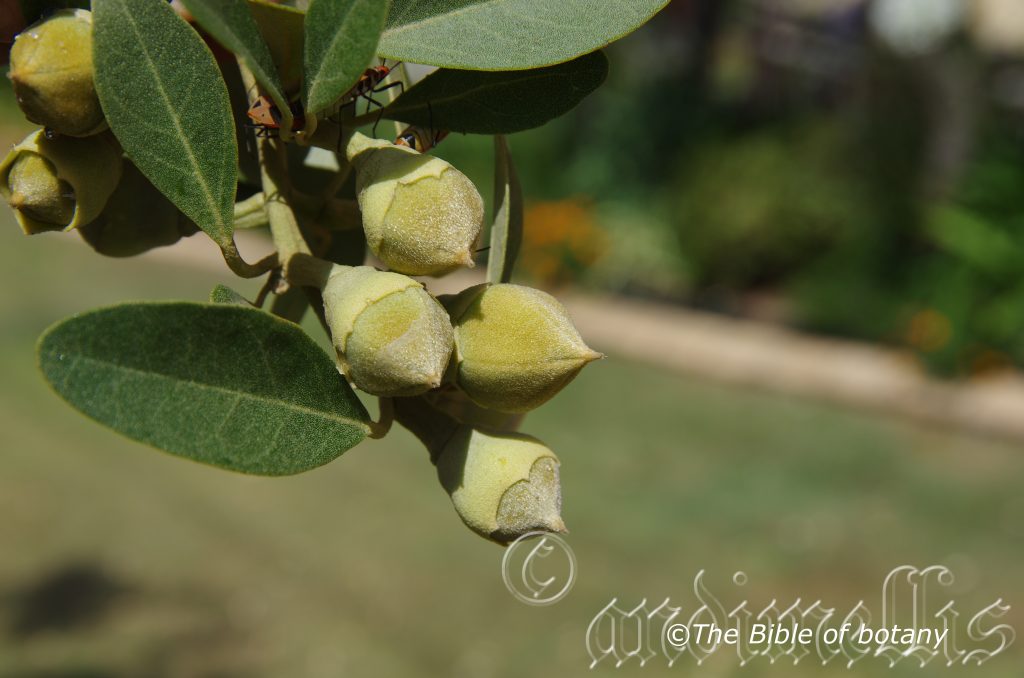
Coffs Harbour NSW
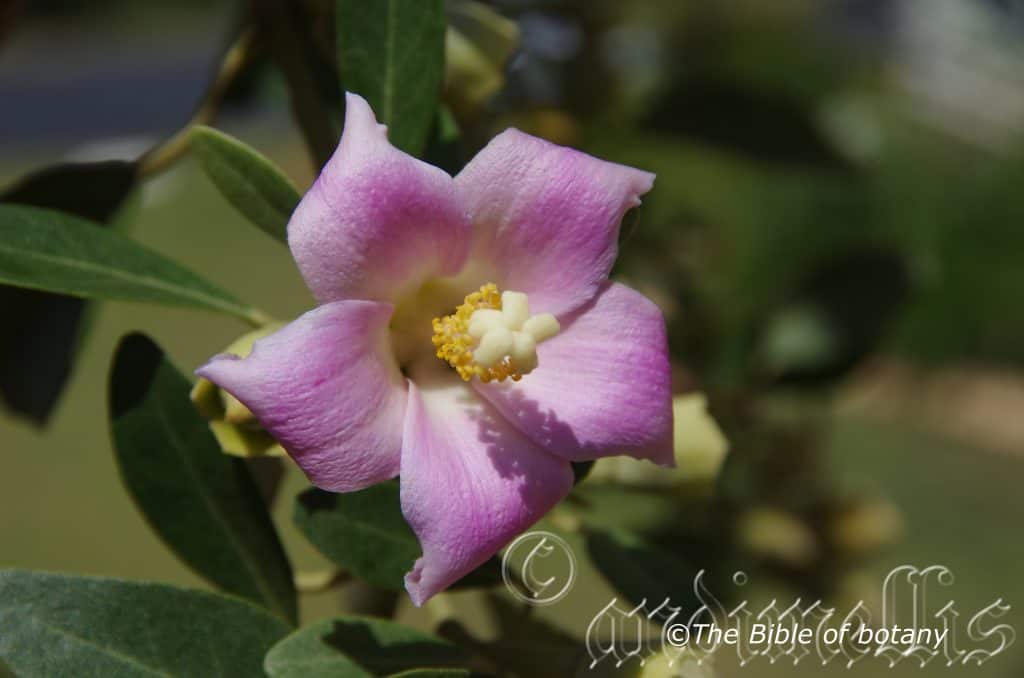
Coffs Harbour NSW
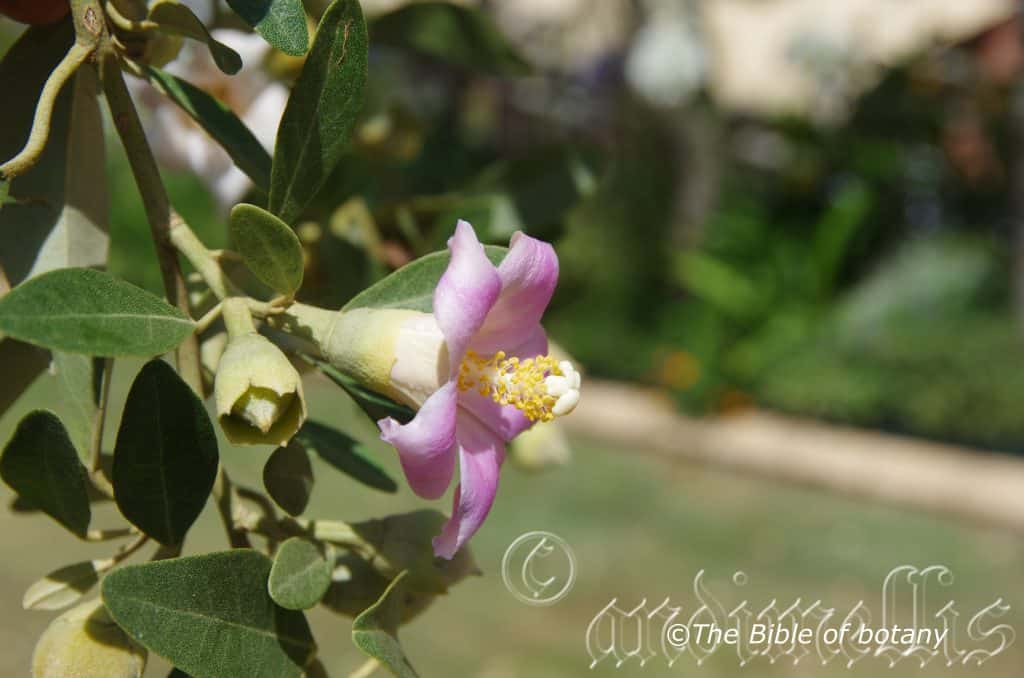
Coffs Harbour NSW
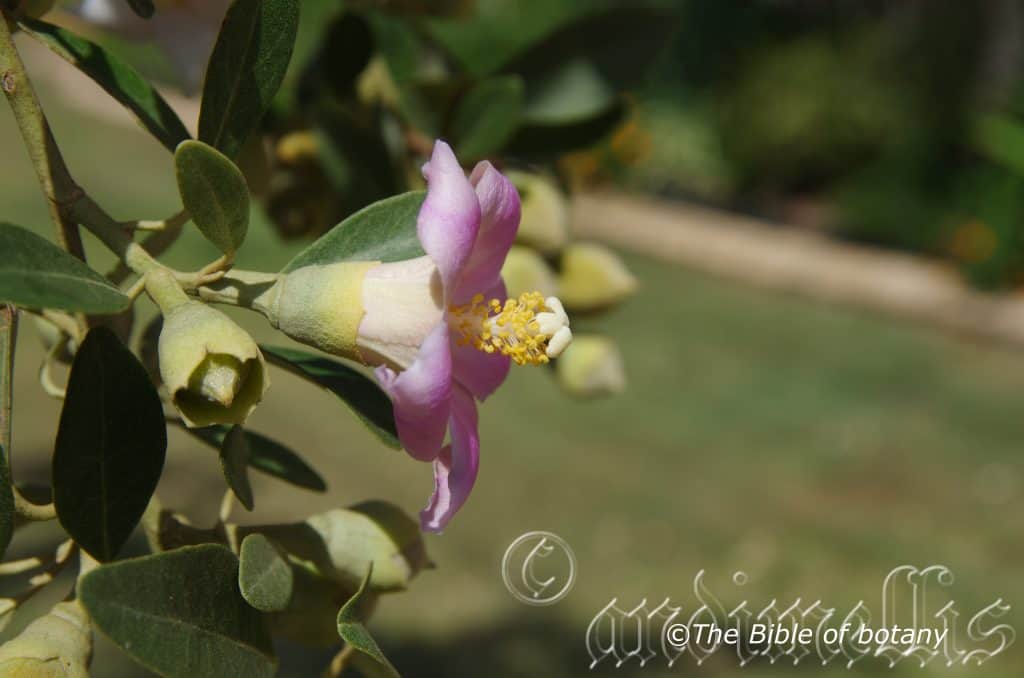
Coffs Harbour NSW
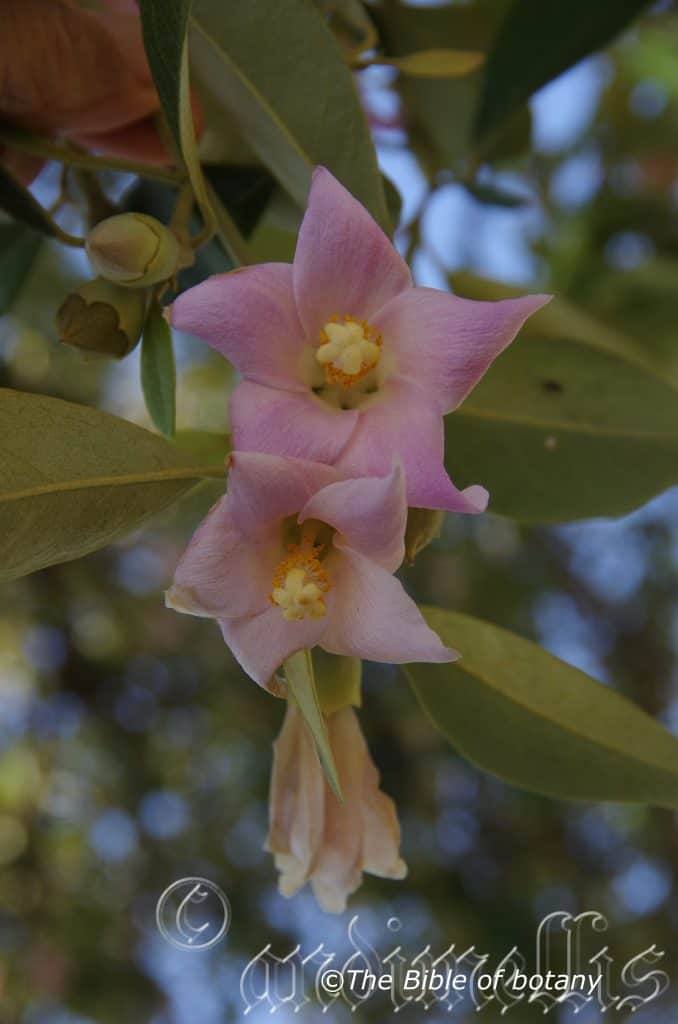
Coffs Harbour NSW
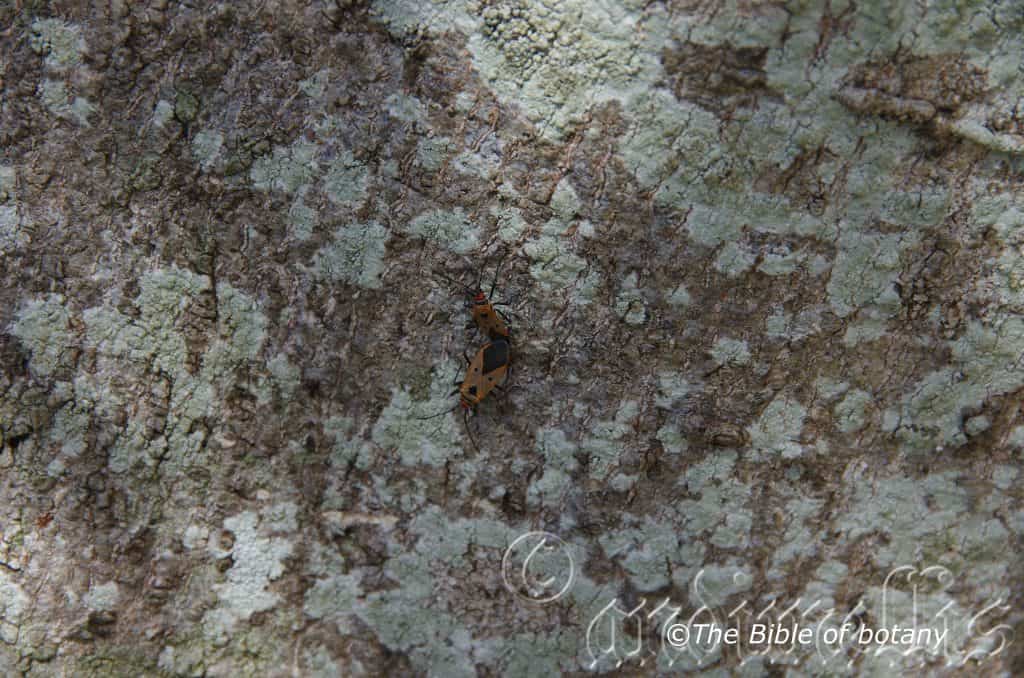
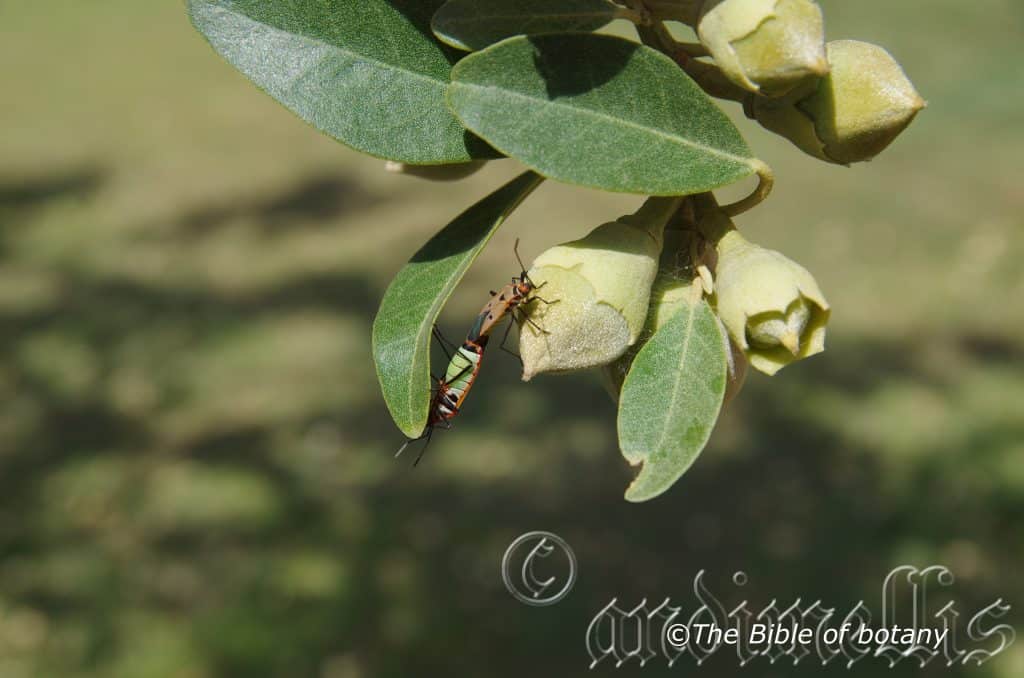
Lagunaria patersonii
Classification:
Unranked: Eudicots
Unranked: Rosids
Order: Malvales
Family: Malvaceae
Genus: Is named in honour of Andrea de Laguna; 1499-1560, who was a Swiss botanist and Botanical author.
Specie: Is named in honour of William Paterson; 1755-1810, who was a British governor and founder of Launceston and botanical collector.
Sub species: Lagunaria patersonii subsp. bracteatus. Is named in honour of William Paterson; 1755-1810, who was a British governor and founder of Launceston and botanical collector.
Sub species: Lagunaria patersonii subsp. pattersonii. Is named in honour of William Paterson; 1755-1810, who was a British governor and founder of Launceston and botanical collector.
Common Name: Norfolk Island Hibiscus.
Distribution:
Lagunaria patersonii subsp. pattersonii is found in 2 disjunct populations on Norfolk Island and Lord Howe Island.
Lagunaria patersonii subsp. bracteatus is found in far north Queensland from Ravenswood on the Burdekin River to Port Cowper including the Cumberland Islands and near the mouth of the Flinders River near Kurumba in the Gulf of Carpentaria. It is found mainly on and east of the Great Dividing Range.
https://avh.ala.org.au/occurrences/search?taxa=Lagunaria+patersonii#tab_mapView
Habitat Aspect Climate:
Lagunaria pattersonii prefers full sun. It is found on coastal slopes and hills, rocky outcrops, valleys and headlands. The altitude ranges from 10 meter ASL to 300 meters ASL.
The temperatures range from 10 degrees in August to 30 degrees in January.
The rainfalls range from lows of 1000mm to an average of 1490mm.
Soil Requirements:
Lagunaria pattersonii prefers rocky loams to medium rocky clays. It can be found on hill slopes valleys and plains. The soils are usually derived from decomposed black basalts. The soils pH ranges from 5pH to 6.5pH. It does not tolerate waterlogged soils. Non saline soils to the medium saline soils are tolerated as are salt laden winds.
Height & Spread:
Wild Plants 16m to 22m by 5m to 8m.
Characteristics:
Lagunaria pattersonii’s stems are pale grey and glabrous or slightly flaky. The branchlets are pale grey-green and covered in minute, coarse fawn to golden-fawn scurfy which is often fringed.
Lagunaria pattersonii’s alternate, sub opposite or right angled leaves are sub coriaceous to coriaceous laminas are usually elliptic to broad elliptic or at times lanceolate. They measure 40mm to 90mm in length by 13mm to 50mm width. The petioles are densely covered in very pale silvery-green scales to very pale silvery-grey scales and measure 16mm to 26mm in length. The bases are symmetrical or slightly asymmetrical, slightly oblique rounded, broad cuneate while the apexes are tapering-obtuse. The discolourous laminas are grey-green and are covered in pale golden-fawn to pale golden-grey scurfy and appressed hirsute hairs on the upper lamina while the lower lamina is densely covered in very pale silvery-green scales to very pale silvery-grey scales. The laminas gently recurve upwards slightly from the mid vein to the margins and decurve gently from near the base to the apex or decurve gently on the apical quarter while the margins are entire. The mid vein and lateral veins are prominent on the lower lamina and is visible from above.
The inflorescence of Lagunaria pattersonii is sessile and is born singularly from the leaf axils. The epicalyxes are pale grey-green and are densely covered in very pale silvery-green scales to very pale silvery-grey scales. The calyxes are densely covered in very pale silvery-green scales to very pale silvery-grey scales and measure 12mm to 15mm in length. The broad triangular calyx lobes measure 2mm to 3.5mm in length. The petals are asymmetrical especially near the apexes and are elliptic to lanceolate. The mid pink to deep rose pink flowers fade to yellowish–pink at the base internally. The petals are densely covered in pastel pinkish to white scales and sparsely covered in white appressed hairs externally and are glabrous internally. The petals measure 40mm to 45mm in length. The pedicels are densely covered in very pale silvery-green scales to very pale silvery-grey scales and measure 11mm to 16mm in length. The flowers appear from November to February.
Lagunaria pattersonii’s fruits are ovoidal to spherical coriaceous capsules. The capsules measure 18mm to 26mm in length by 18mm to 26mm in diameter. The remnant of the style is persistent on the capsules which turn a dull, pale grey-brown to creamy fawn prior to dehiscing. The surface are densely covered in very pale silvery-green scales to very pale silvery-grey scales externally while the seeds are packed tightly in long, white, coarse hispid and hirsute hairs. The capsules are septate and have 5 longitudinal divisional, chartaceous membranes internally. The orbicular seeds are glossy reddish-tan.
Confusing Subspecies:
Lagunaria patersonii subsp. pattersonii’s bracteoles are reduced to a ridge surrounding the base of calyx.
Lagunaria patersonii subsp. bracteatus’s bracteoles are cupular.
Wildlife:
Lagunaria pattersonii’s flowers like most Hibiscus are attractive to the Black Hibiscus beetle (Several genre and species in the Family Nitidulidae) which feed on the pollen and the beautiful Harlequin Bugs (Tectocoris diophthalmus).
Cultivation:
Lagunaria pattersonii is a beautiful neat small pyramidal tree that is frequently overlooked by gardeners but are exceptionally beautiful trees along the coast on average to better quality soils facing the ocean. It is suitable for small, medium and large sunny gardens close to the coast or inland in warm temperate or semi-arid zones. As garden subjects it grows from 10 meter to 15 meters in height by 3.5 meters to 6 meter in diameter when grown in the open. It is relatively fast growing on better quality loams and is cold tolerant to temperatures as low as minus 2 degrees once established but will need protection in the early stages.
It makes a very good dense screen and contrasts well with plants which have large deep green leaves or fine bright green leaves. It can be grown with most coloured flowers except pink which tend to blend and detract from each other.
It is an excellent tree that makes very good accent trees in front of low set commercial buildings, industrial sheds or school playgrounds offering dense shade and will break up hard rigid architectural lines and give warmth and breadth to a building. In front of high rise buildings they give balance and give no problems when the trees are planted on the nature strip.
Propagation:
Seeds: Lagunaria pattersonii seeds can be sown directly into a seed raising mix. Cover them with 5mm to 6mm of fine weed free mulch and keep moist. Place the tray in a warm sunny position or beneath 30mm shade cloth. When the seedlings are 20mm to 30mm tall, prick them out and plant them into 50mm native tubes using a good organic mix.
Once the seedlings reach 100mm to 150mm in height they can be planted out into their permanent position.
Fertilize using seaweed, fish emulsion or organic chicken pellets soaked in water on an alternate basis. Fertilize every two months until the plants are established then twice annually in early September and March to maintain health, vitality and better flowering.
Further Comments from Readers:
Hi reader, it seems you use The Bible of Botany a lot. That’s great as we have great pleasure in bringing it to you! It’s a little awkward for us to ask, but our first aim is to purchase land approximately 1,600 hectares to link several parcels of N.P. into one at The Pinnacles NSW Australia, but we need your help. We’re not salespeople. We’re amateur botanists who have dedicated over 30 years to saving the environment in a practical way. We depend on donations to reach our goal. If you donate just $5, the price of your coffee this Sunday, We can help to keep the planet alive in a real way and continue to bring you regular updates and features on Australian plants all in one Botanical Bible. Any support is greatly appreciated. Thank you.
In the spirit of reconciliation we acknowledge the Bundjalung, Gumbaynggirr and Yaegl and all aboriginal nations throughout Australia and their connections to land, sea and community. We pay our respect to their Elders past, present and future for the pleasures we have gained.
Lambertia echinata
Classification:
Unranked: Eudicots
Order: Proteales
Family: Protaceae
Genus: Is named in honour of Aylmer Burke Lambert; 1761-1842, who was an English Botanist who studied the Pinus genus.
Specie: From Echinus, which is Latin for a prickle or bristly. It refers to being covered in spines or bristle like the hairs on an echidna.
Subspecies: Lambertia echinata subsp. citrina. From Citrinus, which is old Anglo-French for yellow and later Citrinus, which is Latin for Citrus. It refers to the colour or scent of lemon.
Subspecies: Lambertia echinata subsp. echinata. From Echinus, which is Latin for a prickle or bristly. It refers to being covered in spines or bristle like the hairs on an echidna.
Subspecies: Lambertia echinata subsp. occidentalis. From Occident/Occidēns, which is Latin for western as in coming from Europe or the Middle East. It refers to plants, which were grow further west than the other subspecies.
Common Name: Prickly Honeysuckle.
Distribution:
Lambertia echinata subsp. citrina is found between Albany east to Wellstead in south western Western Australia.
Lambertia echinata subsp. echinata is found in 3 isolated populations. The largest population is found east of Esperance with a small population north west of Albany and the last between Kalbarri and Gregory in southern Western Australia.
Lambertia echinata subsp. occidentalis is found south west and east south east of Bussleton in far south west Western Australia.
https://avh.ala.org.au/occurrences/search?taxa=Lambertia+echinata#tab_mapView
Habitat Aspect Climate:
Lambertia echinata prefers full sun. It is found on coastal slopes and hills, rocky outcrops, valleys and headlands. The altitude ranges from 2 meter ASL to 650 meters ASL.
The temperatures range from 4 degree in August to 35 degrees in January.
The rainfalls range from lows of 400mm to an average of 1600mm. The lower rainfall areas around the Stirling ranges may receive additional moisture through orographic precipitation.
Soil Requirements:
Lambertia echinata subsp. citrine prefers to grow on gravelly loams to light gritty clays. They can be found on hill slopes valleys and plains. The soils are usually derived from decomposed lateritic sandstone or granites. The soils pH ranges from 5pH to 6pH. It does not tolerate waterlogged soils. Non saline soils to the lower end of very saline soils are tolerated.
Lambertia echinata subsp. echinata prefers to grow on skeletal sandy soils, rocky loams to rocky medium clays associated with skeletal soils close to the parent rock on ridges and cliffs. The soils are usually derived from decomposed brown lateritic sandstones or course white granitic sands. The soils pH ranges from 5pH to 6pH. It does not tolerate waterlogged soils. Non saline soils to the lower end of very saline soils are tolerated.
Lambertia echinata subsp. occidentalis prefers to grow on fatty sands, light clays or red-brown medium clays over ironstone. The soils are usually derived from decomposed lateritic sandstone. They grow on flats where winter rains collect and the soils remain wet for long periods.
Height & Spread:
Wild Plants:
Lambertia echinata subsp. citrine 2m to 2.5m by 2m to 2.5m.
Lambertia echinata subsp. echinata 1m to 1.5m by 1m to 1.5m.
Lambertia echinata subsp. occidentalis 2.5m to 3m by 1m to 1.5m.
Characteristics:
Lambertia echinata subsp. citrine’s stems are pale grey, semi glossy and glabrous. The branchlets are pale red-brown and covered in soft white hirsute hairs. The plants form a small lignotuber at ground level.
Lambertia echinata subsp. Echinata’s stems are pale grey, semi glossy and glabrous. The branchlets are pale red-brown and covered in white canescent hairs. They do not form a lignotuber.
Lambertia echinata subsp. occidentalis’s stems are pale grey, semi glossy and glabrous. The branchlets are pale red-brown and covered in soft white hirsute hairs. They do not form a lignotuber.
Lambertia echinata’s leaves are in whorls of 3 divaricate and measure 30mm to 80mm in length by 20mm to 50mm width overall. The base section that is not divided is linear to narrow oblanceolate. The leaves measures 15mm to 40mm in length by 3mm to 9mm in width. The base is tapering, sessile and spreads where it attaches to the stem. The apex is divaricate with triangular to narrow triangular lobes that measure 5mm to 12mm in length by 3mm to 10mm in width. The lobes have a long, rigid, sharp, pungent spine. The margins curve strongly upwards from the mid vein while at the same time is strongly decurve as they approach the apex. The discolourous laminas are deep sea green and glabrous on the upper lamina while the lower lamina is slightly paler. They turn yellow at the apex of each lobe near the spine. The mid vein is prominent on the lower lamina and is visible from above.
The inflorescences of Lambertia echinata are sessile and are born a cluster of 7 from the terminals or leaf axils. The 20 plus involucral bracts comprise of shorter ovate outer bracts and longer linear inner bracts. The bracts are cream. The perianth and lobes are the most prominent part of the flower.
Individual perianths on Lambertia echinata subsp. citrine are yellow.
Flowering occurs from August to January.
Individual perianths on Lambertia echinata subsp. echinata are red, orange-red, orange-pink or orange. Flowering occurs from September to October.
Individual perianths on Lambertia echinata subsp. occidentalis are yellow. Flowering occurs from April to December.
The perianths are sparsely covered in rusty hirtellous hairs externally while it is covered in white hirtellous hairs internally below the anthers. The perianths measure 25mm to 40mm in length. The lobes are recurved. The styles are the same colour as the perianth and have a cream or white, lateral stigma. The pistils measure 35mm to 45mm in length and are covered in short white pilose to villous hairs on the basal half.
Lambertia echinata’s fruits are ovoidal woody follicles. The follicles measure 6mm to 9mm in length by 5mm to 5mm in width. The woody follicles turn a dull grey-brown prior to dehiscing. The surface are sparsely covered in small spines. The 2 seeds are obloidal to orbicular with a narrow annular wing.
Wildlife:
Lambertia echinate’s flowers are very popular amongst small and medium size nectar feeding birds.
Cultivation:
Lambertia echinata are beautiful neat small native shrubs that are frequently overlooked by gardeners because of their pungent spines and poor survival rates in heavy soils. It is suitable for small, medium and large sunny gardens close to the coast or inland in temperate or semi-arid zones especially where the soils are well drained, poor and sandy or on rocky ledges and escarpments. As garden subjects they will grow from 2 meter to 2.5 meters high by 2 meters to 2.5 meter wide. It is fast growing and are cold tolerant to temperatures as low as minus 2 degrees once established.
They would be an excellent plant for deterring unwanted guests, like dogs and cats because of their pungent leaves yet offer complete protection for all the small birds that frequent the flowers.
Propagation:
Seeds: Lambertia echinata seeds can be sown directly into a seed raising mix. Cover them with 5mm to 6mm of fine weed free mulch and keep moist. Place the tray in a warm sunny position. When the seedlings are 20mm to 30mm tall, prick them out and plant them into 50mm native tubes using a good organic mix.
Once the seedlings reach 100mm to 150mm in height they can be planted out into their permanent position.
Fertilize using Seaweed, fish emulsion or a half strength solution of organic chicken pellets soaked in water on an alternate basis. Fertilize every month until the plants are established then once a year in early spring or late autumn for continual health and vitality.
Further Comments from Readers:
Hi reader, it seems you use The Bible of Botany a lot. That’s great as we have great pleasure in bringing it to you! It’s a little awkward for us to ask, but our first aim is to purchase land approximately 1,600 hectares to link several parcels of N.P. into one at The Pinnacles NSW Australia, but we need your help. We’re not salespeople. We’re amateur botanists who have dedicated over 30 years to saving the environment in a practical way. We depend on donations to reach our goal. If you donate just $5, the price of your coffee this Sunday, We can help to keep the planet alive in a real way and continue to bring you regular updates and features on Australian plants all in one Botanical Bible. Any support is greatly appreciated. Thank you.
In the spirit of reconciliation we acknowledge the Bundjalung, Gumbaynggirr and Yaegl and all aboriginal nations throughout Australia and their connections to land, sea and community. We pay our respect to their Elders past, present and future for the pleasures we have gained.
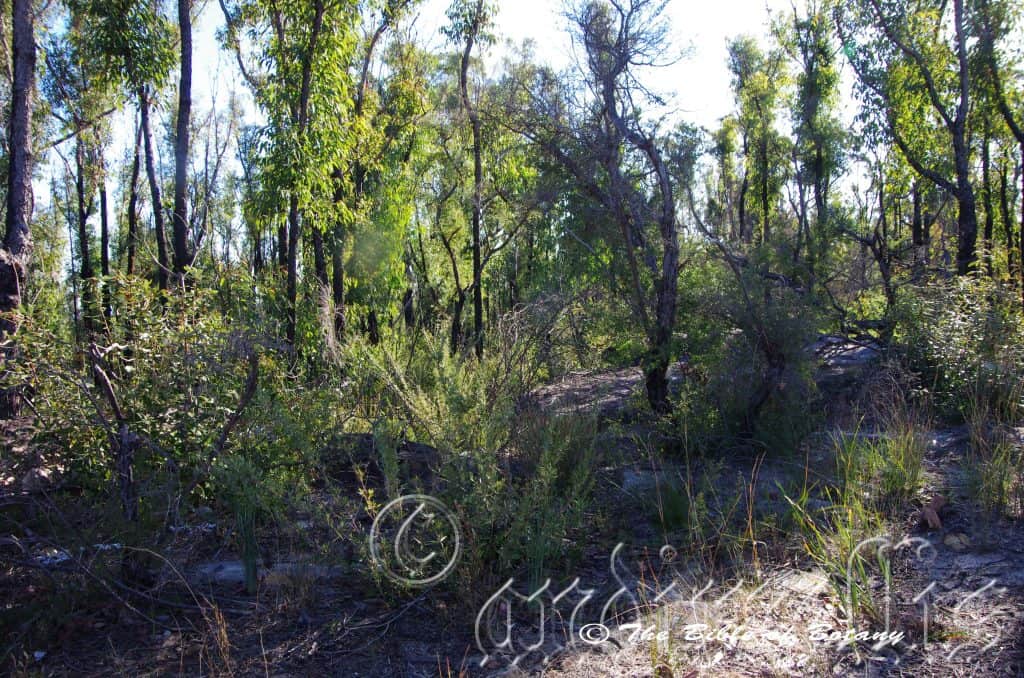
Glenreagh Cliffs NSW
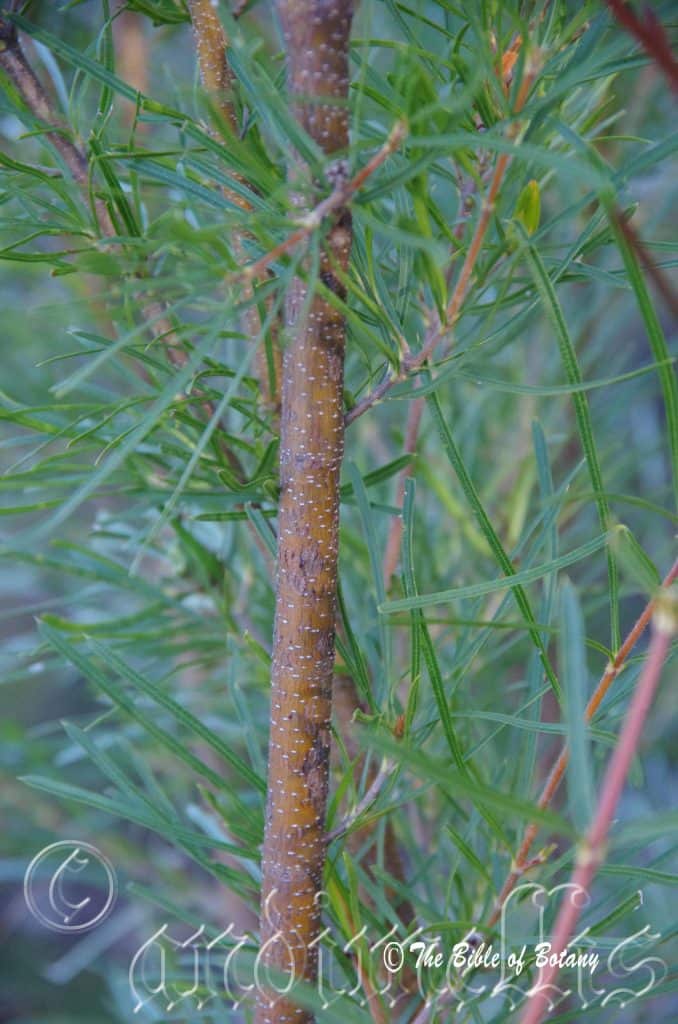
Nana Glen NSW
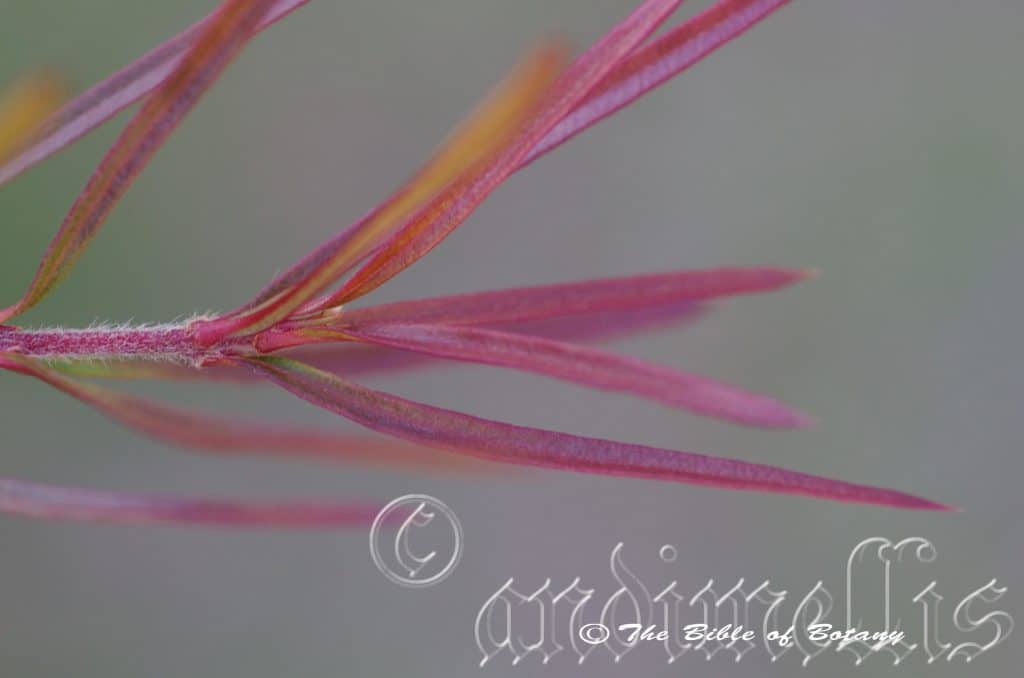
Nana Glen NSW
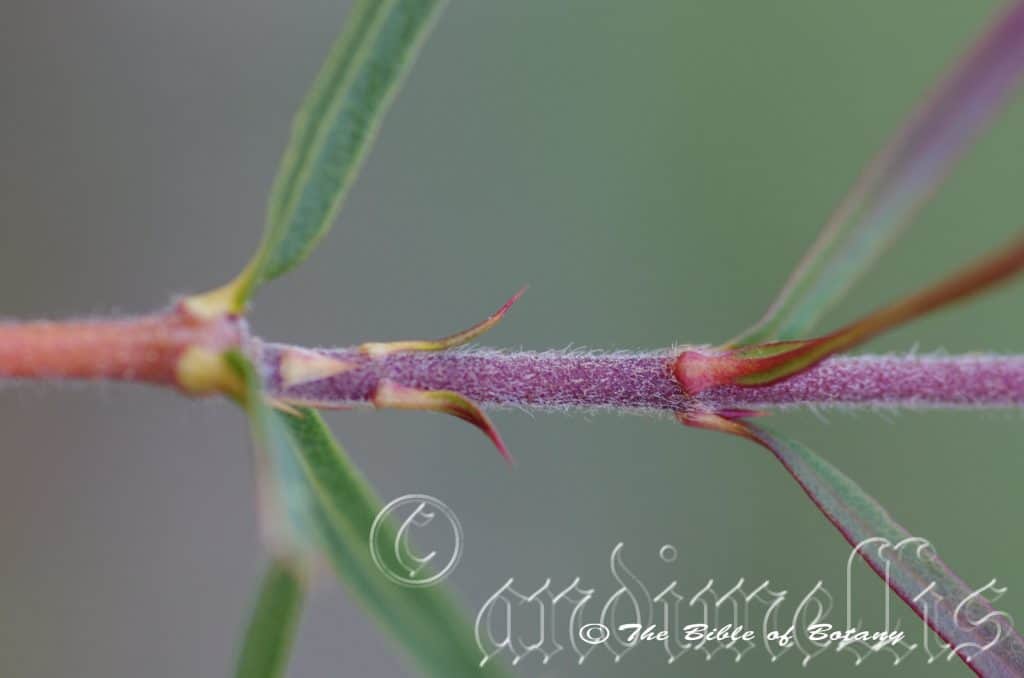
Nana Glen NSW
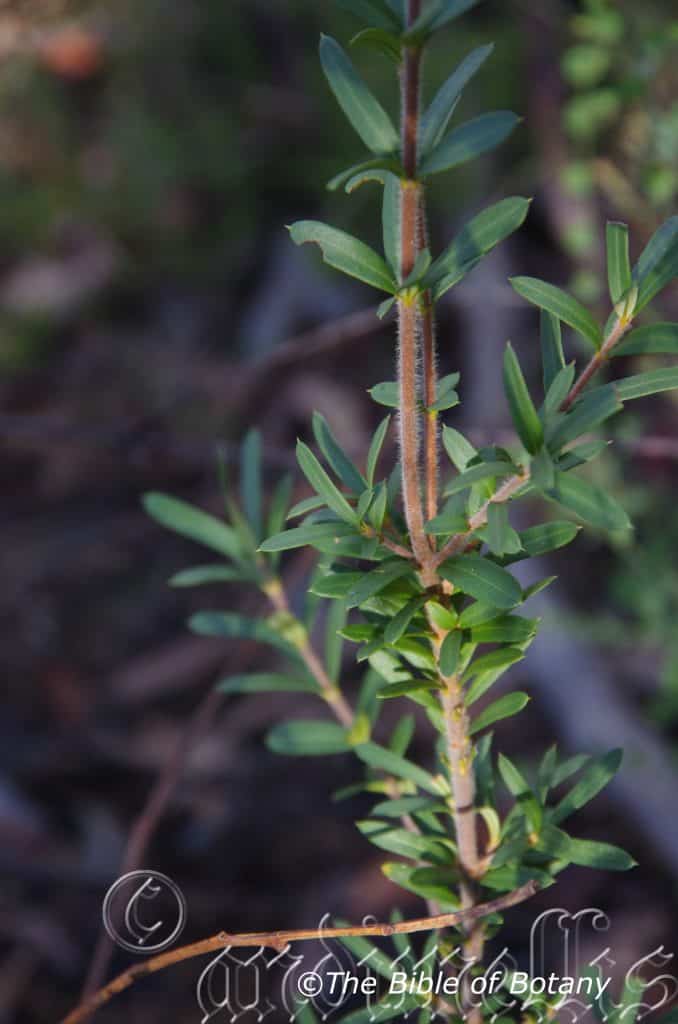
Fortis Creek National Park NSW
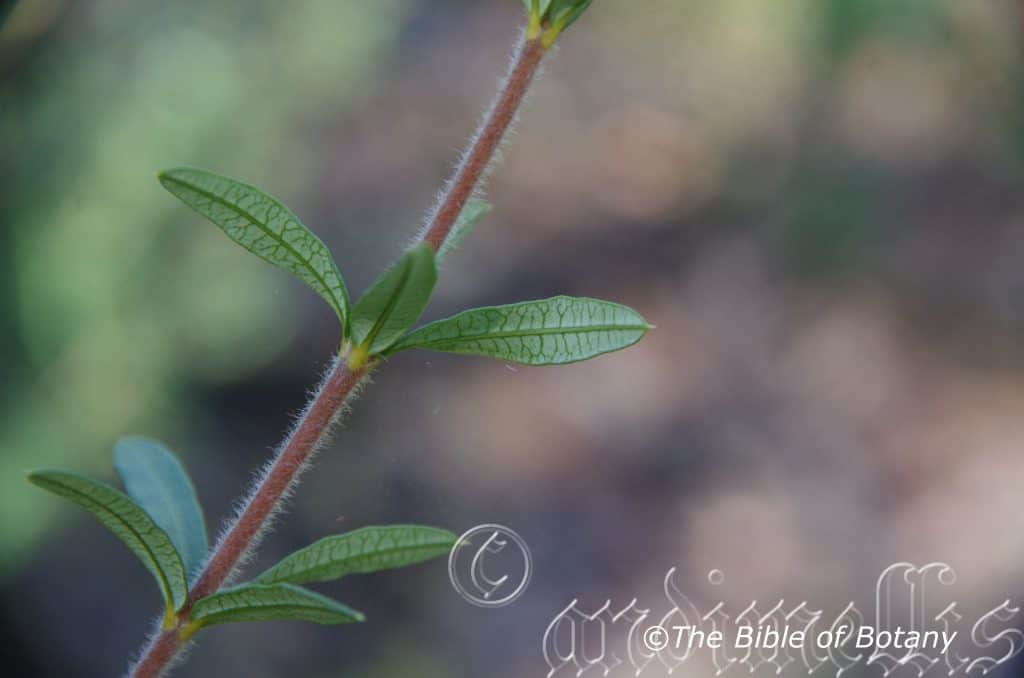
Fortis Creek National Park NSW
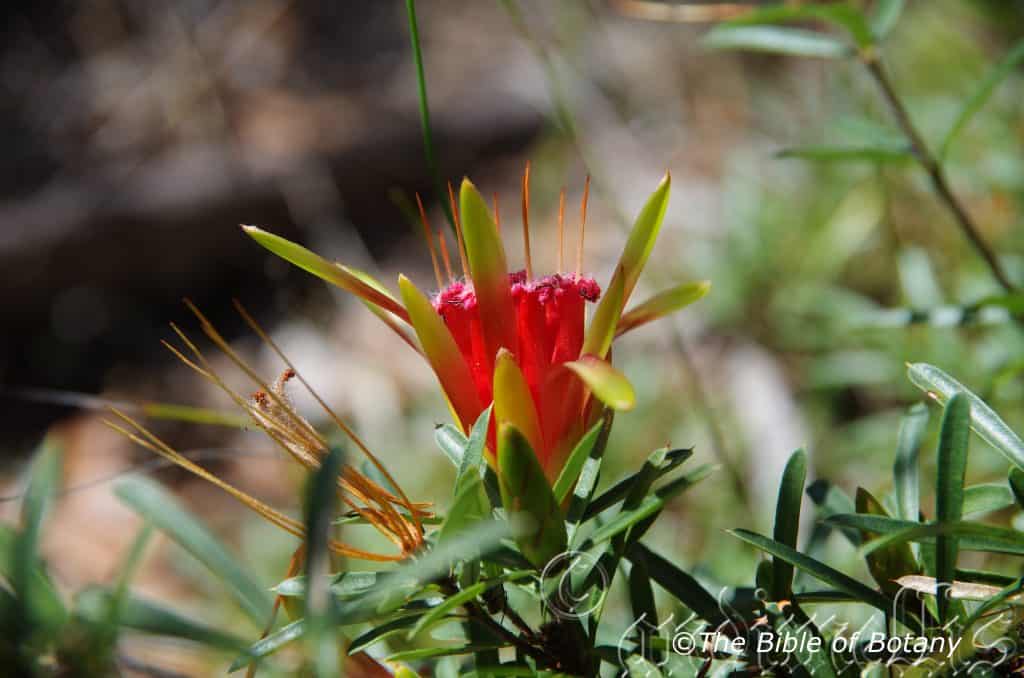
Author’s Garden The Pinnacles NSW
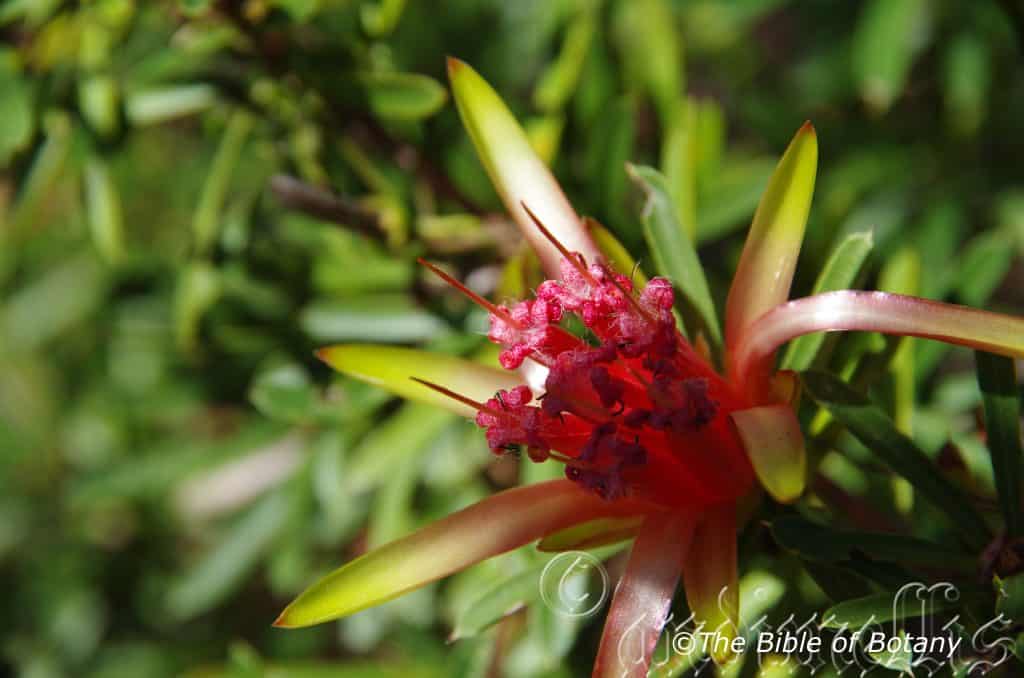
Author’s Garden The Pinnacles NSW
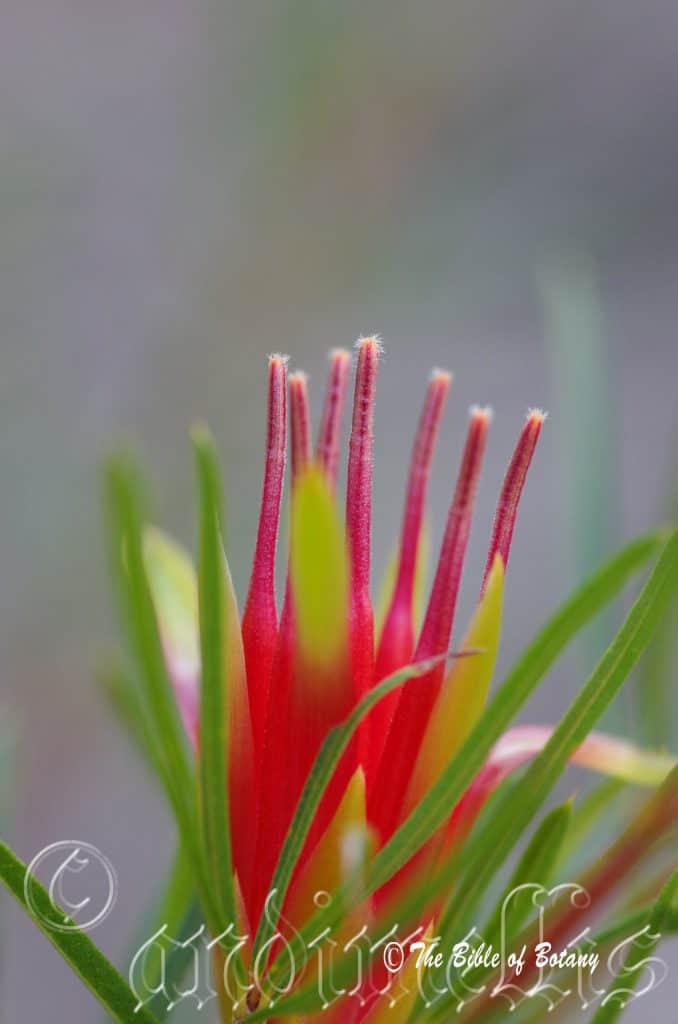
Pyriformis Floral Reserve Nana Glen NSW
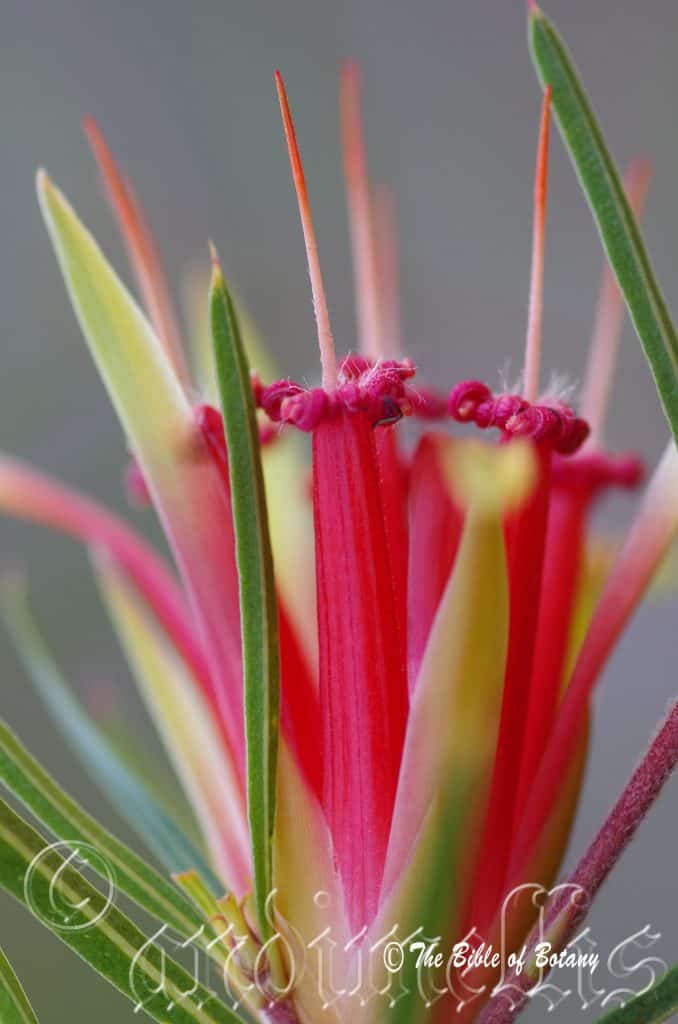
Pyriformis Floral Reserve Nana Glen NSW
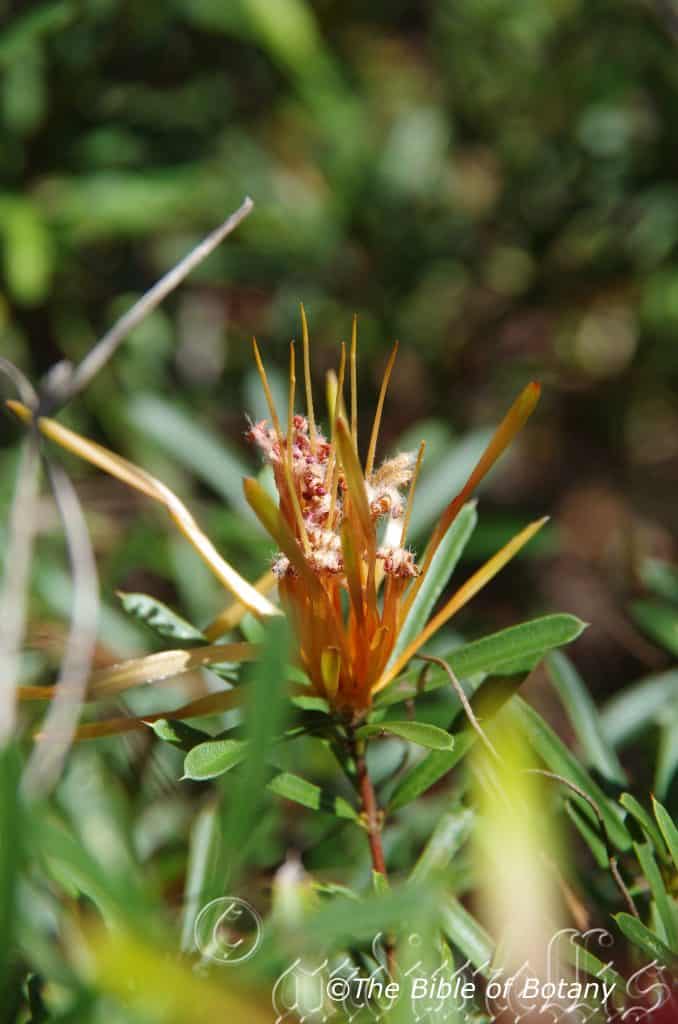
Author’s Garden The Pinnacles NSW
Fortis Creek National Park NSW
Fortis Creek National Park NSW
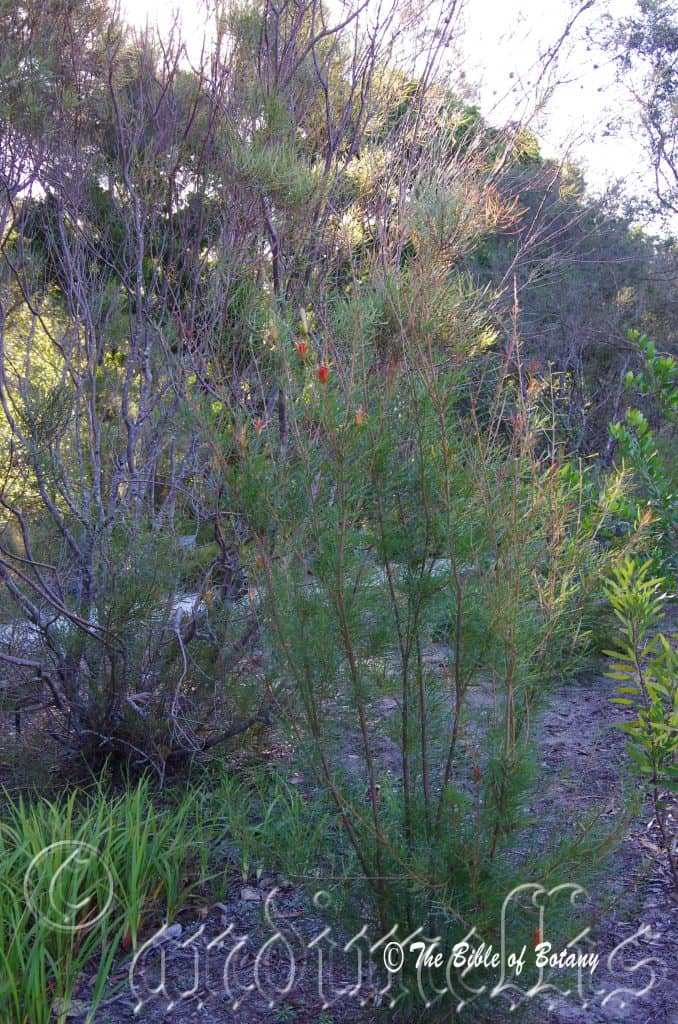
NCBG Coffs Harbour NSW
Lambertia formosa
Classification:
Unranked: Eudicots
Order: Proteales
Family: Protaceae
Genus: Is named in honour of Aylmer Burke Lambert; 1761-1842, who was an English Botanist who studied the Pinus genus.
Specie: From Formosum, which is Latin for beautiful or vivacious. It refers to the species being the most beautiful in the genus.
Sub species:
Common Name: Mountain Devil.
Distribution:
Lambertia formosa is endemic to New South Wales in several disjunct populations south from The Pinnacles north of Grafton, Glenreagh in the Pyriformis Floral Reserve west of Coffs Harbour and south from the Hawkesbury River to Port Stephens.
https://avh.ala.org.au/occurrences/search?taxa=Lambertia+formosa#tab_mapView
Habitat:
Lambertia formosa prefers full sun to light dappled shade. It grows on coastal slopes and hills, rocky outcrops, plateaus and headlands. The altitude ranges from 10 meter ASL to 550 meters ASL.
The temperatures range from 2 degree in August to 40 degrees in January.
The rainfalls range from lows of 650mm to an average of 1200mm.
Soil Requirements:
Lambertia formosa prefers on red sands, light fatty clays to light clays. The soils are usually derived from decomposed sandstones. The soils pH ranges from 5.5pH to 7pH. It does not tolerate waterlogged soils. Non saline soils to moderately saline soils are tolerated as are salt laden winds.
Height & Spread:
Wild Plants: 1.5m to 2m by 1.5m to 2m.
Characteristics:
Lambertia formosa’s grows as an erect to semi spreading open shrub with woody pale grey, glabrous stems. The stems are semi glossy and glabrous.
Lambertia formosa’s linear to narrow lanceolate leaves are in whorls of 3 or at times 4 or 6 and measure 30mm to 80mm in length by 2mm to 5mm width. The bases taper to a 0.5mm to 1.5mm petiole while the apexes are acute with a short sharp pungent spine. The discolourous laminas are sea-green and glabrous on the upper lamina while the lower laminas are paler. The laminas are flat and straight while the margins are entire and recurved. The mid vein is prominent on the lower lamina and is visible from above.
The inflorescence of Lambertia formosa are sessile and are born in small clusters of 7 from the leaf axis. In good seasons all 7 flowers will open however in poor seasons many of the flowers will be aborted. The 20 plus involucral bracts comprise of shorter ovate outer bracts and longer linear inner bracts. The bracts are yellow-green or khaki sometimes tinged red. The perianth and lobes are the most prominent part of the flower. Individual perianths are red from the base turning pink and white at the lobes. The perianth is glabrous externally with short white hirtellous hairs internally below the anthers. The perianths measure 38mm to 48mm in length. The lobes are covered in white villose hairs and are strongly recurved. The styles are orange to orange-red and have a cream or white, lateral stigma. The style and ovary measure 40mm to 55mm in length. The style is covered in short white pilose hairs on the basal half. The flowers appear throughout the year with a peak from September to February.
Lambertia formosa’s fruit is an oblong woody follicle. The follicles measure 8mm to 10mm in length by 7mm to 9mm in width. There is a 3mm to 5mm beak while each valve has an 8mm to 10mm horn. The follicles are glabrous to sparsely covered in small spines and turn a dull grey-brown prior to dehiscing. The ovoidal to ellipsoidal seeds are red-brown.
Wildlife:
Flowers are very popular amongst small and medium size nectar feeding birds. The New Holland Honey Eater is always attending the flowers in our area.
Cultivation:
Lambertia formosa is a beautiful clean small native shrub that is frequently overlooked by gardeners because of their pungent spines and poor survival rates on heavy soils. It is suitable for small, medium and large sunny gardens close to the coast or inland in temperate, sub-tropical or semi-arid zones especially where the soils are well drained, poor and sandy or on rocky ledges and escarpments. As garden subjects it will grow from 1.5 meters to 2 meters in height by 2 meters to 2.5 meters in diameter when grown in the open. It is fast growing and are cold tolerant to temperatures as low as minus 3 degrees once established.
Lambertia formosa can be lightly tip pruned to assist in bushiness and flowering. They resent heavy pruning so this should not be considered.
It would be an excellent plant for deterring unwanted guests. (Dogs and cats) because of their pungent leaves yet offer complete protection for all the small birds that frequent the flowers.
In Native gardens it can be used for attracting smaller or medium honeyeaters like the Brown or yellow face honeyeaters which will seek the protection offered by the dense pungent leaves and use the plants as a regular feed source.
Propagation:
Seeds: Lambertia formosa seeds can be sown directly into a seed raising mix. Cover them with 5mm to 6mm of fine weed free mulch and keep moist. Place the tray in a warm sunny position and keep moist not wet.
When the seedlings are 20mm to 30mm tall, prick them out and plant them into 50mm native tubes using a good organic mix.
Once the seedlings reach 100mm to 150mm in height they can be planted out into their permanent position.
Fertilize using Seaweed, fish emulsion or a half strength solution of organic chicken pellets soaked in water on an alternate basis. Fertilize every month until the plants are established then once a year in early spring or late autumn for continual health and vitality.
Further Comments from Readers:
Hi reader, it seems you use The Bible of Botany a lot. That’s great as we have great pleasure in bringing it to you! It’s a little awkward for us to ask, but our first aim is to purchase land approximately 1,600 hectares to link several parcels of N.P. into one at The Pinnacles NSW Australia, but we need your help. We’re not salespeople. We’re amateur botanists who have dedicated over 30 years to saving the environment in a practical way. We depend on donations to reach our goal. If you donate just $5, the price of your coffee this Sunday, We can help to keep the planet alive in a real way and continue to bring you regular updates and features on Australian plants all in one Botanical Bible. Any support is greatly appreciated. Thank you.
In the spirit of reconciliation we acknowledge the Bundjalung, Gumbaynggirr and Yaegl and all aboriginal nations throughout Australia and their connections to land, sea and community. We pay our respect to their Elders past, present and future for the pleasures we have gained.
Landoltia punctata
Classification:
Unranked: Monocots
Order: Alsimatales
Family: Araceae
Subfamily: Lemnoideae
Genus: Is named in honour of Dr. Elias Landolt; 1926–2013, who was a Swiss Professor of geobotanical science and is regarded as the expert on the various pond duck weeds.
Specie: From Punctatus, which is Latin for small dots or small depressions. It refers to surfaces or organs, which have small dots or small depressions on the surface.
Sub species:
Common Name: Duck Weed.
Distribution:
Landoltia punctata is very widespread throughout Asia from China to northern Australia and New Guinea. It is found in permanent waterways in Western Australia from the Ord River south to Broome and from the Swan River to Fremantle.
In the Northern Territory there is an isolated population on Dashwood Creek in the Tanami Desert. I would suspect that it is more widespread in the northern third of the Northern Territory.
In the east it is found in most the water catchments that flow east from the Atherton Tableland in far north Queensland to Melbourne and most of the larger River systems that hold permanent slow water flows west including the Darling, Murrumbidgee and the Murray River to Lake Alexandra in South Australia. In Queensland it is found on the Leichardt River and Lake Moondarra near Mount Isa.
It is also found on the southern flowing Rivers in Victoria and the Thermal Springs near Deloraine in northern Tasmania.
https://avh.ala.org.au/occurrences/search?taxa=Landoltata+punctata#tab_mapView
Habitat Aspect Climate:
Landoltia punctata prefers full sun to light dappled shade. It grows along slow flowing creeks alluvial plains, billabongs in most types of permanent fresh water ponds. The altitude ranges from 5 meter ASL to 600 meters ASL.
The temperatures range from 6 degrees in August to 40 degrees in January.
The rainfalls range from lows of 200mm to an average of 3000mm.
Soil Requirements:
Landoltia punctata prefers growing in water that overlies soils derived from decomposed sandstones, alluvial flats, alluvial laterites or accumulated dune sands. The soils are pure sands to light clays and heavy silts. The soils pH varies from 5pH through to 8pH are preferred. Non saline soils to moderately saline soils are tolerated.
Height & Spread:
Wild Plants: 2mm to 3mm by 3m to 15mm.
Characteristics:
Landoltia punctata’s usually consists of a single leaf or 2 or up to 5 leaves joined in the process of rapid vegetable reproduction. The plants have 1 to 11 individual roots that measure 15mm to 35mm in length.
Landoltia punctata’s oval to orbicular leaves are thick and measure 2mm to 5mm in length by 1.2mm to 2.5mm in width. The discolourous leaves are grass-green and glabrous or covered in fine punctate dots on the upper laminas while the lower laminas are usually deep maroon-red. The margins are entire while the upper laminas are slightly convex to flat.
The new daughter leaves remain attached to the parent leaf until they reach maturity.
There is a budding pouch located adjacent to the roots on the upper lamina where the protogynous flowers emerge. The inflorescences of Landoltia punctata are minute spathes almost covering the pouches. The 1 or sometimes 2 stamens and pistil are green and glabrous. It must be noted that the plants rarely flower and no flowering has been recorded in the Australian plants.
Landoltia punctata’s fruits are minute globular capsules. The seeds are minute.
Confusing Genre:
The following genre is rather difficult to distinguish without a microscope to observe the flowering pouches. The characteristics below must be taken as a guide only. Australia can brag though with Wolffia angusta to have the smallest known flowering plant in the world.
Landoltia punctata has 2 to 7 roots. Lower surface purplish.
Lemna specie’s roots are absent or with a single root. The lower surface is green. Usually in long strings held together but easily broken.
Spirodela polyrhiza has 5 to 18 roots. Lower surface purplish.
Wolffia angusta roots are absent. Lower surface green.
Wildlife:
Landoltia punctata are feasted upon by many fresh water fish and fresh water birds especially the surface filter feeders like ducks.
Cultivation:
At first glance Landoltia punctata may appear to be a floating water weed but in fact has an extremely important role to play in recycling waste matter and preventing nutrient blooms which occur in nature.
The plants make an interesting addition to the outside fish pond or internal glass aquariums where they will remove large quantities of ammonium from the water without affecting the pH or oxygen content. In fact they improve the conditions to allow greater oxygen uptake by the water.
Phytoremediation Landoltia punctata is an all-round phytoremediator meaning that it can take up large amounts of metals from the water. It can be used very successfully in controlling very acid or alkaline water nutrient rich water which is acid due to high levels of nitrate fertilizers leaching from the soil. It is a safer method than using chemicals, is more cost effective, is environmentally friendly, non-disruptive as opposed to physically filtering the water or using chemicals to dissolve the mineral toxicity and pumping water into the polluted water it dilute it to safer levels.
Eutrophication is Greek for eutrophic—healthy, adequate nutrition while hypertrophication relates to the excess of nutrient within the body of water usually caused by factory or mining discharge farm discharge and decaying vegetable and animal matter. Professors Randall Kerstetter, Joachim Messing and Todd Michael research on different duckweeds from the Delaware and Raritan Canal near Rutgers University in the USA showed they were able to extract nitrogen and phosphate pollutants from agricultural and municipal wastewater. Their research concluded in reducing algae growth, coliform bacterial counts and mosquito larvae on ponds, while at the same time concentrated heavy metals, capturing or degrading toxic chemicals, and encourage the growth of other aquatic animals such as frogs, fish and waterfowl. Duckweeds produce biomass faster than any other flowering plant. It can be used as high-protein feed for domestic animals and shows great potential as an alternative for biofuel production.
Spirodela specie along with punctata sequence could unlock the remarkable potential of rapidly growing aquatic plants for absorbing atmospheric carbon dioxide to help break the present unbalanced spiraling ecosystem carbon cycle we have created.
Culley et al 1981 found that a mixture with various specie 1,378 kilograms of Nitrogen, 347 kilograms of Phosphorous and 441 kilograms of Potassium could be removed from 1 hectare of land every 12 months.
Under ideal conditions Nitrogen uptake can reach 1,890 kilograms a year. Landolt and Kandeler 1987 also noted that some specie achieved a biomass of in excess of 75 tons a year per hectare with a protein content of 45mm which would make it an ideal dietary supplement for pigs, livestock, fish and fowls.
Landoltia punctata like Spirodela polyrhiza has tremendous potential to supply the world’s protein needs being up to 45mm protein producing up to $300,000 a hectare at present wholesale prices for human consumption. It is far more environmentally friendly. The biggest drawback is government regulation, lack of support for new agricultural industries. The Chinese are now seriously contemplating their use as alternately protein source. This however would not discourage me one little bit in recommending it as the next crop of the future because of its huge potential, ease of growth and present worldwide prices.
Spirodela polyrhiza is high in vitamin A, amino acids, 25mm to 48mm protein, and 17 to 18mm fiber. Up to 22mm calcium, 15mm magnesium, 0.11mm zinc and 0.14mm sodium by dry weight. Nutrition and Food Research Centre in Freising (Germany) (I believe Landoltia punctata would return similar nutritional values to Spirodela polyrhiza because it has a similar rate of growth and similar nutrient requirements. Window tests we conducted showed identical growth reproduction rates with various soluble nutrients added to the water.)
Propagation:
Seeds: Landoltia punctata can be easily grown by allowing the plants to self-bud in water with the absence of water fowl and herbivorous fish.
Further Comments from Readers:
Hi reader, it seems you use The Bible of Botany a lot. That’s great as we have great pleasure in bringing it to you! It’s a little awkward for us to ask, but our first aim is to purchase land approximately 1,600 hectares to link several parcels of N.P. into one at The Pinnacles NSW Australia, but we need your help. We’re not salespeople. We’re amateur botanists who have dedicated over 30 years to saving the environment in a practical way. We depend on donations to reach our goal. If you donate just $5, the price of your coffee this Sunday, We can help to keep the planet alive in a real way and continue to bring you regular updates and features on Australian plants all in one Botanical Bible. Any support is greatly appreciated. Thank you.
In the spirit of reconciliation we acknowledge the Bundjalung, Gumbaynggirr and Yaegl and all aboriginal nations throughout Australia and their connections to land, sea and community. We pay our respect to their Elders past, present and future for the pleasures we have gained.
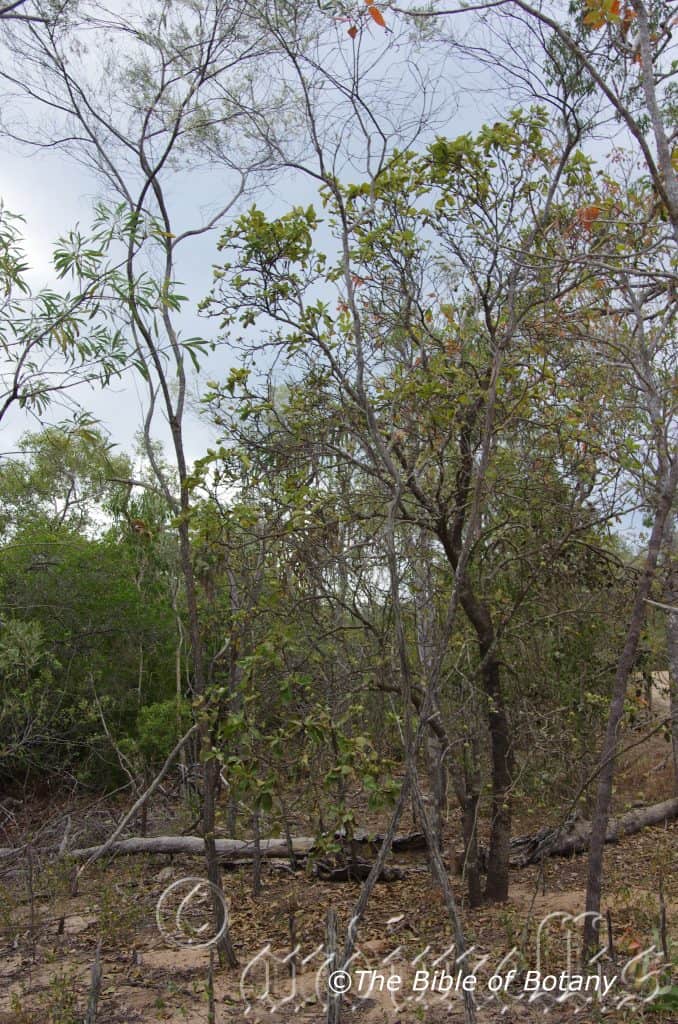
Magnetic Island Qld.
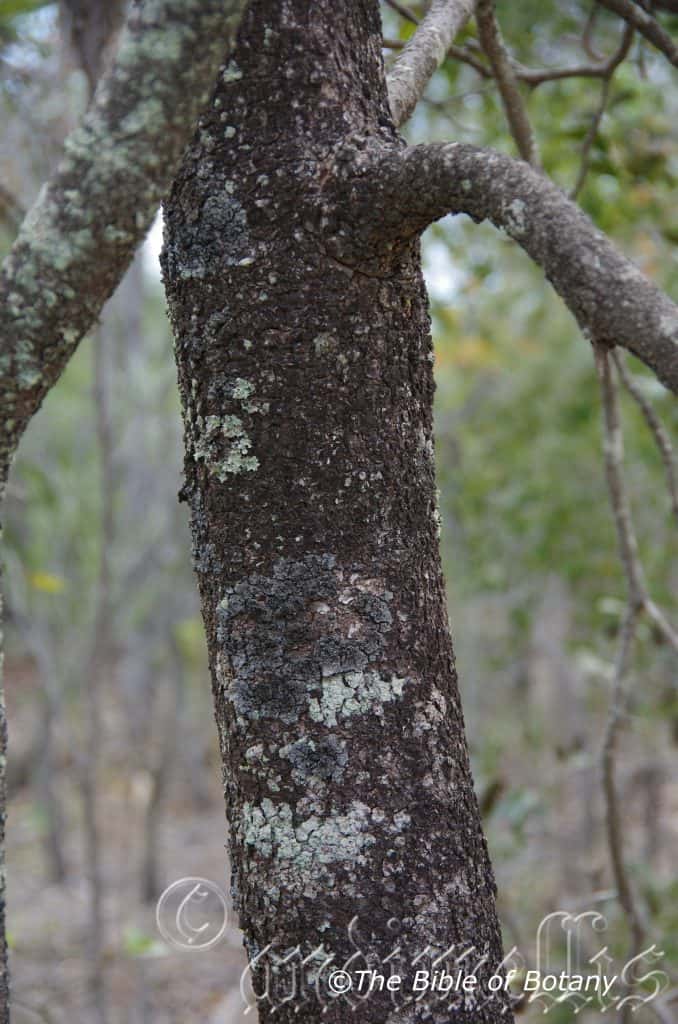
Magnetic Island Qld.
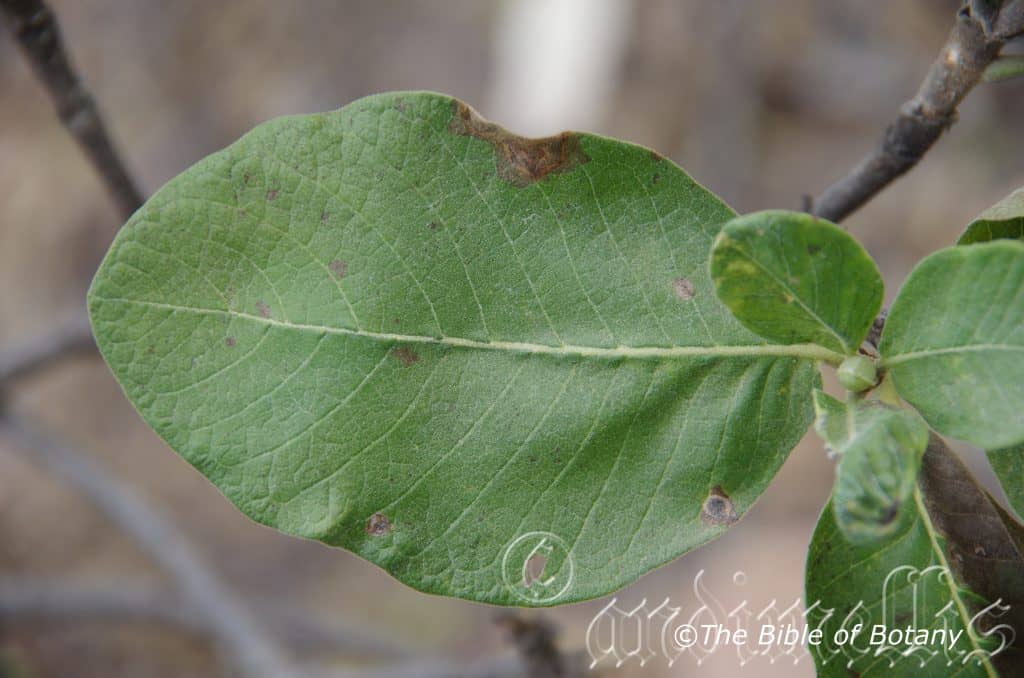
Magnetic Island Qld.
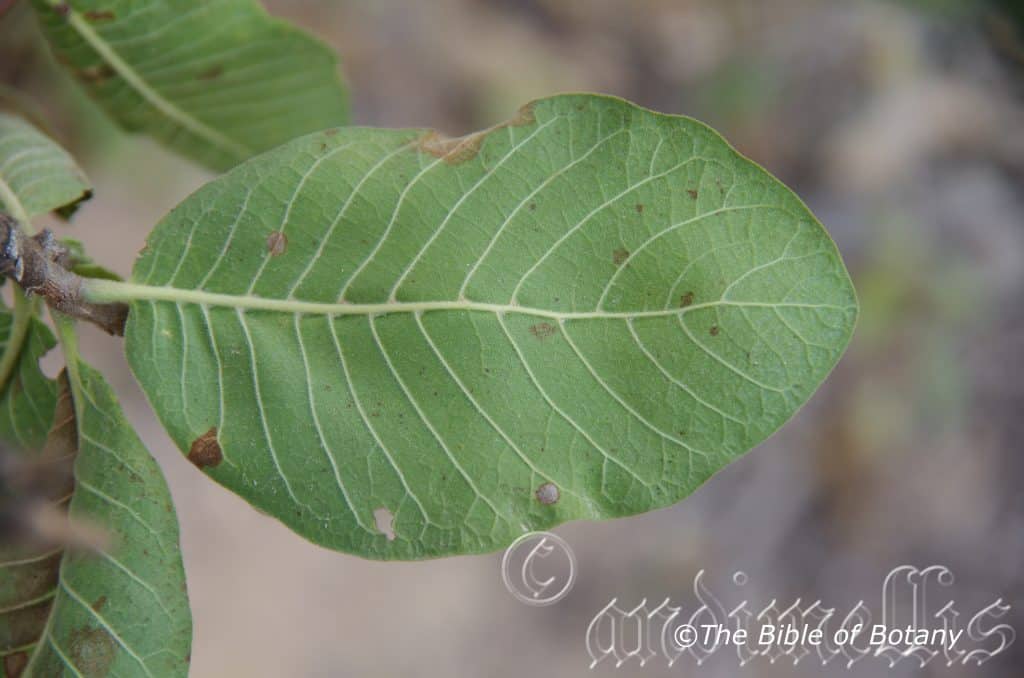
Magnetic Island Qld.
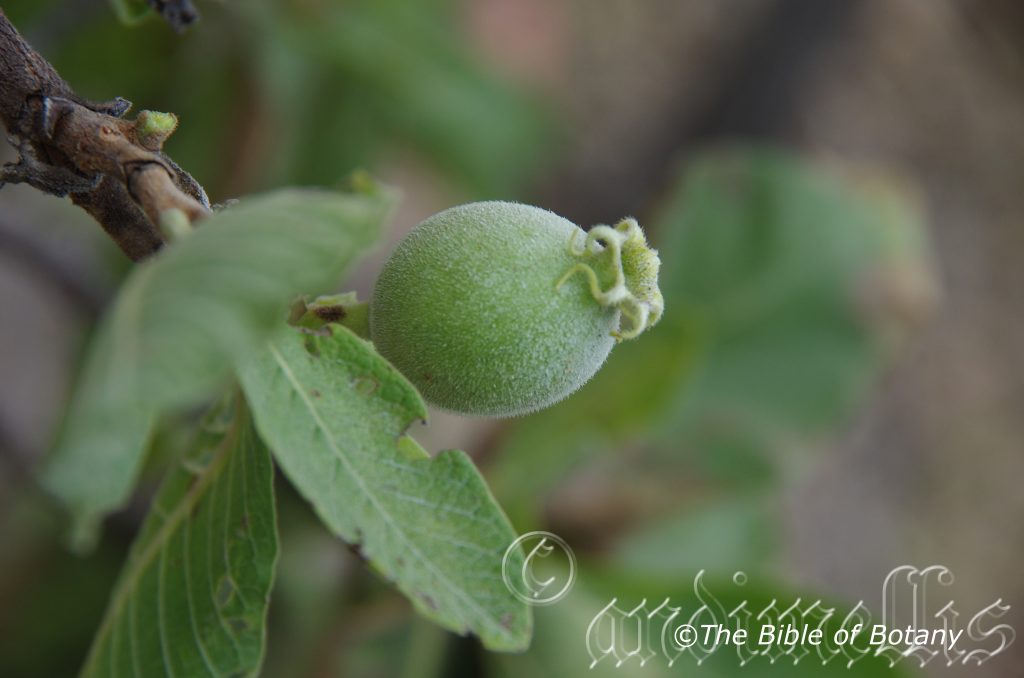
Magnetic Island Qld.
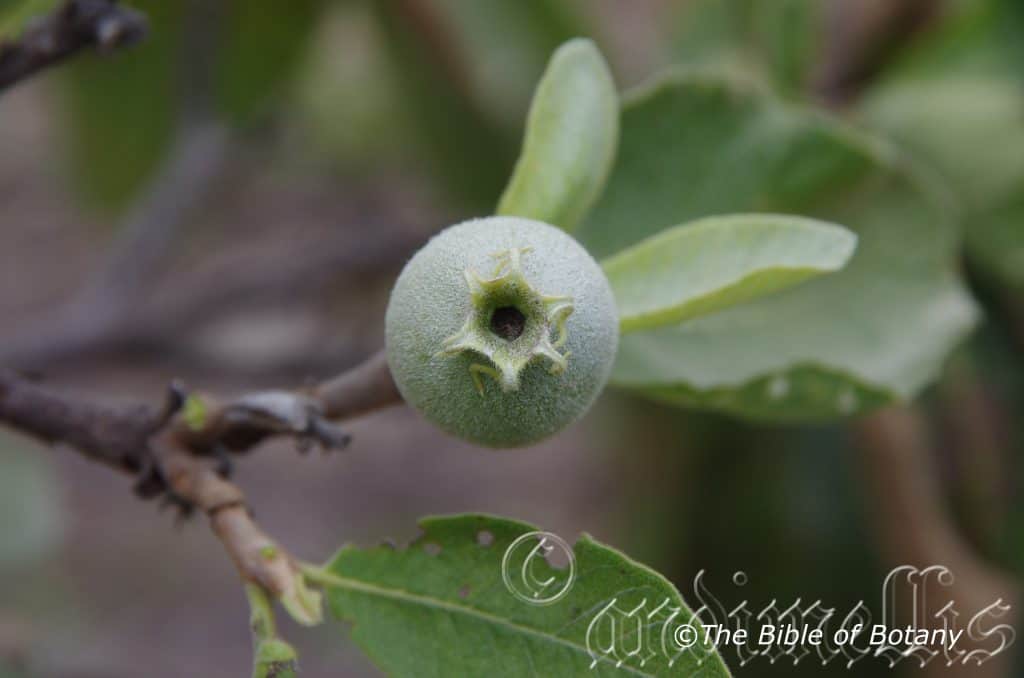
Magnetic Island Qld.
Larsenaikia ochreata
Classification:
Unranked: Eudicots
Order: Gentiales
Family: Rubiaceae
Genus: From Larsenaikia, which is an anagram of Kailarsenia. Kailarsenia is named in honour of Professor Kai Larsen; 1926–2012, who was an eminent Danish botanist and professor at Aarhus University. He did a great deal of research into the flora of South-East Asia, especially Thailand, Malaysia and Indo-China.
Specie: From ōchreāta, which is Latin for a sheath. It refers to sheaths, which form at the nodes by two stipules often uniting as a single unit and remaining as a scar after the leaf has dropped or the branch has grown out.
Sub species:
Common Name: Native Gardenia.
Distribution:
Larsenaikia ochreata is found in Queensland south from the tip of Cape York Peninsula to west of Mackay in the Eungella National Park.
https://avh.ala.org.au/occurrences/search?taxa=Larsenaikia+ochreata#tab_mapView
Habitat Aspect Climate:
Larsenaikia ochreata prefers full sun to light dappled shade. It grows on coastal slopes and hills, rocky outcrops and headlands. The altitude ranges from 50 meter ASL to 1000 meters ASL.
The temperatures range from 8 degree in August to 36 degrees in January.
The rainfall ranges from lows of 1220mm to an average of 2800mm.
Soil Requirements:
Larsenaikia ochreata prefers growing on better quality light clays to medium clays. The soils are usually derived from decomposed basalts or Granites. The soils pH ranges from 6pH through to 7pH are preferred. It does not tolerant of waterlogged soils however soils do have good moisture retention qualities. Non saline to moderately saline soils are tolerated.
Height & Spread:
Wild Plants: 5m to 8m by 3m to 5m.
Characteristics:
Larsenaikia ochreata’s stems are grey, dull and slightly scabrous. The branchlets are pale grey and glabrous.
Larsenaikia ochreata’s opposite elliptical leaves measure 80mm to 130mm in length by 50mm to 75mm in width. The thickened petiole measures 12mm to 15mm in length. The bases are cunneate while the apexes are broad accuminate. The concolourous laminas are mid grass-green to sea-green or at times yellow-green and are covered in white puberulent hairs. The margins are entire, undulating and curve slightly upwards from the mid vein or curve slightly downwards from the mid vein. The mid vein is prominent on the lower lamina and is visible from above. The shrubs are deciduous towards the end of the dry season.
The inflorescences of Larsenaikia ochreata are born singularly from the new terminal shoots. The pedicels measure less than 2mm in length. The fragrant white flowers turn creamy yellow with age. The pale green calyx has 6 linear lobes that measure 7mm to 9mm in length by 1mm to 1.5mm in width. The corolla measures 25mm to 45mm in length. The 6 linear to oblong, white to cream, divaricated lobes recurve slightly from the middle to the margins and close to the apex. They measure 25mm to 40mm in length by 6mm to 14mm in width. The sweetly scented flowers appear as the new shoots grow out towards the end of the dry season from November to January.
Larsenaikia ochreata’s fruits are obloidal berries. The berries measure 30mm to 40mm in length by 20mm to 24mm in diameter. The calyxes are persistent on the green berries which turn a pale yellow green when ripe. It is covered in white puberulent hairs.
Wildlife:
I have been told that the flowers are very popular with several species of butterflies while the fruits are eaten by several species of pigeons, larger honey eaters and Cassowaries, Casuarius casarius.
Cultivation:
Larsenaikia ochreata are beautiful clean small trees or large shrubs that are suitable for medium and large sunny or partly shaded gardens close to the coast in tropical, subtropical or semi-arid zones especially where the soils are of better quality loams. As garden subjects it will grow from 6 meter to 8 meters high by 3 meters to 5 meters in diameter. It is fast growing and are cold tolerant to temperatures as low as 4 degrees once established.
It is best planted amongst other shrubs that will gain plenty of attention outside the flowering season as the leaves are only found at the ends of the branchlets when in leaf.
It can be used as a rainforest under story shrub in smaller gardens. Plant them at 2 meter to 3 meter centers for quicker growth. The flowers have a sweet scent reminiscent of the exotic Gardenias followed by the large oblong fruits over a long period adding to their versatility around the home. It is also good trees for small epiphytic orchards and ferns.
Propagation:
Seeds: Larsenaikia ochreata seeds can be sown directly into a seed raising mix. Cover them with 5mm to 6mm of fine weed free mulch and keep moist. Place the tray in a warm sunny position. When the seedlings are 20mm to 30mm tall, prick them out and plant them into 50mm native tubes using a good organic mix.
Once the seedlings reach 100mm to 150mm in height they can be planted out into their permanent position.
Fertilize using Seaweed, fish emulsion or a half strength solution of organic chicken pellets soaked in water on an alternate basis. Fertilize every month.
Cuttings:
Use 100mm long half ripened material when growing from cuttings from the present season’s growth. Take them in warmer months of the year. Remove half the leaves from the bottom section being careful not to tear the bark. Take a 10mm slice off the bark from the bottom of the cutting on one side.
1 Prepare the cutting mix by adding one third sharp clean river sand, one third peat and one third perlite. These ingredients are sterilize,
2 Select good material from non diseased plants,
3 Select semi green stems for cuttings. Look for a stem with two or three nodes,
4 Place the cutting on a flat, hard surface, and make a clean cut down one side of the cutting at the base for 10mm with a sharp sterile knife or razor blade. – This scarification of the node will increase the chances of roots emerging from this spot. Now remove all but one or two the leaves, leaving the apex leaves in tact. If the leaves are very large in proportion to the stem, cut off the apical halves.
5 Fill a saucer with water, and place a little medium strength rooting hormone into another container like a milk bottle top. Dip the node end of the cutting into the water and then into the rooting hormone. Tap off any excess hormone,
6 Use a small dipple stick or old pencil to poke a hole into the soilless potting mix. Ensure the hole is slightly larger than the stem diameter and be careful not to wipe the rooting hormone off the cuttings base, place the cuttings in a pattern ensuring the cuttings are not touching each other,
7 I like to place the pots in Plastic bags to help maintain temperature and moisture. Place in a semi shaded place like under 50mm shade cloth.
8 When the cuttings have struck, open the bag to allow air circulation for a few days to a week,
9 Once hardened off remove the cuttings from the bag and allow to further hardening for a few more days,
10 Transplant into a good potting mix to grow on.
Fertilize using seaweed, fish emulsion or organic chicken pellets soaked in water on an alternate basis. Fertilize every two months until the plants are established then twice annually in early September or March to maintain health, vitality and better flowering.
Further Comments from Readers:
Hi reader, it seems you use The Bible of Botany a lot. That’s great as we have great pleasure in bringing it to you! It’s a little awkward for us to ask, but our first aim is to purchase land approximately 1,600 hectares to link several parcels of N.P. into one at The Pinnacles NSW Australia, but we need your help. We’re not salespeople. We’re amateur botanists who have dedicated over 30 years to saving the environment in a practical way. We depend on donations to reach our goal. If you donate just $5, the price of your coffee this Sunday, We can help to keep the planet alive in a real way and continue to bring you regular updates and features on Australian plants all in one Botanical Bible. Any support is greatly appreciated. Thank you.
In the spirit of reconciliation we acknowledge the Bundjalung, Gumbaynggirr and Yaegl and all aboriginal nations throughout Australia and their connections to land, sea and community. We pay our respect to their Elders past, present and future for the pleasures we have gained.

Sherwood Nature Reserve NSW
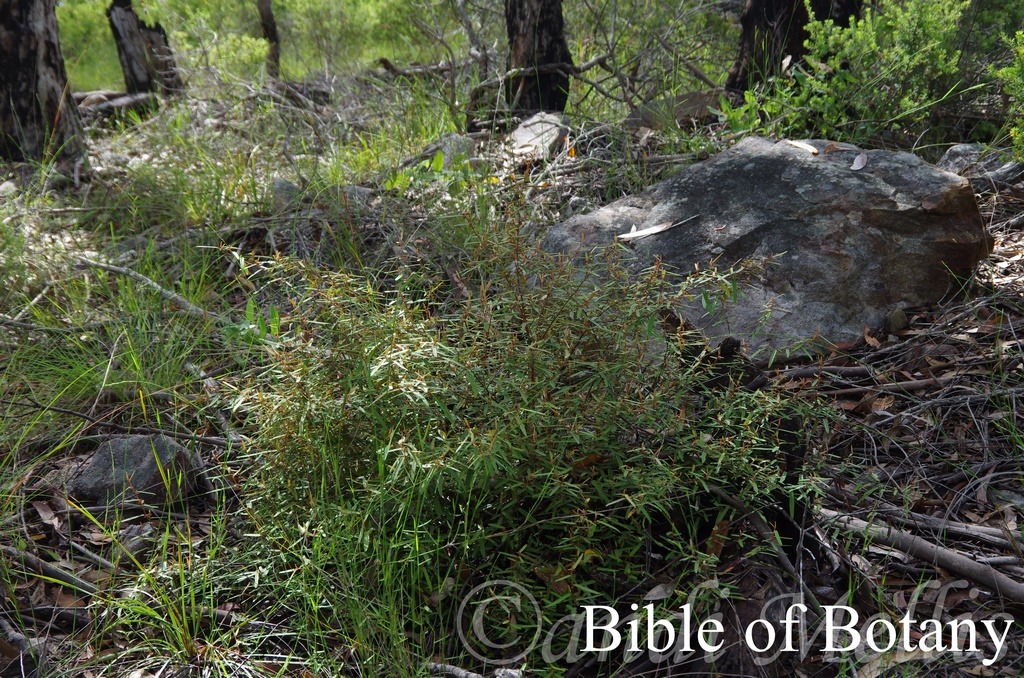
Sherwood Nature Reserve NSW
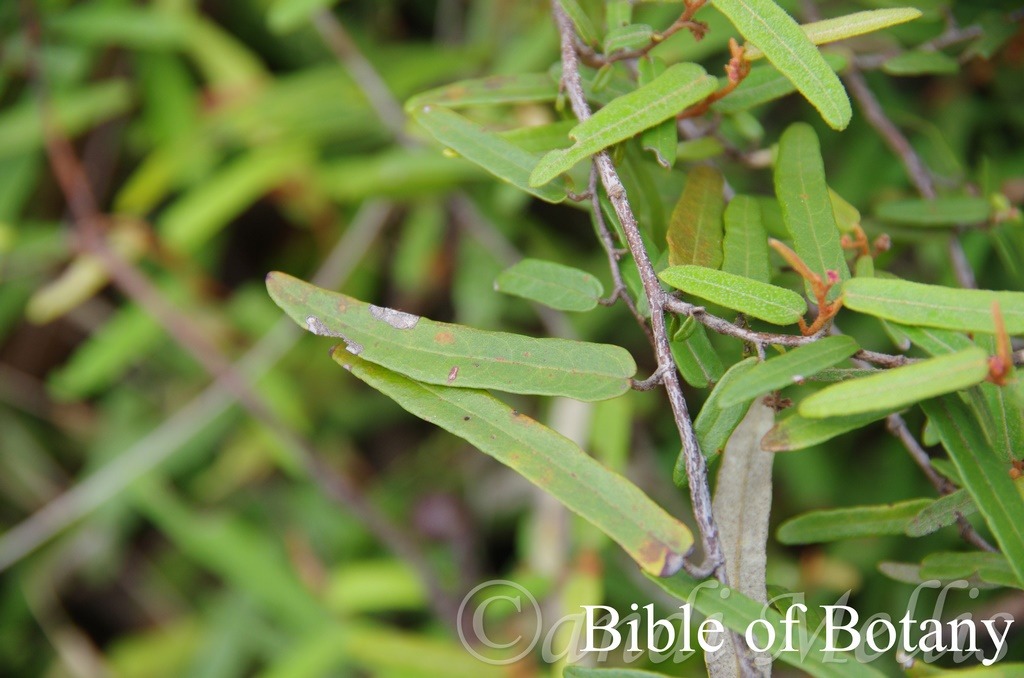
Sherwood Nature Reserve NSW

Sherwood Nature Reserve NSW
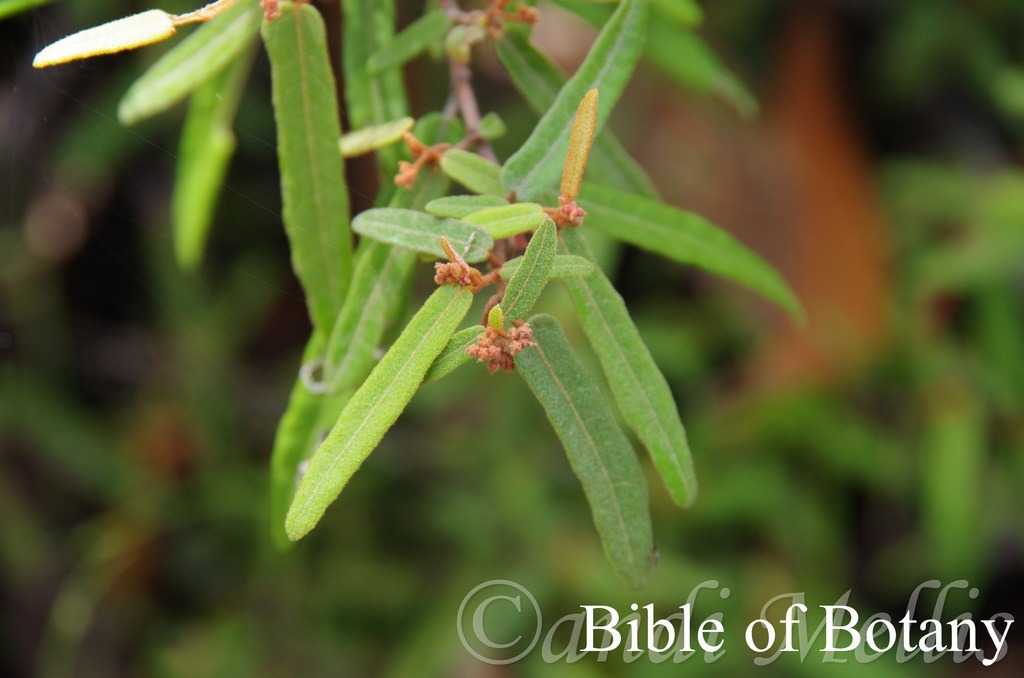
Sherwood Nature Reserve NSW
Lasiopetalum ferrugineum
Classification:
Unranked: Eudicots
Unranked: Rosids
Order: Malvales
Family: Malvaceae
Genus: From Lasios, which is Ancient Greek for soft and woolly and Petánnumi, which is Ancient Greek for to spread out or later Pétalon/Pétalos, which is Ancient Greek for thin metal leaf. It refers to specialized usually coloured leaves, which surround the ovaries and aid in the attraction of pollinators. It refers to petals which are covered in soft, woolly hairs.
Specie: From Ferrugineus, which is Latin for rusty iron coloured. It refers to leaf hairs or other physical properties of a plant which have a rusty iron colour.
Sub specie: Lasiopetalum ferrugineum subsp. cordatum. From Ferrugineus, which is Latin for rusty iron coloured. It refers to leaf hairs or other physical properties of a plant which have a rusty iron colour.
Sub specie: Lasiopetalum ferrugineum subsp. ferrugineum. From Ferrugineus, which is Latin for rusty iron coloured. It refers to leaf hairs or other physical properties of a plant which have a rusty iron colour.
Common Name: Rusty Velvet Bush.
Distribution:
Lasiopetalum ferrugineum subsp. cordatum is found on and east of the Great Dividing Range south from Port Curtis in coastal central Queensland to the Genoa River in far north eastern Victoria.
Lasiopetalum ferrugineum subsp. ferrugineum is found on and east of the Great Dividing Range south from Mount Walsh in southern Queensland to Noorinbee in far north eastern Victoria. There is a disjunct population further north on the Blackland Tableland in Queensland.
https://avh.ala.org.au/occurrences/search?taxa=Lasiopetalum+ferrugineum#tab_mapView
Habitat Aspect Climate:
Lasiopetalum ferrugineum prefers full sun to light dappled shade. It grows in semi open forests, semi open woodlands and semi open heaths on coastal slopes and hills, rocky outcrops and headlands. The altitude ranges from 5 meter ASL to 450 meters ASL.
The temperatures range from minus 3 degrees in August to 39 degrees in January.
The rainfall ranges from lows of 500mm to an average of 1600mm.
Soil Requirements:
Lasiopetalum ferrugineum prefers to grow on better sands, sandy loams, and fatty sands to light clays. The soils are usually derived from decomposed sandstones, granites or at times accumulated peaty beach sands. The soils pH ranges from 5pH to 7pH. It does not tolerate waterlogged soils. Non saline soils to moderately saline soils are tolerated.
Height & Spread:
Wild Plants: 0.5m to 1m by 0.5m to 1m.
Characteristics: Lasiopetalum ferrugineum’s stems are reddish–brown dull and slightly glabrous. The branchlets are pale grey-green and densely covered in rusty-red tomentose hairs which are often matted.
The opposite elliptical leaves measure 20mm to 120mm in length by 5mm to 40mm in width. The bases are truncate or cordate while the apexes are obtuse to acute. The discolourous laminas are mid grass-green to sea-green and are glabrous to sparsely covered in rusty-brown puberulent hairs while the lower laminas are usually moderately covered in rusty-brown or at times white tomentose hairs. The laminas recurve very slightly on the upper laminas from the mid vein to the margins and decurve downwards sharply at the margins. The margins are entire, slightly sinuate or sinuate and maybe slightly undulating. The mid vein is strongly prominent on the lower lamina and is impressed on the upper laminas while the lateral veins are at 90 degrees to the main vein and are slightly prominent on the lower laminas and slightly impressed on the upper laminas. The thickened petiole is moderately covered in rusty-brown tomentose hairs and measures 2mm to 20mm in length.
The inflorescences are short compound cymes born from the leaf axils with 5 to 10 flowers on a cyme. The peduncles and pedicels are covered in rusty-brown tomentose tor glandular hairs. The pedicels measure 1mm to 2mm in length. The linear bracteoles are covered in rusty-brown tomentose or glandular hairs and measure 3mm to 5mm in length. The calyx lobes are reddish-brown externally and covered in rusty-brown tomentose to glandular hairs externally. It is creamy to pastel yellow internally and pale rusty-brown to white puberulent hairs internally. The 5 pale yellow-green calyx lobes are elliptical to oblong with a broad acute apex. The calyx lobes measure 5mm to 10mm in length by 4mm to 7.5mm in width.
The anthers are brown while the style is pastel yellow mounted on the raised ovary. The sweetly scented flowers appear as the new shoots grow out towards the end of the dry season from September to November.
The fruits are orbicular capsules. The capsules are densely covered in long rusty-brown to rusty-red tomentose hairs admeasure 3mm to 6mm in diameter. The calyxes are persistent on the green berries which turn a reddish-brown when ripe. The compressed ovoidal seeds are black and are strongly rugose.
Confusing Subspecies Varieties:
Lasiopetalum ferrugineum subsp. ferrugineum’s leaves are narrow elliptic to lanceolate and measure 35mm to 120mm in length by 5mm to 12mm in width while the bases are truncate, taper to petiole or at times are lobed while the apexes are obtuse to acute. The margins are usually entire or at times shallowly lobed or sinuate.
Lasiopetalum ferrugineum subsp. cordatum’s leaves are ovate to lanceolate and measure 20mm to 90mm in length by 8mm to 40mm in width. The bases are cordate or lobed while the apexes are obtuse to acute. The margins are usually entire or rarely shallow sinuate.
Wildlife:
Lasiopetalum ferrugineum wildlife is unknown to the author.
Cultivation:
Lasiopetalum ferrugineum is a beautiful neat small shrub that is suitable for small, medium and large sunny or partly shaded gardens close to the coast in tropical, subtropical or semi-arid zones especially where there are better quality loams with plenty of leaf litter. As garden subjects it grows from 0.8 meters to 1.2 meters in height by 0.8 meters to 1.2 meters in diameter. It is fast growing and are cold tolerant to temperatures as low as minus 3 degrees once established.
It is best planted amongst other shrubs that will gain plenty of attention outside the flowering season as the flowers are not spectacular in their own right but are unusual.
It can be used as a rainforest under story shrub or placed adjacent to a native bush garden or beneath tall trees in an open woodland setting. Plant them at 1.5 meter to 3 meter centers depending on the type of scene being created but give them space to develop fully and without being overcrowded. The flowers have a sweet scent reminiscent of the exotic Gardenias followed by the large oblong fruits over a long period adding to their versatility around the home. It is also good trees for small epiphytic orchards and ferns.
It is great in larger rockeries where it can be successfully used as a fill in plant. Here it can be planted in small groups of 2 or 3 as a standalone plant to break a continuous barrier of green. If it is surrounded by shorter plants with fine foliages, will make its foliage will still dominate at the center giving strength and breadth to the bed especially when it is in flower. Think of the flowers when considering companion plants as they can easily be lost amongst strong colours and large leaves especially if the other plants flower at the same time.
Propagation:
Seeds: Lasiopetalum ferrugineum seeds can be sown directly into a seed raising mix. Cover them with 5mm to 6mm of fine weed free mulch and keep moist. Place the tray in a warm semi shaded position preferably beneath 30mm shade cloth. When the seedlings are 20mm to 30mm tall, prick them out and plant them into 50mm native tubes using a good organic mix.
Once the seedlings reach 100mm to 150mm in height they can be planted out into their permanent position.
Fertilize using Seaweed, fish emulsion or a half strength solution of organic chicken pellets soaked in water on an alternate basis. Fertilize every month.
Cuttings:
Use 100mm to 130mm long half ripened material when growing from cuttings from the present season’s growth. Take them in warmer months of the year. Remove half the leaves from the bottom section being careful not to tear the bark. Take a 10mm slice off the bark from the bottom of the cutting on one side.
1 Prepare the cutting mix by adding one third sharp clean river sand, one third peat and one third perlite. These ingredients are sterilize,
2 Select good material from non diseased plants,
3 Select semi green stems for cuttings. Look for a stem with two or three nodes,
4 Place the cutting on a flat, hard surface, and make a clean cut down one side of the cutting at the base for 10mm with a sharp sterile knife or razor blade. – This scarification of the node will increase the chances of roots emerging from this spot. Now remove all but one or two the leaves, leaving the apex leaves in tact. If the leaves are very large in proportion to the stem, cut off the apical halves.
5 Fill a saucer with water, and place a little medium strength rooting hormone into another container like a milk bottle top. Dip the node end of the cutting into the water and then into the rooting hormone. Tap off any excess hormone,
6 Use a small dipple stick or old pencil to poke a hole into the soilless potting mix. Ensure the hole is slightly larger than the stem diameter and be careful not to wipe the rooting hormone off the cuttings base, place the cuttings in a pattern ensuring the cuttings are not touching each other,
7 I like to place the pots in Plastic bags to help maintain temperature and moisture. Place in a semi shaded place like under 50mm shade cloth.
8 When the cuttings have struck, open the bag to allow air circulation for a few days to a week,
9 Once hardened off remove the cuttings from the bag and allow to further hardening for a few more days,
10 Transplant into a good potting mix to grow on.
Fertilize using seaweed, fish emulsion or organic chicken pellets soaked in water on an alternate basis. Fertilize every two months until the plants are established then twice annually in early September or March to maintain health, vitality and better flowering.
Further Comments from Readers:
Hi reader, it seems you use The Bible of Botany a lot. That’s great as we have great pleasure in bringing it to you! It’s a little awkward for us to ask, but our first aim is to purchase land approximately 1,600 hectares to link several parcels of N.P. into one at The Pinnacles NSW Australia, but we need your help. We’re not salespeople. We’re amateur botanists who have dedicated over 30 years to saving the environment in a practical way. We depend on donations to reach our goal. If you donate just $5, the price of your coffee this Sunday, We can help to keep the planet alive in a real way and continue to bring you regular updates and features on Australian plants all in one Botanical Bible. Any support is greatly appreciated. Thank you.
In the spirit of reconciliation we acknowledge the Bundjalung, Gumbaynggirr and Yaegl and all aboriginal nations throughout Australia and their connections to land, sea and community. We pay our respect to their Elders past, present and future for the pleasures we have gained.
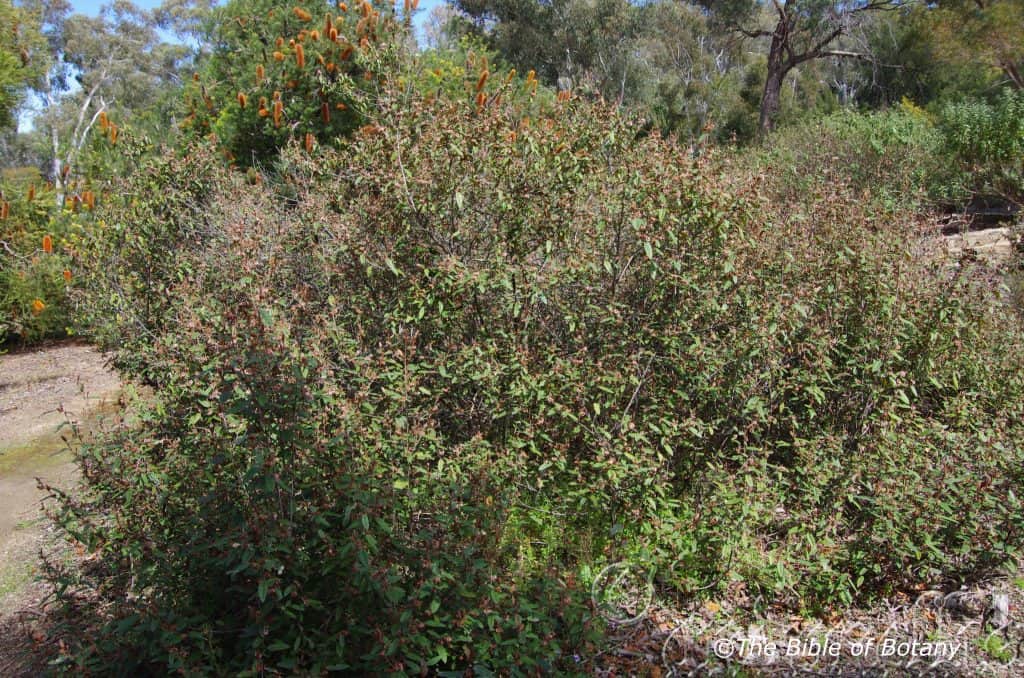
National Botanic Gardens ACT
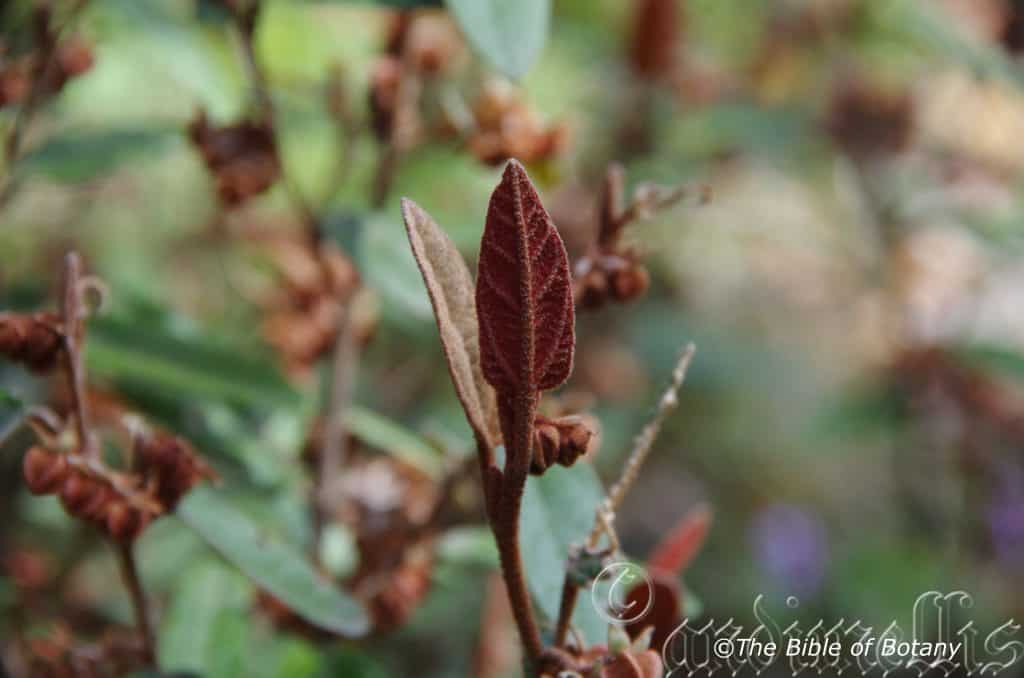
National Botanic Gardens ACT
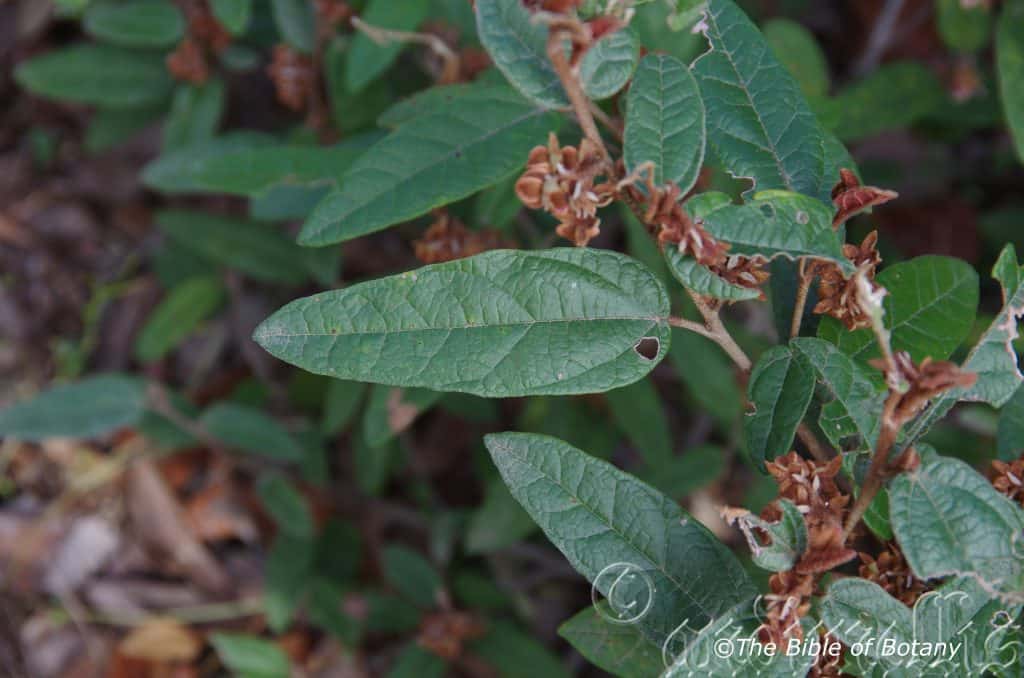
National Botanic Gardens ACT
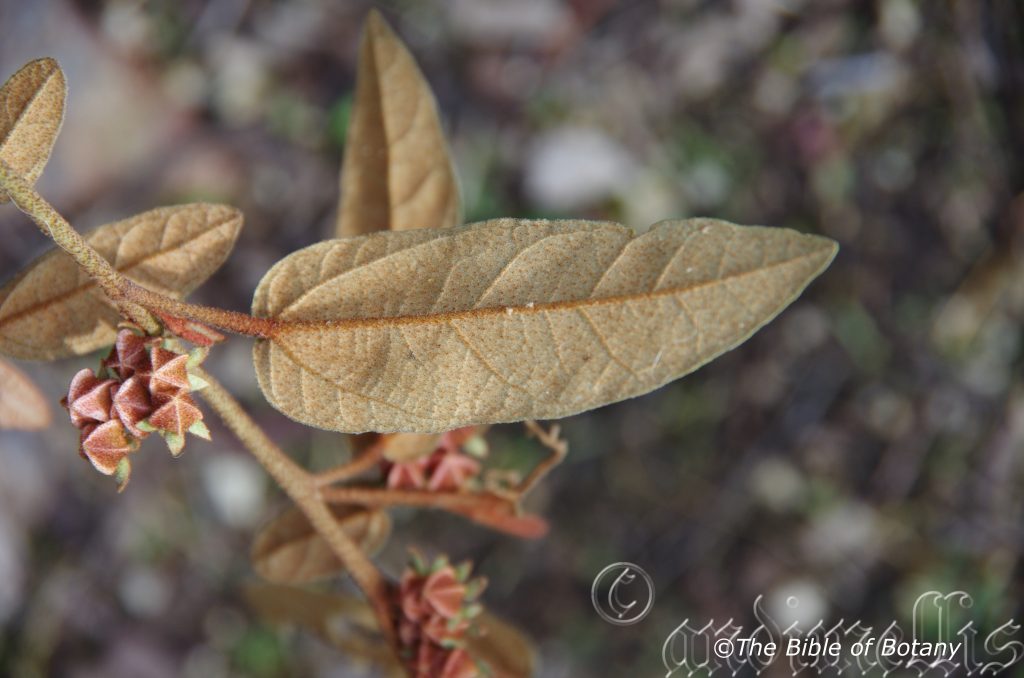
National Botanic Gardens ACT
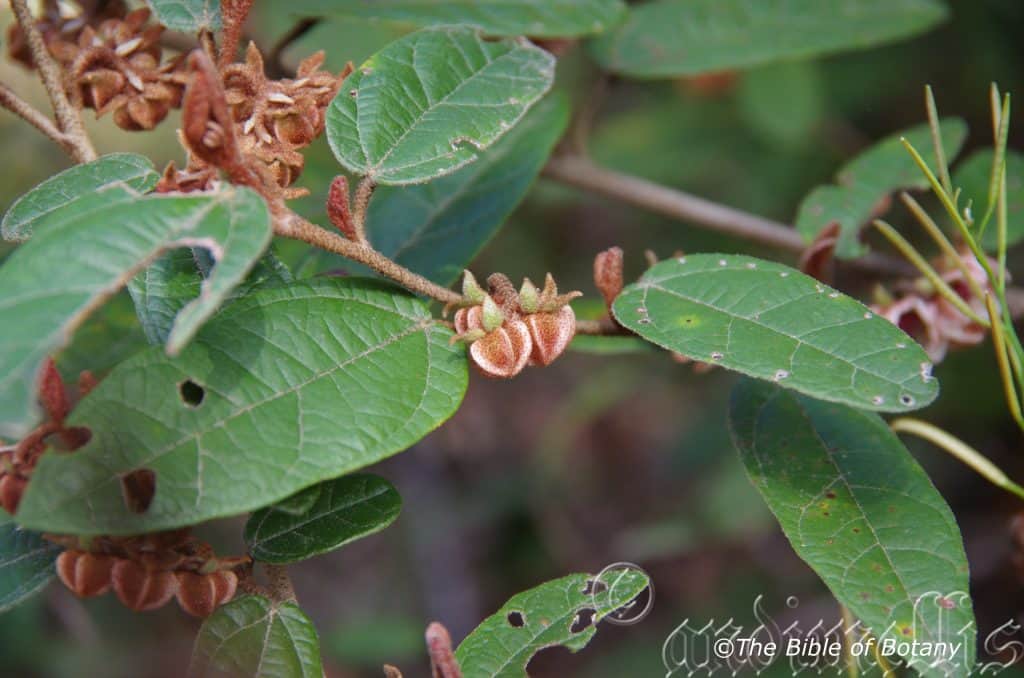
National Botanic Gardens ACT
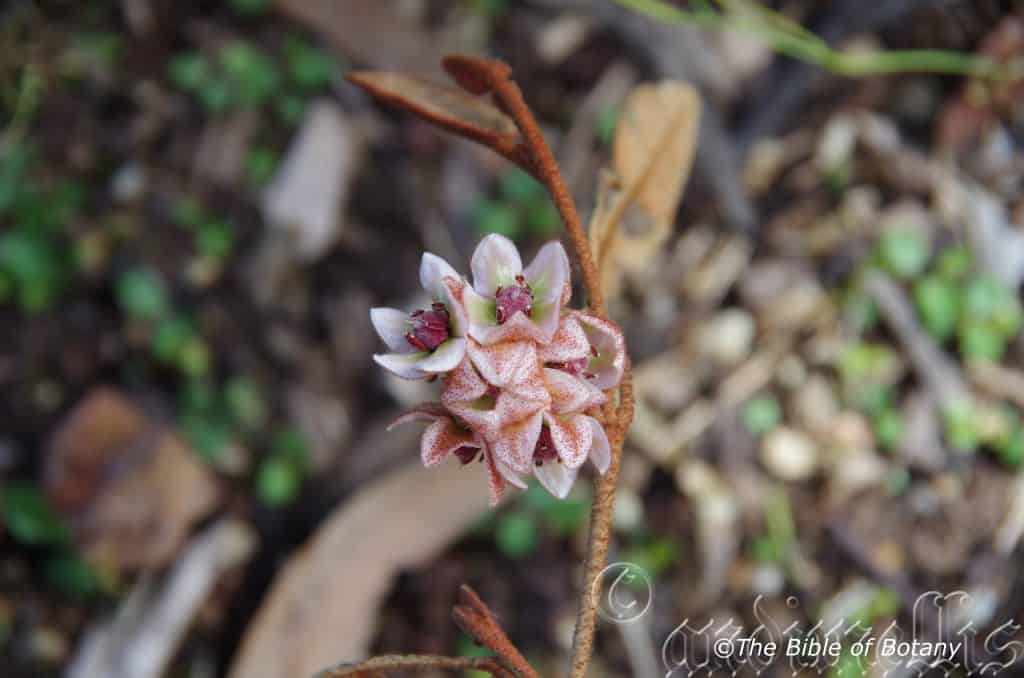
National Botanic Gardens ACT
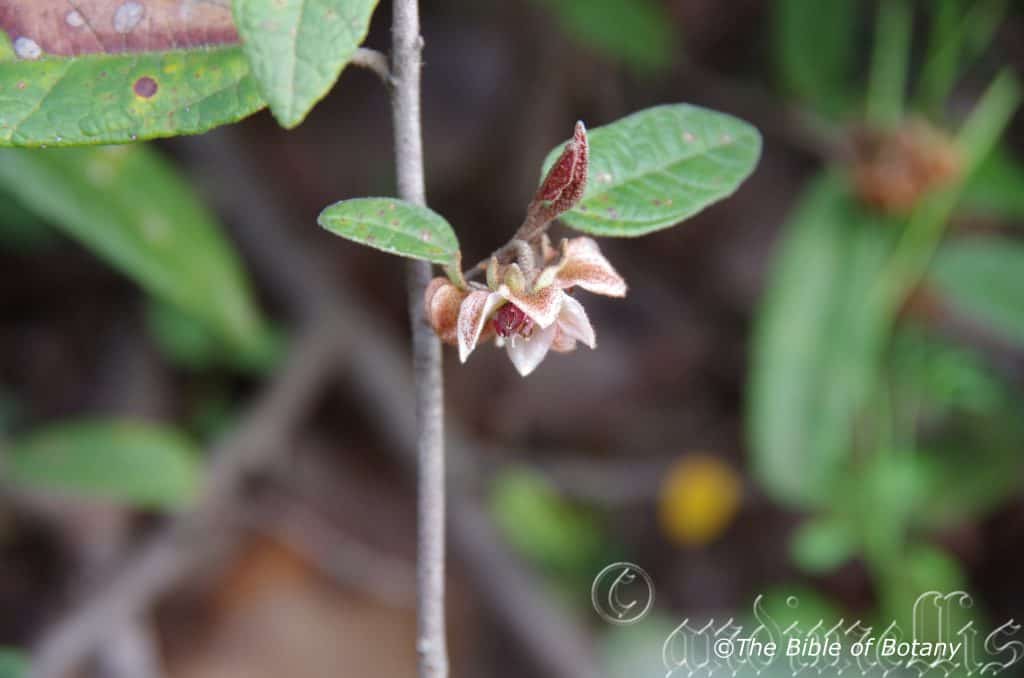
National Botanic Gardens ACT
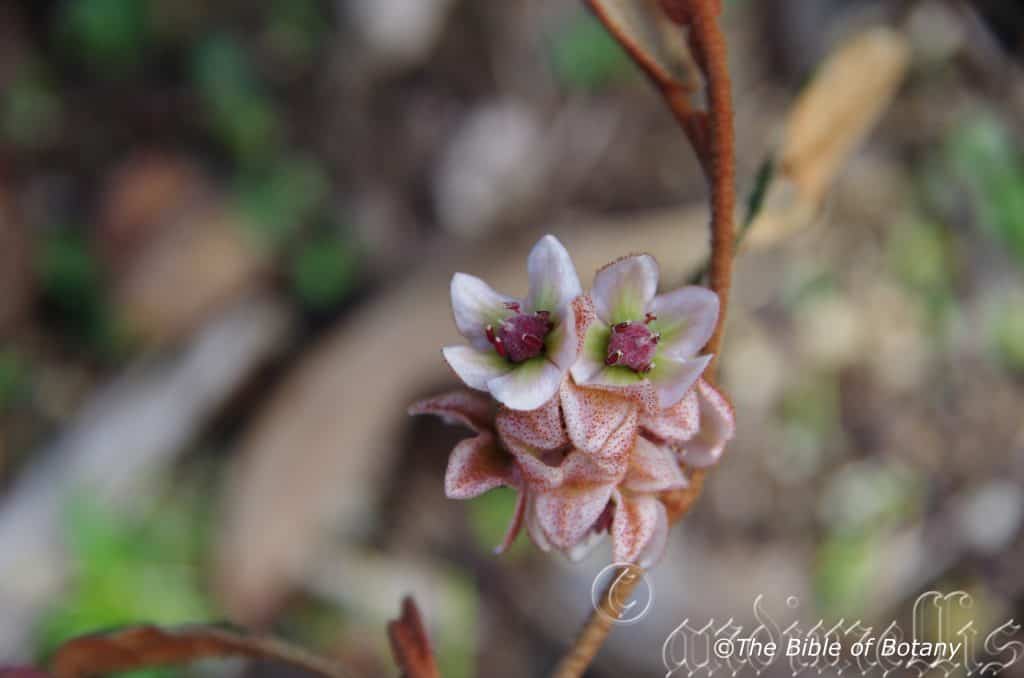
National Botanic Gardens ACT
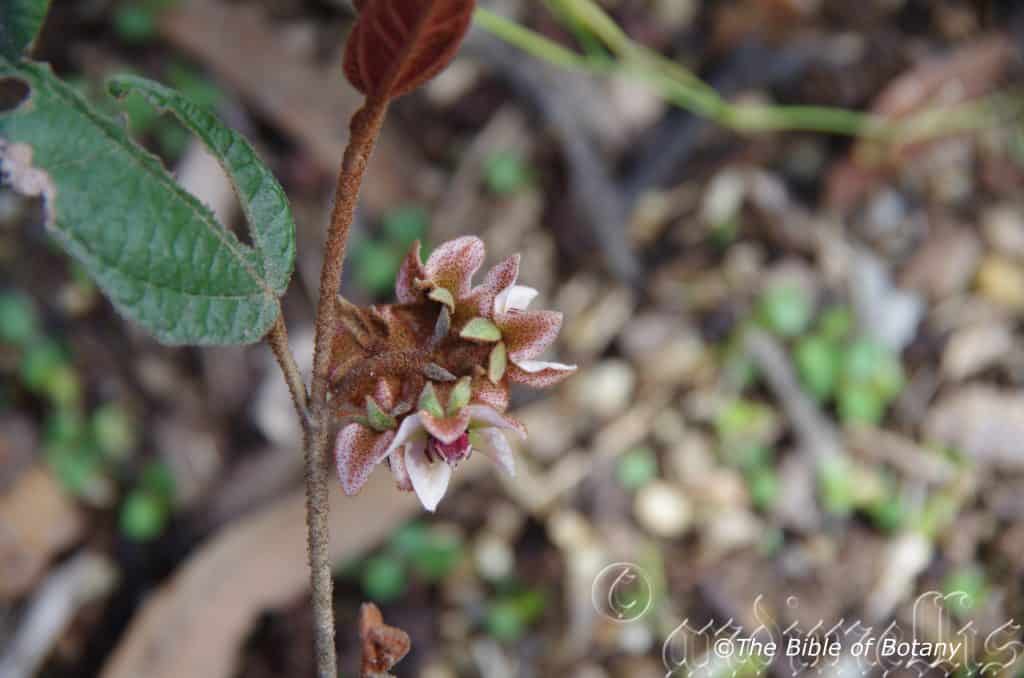
National Botanic Gardens ACT
Lasiopetalum macrophyllum
Classification:
Unranked: Eudicots
Unranked: Rosids
Order: Malvales
Family: Malvaceae
Genus: From Lasios, which is Ancient Greek for soft and woolly and Petánnumi, which is Ancient Greek for to spread out or later Pétalon/Pétalos, which is Ancient Greek for thin metal leaf. It refers to specialized usually coloured leaves, which surround the ovaries and aid in the attraction of pollinators. It refers to petals which are covered in soft, woolly hairs.
Specie: From Makros which is Ancient Greek for large and Phullon/Phýllon, which are Ancient Greek for a leaf. It refers to leaves, which are a lot larger than other species in the genus.
Sub specie:
Common Name: Large Leaf Velvet Bush.
Distribution:
Lasiopetalum macrophyllum is found south from Glassy Mountain near Woodenbong in far north eastern New South Wales to Wilson Promontory in far south eastern Victoria. It is mainly found on the Great Dividing Range.
It is also found in the Grampians in south western Victoria and further south on the eastern Bass Strait Islands and the eastern and north coast of Tasmania.
https://avh.ala.org.au/occurrences/search?taxa=Lasiopetalum+macrophyllum#tab_mapView
Habitat Aspect Climate:
Lasiopetalum macrophyllum prefers light dappled shade but will grow in full sun. It grows in semi open forests, semi open woodlands and semi open drier heaths on coastal slopes and hills, especially rocky outcrops near watercourses. The altitude ranges from 50 meter ASL to 1650 meters ASL.
The temperatures range from minus 8 degrees in August to 34 degrees in January.
The rainfall ranges from lows of 500mm to an average of 1400mm.
Soil Requirements:
Lasiopetalum macrophyllum prefers to grow on better quality sands, sandy loams, and fatty sands to light clays. The soils are usually derived from decomposed granites and acidic basalts. The soils pH ranges from 4.5pH to 6pH. It does not tolerate waterlogged soils. Non saline soils to moderately saline soils are tolerated.
Height & Spread:
Wild Plants: 0.5m to 1m by 0.5m to 1m.
Characteristics: Lasiopetalum macrophyllum’s branches are reddish–brown dull and are densely covered in white pubescent hairs and rusty-brown stellate hairs. The juvenile stems are creamy-green dull and are densely covered in white and rusty hirsute hairs and rusty-brown stellate hairs.
Lasiopetalum macrophyllum alternate, ovate to lanceolate or more or less cordate leaves measure 25mm to 130mm in length by 10mm to 70mm in width. The terete petiole is moderately to densely covered in white and rusty hirsute and tomentose hairs and rusty-brown stellate hairs and measures 5mm to 20mm in length. The bases are rounded to cordate while the apexes are obtuse, broad acute or acute. The discolourous laminas are mid to deep green and densely covered in white and rusty hirsute and tomentose hairs and rusty-brown stellate hairs eventually becoming somewhat glabrous on the upper laminas, while the lower laminas are usually whitish and densely covered in white and rusty hirsute and hirsute and tomentose hairs and rusty-brown stellate hairs. The laminas recurve slightly from the mid vein to the margins. The margins are entire and are slightly undulating. The mid vein is strongly prominent on the lower lamina and is impressed on the upper laminas, while the lateral veins are set at 40 degrees to the main vein and form loops inside the margins.
The inflorescences of Lasiopetalum macrophyllum are short tightly packed racemes born from the leaf axils with 6 to 12 individual flowers. The entire inflorescence densely covered in white and rusty hirsute and hirsute and tomentose hairs and rusty-brown stellate hairs. The peduncles and pedicels are densely covered in white and rusty hirsute and hirsute and tomentose hairs and rusty-brown stellate hairs. The raceme measures 22mm to 30mm in length, while the pedicels measure 5mm to 6mm in length.
The 3 broad lanceolate bracteoles measure 3mm to 4.5mm in length. The calyx segments are moderately to densely covered in white and rusty hirsute and tomentose hairs and rusty-brown stellate hairs externally, are cream and glabrous internally and measure 6mm to 8mm in length. The petals measure less than 1mm in length. The crimson anthers split longitudinally, are dorsifixed and measure 2mm in length. The erect, white style is glabrous. The flowers appear from September to December.
The capsule are densely covered in rusty or white hirsute and tomentose hairs and measure 3mm to 5mm in diameter.
Wildlife:
Lasiopetalum macrophyllum wildlife is unknown to the author.
Cultivation:
Lasiopetalum macrophyllum is a beautiful neat small shrub that is suitable for small, medium and large sunny or partly shaded gardens close to the coast in tropical, subtropical or semi-arid zones especially where there are better quality loams with plenty of leaf litter. As garden subjects it grows from 0.8 meters to 1.2 meters in height by 0.8 meters to 1.2 meters in diameter. It is fast growing and are cold tolerant to temperatures as low as minus 3 degrees once established.
It is best planted amongst other shrubs that will gain plenty of attention outside the flowering season as the flowers are not spectacular in their own right but are unusual.
It can be used as a rainforest under story shrub or placed adjacent to a native bush garden or beneath tall trees in an open woodland setting. Plant them at 1.5 meter to 3 meter centers depending on the type of scene being created but give them space to develop fully and without being overcrowded. The flowers have a sweet scent reminiscent of the exotic Gardenias followed by the large oblong fruits over a long period adding to their versatility around the home. It is also good trees for small epiphytic orchards and ferns.
It is great in larger rockeries where it can be successfully used as a fill in plant. Here it can be planted in small groups of 2 or 3 as a standalone plant to break a continuous barrier of green. If it is surrounded by shorter plants with fine foliage, will make its foliage will still dominate at the center giving strength and breadth to the bed especially when it is in flower. Think of the flowers when considering companion plants as they can easily be lost amongst strong colours and large leaves especially if the other plants flower at the same time.
Propagation:
Seeds: Lasiopetalum macrophyllum seeds can be sown directly into a seed raising mix. Cover them with 5mm to 6mm of fine weed free mulch and keep moist. Place the tray in a warm semi shaded position preferably beneath 30mm shade cloth. When the seedlings are 20mm to 30mm tall, prick them out and plant them into 50mm native tubes using a good organic mix.
Once the seedlings reach 100mm to 150mm in height they can be planted out into their permanent position.
Fertilize using Seaweed, fish emulsion or a half strength solution of organic chicken pellets soaked in water on an alternate basis. Fertilize every month.
Cuttings:
Use 100mm to 130mm long half ripened material when growing from cuttings from the present season’s growth. Take them in warmer months of the year. Remove half the leaves from the bottom section being careful not to tear the bark. Take a 10mm slice off the bark from the bottom of the cutting on one side.
1 Prepare the cutting mix by adding one third sharp clean river sand, one third peat and one third perlite. These ingredients are sterilize,
2 Select good material from non diseased plants,
3 Select semi green stems for cuttings. Look for a stem with two or three nodes,
4 Place the cutting on a flat, hard surface, and make a clean cut down one side of the cutting at the base for 10mm with a sharp sterile knife or razor blade. – This scarification of the node will increase the chances of roots emerging from this spot. Now remove all but one or two the leaves, leaving the apex leaves in tact. If the leaves are very large in proportion to the stem, cut off the apical halves.
5 Fill a saucer with water, and place a little medium strength rooting hormone into another container like a milk bottle top. Dip the node end of the cutting into the water and then into the rooting hormone. Tap off any excess hormone,
6 Use a small dipple stick or old pencil to poke a hole into the soilless potting mix. Ensure the hole is slightly larger than the stem diameter and be careful not to wipe the rooting hormone off the cuttings base, place the cuttings in a pattern ensuring the cuttings are not touching each other,
7 I like to place the pots in Plastic bags to help maintain temperature and moisture. Place in a semi shaded place like under 50mm shade cloth.
8 When the cuttings have struck, open the bag to allow air circulation for a few days to a week,
9 Once hardened off remove the cuttings from the bag and allow to further hardening for a few more days,
10 Transplant into a good potting mix to grow on.
Fertilize using seaweed, fish emulsion or organic chicken pellets soaked in water on an alternate basis. Fertilize every two months until the plants are established then twice annually in early September or March to maintain health, vitality and better flowering.
Further Comments from Readers:
Hi reader, it seems you use The Bible of Botany a lot. That’s great as we have great pleasure in bringing it to you! It’s a little awkward for us to ask, but our first aim is to purchase land approximately 1,600 hectares to link several parcels of N.P. into one at The Pinnacles NSW Australia, but we need your help. We’re not salespeople. We’re amateur botanists who have dedicated over 30 years to saving the environment in a practical way. We depend on donations to reach our goal. If you donate just $5, the price of your coffee this Sunday, We can help to keep the planet alive in a real way and continue to bring you regular updates and features on Australian plants all in one Botanical Bible. Any support is greatly appreciated. Thank you.
In the spirit of reconciliation we acknowledge the Bundjalung, Gumbaynggirr and Yaegl and all aboriginal nations throughout Australia and their connections to land, sea and community. We pay our respect to their Elders past, present and future for the pleasures we have gained.
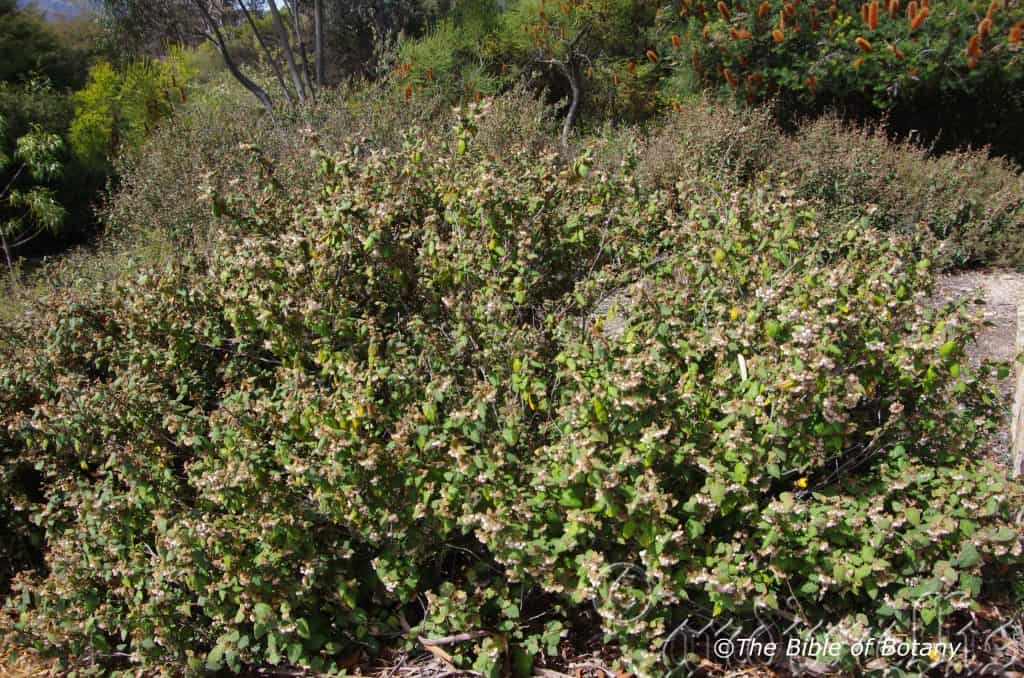
National Botanic Gardens ACT
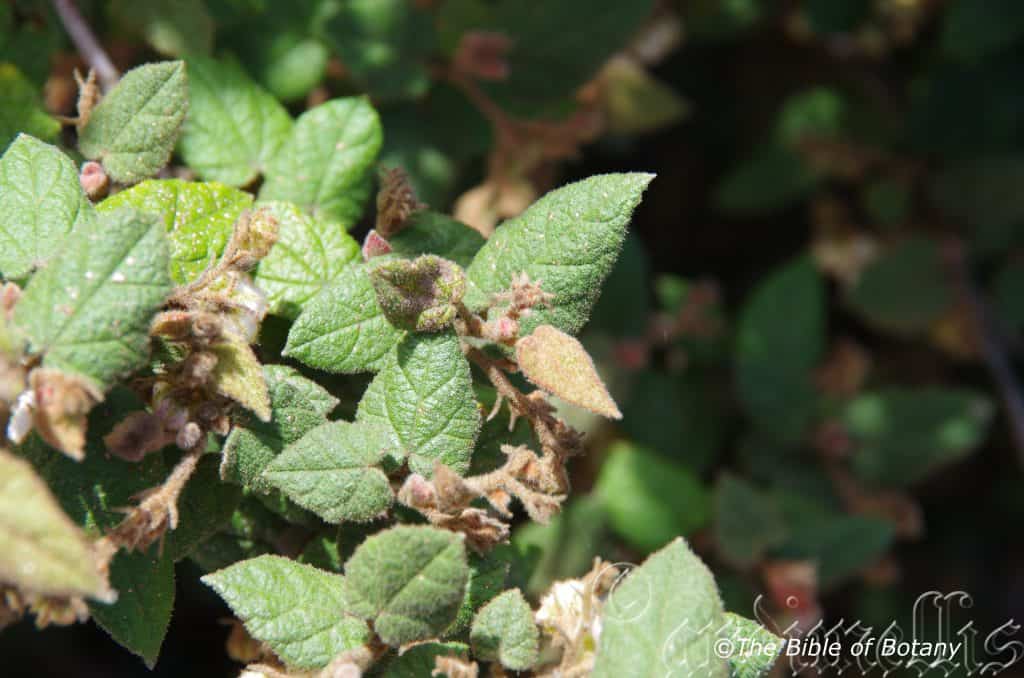
National Botanic Gardens ACT
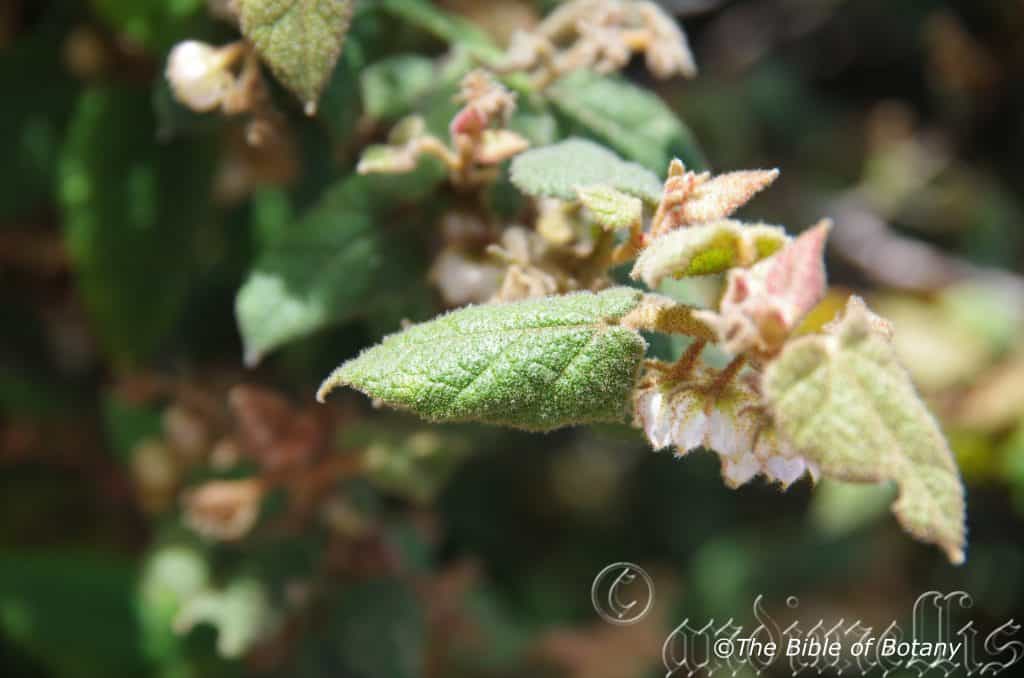
National Botanic Gardens ACT
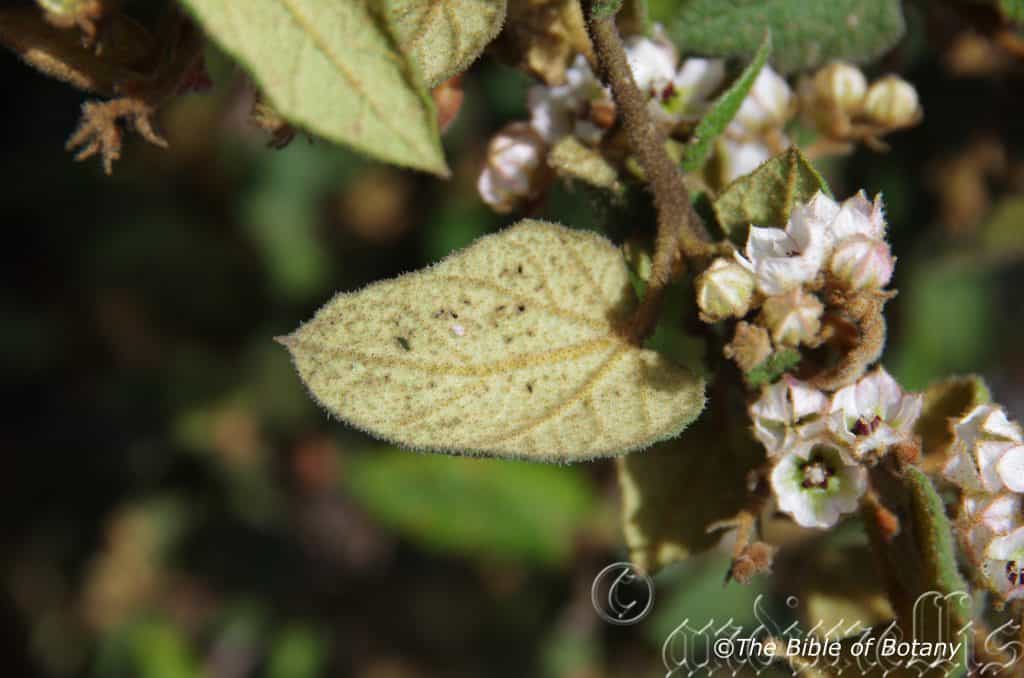
National Botanic Gardens ACT
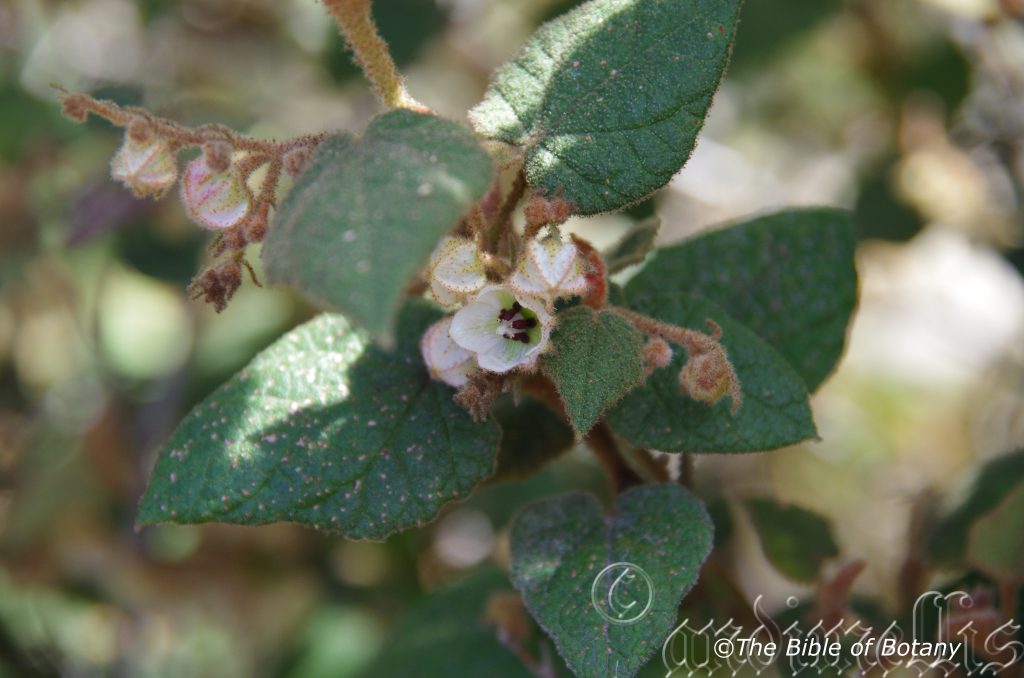
National Botanic Gardens ACT
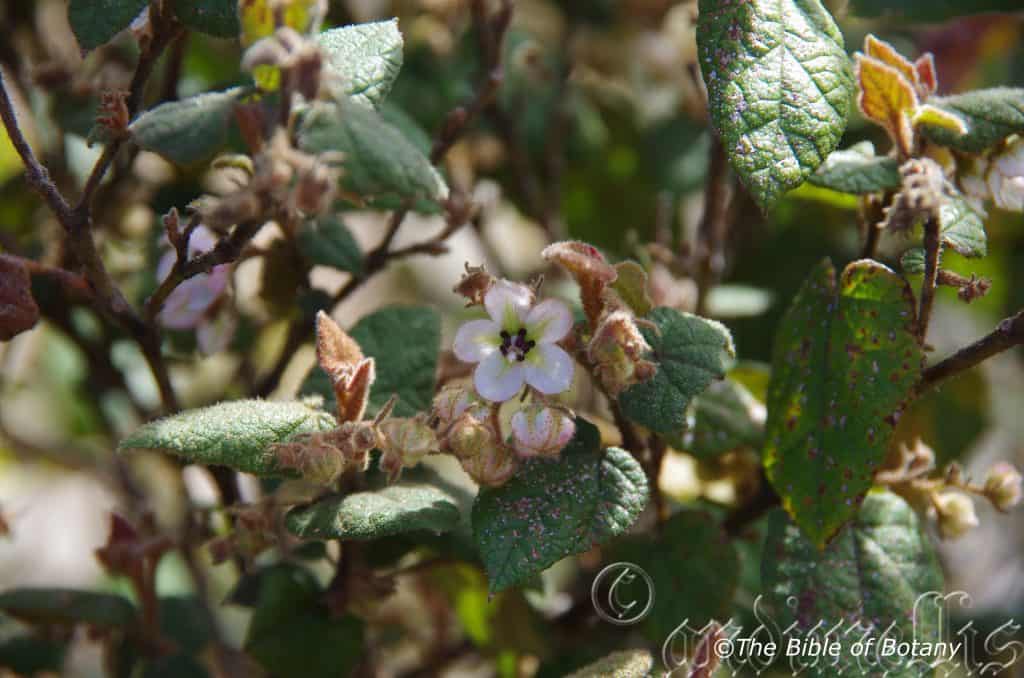
National Botanic Gardens ACT
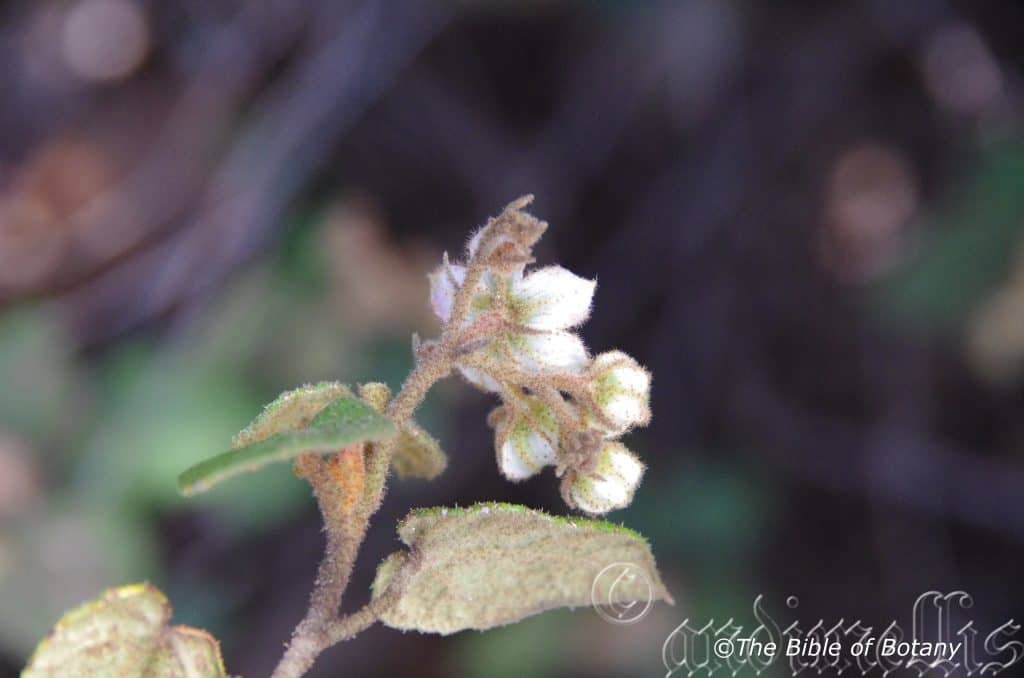
National Botanic Gardens ACT

National Botanic Gardens ACT
Lasiopetalum schulzenii
Classification:
Unranked: Eudicots
Unranked: Rosids
Order: Malvales
Family: Malvaceae
Genus: From Lasios, which is Ancient Greek for soft and woolly and Petánnumi, which is Ancient Greek for to spread out or later Pétalon/Pétalos, which is Ancient Greek for thin metal leaf. It refers to specialized usually coloured leaves, which surround the ovaries and aid in the attraction of pollinators. It refers to petals which are covered in soft, woolly hairs.
Specie: Is named in honour of Ludwig Wilhelm Schulzen who was a Botanist in southern Australia and collector for Ferdinand von Mueller.
Sub specie:
Common Name: Schulzenii’s Velvet Bush.
Distribution:
Lasiopetalum schulzenii is found east from Port Lincoln in southern South Australia to Otway southern Victoria. It is mainly found along the coastal strip.
https://avh.ala.org.au/occurrences/search?taxa=Lasiopetalum+schulzenii#tab_mapView
Habitat Aspect Climate:
Lasiopetalum schulzenii prefers light dappled shade but will grow in full sun. It grows in semi open forests, semi open woodlands and semi open drier heaths on coastal back dunes and headlands. The altitude ranges from 50 meter ASL to 1650 meters ASL.
The temperatures range from minus 2 degrees in August to 40 degrees in January.
The rainfall ranges from lows of 450mm to an average of 650mm.
Soil Requirements:
Lasiopetalum schulzenii prefers to grow on better sands, sandy loams, and light fatty sandy clays. The soils are usually derived from decomposed limestone or accumulated beach sands. The soils pH ranges from 7pH to 8pH. It does not tolerate waterlogged soils. Non saline soils to moderately saline soils are tolerated as are salt laden winds.
Height & Spread:
Wild Plants: 1.5m to 2m by 1.5m to 2m.
Characteristics: Lasiopetalum schulzenii branches are reddish–brown dull and are glabrous to densely covered in white tomentose and hirsute hairs and white and fawn stellate hairs. The juvenile stems are creamy-green dull and are densely covered in white and rusty hirsute hairs and white, stellate hairs.
Lasiopetalum schulzenii’s alternate, cordate leaves measure 30mm to 70mm in length by 20mm to 50mm in width. The terete petiole is are densely covered in white tomentose and hirsute hairs and white and fawn stellate hairs and measures 4mm to 10mm in length. The bases are cordate while the apexes are acute. The discolourous laminas are mid to mid blue-green and are densely covered in white tomentose and hirsute hairs and white and fawn stellate hairs becoming sparsely covered on the upper laminas, while the lower laminas are usually whitish and are densely covered in white tomentose and hirsute hairs and white and fawn stellate hairs. The laminas curve downwards from the mid vein to the margins and on the apical half to the apex. The margins are entire and at times are slightly undulating. The mid vein and main lateral veins are strongly prominent on the lower lamina and are impressed on the upper laminas.
The inflorescences of Lasiopetalum schulzenii are short tightly packed racemes born from the leaf axils with 5 to 12 individual flowers. The entire inflorescence sparsely covered in rusty to fawn hirsute stellate hairs. The peduncles and pedicels are densely covered in white and rusty hirsute and hirsute and tomentose hairs and rusty-brown stellate hairs. The raceme measures 40mm to 70mm in length, while the pedicels measure 2mm to 5mm in length.
The 1,2 or 3 linear bracteoles measure 2mm to 5mm in length. The calyx segments are moderately covered in rusty-fawn stellate hairs externally and are white and glabrous internally and measure 6mm to 10mm in length. The deep redddis-brown petals measure 1mm in length. The marron to reddish brown anthers split longitudinally, are dorsifixed and measure 1.5mm in length. The erect, white style is densely covered in white hirsute or tomentose hairs. The flowers appear from September to December but the odd flower will continue through the warmer months of summer and autumn.
The capsule are densely covered in fawn or white hirsute and tomentose hairs and measure 3mm to 5mm in diameter.
Wildlife:
Lasiopetalum schulzenii’s wildlife is unknown to the author.
Cultivation:
Lasiopetalum schulzenii is a beautiful neat small shrub that is suitable for small, medium and large sunny or partly shaded gardens close to the coast in tropical, subtropical or semi-arid zones especially where there are better quality loams with plenty of leaf litter. As garden subjects it grows from 0.8 meters to 1.8 meters in height by 0.8 meters to 2 meters in diameter. It is fast growing and are cold tolerant to temperatures as low as minus 3 degrees once established.
It is best planted in small clusters with more showy small shrubs either side so it will gain plenty of attention outside the flowering season as the flowers are not spectacular in their own right but are unusual.
It can be used very successfully in sea side gardens as an under story shrub below plants like Banksia integrifolia, Brachychiton discolour or Agonis flexuosa for a formal look or Leptospermum laevigatum where a windswept look is wanted. Plant it at 1.5 meter to 3 meter centers depending on the type of scene being created but give them space to develop fully and without being overcrowded. The flowers are especially different and pleasing to the eye and flower over a long period.
It is great in larger rockeries where it can be successfully used as a fill in plant. Here it can be planted in small groups of 2 or 3 as a standalone plant to break a continuous barrier of green. If it is surrounded by shorter plants with fine foliages, will make its foliage will still dominate at the center giving strength and breadth to the bed especially when it is in flower. Think of the flowers when considering companion plants as they can easily be lost amongst strong colours and large leaves especially if the other plants flower at the same time.
Propagation:
Seeds: Lasiopetalum schulzenii seeds can be sown directly into a seed raising mix. Cover them with 5mm to 6mm of fine weed free mulch and keep moist. Place the tray in a warm semi shaded position preferably beneath 30mm shade cloth. When the seedlings are 20mm to 30mm tall, prick them out and plant them into 50mm native tubes using a good organic mix.
Once the seedlings reach 100mm to 150mm in height they can be planted out into their permanent position.
Fertilize using Seaweed, fish emulsion or a half strength solution of organic chicken pellets soaked in water on an alternate basis. Fertilize every month.
Cuttings:
Use 100mm to 130mm long half ripened material when growing from cuttings from the present season’s growth. Take them in warmer months of the year. Remove half the leaves from the bottom section being careful not to tear the bark. Take a 10mm slice off the bark from the bottom of the cutting on one side.
1 Prepare the cutting mix by adding one third sharp clean river sand, one third peat and one third perlite. These ingredients are sterilize,
2 Select good material from non diseased plants,
3 Select semi green stems for cuttings. Look for a stem with two or three nodes,
4 Place the cutting on a flat, hard surface, and make a clean cut down one side of the cutting at the base for 10mm with a sharp sterile knife or razor blade. – This scarification of the node will increase the chances of roots emerging from this spot. Now remove all but one or two the leaves, leaving the apex leaves in tact. If the leaves are very large in proportion to the stem, cut off the apical halves.
5 Fill a saucer with water, and place a little medium strength rooting hormone into another container like a milk bottle top. Dip the node end of the cutting into the water and then into the rooting hormone. Tap off any excess hormone,
6 Use a small dipple stick or old pencil to poke a hole into the soilless potting mix. Ensure the hole is slightly larger than the stem diameter and be careful not to wipe the rooting hormone off the cuttings base, place the cuttings in a pattern ensuring the cuttings are not touching each other,
7 I like to place the pots in Plastic bags to help maintain temperature and moisture. Place in a semi shaded place like under 50mm shade cloth.
8 When the cuttings have struck, open the bag to allow air circulation for a few days to a week,
9 Once hardened off remove the cuttings from the bag and allow to further hardening for a few more days,
10 Transplant into a good potting mix to grow on.
Fertilize using seaweed, fish emulsion or organic chicken pellets soaked in water on an alternate basis. Fertilize every two months until the plants are established then twice annually in early September or March to maintain health, vitality and better flowering.
Further Comments from Readers:
Hi reader, it seems you use The Bible of Botany a lot. That’s great as we have great pleasure in bringing it to you! It’s a little awkward for us to ask, but our first aim is to purchase land approximately 1,600 hectares to link several parcels of N.P. into one at The Pinnacles NSW Australia, but we need your help. We’re not salespeople. We’re amateur botanists who have dedicated over 30 years to saving the environment in a practical way. We depend on donations to reach our goal. If you donate just $5, the price of your coffee this Sunday, We can help to keep the planet alive in a real way and continue to bring you regular updates and features on Australian plants all in one Botanical Bible. Any support is greatly appreciated. Thank you.
\In the spirit of reconciliation we acknowledge the Bundjalung, Gumbaynggirr and Yaegl and all aboriginal nations throughout Australia and their connections to land, sea and community. We pay our respect to their Elders past, present and future for the pleasures we have gained.
Lastreopsis acuminata
Classification:
Unranked: Pteridophyta
Class: Pteridospida
Family: Dryopteridaceae
Genus: Is named in honour of Charles Jean Louis Delastre; 1792-1859, who was a French Botanical author and Opsis, which is Ancient Greek for having a liking to. It refers to ferns, which resemble of the European Lastrea genus.
Specie: From Acūmināta, which is Latin for being contracted or concave on the sides before protracting to a sharp point. It refers to apexes on the leaves or phyllodes, which have short sharp points.
Sub specie:
Common Name: Creeping Shield Fern or Glossy Shield Fern or Shiny Shield Fern.
Distribution:
Lastreopsis acuminate is found south from Boonah and the Macpherson Ranges in far south east Queensland to near Mount Gambier in south eastern South Australia. It is mainly found on and east of the Great Dividing Range.
In Tasmania it is found on King Island, the Flinders Island group and in northern, western and eastern Tasmania.
There are 2 isolated populations one is quite extensive from one end of the Carnarvon Gorge National Park to the other and the second is at White cliffs in central western New South Wales. The latter has been found growing on the walls of old mine shafts in the district.
https://avh.ala.org.au/occurrences/search?taxa=Lastreopsis+acuminata#tab_mapView
Habitat Aspect Climate:
Lastreopsis acuminate prefers medium shade to deep shaded areas of moisture retentive soils in mountain rainforests, moist gallery forests or wet sclerophyll forests. It grows in cool moist gullies especially along creek banks, near waterfalls and between rock crevices and along road culverts, where moisture is always assured. The altitude ranges from 20 meter ASL to 1200 meters ASL.
The temperatures range from minus 4 degrees in August to 36 degrees in January.
The rainfall ranges from lows of 500mm to 3200mm average per annum. The lower rainfall areas are usually associated with orographic precipitation.
Soil Requirements:
Lastreopsis acuminate prefers better quality sandy loams to medium clays. The soils are usually derived from decomposed granites, sandstones, metamorphic rocks, brown basalt, black basalt, shale or calcareous shales. The soils pH ranges from 5pH to 7.5pH. It does not tolerate waterlogged soils. Non saline soils to moderately saline soils are tolerated.
Height & Spread:
Wild Plants:0.4mm to 0.6mm by 500mm to 1500mm.
Characteristics:
Lastreopsis acuminate has a short slim erect or oblique rhizome covered in large broad shiny deep brown to deep brown-black scales.
The fronds are erect, narrow triangular to broad triangular. The stipes are deep brown near the base turn deep grass-green to deep green at the apexes of the rachises. The rachis is grooved on the upper surface and is covered in short, off white, soft sericeous hairs. The fronds usually measure 400mm to 600mm in length but have been recorded at 900mm in length by 200mm to 400mm in width overall. The bipinnate to tripinnate laminas are grass-green, semi glossy to glossy on the upper laminas while the lower laminas are paler and dull. The pinnae are acuminate and glabrous except along veins and grooved rachis. The upper pinnae without basal lobes and are fused to rachis. The ultimate segments teeth are acute while the axes covered in relatively long, off white, soft, spreading sericeous hairs.
The orbicular sori’s indusium is reniform to almost peltate and glabrous.
Wildlife:
Lastreopsis acuminate’s wildlife is unknown to the author.
Cultivation:
Lastreopsis acuminate is a beautiful medium fern for the bush house, courtyards or in the garden where moist, deeper shade prevails. Lastreopsis acuminate is an excellent fern for along drainage lines and small steep sided gullies.
It is ideal for rainforest gardens once a good shade area has been established or on the southern side of buildings. This is a fern that looks its best when mass planted amongst other rainforest leafy plants like Cordyline terminalis, Cordyline petiolaris or Alocasia brisbaniensis to mention a few.
It often reaches its full potential of 500mm in a little over a year under favourable conditions.
Propagation:
Spores: All ferns that are declared rare, vulnerable or endangered are protected by Federal and State Laws and must not be removed from the wild unless you are a land developer, mining company or main Roads department etc. This includes bulbs, roots, leaves and flowers. No part of any plant can be removed from Federal, State or Local Government land without the prior permission of the authority and this includes the spore.
Most people are put off at the thought of growing ferns from spore. Like all plants that produce their offspring from seed or spore the methods are basically the same. Remember nature has been doing this for millions of years and has been very successful. I have had excellent results growing over 200 different species of Australian ferns so don’t be afraid. Give it a go.
Step 1. Select spore from the fern fronds. Wait until the fern is just starting to release its spore. Rinse the fronds under clean running water and dry. This is to wash off any other spores from rogue ferns that may have settled onto the fronds. (There is nothing worse than having common brake or common soft bracken contaminating a prized tree fern or epiphyte.)
Step 2. Place the dry fronds in a clean brown paper bag and keep them in a cool dark place like the linen closet for about a week to ten days before you are ready to sow the spore. The exception to this rule applies to ferns, which produce green spores. These must be sown immediately that they are released. Todea Barbara is a good example of a fern, which produces green spore.
Step 3. Take a large ice cream container, a small ice cream container and a clean clear plastic bag large enough to seal the large ice cream container and three or four milk bottle tops.
Step 4. Punch or drill 6 to 10 5mm holes in the bottom of the small ice cream container.
Step 5. Wash both containers, tops and plastic bag so that they are very clean and sterile.
Step 6. Use a clean fine seed raising mi. We used 30mm fine sand, 30mm peat and 30mm perlite and 10mm vermiculite. We used crushed basalt, crusher dust and peat in a 50:50 ratio for epiphytes. Moisten the mix enough that water does not run out when the mix is squeezed between the fingers.
Step 7. Place the moisten mix (Enough to half fill the small ice cream container) in the microwave oven with a large glass of water for 7 or 8 minutes, until the water is boiling. Allow them to cool in the oven. You will need the water later so do not tip it out.
Step 8. Take the brown paper bag out of the linen closet. Shake the bag and remove the fronds. You should have a yellow, brown, black or rarely greenish brown or ochre powder or very fine, small round pin head size spore depending on the specie involved.
Step 9. Remove the mixture from the oven once it has cooled and place it in the small ice cream container and level.
Step 10. Sprinkle the spore sparsely over the mixture in the small ice cream container.
Step 11. Place the milk bottle tops in the large ice cream container with the flat surface facing down. Place the small ice cream container in the large ice cream container so that it is sitting on the milk bottle tops.
Step 12. Remove the water from the microwave and pour it into the larger ice cream container so there is 25mm to 30mm of water in the bottom.
Step 13. Place the ice cream containers in the plastic bag and seal. Step 14. Place the contents and bag in a warm shady place preferably 50mm to 70mm shade depending on the specie. Shade houses and some window sills are ideal.
Step 15. The surface should turn green within a week to two weeks. The prothallus will then develop. From the prthalus the first true fronds will appear. Wait until the ferns are 20mm to 35mm in height before you attempt to transplant them. Once they are ready open the bag up slightly and allow the air to flow around the little ferns. Every 3 to 5 days open the bag a little further so the ferns get use to their new environment. Allow them a week to two weeks to harden off before you transplant them following the removal of the plastic bag. Carefully prick them out into 50mm standard squat tubes as you would any seedling.
Do not try to transplant them as single plants as they are still a little delicate still.
Once the smaller ones again reach 50mm to 70mm you may wish to divide the stronger and hardier individual plants into smaller clumps in 100mm squat pots.
Step 16. We fertilized with seaweed, fish emulsion or organic chicken pellets soaked in water on an alternate basis until established. Fertilize every two months for one year even when in the ground.
Further Comments from Readers:
Hi reader, it seems you use The Bible of Botany a lot. That’s great as we have great pleasure in bringing it to you! It’s a little awkward for us to ask, but our first aim is to purchase land approximately 1,600 hectares to link several parcels of N.P. into one at The Pinnacles NSW Australia, but we need your help. We’re not salespeople. We’re amateur botanists who have dedicated over 30 years to saving the environment in a practical way. We depend on donations to reach our goal. If you donate just $5, the price of your coffee this Sunday, We can help to keep the planet alive in a real way and continue to bring you regular updates and features on Australian plants all in one Botanical Bible. Any support is greatly appreciated. Thank you.
In the spirit of reconciliation we acknowledge the Bundjalung, Gumbaynggirr and Yaegl and all aboriginal nations throughout Australia and their connections to land, sea and community. We pay our respect to their Elders past, present and future for the pleasures we have gained.
Lastreopsis decomposita
Classification:
Unranked: Pteridophyta
Class: Pteridospida
Family: Dryopteridaceae
Genus: Is named in honour of Charles Jean Louis Delastre; 1792-1859, who was a French Botanical author and Opsis, which is Ancient Greek for having a liking to. It refers to ferns, which resemble of the European Lastrea genus.
Specie: From De, which is Latin for down and (com which is Latin for to come together) composita, which is Latin for to divide more than once.
Sub specie:
Common Name: Trim Shield Fern.
Distribution:
Lastreopsis decomposita is found south from the Fitzroy River near Rockhampton in central coastal Queensland to Orbost in north eastern Victoria. It is mainly found on and east of the Great Dividing Range.
In Queensland it is found further north in the Barrine National Park, Rockingham’s Bay, Dalrymple Heights and Carnarvon Gorge while in New South Wales it is found west of the Range at Tamworth, south of the Liverpool Range and Orange and in Victoria it is found in the Dandenong Ranges.
It is also found in 2 locations in Tasmania at west Strahan in the west and the upper Derwent River in the east.
https://avh.ala.org.au/occurrences/search?taxa=Lastreopsis+decomposita#tab_mapView
Habitat Aspect Climate:
Lastreopsis decomposita prefers medium shade to deep shaded areas of moisture retentive soils. It grows in mountain rainforests, moist gallery forests or wet sclerophyll forests. It grows in cool moist gullies especially along creek banks, near waterfalls and between rock crevices and along road culverts, where moisture is always assured. It can cover large areas under ideal conditions. The altitude ranges from 100 meter ASL to 1300 meters ASL.
The temperatures range from minus 4 degrees in August to 38 degrees in January.
The rainfall ranges from lows of 500mm to 2800mm average per annum. The lower rainfall areas are associated with orographic precipitation.
Soil Requirements:
Lastreopsis decomposita prefer to grow on better quality loams to medium clays. The soils are usually derived from decomposed granites, sandstones, metamorphic rocks, brown basalt, black basalt, shale or calcareous shales. The soils pH ranges from 5pH to 6pH. It does not tolerate waterlogged soils. Non saline soils to moderately saline soils are tolerated.
Height & Spread:
Wild Plants:200mm to 500mm by 200mm to 500mm.
Characteristics:
Lastreopsis decomposita has a short creeping rhizome covered in large broad shiny brown to deep brown scales.
Lastreopsis decomposita fronds are erect and broad triangular. The stipes are deep brown near the base turn grey-green the apexes of the rachises. The stipes are covered in chocolate-brown, lanceolate scales especially on the basal third. The rachis densely covered in pale brown hirsute hairs. The fronds usually measure 500mm to 900mm in length by 400mm to 700mm in width overall. The tripinnate to 4 pinnate laminas are pale grey-green, semi glossy to glossy on the upper laminas while the lower laminas are paler and dull. The laminas are covered in short white hirsute hairs. The upper pinnae with basal lobes fused to the rachis. The ultimate segments apexes are accuminate to acute while the axes are moderately to densely covered in pale brown to fawn hirsute hairs especially on the young fronds.
The spore and sori when ripe are a pale brown. The caduceous indusium are pale brown.
Wildlife:
Lastreopsis decomposita’s wildlife is unknown to the author.
Cultivation:
Lastreopsis decomposita is a beautiful medium fern for the bush house, courtyards or in the garden where moist, deeper shade prevail. Lastreopsis decomposita is an excellent fern for along drainage lines and small steep sided gullies.
It is ideal for rainforest gardens once a good shade area has been established or on the southern side of buildings. This is a fern that looks its best when mass planted amongst other rainforest leafy plants like Cordyline terminalis, Cordyline petiolaris or Alocasia brisbaniensis to mention a few.
It often reaches its full potential of 500mm in a little over a year under favourable conditions.
Propagation:
Spores: All ferns that are declared rare, vulnerable or endangered are protected by Federal and State Laws and must not be removed from the wild unless you are a land developer, mining company or main Roads department etc. This includes bulbs, roots, leaves and flowers. No part of any plant can be removed from Federal, State or Local Government land without the prior permission of the authority and this includes the spore.
Most people are put off at the thought of growing ferns from spore. Like all plants that produce their offspring from seed or spore the methods are basically the same. Remember nature has been doing this for millions of years and has been very successful. I have had excellent results growing over 200 different species of Australian ferns so don’t be afraid. Give it a go.
Step 1. Select spore from the fern fronds. Wait until the fern is just starting to release its spore. Rinse the fronds under clean running water and dry. This is to wash off any other spores from rogue ferns that may have settled onto the fronds. (There is nothing worse than having common brake or common soft bracken contaminating a prized tree fern or epiphyte.)
Step 2. Place the dry fronds in a clean brown paper bag and keep them in a cool dark place like the linen closet for about a week to ten days before you are ready to sow the spore. The exception to this rule applies to ferns, which produce green spores. These must be sown immediately that they are released. Todea Barbara is a good example of a fern, which produces green spore.
Step 3. Take a large ice cream container, a small ice cream container and a clean clear plastic bag large enough to seal the large ice cream container and three or four milk bottle tops.
Step 4. Punch or drill 6 to 10 5mm holes in the bottom of the small ice cream container.
Step 5. Wash both containers, tops and plastic bag so that they are very clean and sterile.
Step 6. Use a clean fine seed raising mi. We used 30mm fine sand, 30mm peat and 30mm perlite and 10mm vermiculite. We used crushed basalt, crusher dust and peat in a 50:50 ratio for epiphytes. Moisten the mix enough that water does not run out when the mix is squeezed between the fingers.
Step 7. Place the moisten mix (Enough to half fill the small ice cream container) in the microwave oven with a large glass of water for 7 or 8 minutes, until the water is boiling. Allow them to cool in the oven. You will need the water later so do not tip it out.
Step 8. Take the brown paper bag out of the linen closet. Shake the bag and remove the fronds. You should have a yellow, brown, black or rarely greenish brown or ochre powder or very fine, small round pin head size spore depending on the specie involved.
Step 9. Remove the mixture from the oven once it has cooled and place it in the small ice cream container and level.
Step 10. Sprinkle the spore sparsely over the mixture in the small ice cream container.
Step 11. Place the milk bottle tops in the large ice cream container with the flat surface facing down. Place the small ice cream container in the large ice cream container so that it is sitting on the milk bottle tops.
Step 12. Remove the water from the microwave and pour it into the larger ice cream container so there is 25mm to 30mm of water in the bottom.
Step 13. Place the ice cream containers in the plastic bag and seal. Step 14. Place the contents and bag in a warm shady place preferably 50mm to 70mm shade depending on the specie. Shade houses and some window sills are ideal.
Step 15. The surface should turn green within a week to two weeks. The prothallus will then develop. From the prthalus the first true fronds will appear. Wait until the ferns are 20mm to 35mm in height before you attempt to transplant them. Once they are ready open the bag up slightly and allow the air to flow around the little ferns. Every 3 to 5 days open the bag a little further so the ferns get use to their new environment. Allow them a week to two weeks to harden off before you transplant them following the removal of the plastic bag. Carefully prick them out into 50mm standard squat tubes as you would any seedling.
Do not try to transplant them as single plants as they are still a little delicate still.
Once the smaller ones again reach 50mm to 70mm you may wish to divide the stronger and hardier individual plants into smaller clumps in 100mm squat pots.
Step 16. We fertilized with seaweed, fish emulsion or organic chicken pellets soaked in water on an alternate basis until established. Fertilize every two months for one year even when in the ground.
Further Comments from Readers:
Hi reader, it seems you use The Bible of Botany a lot. That’s great as we have great pleasure in bringing it to you! It’s a little awkward for us to ask, but our first aim is to purchase land approximately 1,600 hectares to link several parcels of N.P. into one at The Pinnacles NSW Australia, but we need your help. We’re not salespeople. We’re amateur botanists who have dedicated over 30 years to saving the environment in a practical way. We depend on donations to reach our goal. If you donate just $5, the price of your coffee this Sunday, We can help to keep the planet alive in a real way and continue to bring you regular updates and features on Australian plants all in one Botanical Bible. Any support is greatly appreciated. Thank you.
In the spirit of reconciliation we acknowledge the Bundjalung, Gumbaynggirr and Yaegl and all aboriginal nations throughout Australia and their connections to land, sea and community. We pay our respect to their Elders past, present and future for the pleasures we have gained.
Lastreopsis marginans
Classification:
Unranked: Pteridophyta
Class: Pteridospida
Family: Dryopteridaceae
Genus: Is named in honour of Charles Jean Louis Delastre; 1792-1859, who was a French Botanical author and Opsis, which is Ancient Greek for having a liking to. It refers to ferns, which resemble of the European Lastrea genus.
Specie: From Margin or Margo, which is Latin for a border or edge. It refers to the plant’s habitat, which is growing on the edge of rain forests.
Sub specie:
Common Name: Bordered Shield Fern or Glossy Shield Fern.
Distribution:
Lastreopsis marginans is found south from Kin Kin in south eastern Queensland to Bulli in central coastal New South Wales. It is mainly found on and east of the Great Dividing Range.
https://avh.ala.org.au/occurrences/search?taxa=Lastreopsis+marginans#tab_mapView
Habitat Aspect Climate:
Lastreopsis marginans prefers medium shade to deep shaded areas on moisture retentive soils. It grows in mountain rainforests, moist gallery forests or wet sclerophyll forests. It grows in cool moist gullies especially along creek banks, near waterfalls or between rock crevices and along road culverts, where moisture is always assured. It can cover large areas under ideal conditions. The altitude ranges from 30 meter ASL to 600 meters ASL.
The temperatures range from minus 0 degrees in August to 36 degrees in January.
The rainfall ranges from lows of 800mm to 2000mm average per annum.
Soil Requirements:
Lastreopsis marginans prefer to grow on better quality light gritty clays to medium clays. The soils are usually derived from decomposed black basalt or metamorphic rocks. The soils pH ranges from 5pH to 6pH. It does not tolerate waterlogged soils. Non saline soils to moderately saline soils are tolerated.
Height & Spread:
Wild Plants: 500mm to 900mm by 2000mm to 5000mm.
Characteristics:
Lastreopsis marginans has a short, thick, creeping rhizome which is sparsely covered in deep brown and deep chocolate brown scales.
The fronds are erect and broad triangular. The stipes are deep brown near the base turn grey-green the apexes of the rachises. The stipes are covered in deep brown, short elliptical scales especially on the basal third. The rachises are glabrous. The fronds measure 450mm to 850mm in length by 350mm to 650mm in width overall. The tripinnate to 4 pinnate laminas are deep green to sea-green, glabrous and glossy on the upper laminas while the lower laminas are slightly paler and dull. The upper pinnae with basal lobes fused to the rachis. The ultimate segments apexes are acute teeth while the axes are glabrous.
The sori are orbicular and submarginal while the caduceous indusium is usually black or at times deep chocolate brown. The spore and sori when deep brown to chocolate brown.
Wildlife:
Lastreopsis marginans wildlife is unknown to the author.
Cultivation:
It is a magnificent medium fern for indoor courtyards or in the garden where moist darker conditions prevail. It is an excellent tub plant provided even moisture is maintained.
It is ideal for rainforest gardens once a dense shade has been established or on the southern side of buildings. This is a fern that looks its best when mass planted amongst other rainforest leafy plants like Cordyline terminalis, Cordyline petiolaris or Alocasia brisbaniensis to mention a few.
It often reaches its full potential of 500mm to 700mm in the garden in a little over year when the microclimate is to its liking.
Propagation:
Spores: All ferns that are declared rare, vulnerable or endangered are protected by Federal and State Laws and must not be removed from the wild unless you are a land developer, mining company or main Roads department etc. This includes bulbs, roots, leaves and flowers. No part of any plant can be removed from Federal, State or Local Government land without the prior permission of the authority and this includes the spore.
Most people are put off at the thought of growing ferns from spore. Like all plants that produce their offspring from seed or spore the methods are basically the same. Remember nature has been doing this for millions of years and has been very successful. I have had excellent results growing over 200 different species of Australian ferns so don’t be afraid. Give it a go.
Step 1. Select spore from the fern fronds. Wait until the fern is just starting to release its spore. Rinse the fronds under clean running water and dry. This is to wash off any other spores from rogue ferns that may have settled onto the fronds. (There is nothing worse than having common brake or common soft bracken contaminating a prized tree fern or epiphyte.)
Step 2. Place the dry fronds in a clean brown paper bag and keep them in a cool dark place like the linen closet for about a week to ten days before you are ready to sow the spore. The exception to this rule applies to ferns, which produce green spores. These must be sown immediately that they are released. Todea Barbara is a good example of a fern, which produces green spore.
Step 3. Take a large ice cream container, a small ice cream container and a clean clear plastic bag large enough to seal the large ice cream container and three or four milk bottle tops.
Step 4. Punch or drill 6 to 10 5mm holes in the bottom of the small ice cream container.
Step 5. Wash both containers, tops and plastic bag so that they are very clean and sterile.
Step 6. Use a clean fine seed raising mi. We used 30mm fine sand, 30mm peat and 30mm perlite and 10mm vermiculite. We used crushed basalt, crusher dust and peat in a 50:50 ratio for epiphytes. Moisten the mix enough that water does not run out when the mix is squeezed between the fingers.
Step 7. Place the moisten mix (Enough to half fill the small ice cream container) in the microwave oven with a large glass of water for 7 or 8 minutes, until the water is boiling. Allow them to cool in the oven. You will need the water later so do not tip it out.
Step 8. Take the brown paper bag out of the linen closet. Shake the bag and remove the fronds. You should have a yellow, brown, black or rarely greenish brown or ochre powder or very fine, small round pin head size spore depending on the specie involved.
Step 9. Remove the mixture from the oven once it has cooled and place it in the small ice cream container and level.
Step 10. Sprinkle the spore sparsely over the mixture in the small ice cream container.
Step 11. Place the milk bottle tops in the large ice cream container with the flat surface facing down. Place the small ice cream container in the large ice cream container so that it is sitting on the milk bottle tops.
Step 12. Remove the water from the microwave and pour it into the larger ice cream container so there is 25mm to 30mm of water in the bottom.
Step 13. Place the ice cream containers in the plastic bag and seal. Step 14. Place the contents and bag in a warm shady place preferably 50mm to 70mm shade depending on the specie. Shade houses and some window sills are ideal.
Step 15. The surface should turn green within a week to two weeks. The prothallus will then develop. From the prthalus the first true fronds will appear. Wait until the ferns are 20mm to 35mm in height before you attempt to transplant them. Once they are ready open the bag up slightly and allow the air to flow around the little ferns. Every 3 to 5 days open the bag a little further so the ferns get use to their new environment. Allow them a week to two weeks to harden off before you transplant them following the removal of the plastic bag. Carefully prick them out into 50mm standard squat tubes as you would any seedling.
Do not try to transplant them as single plants as they are still a little delicate still.
Once the smaller ones again reach 50mm to 70mm you may wish to divide the stronger and hardier individual plants into smaller clumps in 100mm squat pots.
Step 16. We fertilized with seaweed, fish emulsion or organic chicken pellets soaked in water on an alternate basis until established. Fertilize every two months for one year even when in the ground.
Further Comments from Readers:
Hi reader, it seems you use The Bible of Botany a lot. That’s great as we have great pleasure in bringing it to you! It’s a little awkward for us to ask, but our first aim is to purchase land approximately 1,600 hectares to link several parcels of N.P. into one at The Pinnacles NSW Australia, but we need your help. We’re not salespeople. We’re amateur botanists who have dedicated over 30 years to saving the environment in a practical way. We depend on donations to reach our goal. If you donate just $5, the price of your coffee this Sunday, We can help to keep the planet alive in a real way and continue to bring you regular updates and features on Australian plants all in one Botanical Bible. Any support is greatly appreciated. Thank you.
In the spirit of reconciliation we acknowledge the Bundjalung, Gumbaynggirr and Yaegl and all aboriginal nations throughout Australia and their connections to land, sea and community. We pay our respect to their Elders past, present and future for the pleasures we have gained.
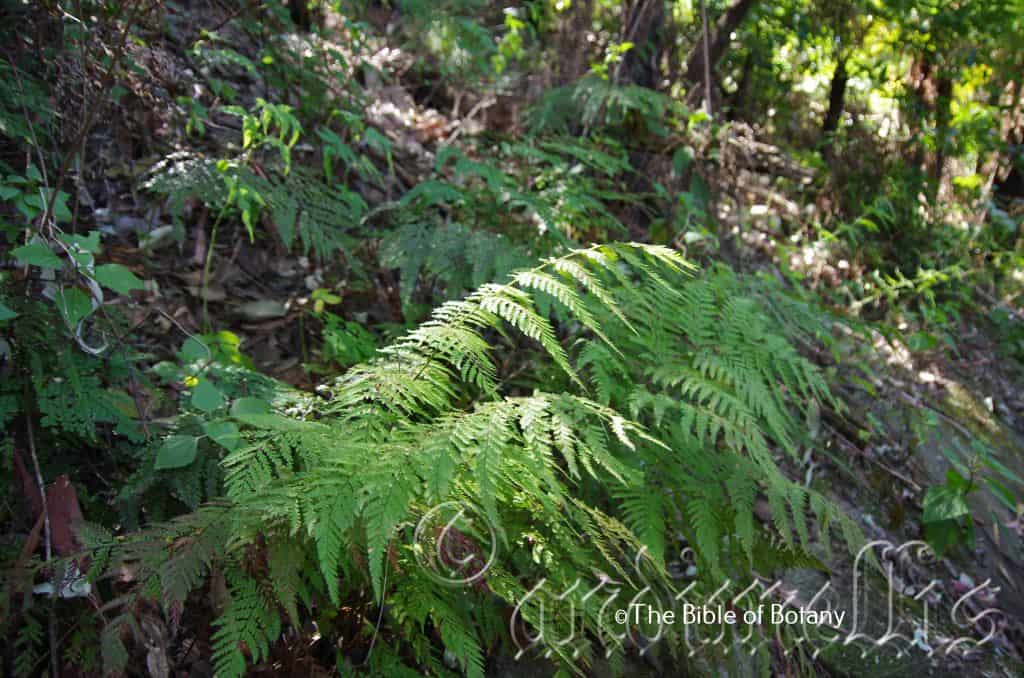
Washpool National Park NSW
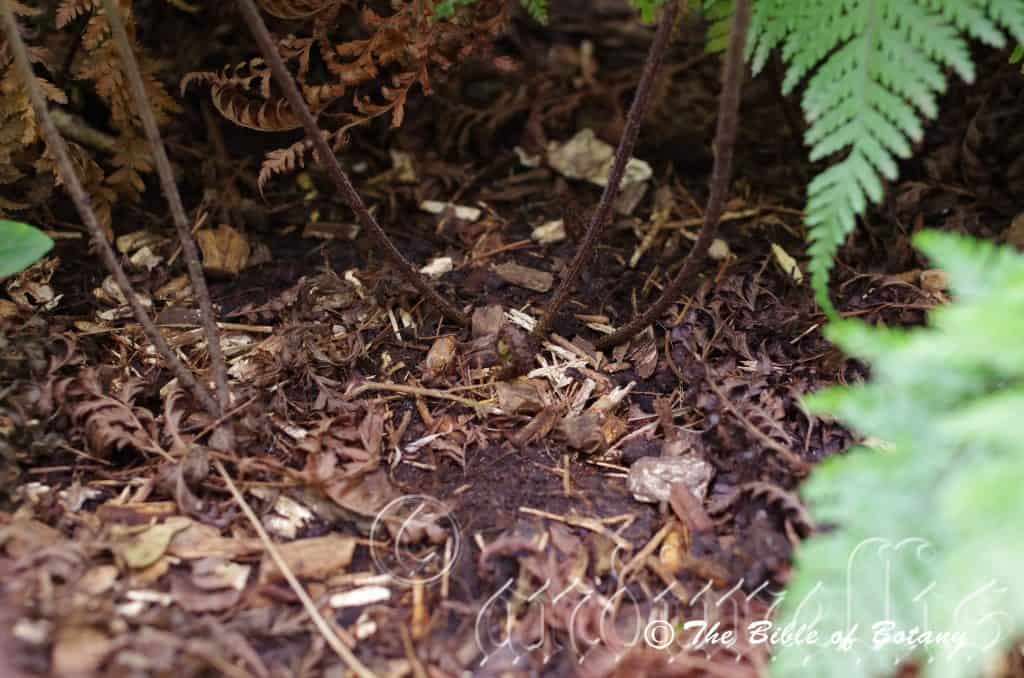
Mount Cootha Botanic Gardens Qld.
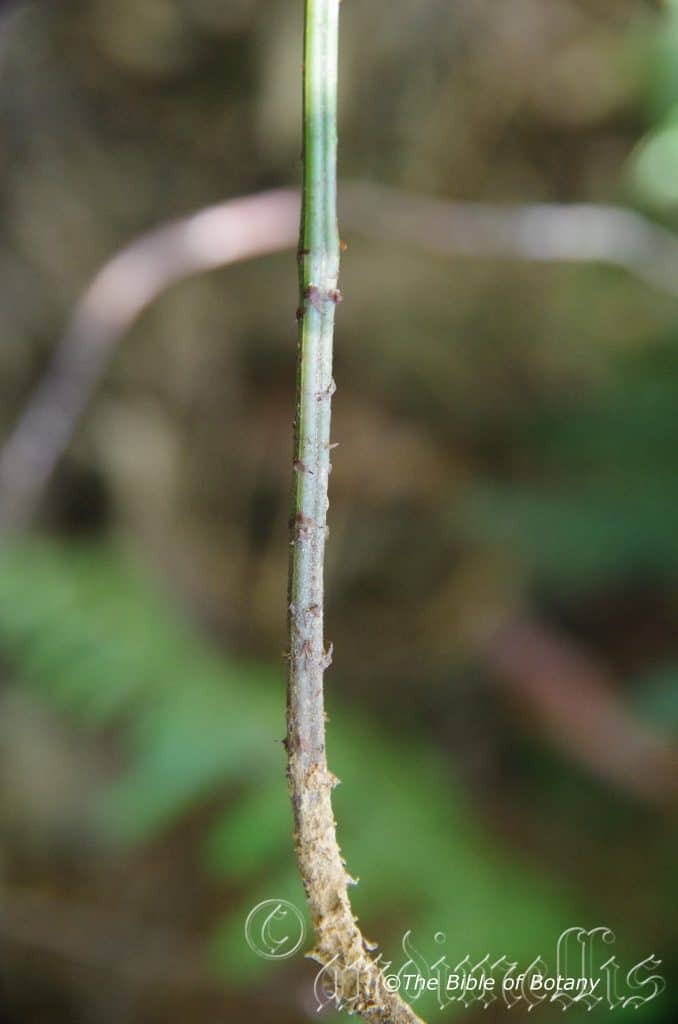
Washpool National Park NSW
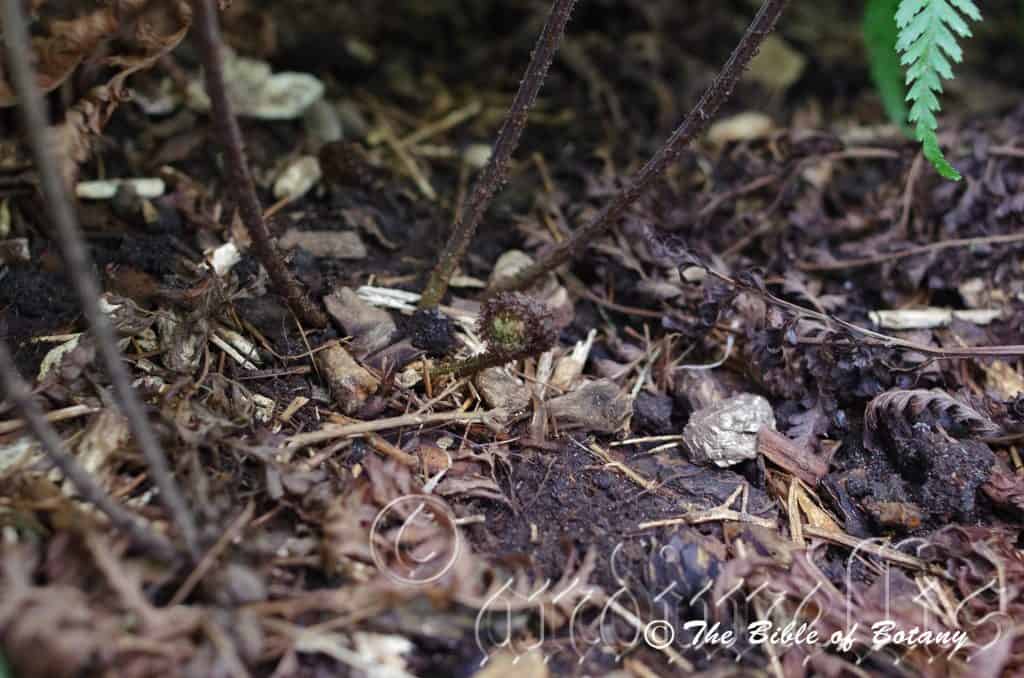
Mount Cootha Botanic Gardens Qld.
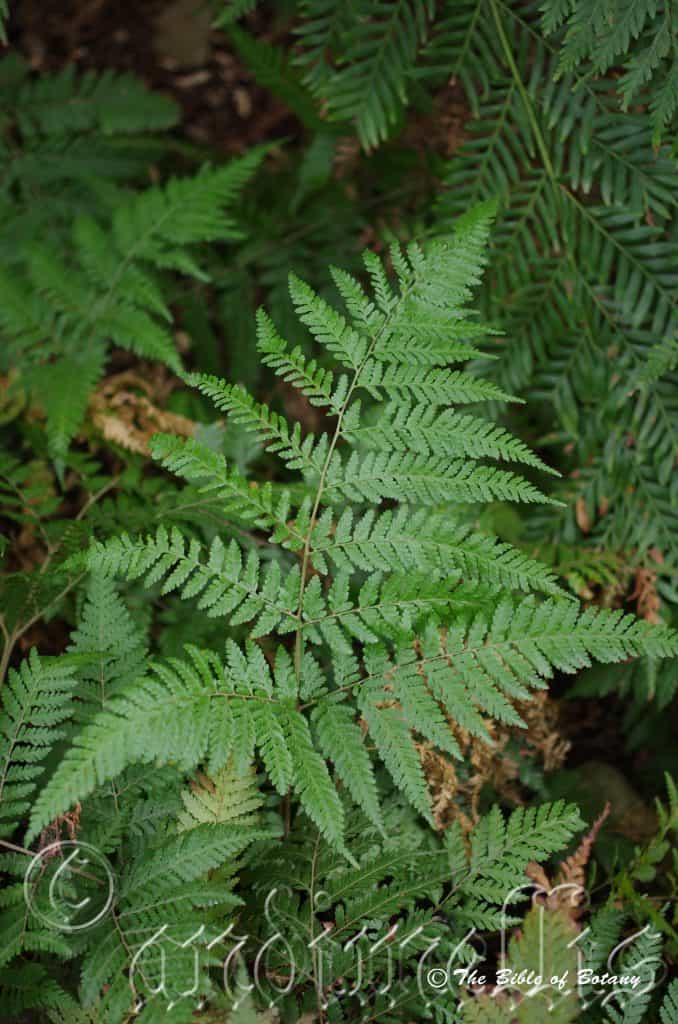
Mount Cootha Botanic Gardens Qld.
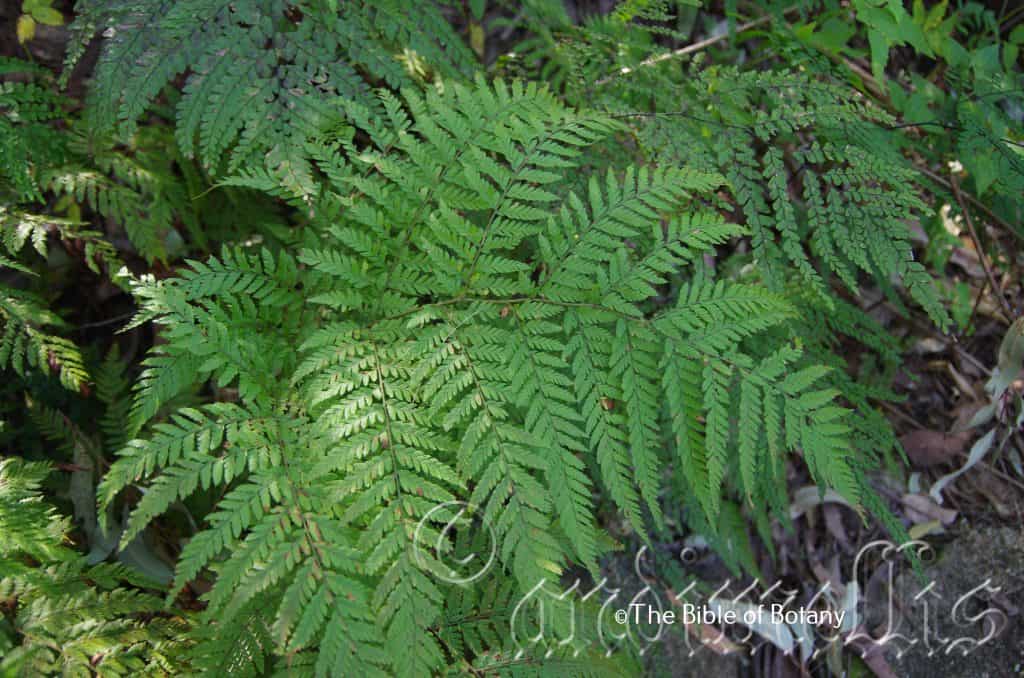
Washpool National Park NSW
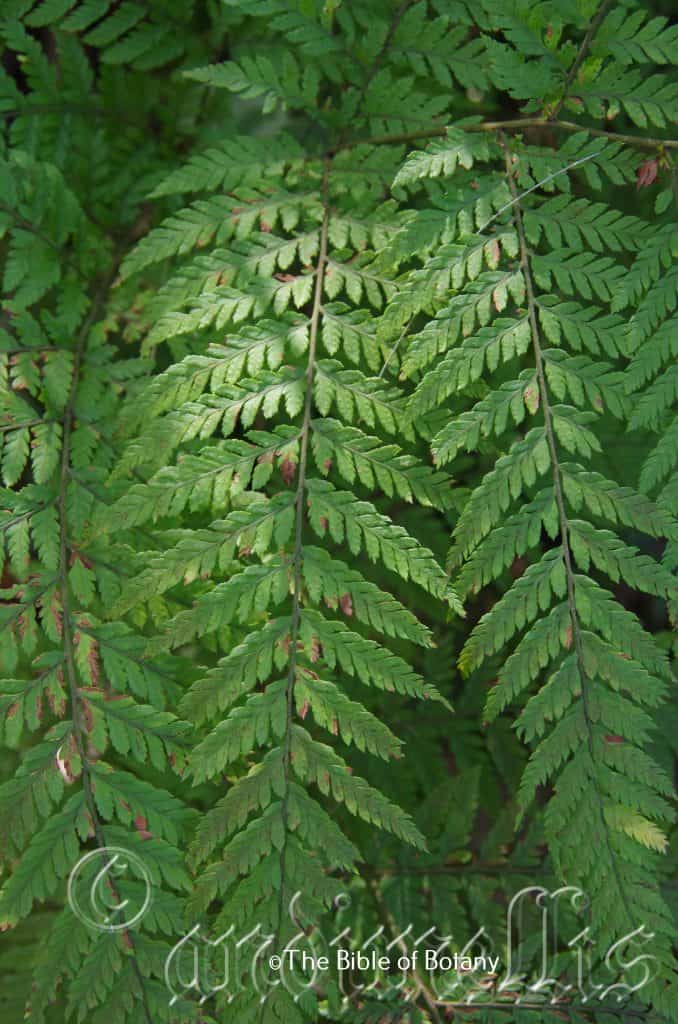
Washpool National Park NSW
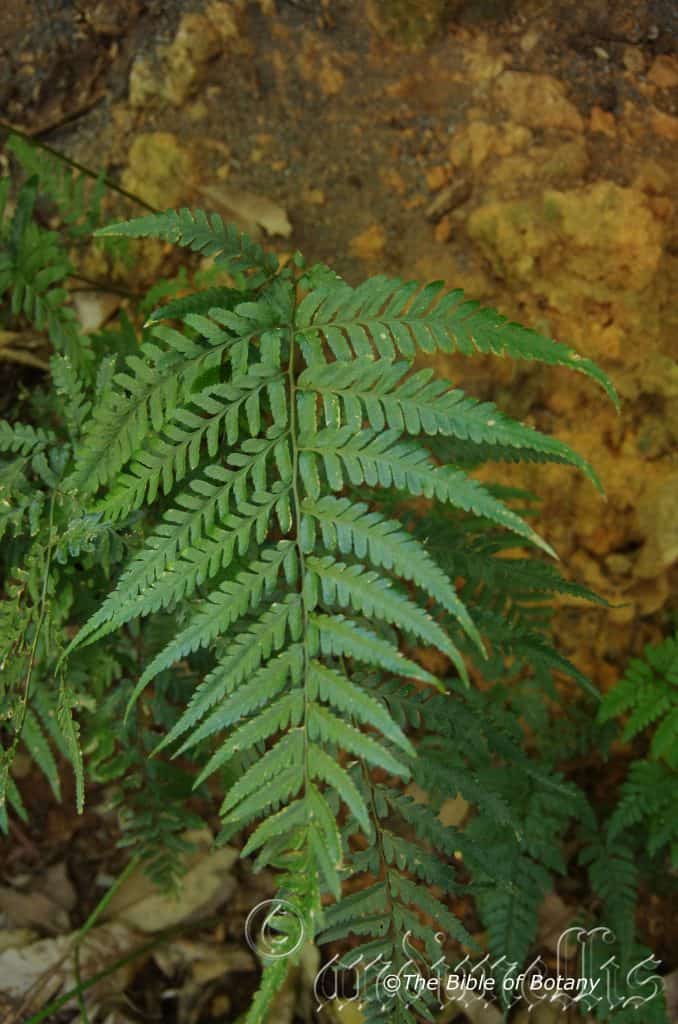
Washpool National Park NSW
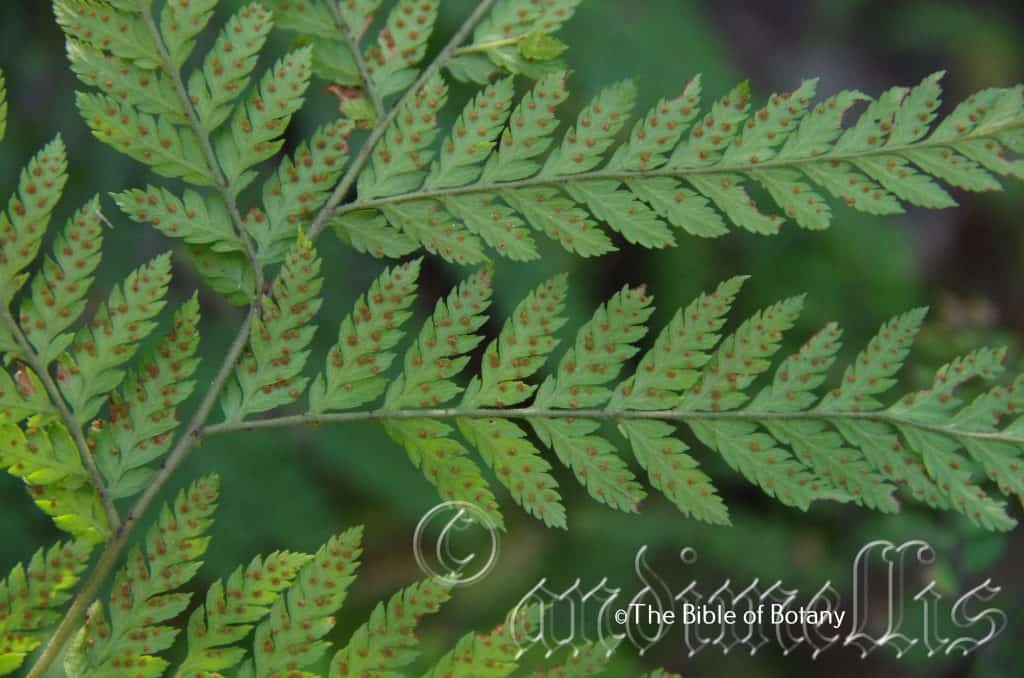
Washpool National Park NSW
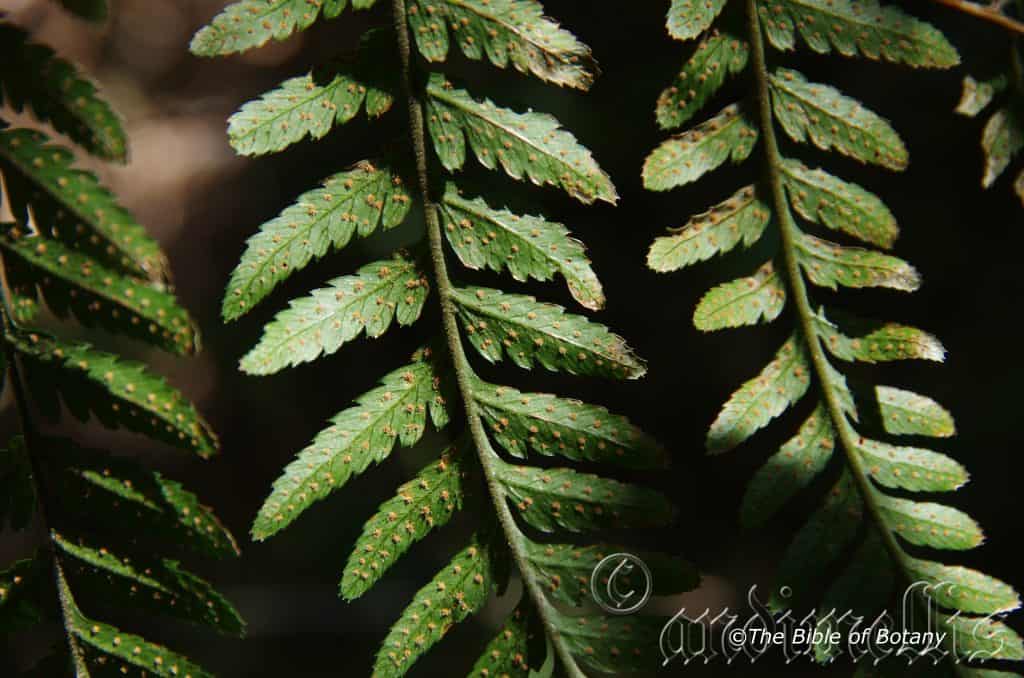
Washpool National Park NSW
Lastreopsis microsora
Classification:
Unranked: Pteridophyta
Class: Pteridospida
Family: Dryopteridaceae
Genus: Is named in honour of Charles Jean Louis Delastre; 1792-1859, who was a French Botanical author and Opsis, which is Ancient Greek for having a liking to. It refers to ferns, which resemble of the European Lastrea genus.
Specie: From Mikrós, which is Ancient Greek for small or very small and Sorium, which is Ancient Greek for the spore case. It refers to ferns which have very small sporangia.
Sub specie:
Common Name: Creeping Shield Fern.
Distribution:
Lastreopsis microsora is found south from Mareeba in far north east Queensland to Cool water Creek on Mount Drummond near Orbost in north eastern Victoria. There is an outlying population in the Grampians in central western Victoria.
https://avh.ala.org.au/occurrences/search?taxa=Lastreopsis+microsora#tab_mapView
Habitat Aspect Climate:
Lastreopsis microsora prefers medium shade to deep shaded areas of moisture retentive soils. It grows in mountain rainforests, moist gallery forests or wet sclerophyll forests. It grows in cool moist gullies especially along creek banks, near waterfalls and between rock crevices, drainage lines and along road culverts, where moisture is always assured. It can cover large areas under ideal conditions smothering adjacent ferns and other rainforest understory plants. The altitude ranges from 50 meter ASL to 1300 meters ASL.
The temperatures range from minus 2 degrees in August to 36 degrees in January.
The rainfall ranges from lows of 850mm to 2800mm average per annum. Lower rainfall areas often receive additional moisture through orographic precipitation.
Soil Requirements:
Lastreopsis microsora prefers better quality light fatty clays to heavy clays. The soils are usually derived from decomposed granites, sandstones, metamorphic rocks, brown basalt, black basalt, shale or calcareous shales. The soils pH ranges from 5pH to 7.5pH. It does not tolerate waterlogged soils. Non saline soils to moderately saline soils are tolerated.
Height & Spread:
Wild Plants: 300mm to 900mm by 1200mm to 1500mm.
Characteristics:
Lastreopsis microsora has a long creeping rhizomes that are densely covered in large deep reddish-brown to reddish-chocolate brown scales. The elliptical scales have an apiculate apex and measure 4mm to 6mm in length by 2mm to 3mm in width.
The fronds are erect and broad triangular. The stipes are deep brown near the base turn grey-green the apexes of the rachises. The terete to hexagonal cross sectional stipes have distinct paler colour, cream or pale green longitudinal stripes and are also covered in deep reddish-brown to reddish-chocolate brown short elliptical scales and pale brown pilose hairs especially on the basal third. The rachises are glabrous. The fronds measure 350mm to 850mm in length by 350mm to 650mm in width overall. The tripinnate to 4 pinnate laminas are pale green and glabrous on the upper laminas while the lower laminas are slightly paler and dull. The upper pinnae have the basal lobes fused to the rachis. The ultimate segments margins and apexes have finely acute teeth while the axes are glabrous. The rachis and veins are usually densely covered in short and long pale brown pilose hairs or at times are glabrous.
The orbicular pale brown indusium are persistent. The spore and sori when ripe are pale brown.
Wildlife:
Lastreopsis microsora’s wildlife is unknown to the author.
Cultivation:
It is a magnificent medium fern for indoor courtyards or in the garden where moist darker conditions prevail. It is an excellent tub plant provided even moisture is maintained.
It is ideal for rainforest gardens once a dense shade has been established or on the southern side of buildings. This is a fern that looks its best when mass planted amongst other rainforest leafy plants like Cordyline terminalis, Cordyline petiolaris or Alocasia brisbaniensis to mention a few.
It often reaches its full potential of 500mm to 700mm in the garden in a little over year when the microclimate is to its liking.
Propagation:
Spores: All ferns that are declared rare, vulnerable or endangered are protected by Federal and State Laws and must not be removed from the wild unless you are a land developer, mining company or main Roads department etc. This includes bulbs, roots, leaves and flowers. No part of any plant can be removed from Federal, State or Local Government land without the prior permission of the authority and this includes the spore.
Most people are put off at the thought of growing ferns from spore. Like all plants that produce their offspring from seed or spore the methods are basically the same. Remember nature has been doing this for millions of years and has been very successful. I have had excellent results growing over 200 different species of Australian ferns so don’t be afraid. Give it a go.
Step 1. Select spore from the fern fronds. Wait until the fern is just starting to release its spore. Rinse the fronds under clean running water and dry. This is to wash off any other spores from rogue ferns that may have settled onto the fronds. (There is nothing worse than having common brake or common soft bracken contaminating a prized tree fern or epiphyte.)
Step 2. Place the dry fronds in a clean brown paper bag and keep them in a cool dark place like the linen closet for about a week to ten days before you are ready to sow the spore. The exception to this rule applies to ferns, which produce green spores. These must be sown immediately that they are released. Todea Barbara is a good example of a fern, which produces green spore.
Step 3. Take a large ice cream container, a small ice cream container and a clean clear plastic bag large enough to seal the large ice cream container and three or four milk bottle tops.
Step 4. Punch or drill 6 to 10 5mm holes in the bottom of the small ice cream container.
Step 5. Wash both containers, tops and plastic bag so that they are very clean and sterile.
Step 6. Use a clean fine seed raising mi. We used 30mm fine sand, 30mm peat and 30mm perlite and 10mm vermiculite. We used crushed basalt, crusher dust and peat in a 50:50 ratio for epiphytes. Moisten the mix enough that water does not run out when the mix is squeezed between the fingers.
Step 7. Place the moisten mix (Enough to half fill the small ice cream container) in the microwave oven with a large glass of water for 7 or 8 minutes, until the water is boiling. Allow them to cool in the oven. You will need the water later so do not tip it out.
Step 8. Take the brown paper bag out of the linen closet. Shake the bag and remove the fronds. You should have a yellow, brown, black or rarely greenish brown or ochre powder or very fine, small round pin head size spore depending on the specie involved.
Step 9. Remove the mixture from the oven once it has cooled and place it in the small ice cream container and level.
Step 10. Sprinkle the spore sparsely over the mixture in the small ice cream container.
Step 11. Place the milk bottle tops in the large ice cream container with the flat surface facing down. Place the small ice cream container in the large ice cream container so that it is sitting on the milk bottle tops.
Step 12. Remove the water from the microwave and pour it into the larger ice cream container so there is 25mm to 30mm of water in the bottom.
Step 13. Place the ice cream containers in the plastic bag and seal. Step 14. Place the contents and bag in a warm shady place preferably 50mm to 70mm shade depending on the specie. Shade houses and some window sills are ideal.
Step 15. The surface should turn green within a week to two weeks. The prothallus will then develop. From the prthalus the first true fronds will appear. Wait until the ferns are 20mm to 35mm in height before you attempt to transplant them. Once they are ready open the bag up slightly and allow the air to flow around the little ferns. Every 3 to 5 days open the bag a little further so the ferns get use to their new environment. Allow them a week to two weeks to harden off before you transplant them following the removal of the plastic bag. Carefully prick them out into 50mm standard squat tubes as you would any seedling.
Do not try to transplant them as single plants as they are still a little delicate still.
Once the smaller ones again reach 50mm to 70mm you may wish to divide the stronger and hardier individual plants into smaller clumps in 100mm squat pots.
Step 16. We fertilized with seaweed, fish emulsion or organic chicken pellets soaked in water on an alternate basis until established. Fertilize every two months for one year even when in the ground.
Fertilize using Seaweed, fish emulsion or a half strength solution of organic chicken pellets soaked in water on an alternate basis. Fertilize every month until the plants are established then once a year in early spring or late autumn for continual health, vitality of the ferns and to maintain deep green glossy foliage.
Further Comments from Readers:
Hi reader, it seems you use The Bible of Botany a lot. That’s great as we have great pleasure in bringing it to you! It’s a little awkward for us to ask, but our first aim is to purchase land approximately 1,600 hectares to link several parcels of N.P. into one at The Pinnacles NSW Australia, but we need your help. We’re not salespeople. We’re amateur botanists who have dedicated over 30 years to saving the environment in a practical way. We depend on donations to reach our goal. If you donate just $5, the price of your coffee this Sunday, We can help to keep the planet alive in a real way and continue to bring you regular updates and features on Australian plants all in one Botanical Bible. Any support is greatly appreciated. Thank you.
In the spirit of reconciliation we acknowledge the Bundjalung, Gumbaynggirr and Yaegl and all aboriginal nations throughout Australia and their connections to land, sea and community. We pay our respect to their Elders past, present and future for the pleasures we have gained.
Lastreopsis munita
Classification:
Unranked: Pteridophyta
Class: Pteridospida
Family: Dryopteridaceae
Genus: Is named in honour of Charles Jean Louis Delastre; 1792-1859, who was a French Botanical author and Opsis, which is Ancient Greek for having a liking to. It refers to ferns, which resemble of the European Lastrea genus.
Specie: From Munitum, which is Latin for armed. It refers to plants, which are strongly protected with spines.
Sub specie:
Common Name: Naked Shield Fern.
Distribution:
Lastreopsis munita is found south from Gympie in south eastern Queensland to the Manning River in central, coastal New South Wales. It is also found further north in Queensland in several disjunct populations including Cairns, Tully to Cardwell, Bowen, Eungella National Park and Miriam Vale. It is found on and east of the Great Dividing Range.
https://avh.ala.org.au/occurrences/search?taxa=Lastreopsis+munita#tab_mapView
Habitat Aspect Climate:
Lastreopsis munita prefers medium shade to deep shaded areas on moisture retentive soils. It grows in mountain rainforests, moist gallery forests or wet sclerophyll forests. It grows in cool moist gullies especially along creek banks, near water falls or between rock crevices, drainage lines and along road culverts, where moisture is always assured. It can cover large areas under ideal conditions smothering adjacent ferns and other rainforest understory plants. The altitude ranges from 50 meter ASL to 950 meters ASL.
The temperatures range from 0 degrees in August to 36 degrees in January.
The rainfall ranges from lows of 780mm to 2800mm average per annum. In areas of low rainfall, usually experience higher orographic precipitation.
Soil Requirements:
Lastreopsis munita prefers better quality light fatty clays to medium clays. The soils are usually derived from decomposed granites, metamorphic rocks, brown basalt or black basalt. The soils pH ranges from 5pH to 6pH. It does not tolerate waterlogged soils. Non saline soils to moderately saline soils are tolerated.
Height & Spread:
Wild Plants: 200mm to 500mm by 200mm to 500mm.
Characteristics:
Lastreopsis munita has a medium creeping brown rhizome that is sparsely covered in long deep brown to deep chocolate-brown scales. The ovate to lanceolate scales measure 3mm to 4mm in length by 2mm to 3mm in width.
The fronds are erect and broad triangular. The stipes are deep brown near the base turn grey-green the apexes of the rachises. The terete stipes are sparsely covered in deep reddish-brown to chocolate-brown short ovate to lanceolate scales especially on the basal third and turn abruptly grey-green halfway along the rachises and on the lower half of the peduncles. The fronds measure 400mm to 850mm in length by 250mm to 550mm in width overall. The bipinnate to tripinnate coriaceous laminas are mid green, glossy to very glossy and glabrous on the upper laminas while the lower laminas are paler and dull. The primary pinnae recurve upwards while the basal pinnae lobes are fused to the rachis. The ultimate pinnae’s margins are noticeably thickened with finely acute teeth with distinct aristate tips. The axes are glabrous. The rachis and veins are usually densely covered in short and long pale brown pilose hairs or at times are glabrous.
The sori are orbicular and without an in indusium. The spore and sori when ripe are a rich golden honey colour.
Wildlife:
Lastreopsis munita’s wildlife is unknown to the author.
Cultivation:
Lastreopsis munita is a very beautiful medium size fern for the bush house, courtyards or in the garden where moist, deeper shade prevails. Lastreopsis munita is an excellent fern for along drainage lines and small steep sided gullies.
It is ideal for rainforest gardens once a dense shade has been established or on the southern side of buildings. This is a fern that looks at its best when mass planted amongst other rainforest leafy vertical plants like Cordyline terminalis, Cordyline petiolaris, Cordyline stricta or Curcuma australasica or horizontal plants like Alocasia brisbaniensis or with a little more attention in a dark spot Remusatia vivipara would look absolutely fantastic.
It often reaches its full potential of 500mm to 700mm in the garden in a little over year when the microclimate is to its liking.
Propagation:
Spores: All ferns that are declared rare, vulnerable or endangered are protected by Federal and State Laws and must not be removed from the wild unless you are a land developer, mining company or main Roads department etc. This includes bulbs, roots, leaves and flowers. No part of any plant can be removed from Federal, State or Local Government land without the prior permission of the authority and this includes the spore.
Most people are put off at the thought of growing ferns from spore. Like all plants that produce their offspring from seed or spore the methods are basically the same. Remember nature has been doing this for millions of years and has been very successful. I have had excellent results growing over 200 different species of Australian ferns so don’t be afraid. Give it a go.
Step 1. Select spore from the fern fronds. Wait until the fern is just starting to release its spore. Rinse the fronds under clean running water and dry. This is to wash off any other spores from rogue ferns that may have settled onto the fronds. (There is nothing worse than having common brake or common soft bracken contaminating a prized tree fern or epiphyte.)
Step 2. Place the dry fronds in a clean brown paper bag and keep them in a cool dark place like the linen closet for about a week to ten days before you are ready to sow the spore. The exception to this rule applies to ferns, which produce green spores. These must be sown immediately that they are released. Todea Barbara is a good example of a fern, which produces green spore.
Step 3. Take a large ice cream container, a small ice cream container and a clean clear plastic bag large enough to seal the large ice cream container and three or four milk bottle tops.
Step 4. Punch or drill 6 to 10 5mm holes in the bottom of the small ice cream container.
Step 5. Wash both containers, tops and plastic bag so that they are very clean and sterile.
Step 6. Use a clean fine seed raising mi. We used 30mm fine sand, 30mm peat and 30mm perlite and 10mm vermiculite. We used crushed basalt, crusher dust and peat in a 50:50 ratio for epiphytes. Moisten the mix enough that water does not run out when the mix is squeezed between the fingers.
Step 7. Place the moisten mix (Enough to half fill the small ice cream container) in the microwave oven with a large glass of water for 7 or 8 minutes, until the water is boiling. Allow them to cool in the oven. You will need the water later so do not tip it out.
Step 8. Take the brown paper bag out of the linen closet. Shake the bag and remove the fronds. You should have a yellow, brown, black or rarely greenish brown or ochre powder or very fine, small round pin head size spore depending on the specie involved.
Step 9. Remove the mixture from the oven once it has cooled and place it in the small ice cream container and level.
Step 10. Sprinkle the spore sparsely over the mixture in the small ice cream container.
Step 11. Place the milk bottle tops in the large ice cream container with the flat surface facing down. Place the small ice cream container in the large ice cream container so that it is sitting on the milk bottle tops.
Step 12. Remove the water from the microwave and pour it into the larger ice cream container so there is 25mm to 30mm of water in the bottom.
Step 13. Place the ice cream containers in the plastic bag and seal. Step 14. Place the contents and bag in a warm shady place preferably 50mm to 70mm shade depending on the specie. Shade houses and some window sills are ideal.
Step 15. The surface should turn green within a week to two weeks. The prothallus will then develop. From the prothallus the first true fronds will appear. Wait until the ferns are 20mm to 35mm in height before you attempt to transplant them. Once they are ready open the bag up slightly and allow the air to flow around the little ferns. Every 3 to 5 days open the bag a little further so the ferns get use to their new environment. Allow them a week to two weeks to harden off before you transplant them following the removal of the plastic bag. Carefully prick them out into 50mm standard squat tubes as you would any seedling.
Do not try to transplant them as single plants as they are still a little delicate still.
Once the smaller ones again reach 50mm to 70mm you may wish to divide the stronger and hardier individual plants into smaller clumps in 100mm squat pots.
Step 16. We fertilized with seaweed, fish emulsion or organic chicken pellets soaked in water on an alternate basis until established.
Fertilize every two months for one year even when in the ground.
Further Comments from Readers:
Hi reader, it seems you use The Bible of Botany a lot. That’s great as we have great pleasure in bringing it to you! It’s a little awkward for us to ask, but our first aim is to purchase land approximately 1,600 hectares to link several parcels of N.P. into one at The Pinnacles NSW Australia, but we need your help. We’re not salespeople. We’re amateur botanists who have dedicated over 30 years to saving the environment in a practical way. We depend on donations to reach our goal. If you donate just $5, the price of your coffee this Sunday, We can help to keep the planet alive in a real way and continue to bring you regular updates and features on Australian plants all in one Botanical Bible. Any support is greatly appreciated. Thank you.
In the spirit of reconciliation we acknowledge the Bundjalung, Gumbaynggirr and Yaegl and all aboriginal nations throughout Australia and their connections to land, sea and community. We pay our respect to their Elders past, present and future for the pleasures we have gained.
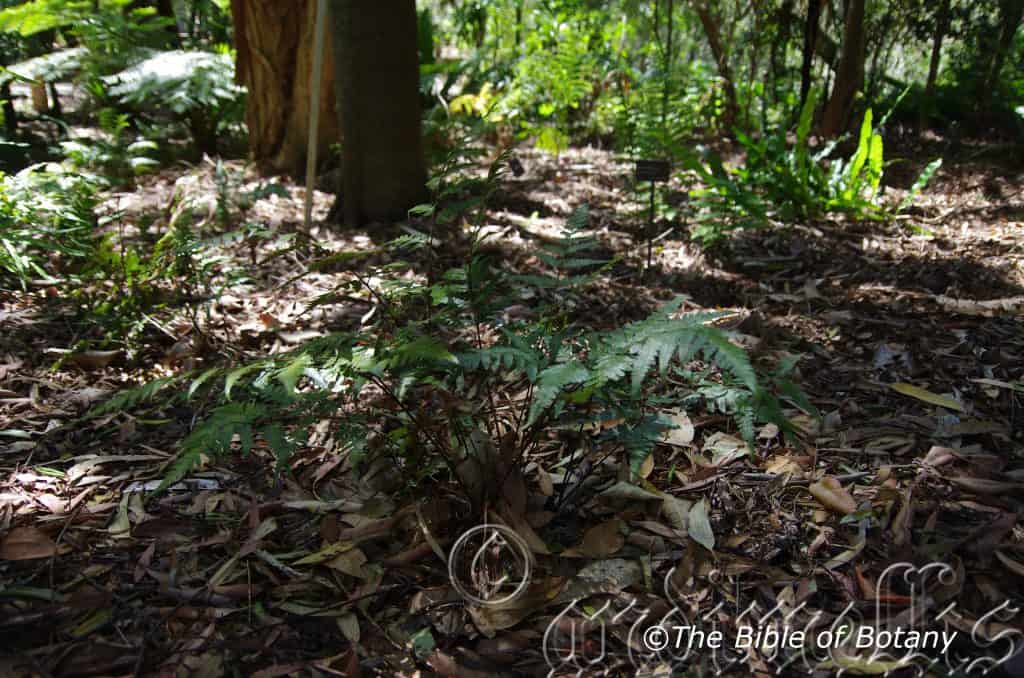
NCBG Coffs Harbour NSW
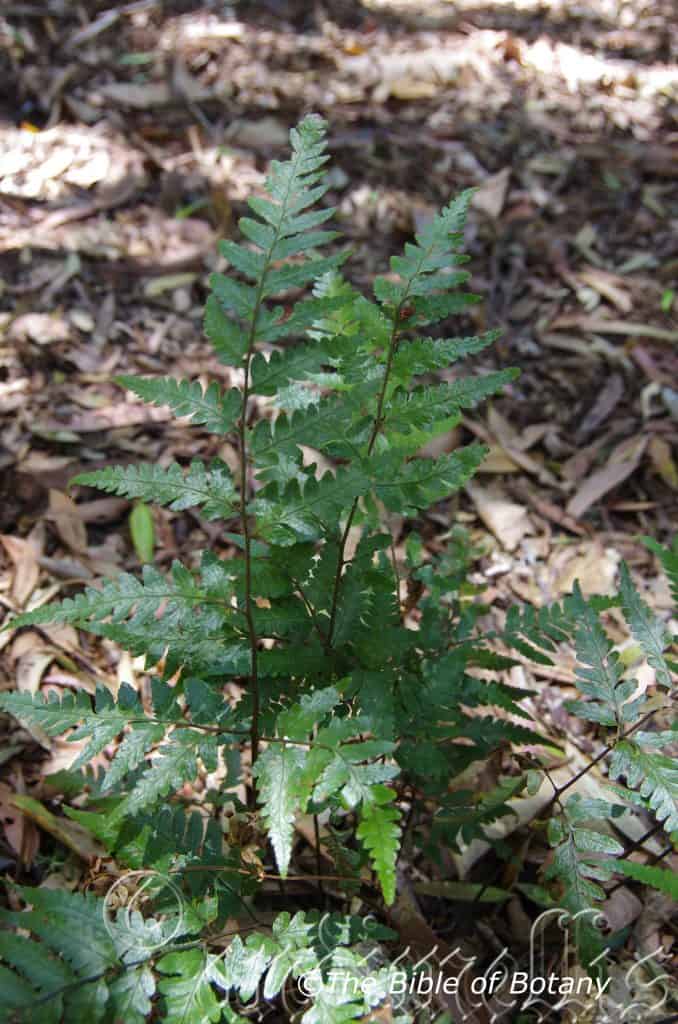
NCBG Coffs Harbour NSW
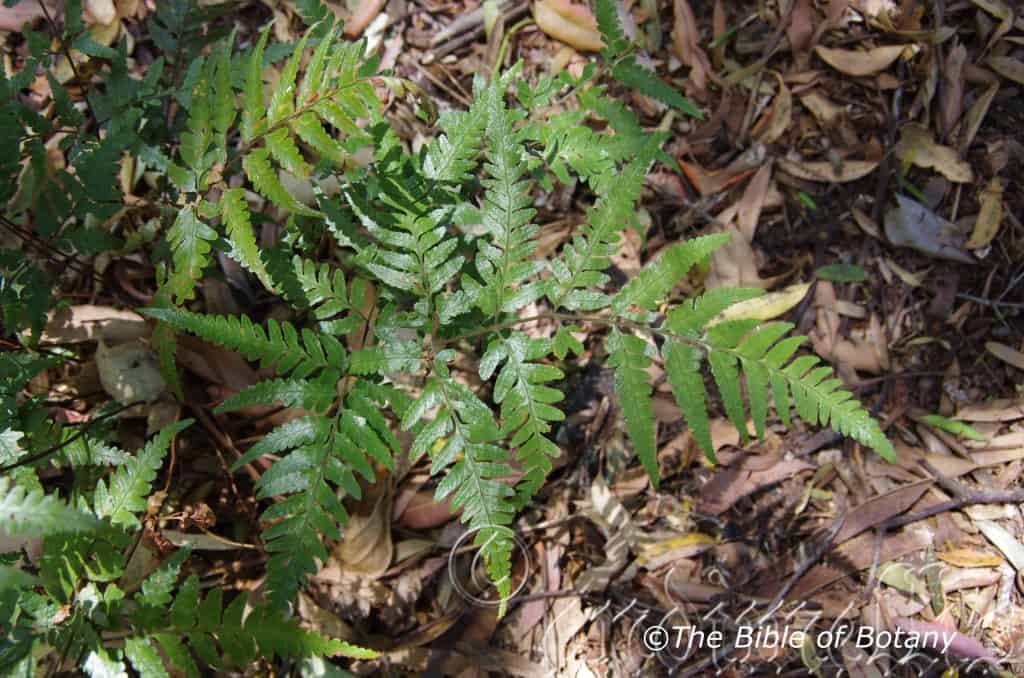
NCBG Coffs Harbour NSW
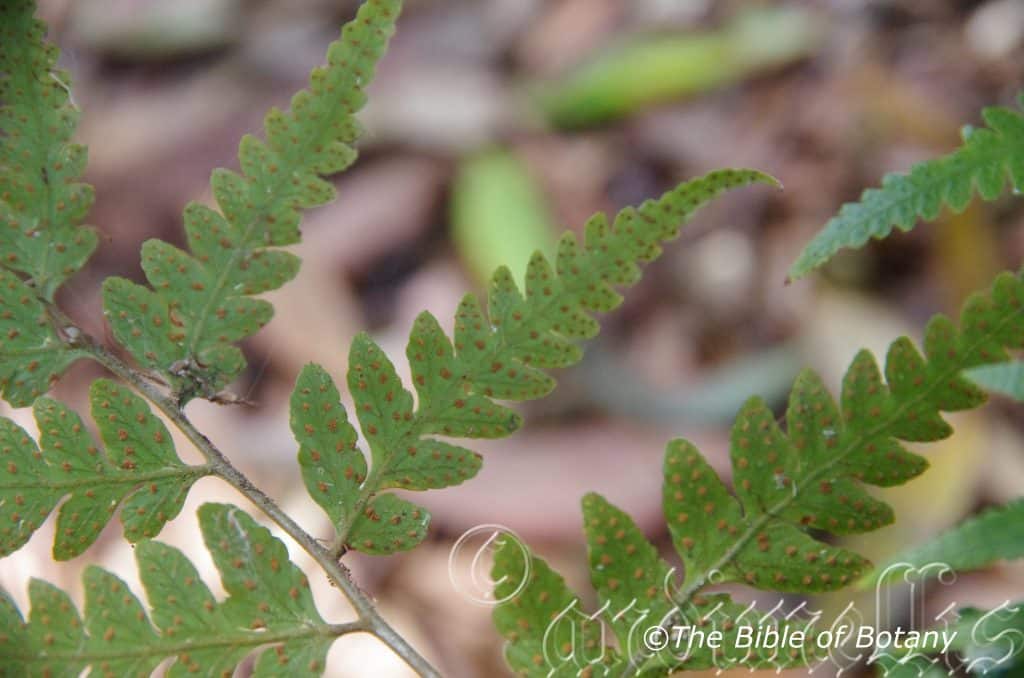
NCBG Coffs Harbour NSW
Lastreopsis rufescens
Classification:
Unranked: Pteridophyta
Class: Pteridospida
Family: Dryopteridaceae
Genus: Is named in honour of Charles Jean Louis Delastre; 1792-1859, who was a French Botanical author and Opsis, which is Ancient Greek for having a liking to. It refers to ferns, which resemble of the European Lastrea genus.
Specie: From Rūfēscēns, which is Latin for reddish. It refers to plants, which have organs that are reddish in colour.
Sub specie:
Common Name:
Distribution:
Lastreopsis rufescens is found south from the Mount Windsor Tableland in far north eastern Queensland to Shoalwater bay in central Coastal Queensland. It is found on and east of the Great Dividing Range to the coast.
https://avh.ala.org.au/occurrences/search?taxa=Lastreopsis+rufescens#tab_mapView
Habitat Aspect Climate:
Lastreopsis rufescens prefers medium shade to deep shaded areas on moisture retentive soils. It grows in mountain rainforests, moist gallery forests or moist rainforests. It grows in cool moist gullies especially along creek banks, near water falls or between rock crevices, drainage lines and along road culverts, where moisture is always assured. It can cover large areas under ideal conditions smothering adjacent ferns and other rainforest understory plants. The altitude ranges from 50 meter ASL to 1000 meters ASL.
The temperatures range from 3 degrees in August to 34 degrees in January.
The rainfall ranges from lows of 1200mm to 3100mm average per annum. Many locations experience orographic precipitation.
Soil Requirements:
Lastreopsis rufescens prefers better quality light fatty clays to medium clays or heavier silts. The soils are usually derived from decomposed granites, metamorphic rocks or accumulated silts. The soils pH ranges from 5pH to 7.5pH. It does not tolerate waterlogged soils. Non saline soils to slightly saline soils are tolerated.
Height & Spread:
Wild Plants: 200mm to 840mm by 1000mm to 2500mm.
Characteristics:
Lastreopsis rufescens has a medium creeping brown rhizome that is moderately to densely covered in black or deep chocolate-brown scales.
The fronds are erect and broad triangular. The terete black to deep brown stipes are sparsely covered in deep reddish-brown. The rachis has a groove along the upper edge that is sparsely covered in short fawn to reddish-brown hairs. The fronds measure 400mm to 850mm in length by 250mm to 550mm in width overall. The bipinnate to tripinnate coriaceous laminas are deep green, glossy to very glossy and glabrous on the upper laminas while the lower laminas are paler and dull. The primary pinnae recurve upwards while the basal pinnae lobes are fused to the rachis. The ultimate pinnae’s margins are noticeably thickened with finely acute teeth with distinct aristate tips. The axis are glabrous. The rachis and veins are usually densely covered in short and long pale brown pilose hairs or at times are glabrous.
The sori are orbicular and without an in indusium. The spore and sori when ripe are a mid brown colour.
Confusing species:
Lastreopsis rufescens covered in short fawn to brown coziers are purplish-green while the groove on the rachise is sparsely hairs.
Lastreopsis munita coziers are pale green while the groove on the rachise is denuded of hairs.
Wildlife:
Lastreopsis rufescens’ wildlife is unknown to the author.
Cultivation:
Lastreopsis rufescens is a beautiful medium size fern for the bush house, courtyards or in the garden where moist, deeper shade prevails. Lastreopsis rufescens is an excellent fern for along drainage lines and small steep sided gullies where seepage is a problem.
It is ideal for rainforest gardens once shade and a microclimate has been established or on the southern side of buildings. This is a fern that looks at its best when mass planted amongst other rainforest leafy vertical plants like Cordyline terminalis, Cordyline petiolaris, Cordyline stricta or Curcuma australasica or horizontal plants like Alocasia brisbaniensis or with a little more attention in a dark spot with Remusatia vivipara would look absolutely fantastic provided the later can be protected from being overgrown.
It often reaches its full potential of 2 meters in the garden in a little over 2 years when the microclimate is to its liking.
Propagation:
Spores:
All ferns that are declared rare, vulnerable or endangered are protected by Federal and State Laws and must not be removed from the wild unless you are a land developer, mining company or main Roads department etc. This includes bulbs, roots, leaves and flowers. No part of any plant can be removed from Federal, State or Local Government land without the prior permission of the authority and this includes the spore.
Most people are put off at the thought of growing ferns from spore. Like all plants that produce their offspring from seed or spore the methods are basically the same. Remember nature has been doing this for millions of years and has been very successful. I have had excellent results growing over 200 different species of Australian ferns so don’t be afraid. Give it a go.
Step 1. Select spore from the fern fronds. Wait until the fern is just starting to release its spore. Rinse the fronds under clean running water and dry. This is to wash off any other spores from rogue ferns that may have settled onto the fronds. (There is nothing worse than having common brake or common soft bracken contaminating a prized tree fern or epiphyte.)
Step 2. Place the dry fronds in a clean brown paper bag and keep them in a cool dark place like the linen closet for about a week to ten days before you are ready to sow the spore. The exception to this rule applies to ferns, which produce green spores. These must be sown immediately that they are released. Todea barbara is a good example of a fern, which produces green spore.
Step 3. Take a large ice cream container, a small ice cream container and a clean clear plastic bag large enough to seal the large ice cream container and three or four milk bottle tops.
Step 4. Punch or drill 6 to 10 5mm holes in the bottom of the small ice cream container.
Step 5. Wash both containers, tops and plastic bag so that they are very clean and sterile.
Step 6. Use a clean fine seed raising mi. We used 30mm fine sand, 30mm peat and 30mm perlite and 10mm vermiculite. We used crushed basalt, crusher dust and peat in a 50:50 ratio for epiphytes. Moisten the mix enough that water does not run out when the mix is squeezed between the fingers.
Step 7. Place the moisten mix (Enough to half fill the small ice cream container) in the microwave oven with a large glass of water for 7 or 8 minutes, until the water is boiling. Allow them to cool in the oven. You will need the water later so do not tip it out.
Step 8. Take the brown paper bag out of the linen closet. Shake the bag and remove the fronds. You should have a yellow, brown, black or rarely greenish brown or ochre powder or very fine, small round pin head size spore depending on the specie involved.
Step 9. Remove the mixture from the oven once it has cooled and place it in the small ice cream container and level.
Step 10. Sprinkle the spore sparsely over the mixture in the small ice cream container.
Step 11. Place the milk bottle tops in the large ice cream container with the flat surface facing down. Place the small ice cream container in the large ice cream container so that it is sitting on the milk bottle tops.
Step 12. Remove the water from the microwave and pour it into the larger ice cream container so there is 25mm to 30mm of water in the bottom.
Step 13. Place the ice cream containers in the plastic bag and seal. Step 14. Place the contents and bag in a warm shady place preferably 50mm to 70mm shade depending on the specie. Shade houses and some window sills are ideal.
Step 15. The surface should turn green within a week to two weeks. The prothallus will then develop. From the prothallus the first true fronds will appear. Wait until the ferns are 20mm to 35mm in height before you attempt to transplant them. Once they are ready open the bag up slightly and allow the air to flow around the little ferns. Every 3 to 5 days open the bag a little further so the ferns get use to their new environment. Allow them a week to two weeks to harden off before you transplant them following the removal of the plastic bag. Carefully prick them out into 50mm standard squat tubes as you would any seedling.
Do not try to transplant them as single plants as they are still a little delicate still.
Once the smaller ones again reach 50mm to 70mm you may wish to divide the stronger and hardier individual plants into smaller clumps in 100mm squat pots.
Step 16. We fertilized with seaweed, fish emulsion or organic chicken pellets soaked in water on an alternate basis until established.
Fertilize every two months for one year even when in the ground.
Further Comments from Readers:
Hi reader, it seems you use The Bible of Botany a lot. That’s great as we have great pleasure in bringing it to you! It’s a little awkward for us to ask, but our first aim is to purchase land approximately 1,600 hectares to link several parcels of N.P. into one at The Pinnacles NSW Australia, but we need your help. We’re not salespeople. We’re amateur botanists who have dedicated over 30 years to saving the environment in a practical way. We depend on donations to reach our goal. If you donate just $5, the price of your coffee this Sunday, We can help to keep the planet alive in a real way and continue to bring you regular updates and features on Australian plants all in one Botanical Bible. Any support is greatly appreciated. Thank you.
In the spirit of reconciliation we acknowledge the Bundjalung, Gumbaynggirr and Yaegl and all aboriginal nations throughout Australia and their connections to land, sea and community. We pay our respect to their Elders past, present and future for the pleasures we have gained.
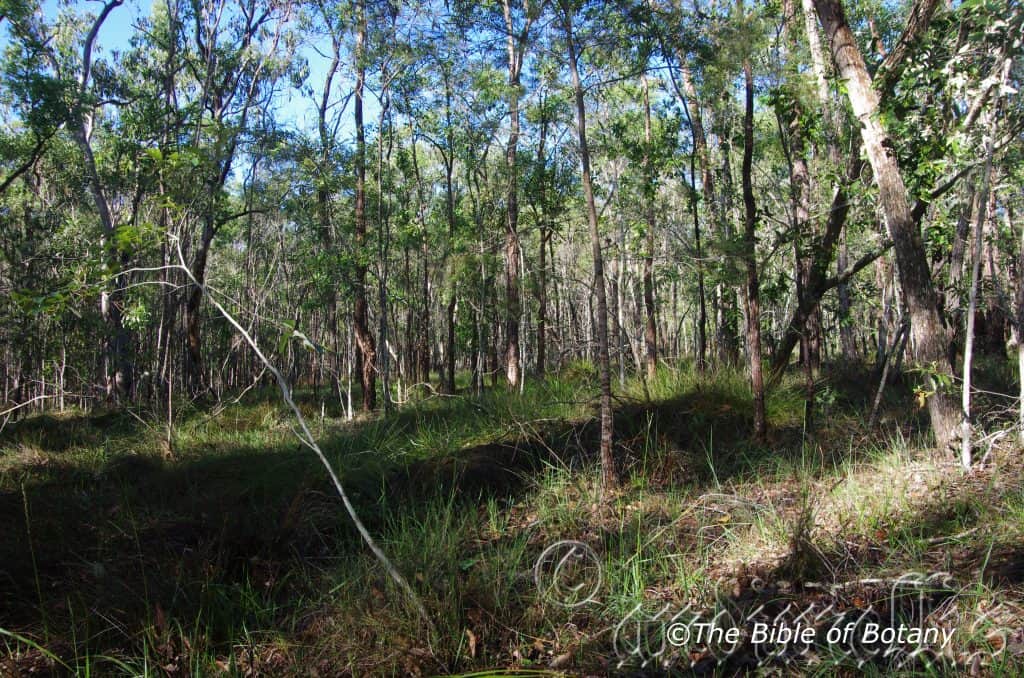
Fortis Creek National Park NSW
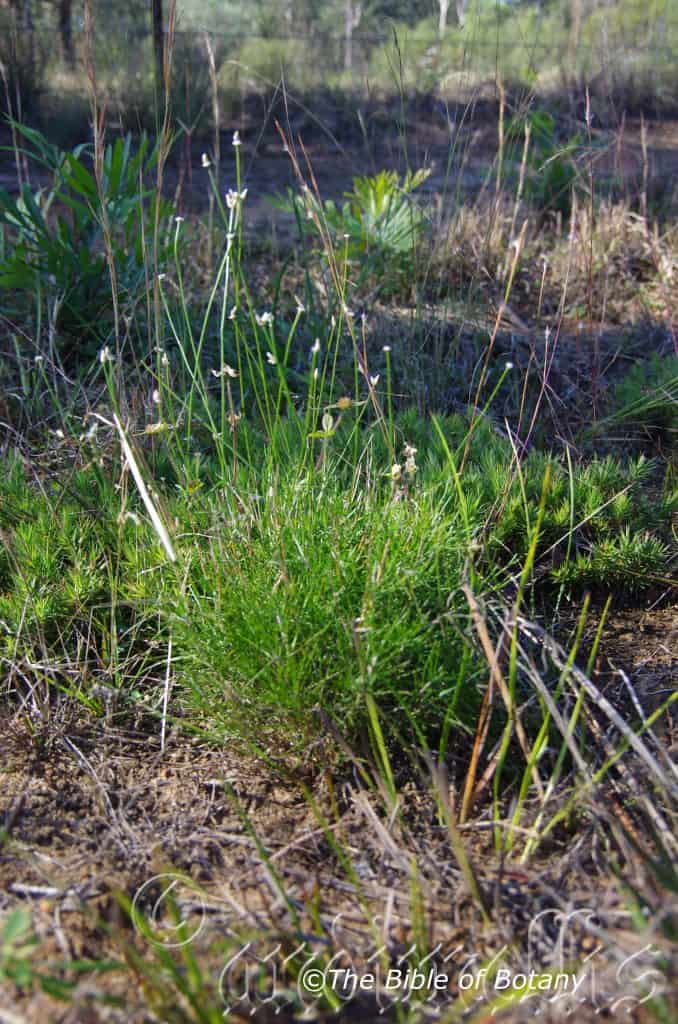
Author’s Garden The Pinnacles NSW

Fortis Creek National Park NSW
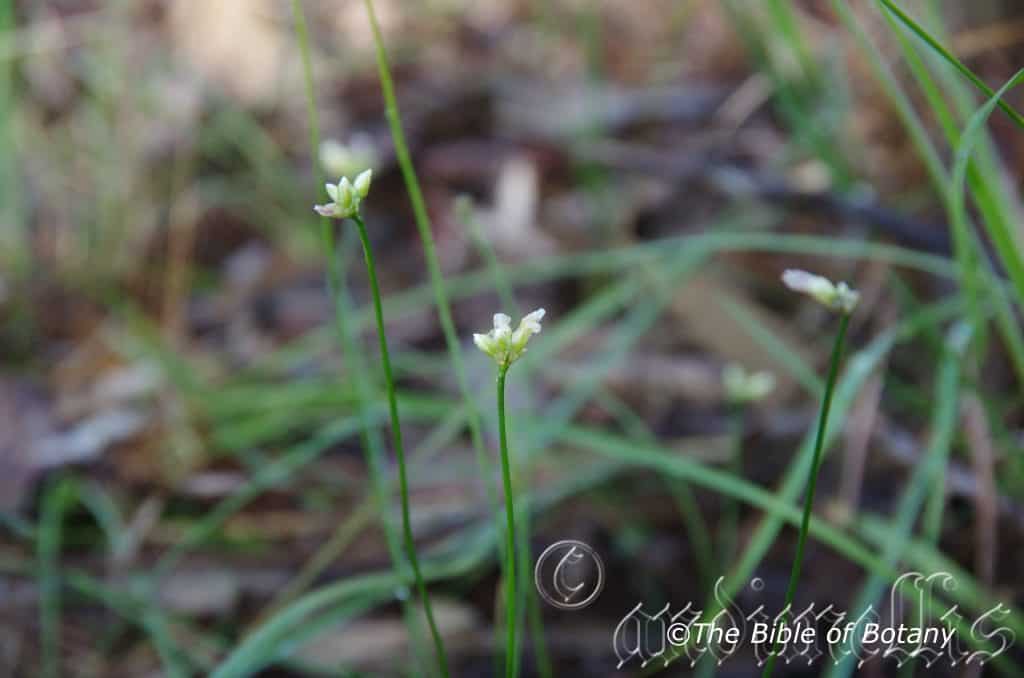
Fortis Creek National Park NSW
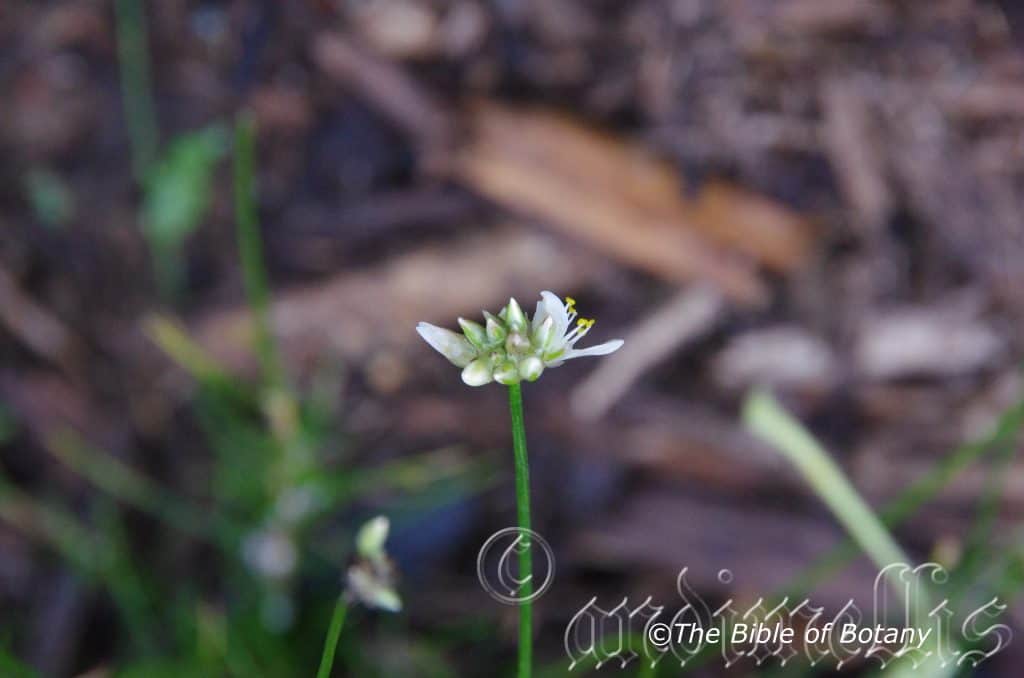
Author’s Garden The Pinnacles NSW
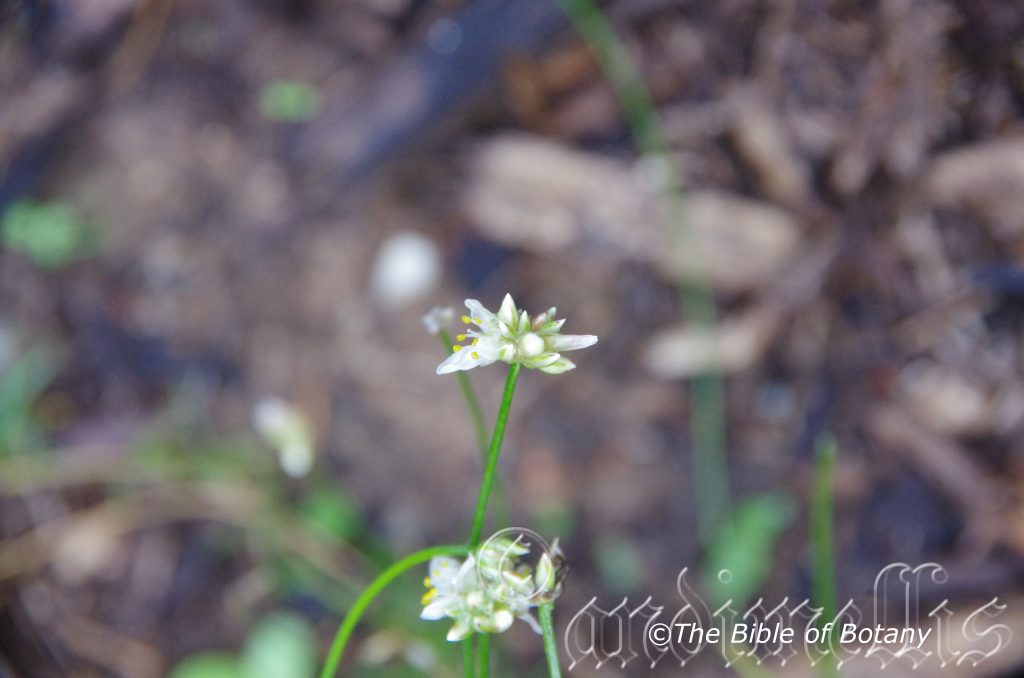
Author’s Garden The Pinnacles NSW
Laxmannia gracilis
Classification:
Class: Monocots
Order: Asparagales
Family: Aspaaragaceae
Subfamily: Lamandroideae
Genus: Is named in honour of Eric Laxmann 1730-1796, who was a Swedish Physician and botanist, who worked in Russia submitting plants to Carl Linneaus Physician and botanist.
Specie: From Gracilis, which is Latin for slender and graceful. It refers to leaves and culms, which are rather gracefully slender.
Sub specie:
Common Name: Slender Wire Lily.
Distribution:
Laxmannia gracilis is found south from Mareeba in far north Queensland to Sale and Wellington in central eastern Victoria. It is found on the eastern side of the Western Plains, on the Western Slopes, on and east of the Great Dividing Range in Queensland and New South Wales and on the Western Slopes on and east Great Dividing Range in Victoria with a single isolated population further west on the Grampians.
Habitat Aspect Climate:
Laxmannia gracilis prefers full sunlight to very light dappled shade. It grows in Eucalyptus forests to open Eucalyptus woodlands. The altitude ranges from 5 meter ASL to 900 meters ASL.
The temperatures range from minus 3 degrees in August to 40 degrees in January.
The rainfall ranges from lows of 750mm to 3000mm average per annum.
Soil Requirements:
Laxmannia gracilis prefers sandy loams to light clays. The soils are usually derived from granites or sandstones. The soils pH ranges from 5pH to 6.5pH. It does not tolerate waterlogged soils. Non saline soils to the high end of very saline soils are tolerated as are salt laden winds.
Height & Spread:
Wild Plants: 0.25m to 0.4m by 0.25m to 0.4m
Characteristics:
Laxmannia gracilis is an open tufted annual without rhizomes or when present are very short. The tufts and stems are erect or geniculately ascending and pale grey to pale grey-fawn and often deep purple-red when young. They measure 250mm to 400mm in height. The stems are glabrous.
The clustered, linear leaves are divaricate and decurve to arching and measure 60mm to 75mm in length by 1mm to 2mm in width. The leaf sheaths are scabrous while the margins are ciliate and measure 4mm to 12mm in length. The bases merge into the sheaths while the apexes are acute and slightly pungent. The concolourous laminas are grass-green and glabrous. The laminas are flat on the upper surface and convex below while the margins are entire. The midvein is not prominent on either lamina.
The inflorescences are on scapes born from the leaf axils. The scapes measure 10mm to 150mm in length. There are 4 to 17-flowers on the erect scape. The 4 to 7 reddish-brown to reddish-purple outer bracts are oblong to ovate and measure 1mm to 4mm in length. The 3 to 6 white inner bracts are opaque to translucent with divided margins and measure 1mm to 3mm in length. The pale pink to deep pink or white flowers open in the evenings. The outer tepals are broad elliptical and measure 4mm to 6mm in length while the inner tepals are semi erect and measure 5mm to 8mm in length.
The 6 stamens have white filaments and measure 3mm to 5mm in length while the yellow obloidal, basifixed anthers measure 0.6mm to 1mm in length. The flowers appear from September to November.
The fruits are ovoidal capsules. The green capsules turn deep grey-black when ripe. The capsules measure 2mm to 3mm in length by 2mm to 3mm in diameter.
Wildlife:
Laxmannia gracilis’s wildlife is unknown to the author.
Cultivation:
Laxmannia gracilis are unusual, small flowering lilies for cool sub-tropical to warm temperate gardens with sandier type soils. It requires little water and attention making it ideal for small home gardens. In cultivation they will grow 250mm to 400mm in height by 200mm to 500mm in diameter when grown in an open situation in full sun.
Laxmannia gracilis offers the non-conforming gardener an astonishing new concept for rockeries or small heaths. Mass planted the fine wiry culms in bud are very delicate offering a peaceful, tranquil setting.
It is easy to grow, harvest and propagate but needs other small broad leaf plants or an open space around it to be successful. Low mounded plants with small bright green leaves would add to the fairy like scene. Hibbertia linearis, Hibbertia obtusifolia, Isotoma axillaris, most of the dwarf Goodenia specie would be satisfactory despite having larger leaves as would Viola betonicifolia which would all suffice beautifully.
Mass plantings are best achieved by leaving spaces between the individual plants so plant them at 400mm to 600mm centres.
Laxmannia gracilis makes a great bowel and tub plant. When used in tubs plant them at around 100mm to 150mm centers.
Propagation:
Seeds: Collecting seeds from mature plants of Laxmannia gracilis is not difficult but the collector must be vigilant as the seeds will disperse over in a matter of a couple of days to a week when fully ripe. The fresh seeds can be sown directly into a seed raising mix however; better, more even germination is gained if the seeds are stratified for a short period over winter and sown in spring. This can be achieved by placing the seeds in a paper bag in the vegetable crisper for a few weeks prior to sowing.
Cover the seeds to a depth of 2mm in the seed trays. Seeds usually germinate rapidly with a strike rate of over 80mm. Place the trays beneath 30mm shade cloth and keep moist.When the seedlings are 20mm to 30mm tall, prick them out and plant them into 50mm native tubes using a good quality mix.
Once the seedlings reach 50mm in height they can be repotted for indoor use or 100mm to 150mm in height plant them out into their permanent position.
Fertilize using seaweed, fish emulsion or organic chicken pellets soaked in water on an alternate basis. Fertilize every two months until the plants are established then twice annually in early September or March to maintain health, vitality and better flowering.
Further Comments from Readers:
Hi reader, it seems you use The Bible of Botany a lot. That’s great as we have great pleasure in bringing it to you! It’s a little awkward for us to ask, but our first aim is to purchase land approximately 1,600 hectares to link several parcels of N.P. into one at The Pinnacles NSW Australia, but we need your help. We’re not salespeople. We’re amateur botanists who have dedicated over 30 years to saving the environment in a practical way. We depend on donations to reach our goal. If you donate just $5, the price of your coffee this Sunday, We can help to keep the planet alive in a real way and continue to bring you regular updates and features on Australian plants all in one Botanical Bible. Any support is greatly appreciated. Thank you.
In the spirit of reconciliation we acknowledge the Bundjalung, Gumbaynggirr and Yaegl and all aboriginal nations throughout Australia and their connections to land, sea and community. We pay our respect to their Elders past, present and future for the pleasures we have gained.
Lechenaultia biloba
Classification:
Unranked: Eudicots
Unranked: Asterids
Order: Asterales
Family: Goodeniaceae
Genus: Is named in honour of Jean-Baptiste Lechenault de la Tour 1773-1826, who was a French botanist who wrote about plants from New Holland and van Dieman’s Land.
Specie: From Bi/Bis, which is Greek/Latin for two and Lobos, which is Ancient Greek for an ear lobe. It refers to flowers, or other structures which have two lobes and two clefts.
Sub species:
Common Name: Blue Leschenaultia.
Distribution:
Lechenaultia biloba is found in the south west corner of Western Australia south from Geraldton to west of Albany on the southern coast. It is common along the coast and inland to Southern Cross.
https://avh.ala.org.au/occurrences/search?taxa=Lechenaultia+biloba#tab_mapView
Habitat Aspect Climate:
Lechenaultia biloba prefers full sun to light dappled shade. It grows in dry sclerophyll forests to dry Eucalyptus forests. It is also found in all types of heathlands. The altitude ranges from 5 meter ASL to 300 meters ASL.
The temperatures range from minus 4 degrees in August to 38 degrees in January.
The rainfalls range from lows of 350mm to an average of 1300mm.
Soil Requirements:
Lechenaultia biloba prefers better quality gravels and sands to light fatty clays. The soils are usually derived from decomposed lateritic sandstones or coarse granites. The soils pH ranges from 5pH to 6pH. It does not tolerate waterlogged soils. Non saline soils to moderately saline soils are tolerated.
Height & Spread:
Wild Plants: 0.1m to 0.15m by 0.3m to 0.5m.
Characteristics:
Lechenaultia biloba’s stems are pale grey-brown. The pale blue-green to grey-green branchlets are glabrous.
Lechenaultia biloba’s linear leaves are clustered in groups of 3 along the stems and measure 4mm to 9mm in length by 1.5mm to 2.2mm in width. The bases are sessile while the apexes are acute to obtuse with or without a small mucronate tip. The concolourous laminas are variable olive green to grass-green orange-green or yellow-green, and glabrous. The margins are entire and incurved. The mid vein is slightly prominent on the lower lamina and is not visible on the upper lamina.
The inflorescences of Lechenaultia biloba are born solitary from the terminals or from special leafy side shoots and measure 22mm to 30mm in diameter. The usually sky-blue to deep sky-blue flowers or rarely white or bicolour are sessile. The linear bracteoles are grey-green and measure 8mm to 12mm in length. The compressed tubular corolla measures 10mm to 16mm in length by 15mm to 20mm in diameter. The 5 glabrous lobes are linear with broadly obovate wings. The wings divide further into 2 broad lateral lobes which extend beyond the lobe. The lobes have a short acute apex and are paler in colour than the wings. The upper pair of lobes is shorter and narrower than the lateral lobes. The lower lobe is the longest and broadest. The flowers appear from late July to November but flowers may extend beyond this period in favourable seasons.
The ovary and style are very sparsely covered in white glandular and pilose hairs. The ovary measures 11mm to 17.5mmin length while the style measures 5.5mm to 8mm in length.
Lechenaultia biloba’s fruits are obloidal coriaceous capsules. The capsules measure 23mm to 35mm in length by 8mm to 12mm in diameter. The pale blue-green capsules turn deep grey on ripening.
Wildlife:
Lechenaultia biloba’s wildlife is unknown to the author.
Cultivation:
Lechenaultia biloba grow particularly well on dry problem soils exposed to the heat. It is suitable for small, medium and large gardens close to the coast, on flat plains and slopes in temperate, Mediterranean or semi-arid gardens. As garden subjects it will grow from 0.3 meters to 0.4 meters in height by 0.3 meters to 0.7 meters in width when grown in the open. It is cold tolerant to temperatures at least as low as minus 1 degree once established.
It can be lightly tip pruned if a bushier shrub is required. It is generally short lived especially on the east coast where the summer humidity is higher living for 2 or 3 years.
It is most suitable for use around swimming pools, bright courtyards, besides pathways, small rockeries, along sandy clay banks or along drive ways or adjacent to natural bush gardens. Mass plantings of 5 or more plants even in small areas; really do the plants justification especially when it is in flower. They look spectacular when placed along hard surface walls which reflect warmth and light.
It looks good adjacent to small areas of bush close to paths or the house so its blue flowers can be viewed regularly. It is great in small rockeries where their small size offers great versatility as a fill in plant. Planted in small scattered groups of 2 or 3 mingled with small pink, orange or scarlet red flowering plants create a magnificent display amongst large boulders, rocks and logs. If it is surrounded by similar size plants with broader leaves and paler coloured flowers they will dominate the scene at the center. They will soften a harsh scene especially when it is in flower. This is one plant that benefits highly from being mass planted or planted in scattered clumps. There small size enables this to be achieved even in small size gardens.
Another method is to raise the plants in hanging baskets. Use bark or better still coconut fibre for the liner as these allow the roots to breathe and prevent sweating which the plants detest.
Propagation:
Seeds:
Lechenaultia biloba seeds may not come true to parent type and seeds are not particularly easy to come by nor is the fertility rate good. If the parent type is required then plants should be grown from cuttings.
Seed can be sown directly into a seed raising mix after roughing the sides with fine sandpaper to assist in germination. Cover the seeds with 15mm to 20mm of fine weed free mulch and keep moist. Place the tray in a warm sunny position. When the seedlings are 20mm to 30mm tall, prick them out and plant them into 50mm native tubes using a good organic mix.
Once the seedlings reach 100mm to 150mm in height they can be planted out into their permanent position.
Cuttings: Use 80mm to 100mm long hardened material when growing from cuttings from the present season’s growth. Take them in the warmer months of the year. Remove half the leaves from the bottom section being careful not to tear the bark.
1 Prepare the cutting mix by adding one third sharp clean river sand, one third peat and one third perlite. These ingredients are sterilize,
2 Select good material from non diseased plants,
3 Select semi green stems for cuttings. Look for a stem with two or three nodes,
4 Place the cutting on a flat, hard surface, and make a clean cut down one side of the cutting at the base for 10mm with a sharp sterile knife or razor blade. – This scarification of the node will increase the chances of roots emerging from the bark along the cut. Now remove all but one or two the leaves, leaving the apex leaves in tact. If the leaves are very large in proportion to the stem, cut off the apical halves.
5 Fill a saucer with water, and place a little medium strength rooting hormone into another container like a milk bottle top. Dip the node end of the cutting into the water and then into the rooting hormone. Tap off any excess hormone,
6 Use a small dipple stick or old pencil to poke a hole into the soilless potting mix. Ensure the hole is slightly larger than the stem diameter and be careful not to wipe the rooting hormone off the cuttings base, place the cuttings in a pattern ensuring the cuttings are not touching each other,
7 I like to place the pots in Plastic bags to help maintain temperature and moisture. Place in a semi shaded place like under 50mm shade cloth.
8 When the cuttings have struck, open the bag to allow air circulation for a few days to a week,
9 Once hardened off remove the cuttings from the bag and allow to further hardening for a few more days,
10 Transplant into a good potting mix to grow on.
Fertilize using seaweed, fish emulsion or organic chicken pellets soaked in water on an alternate basis. Fertilize every two months until the plants are established then twice annually in early September or March to maintain health, vitality and better flowering.
Further Comments from Readers:
Hi reader, it seems you use The Bible of Botany a lot. That’s great as we have great pleasure in bringing it to you! It’s a little awkward for us to ask, but our first aim is to purchase land approximately 1,600 hectares to link several parcels of N.P. into one at The Pinnacles NSW Australia, but we need your help. We’re not salespeople. We’re amateur botanists who have dedicated over 30 years to saving the environment in a practical way. We depend on donations to reach our goal. If you donate just $5, the price of your coffee this Sunday, We can help to keep the planet alive in a real way and continue to bring you regular updates and features on Australian plants all in one Botanical Bible. Any support is greatly appreciated. Thank you.
In the spirit of reconciliation we acknowledge the Bundjalung, Gumbaynggirr and Yaegl and all aboriginal nations throughout Australia and their connections to land, sea and community. We pay our respect to their Elders past, present and future for the pleasures we have gained.
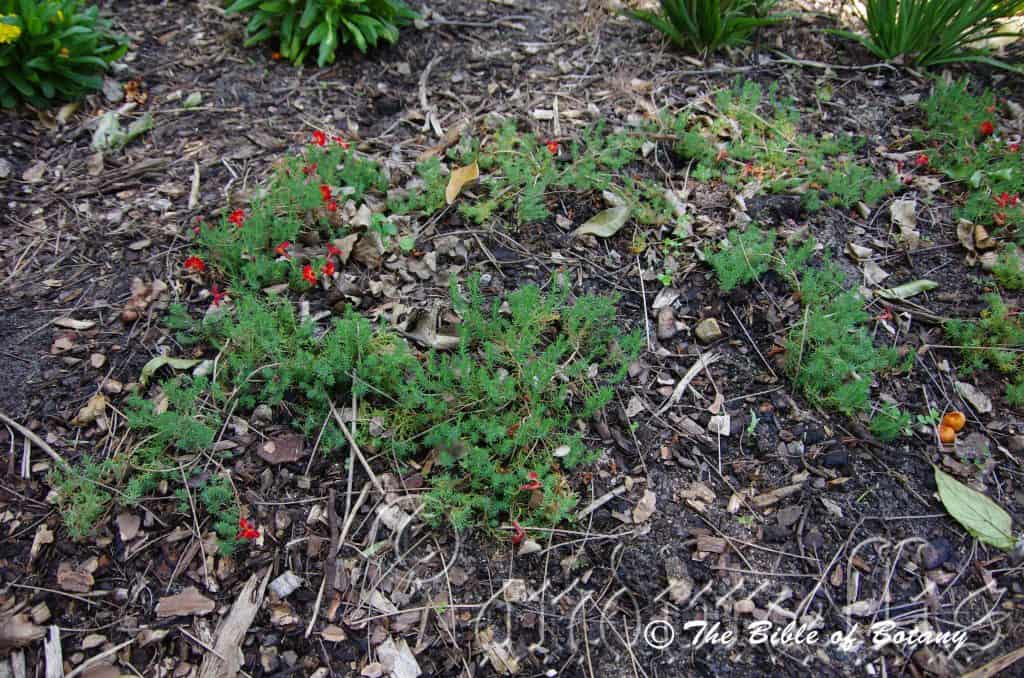
Roma Street Floral Gardens Brisbane Qld.
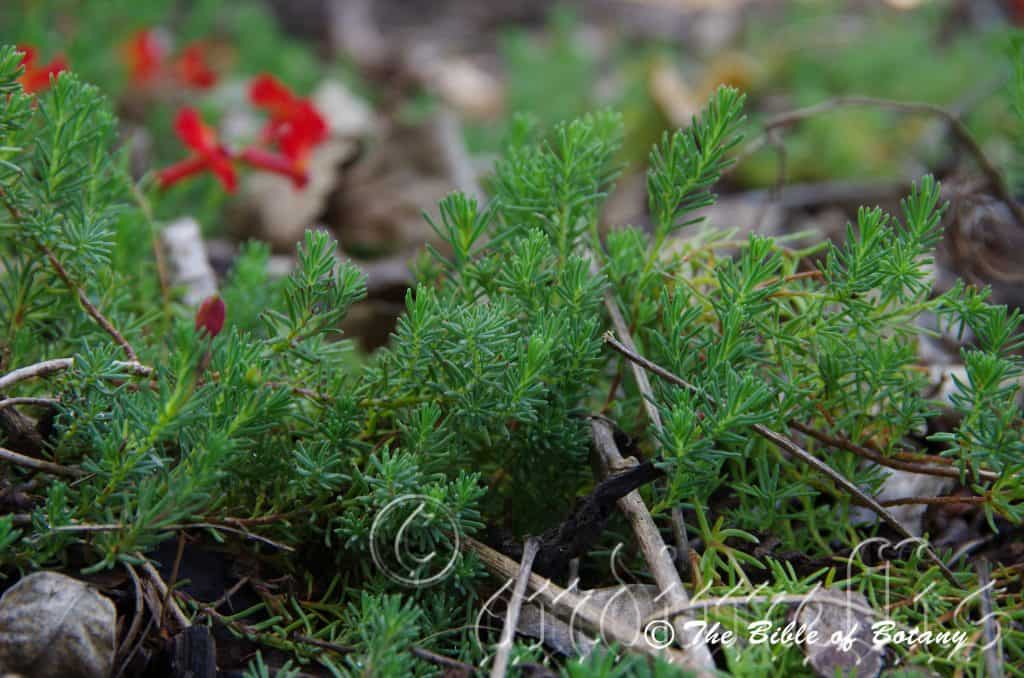
Roma Street Floral Gardens Brisbane Qld.
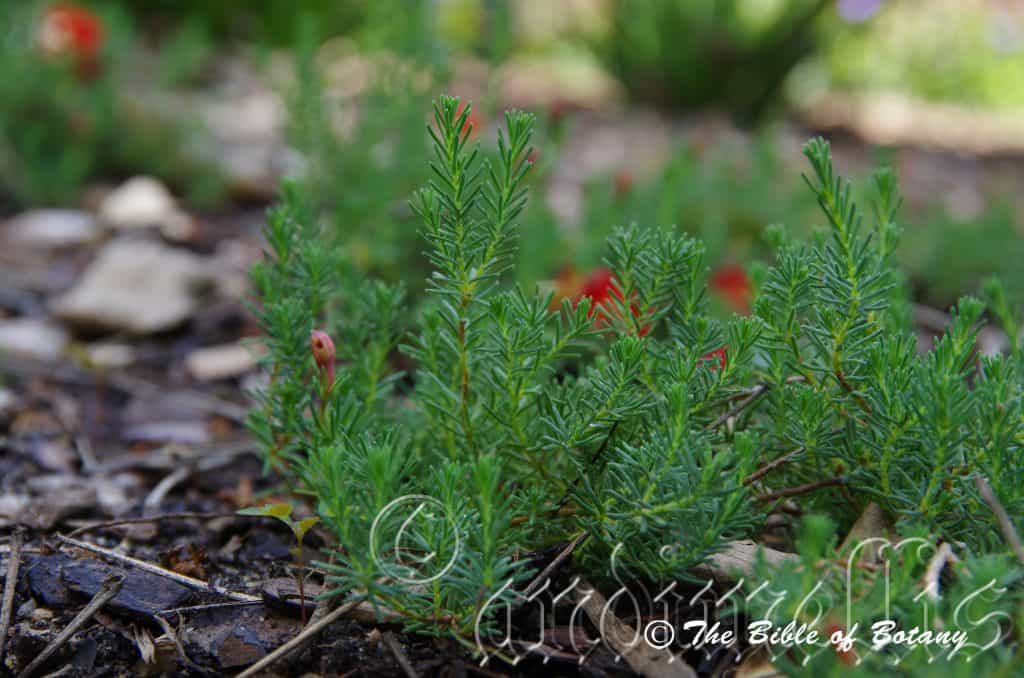
Roma Street Floral Gardens Brisbane Qld.
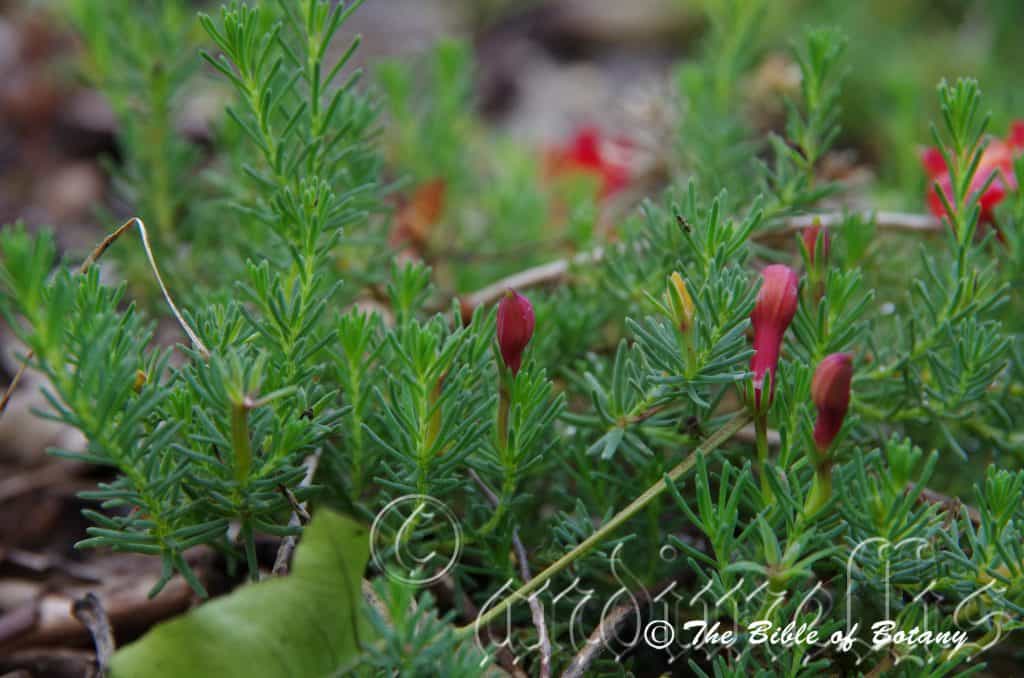
Roma Street Floral Gardens Brisbane Qld.
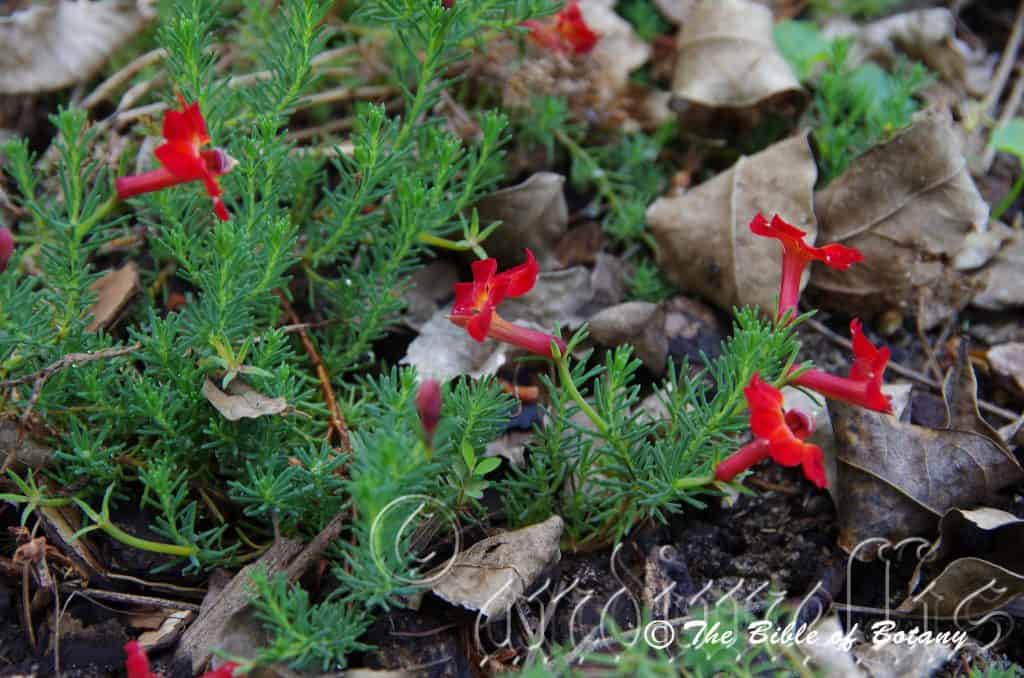
Roma Street Floral Gardens Brisbane Qld.
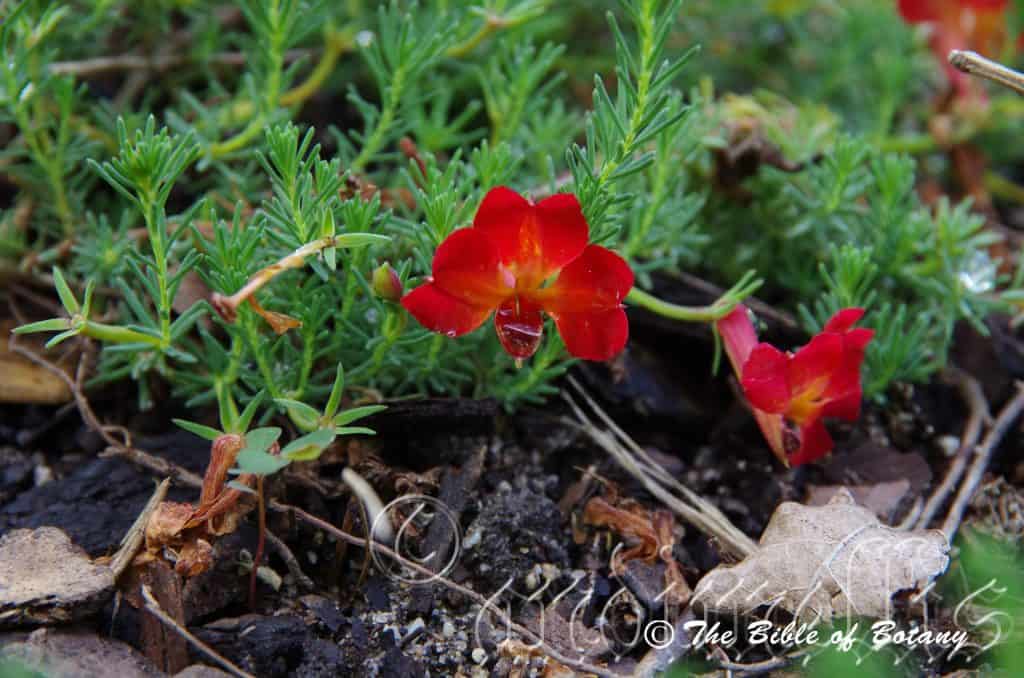
Roma Street Floral Gardens Brisbane Qld.
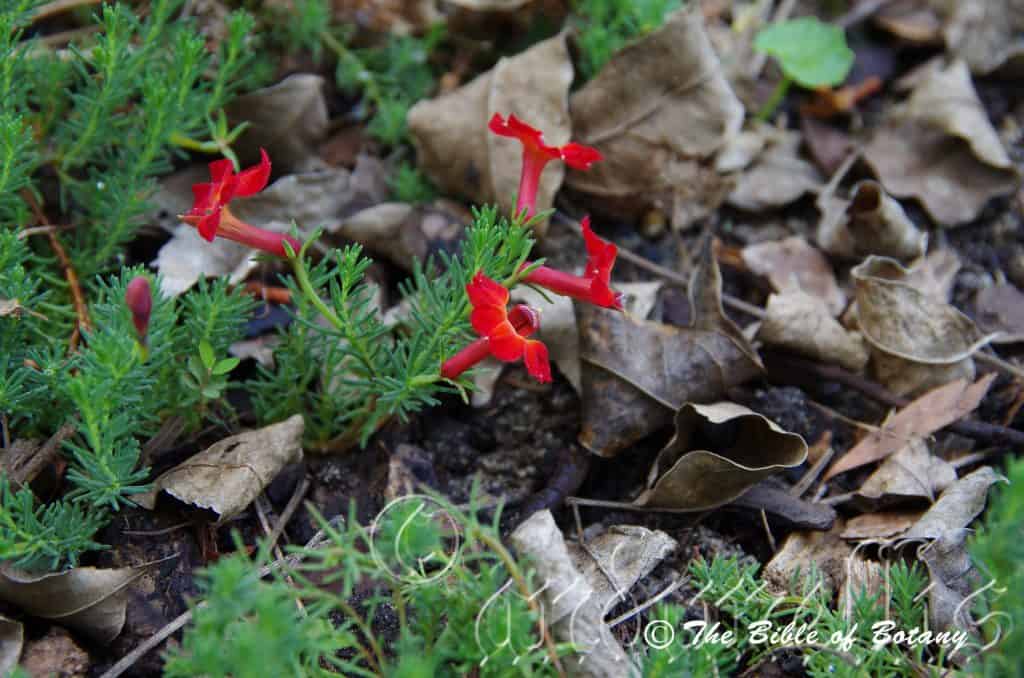
Roma Street Floral Gardens Brisbane Qld.
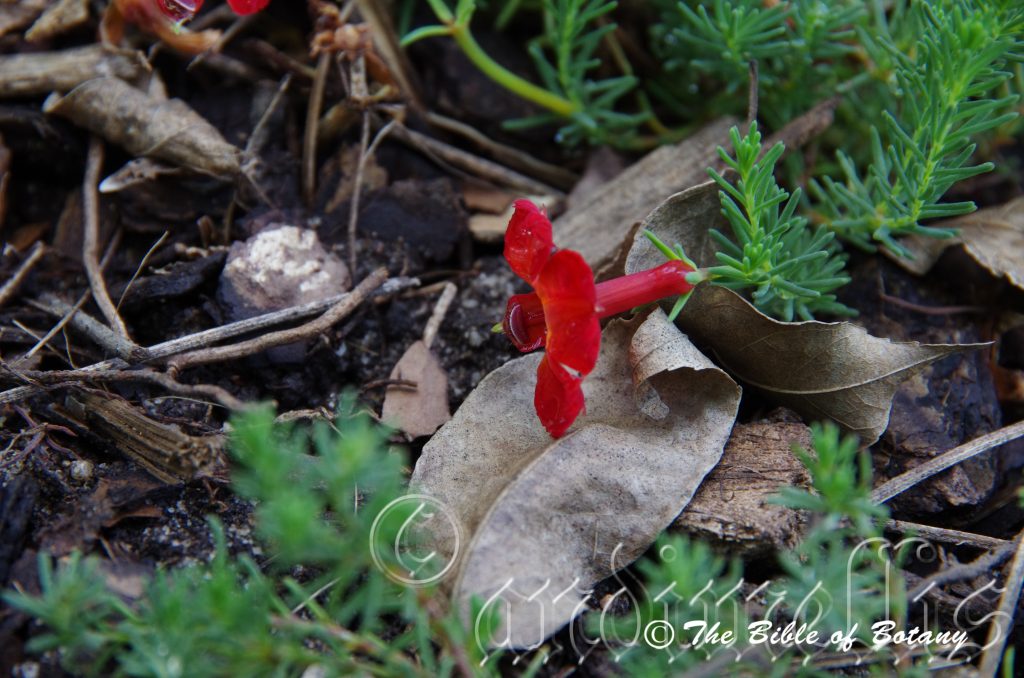
Roma Street Floral Gardens Brisbane Qld.
Lechenaultia formosa
Classification:
Unranked: Eudicots
Unranked: Asterids
Order: Asterales
Family: Goodeniaceae
Genus: Is named in honour of Jean-Baptiste Lechenault de la Tour 1773-1826, who was a French botanist who wrote about plants from New Holland and van Dieman’s Land.
Specie: From Formosa, which is Latin for beautiful or vivacious. It refers to the beauty of the species overall.
Sub species: Lechenaultia formosa subsp. formosa. From Formosa, which is Latin for beautiful or vivacious. It refers to the beauty of the species overall.
Sub species: Lechenaultia formosa subsp. wheatbelt. From Wheatbelt, which is Latinized for the area in south west Western Australian known as the wheatbelt. It refers to plants, which were discovered or are restricted to the wheatbelt.
Common Name: Red Leschenaultia, Orange Lechenaultia or
Scarlet Lechenaultia.
Distribution:
Lechenaultia formosa subsp. formosa is found in the south west corner of Western Australia south from Geraldton to Nuytsland Nature Reserve.
Lechenaultia formosa subsp. wheatbelt is restricted to the wheatbelt in south west Western Australia.
https://avh.ala.org.au/occurrences/search?taxa=Lechenaultia+formosa#tab_mapView
Habitat Aspect Climate:
Lechenaultia formosa prefers full sun to light dappled shade. It grows in dry sclerophyll forests to dry Eucalyptus forests. It is also found in all types of heath lands on sandy plains, drainage channels gullies outcrops and slopes. The altitude ranges from 10 meter ASL to 600 meters ASL.
The temperatures range from minus 4 degrees in August to 38 degrees in January.
The rainfalls range from lows of 300mm to an average of 1100mm.
Soil Requirements:
Lechenaultia formosa prefers better quality sandy loams to light fatty clays. The soils are usually derived from decomposed lateritic sandstones or coarse granitic sands with clay over a granitic substrata. The soils are usually derived from decomposed granites. The soils pH ranges from 5pH to 6pH. It does not tolerate waterlogged soils. Non saline soils to moderately saline soils are tolerated.
Height & Spread:
Wild Plants:
Lechenaultia formosa subsp. formosa 0.2m to 0.4m by 0.4m to 0.6m.
Lechenaultia formosa subsp. wheatbelt 0.1m to 0.12m by 0.5m to 0.8m.
Characteristics:
Lechenaultia formosa’s stems are pale grey-brown. The pale blue-green branchlets are glabrous. They have a semi suckering habit under ideal conditions.
Lechenaultia formosa’s linear leaves are clustered in groups of 3 or more along the stems and measure 8mm to 11mm in length by 2mm to 3mm in width. The bases are sessile while the apexes are acute to obtuse with or without a small mucronate tip. The concolourous laminas are pale blue-green to mid blue-green, and glabrous. The margins are entire and recurved. The mid vein is slightly prominent on the lower lamina and is not visible on the upper lamina.
The inflorescence of Lechenaultia formosa are born solitary from the terminals or from special leafy side shoots and measure 12mm to 18mm in length. Lechenaultia formosa subsp. formosa has red and yellow, red and orange or orange and cream flowers while Lechenaultia formosa subsp. wheatbelt has red flowers. The red-brown or red-green pedicels measure 6mm to 8mm in length. The 5 linear sepals are reddish green and measure 2mm to 3mm in length. The corolla measures 7mm to 9mm in length by 3mm to 4mm in diameter near the throat. The 5 glabrous lobes are broadly spathulate and measure 5mm to 7mm in length by 5mm to 7mm in width. The upper pair of lobes is usually smaller than the wing lobes. The lower lobe is the larger than the wing lobes. The base is rounded then forms a handle to the corolla while the apex is broadly and deeply emarginated with a mucronate tip in the “V.” The glabrous margins of the lobes are entire or crenate and undulating. Flowers appear from May to November but some flowers can be found outside these months under favourable seasons.
Lechenaultia formosa’s fruit is a small oblong coriaceous capsule. The capsules measure 15mm to 25mm in length by 8mm to 10mm in diameter. The pale blue-green capsules turn deep grey on ripening.
Wildlife:
Lechenaultia formosa’s wildlife is unknown to the author.
Cultivation:
Lechenaultia formosa grows particularly well on dry problem soils exposed to the heat. It is suitable for small, medium and large gardens close to the coast, on flat plains and slopes in temperate, Mediterranean or semi-arid gardens. As garden subjects it will grow from 0.3 meters to 0.5 meters in height by 0.3 meters to 0.6 meters in width when grown in the open. It is cold tolerant to temperatures at least as low as minus 1 degree once established.
It can be lightly tip pruned if a bushier shrub is required. It is generally short lived especially on the east coast where the summer humidity is higher living for 2 or 3 years.
It is most suitable for use around swimming pools, bright courtyards, besides pathways, small rockeries, along sandy clay banks or along drive ways or adjacent to natural bush gardens. Mass plantings of 5 or more plants even in small areas; really do the plants justification especially when it is in flower. It looks spectacular when placed along hard grey or cream walls which reflect warmth and light.
It looks good adjacent to small areas of bush close to paths or the house so their blue flowers can be viewed regularly. It is great in small rockeries where their small size offers great versatility as a fill in plant. Planted in small scattered groups of 2 or 3 mingled with small pink, orange or scarlet red flowering plants create a magnificent display amongst large boulders, rocks and logs. If it is surrounded by similar size plants with broader leaves and paler coloured flowers they will dominate the scene at the center. It will soften a harsh scene especially when it is in flower. This is one plant that benefits highly from being mass planted or planted in scattered clumps mixed with yellow flowering annuals and perennials. There small size enables this to be achieved even in small size gardens.
Another method is to place it in hanging baskets. Use bark or better still coconut fibre for the liner as these allow the roots to breathe and prevent sweating which the plants detest.
Propagation:
Seeds: Lechenaultia formosa seeds may not come true to parent type and seeds are not particularly easy to come by nor are the fertility rate good. If the parent type is required then plants should be grown from cuttings.
Seed can be sown directly into a seed raising mix after roughing the sides with fine sandpaper to assist in germination. Cover the seeds with 15mm to 20mm of fine weed free mulch and keep moist. Place the tray in a warm sunny position. When the seedlings are 20mm to 30mm tall, prick them out and plant them into 50mm native tubes using a good organic mix.
Once the seedlings reach 100mm to 150mm in height they can be planted out into their permanent position.
Cuttings: Use 50mm to 60mm long half ripened material when growing from cuttings from the present season’s growth. Take them in mid-autumn. Remove half the leaves from the bottom section being careful not to tear the bark. Remove any flowers and buds. Take a 10mm slice off the bark from the bottom of the cutting on one side. Using a weak rooting hormone; mainly for sterilization, dip the cutting in and place it in a moist sterile seed raising mix.
Place the cuttings in a moist sterile seed raising mix horizontally or to a maximum of a 45 degree angle with half the cutting below the mix and half above the mix.
Place the trays under 30mm shade and keep the trays warm. Bottom heat is beneficial when striking the cuttings. Ideally temperatures should be maintained at between 22 to 24 degrees.
When the cuttings have obviously struck and have developed good roots treat them as for seedlings.
Fertilize using seaweed, fish emulsion or organic chicken pellets soaked in water on an alternate basis. Fertilize every two months until the plants are established then annually in early September or March to maintain health, vitality and better flowering.
Further Comments from Readers:
Hi reader, it seems you use The Bible of Botany a lot. That’s great as we have great pleasure in bringing it to you! It’s a little awkward for us to ask, but our first aim is to purchase land approximately 1,600 hectares to link several parcels of N.P. into one at The Pinnacles NSW Australia, but we need your help. We’re not salespeople. We’re amateur botanists who have dedicated over 30 years to saving the environment in a practical way. We depend on donations to reach our goal. If you donate just $5, the price of your coffee this Sunday, We can help to keep the planet alive in a real way and continue to bring you regular updates and features on Australian plants all in one Botanical Bible. Any support is greatly appreciated. Thank you.
In the spirit of reconciliation we acknowledge the Bundjalung, Gumbaynggirr and Yaegl and all aboriginal nations throughout Australia and their connections to land, sea and community. We pay our respect to their Elders past, present and future for the pleasures we have gained.
Leea indica
Classification:
Unranked: Eudicots
Unranked: Rosids
Order: Vitales
Family: Vitaceae
Genus: Is probably named in honour of James Lee 1715-1795, who was an English horticulturalist and nurseryman.
Specie: From Novaguinee, which is Latinized for New Guinee and Ensis, which is Latin for to originate from. It refers to the type specimen, which was first discovered in New Guinee.
Sub species:
Common Name: Bandicoot Berry.
Distribution:
Leea indica is found in 3 disjunct populations in Queensland and the Northern Territory. In the Northern Territory it is found from Darwin and Melville Island south to the Daly River Reserve in the west and in the east from the Cadel River flood Pplain east to Nuhlunbury and Groote Eylandt in the east.
In Queensland it is found south from the Torres Strait Islands and the tip of Cape York Peninsula to Bowen.
It is also found from southern Indian, Vietnam. Thailand, southern China, Indonesia, Philippines, Malaysia, New Guinee and South west Pacific Islands.
https://avh.ala.org.au/occurrences/search?taxa=Leea+indica#tab_mapView
Habitat Aspect Climate:
Leea indica prefers light dappled shade to full shade. It grows on coastal flats slopes and hills in or on the adjacent ranges in monsoonal forests, monsoonal vine thickets or well developed rainforests. The altitude ranges from 5 meter ASL to 300 meters ASL.
The temperatures range from 6 degree in August to 32 degrees in January.
The rainfalls range from lows of 900mm to an average of 3200mm.
Soil Requirements:
Leea indica prefer to grow on better quality sandy loams to medium clays. The soils are usually derived from decomposed granites. The soils pH ranges from 5pH to 6.5pH. It does not tolerate waterlogged soils. Non saline soils to the lower end of moderately saline soils are tolerated.
Height & Spread:
Wild Plants: 2m to 9m by 2m to 4.5m.
Characteristics:
Leea indica’s main stems are deep grey green, flat and slightly scabrous. The branchlets are grass green, and covered in lenticels and the scars from discarded leaves. It is tinged pink or red when grown in full sun.
Leea indica’s alternate, compound leaves measure 600mm to 950mm in length by 700mm to 1100mm width overall. The individual laminas measure 60mm to 210mm in length by 50mm to 90mm in width. The apex leaflet is longer than the lateral leaflets. The stipules measure 15mm to 60mm in length by 5mm to 18mm in width. The petioles measure 100mm to 700mm in length while the petiolules measure 30mm to 80mm in length. The terminal petiolule is longer than the lateral petiolules. The petiole is swollen at its point of joining with the main axils. The petioles and petiolules have a groove on the upper surface. The bases are broadly cuneate while the apexes are caudate. The concolourous laminas are grass-green, glossy and glabrous. The margins are double serrate, undulating and curve slightly upwards from the mid vein. The mid vein and lateral veins are strongly prominent on the lower lamina and is distinctly visible from above. The lateral veins curve close to the margins and remain strongly prominent. The stipule sheath covers the terminal bud is broad lanceolate and sheaths the stem at the base of the petiole after the leaf has fully emerged.
The inflorescences of Leea indica are long compound panicles and are born opposite the leaf axils. The green racemes measure 60mm to 110mm in length. The panicles are glabrous. The pedicels measure 2mm to 3mm in length. The bracts are cream. The 5 calyx lobes measure 1mm to 1.5mm in length. The glabrous corolla tube measures 2.5mm to 3.5mm in length. The corolla lobes are attached to the staminal tube. Individual corollas and lobes are pale green. The lobes are oblong with the margins curving upwards at the apex to form a small triangular cup. The lobes measure 8mm to 10mm in length.
Only the stamen’s anthers protrude from the staminal tube opening. The style is inserted in the corolla tube. The ovary has 6 oculars with a single ovule in each locule. The flowers appear from September to November.
Leea novoguineensis’s fruits are flattened globose drupes. The drupes measure 4mm to 11mm in length by 6mm to 15mm in diameter. The calyx is persistent on the deep red to purple-black drupes. The six seeds are cream and measure 5mm in length by 4mm in diameter.
Wildlife:
The flowers of Leea indica are very popular amongst small and medium size nectar feeding insects including native flies, beetles and bees.
The fruits are eaten by fruit eating doves and pigeons, Cat Birds and Bower Birds.
Cultivation:
Leea indica is beautiful small native shrubs with very large leaves that grow particularly well on heavier moist soils in part to full shade. It is suitable for small, medium and large sunny gardens close to the coast or high in the mountains in warm temperate, sub-tropical or tropical gardens. As garden subjects they will grow from 5 meters to 6 meters in height by 1.5 meters to 2 meters in diameter as a single trunk tree or 2 meters to 3 meters in height by 2 meters to 3 meters in diameter as a multi trunk shrub. It is fast growing and are cold tolerant to temperatures as low as 2 degrees once established.
It is best suited to shady patches in smaller gardens or as a rainforest understory shrub in larger gardens. They can be lightly pruned to induce bushiness or planted in groups of 2 or 3 close together to give the effect of bushiness. The very large glossy leaves and colourful fruits are particularly attractive. Plant them at 1.5 meter to 2.5 meter centers for quicker growth. The flowers have a honey scent.
Propagation:
Seeds: LLeea indicaseeds can be sown directly into a seed raising mix. Cover them with 5mm to 6mm of fine weed free mulch and keep moist. Place the tray in a warm sunny position. When the seedlings are 20mm to 30mm tall, prick them out and plant them into 50mm native tubes using a good organic mix.
Once the seedlings reach 100mm to 150mm in height they can be planted out into their permanent position.
Cuttings: Use 100mm to 200mm long hardened material when growing from cuttings from the present season’s growth. Take them in warmer months of the year. Remove half the leaves from the bottom section being careful not to tear the bark.
1 Prepare the cutting mix by adding one third sharp clean river sand, one third peat and one third perlite. These ingredients are sterilize,
2 Select good material from non diseased plants,
3 Select semi green stems for cuttings. Look for a stem with two or three nodes,
4 Place the cutting on a flat, hard surface, and make a clean cut down one side of the cutting at the base for 10mm with a sharp sterile knife or razor blade. – This scarification of the node will increase the chances of roots emerging from this spot. Now remove all but one or two the leaves, leaving the apex leaves in tact. If the leaves are very large in proportion to the stem, cut off the apical halves.
5 Fill a saucer with water, and place a little medium strength rooting hormone into another container like a milk bottle top. Dip the node end of the cutting into the water and then into the rooting hormone. Tap off any excess hormone,
6 Use a small dipple stick or old pencil to poke a hole into the soilless potting mix. Ensure the hole is slightly larger than the stem diameter and be careful not to wipe the rooting hormone off the cuttings base, place the cuttings in a pattern ensuring the cuttings are not touching each other,
7 I like to place the pots in Plastic bags to help maintain temperature and moisture. Place in a semi shaded place like under 50mm shade cloth.
8 When the cuttings have struck, open the bag to allow air circulation for a few days to a week,
9 Once hardened off remove the cuttings from the bag and allow to further hardening for a few more days,
10 Transplant into a good potting mix to grow on.
Fertilize using seaweed, fish emulsion or organic chicken pellets soaked in water on an alternate basis. Fertilize every two months until the plants are established then twice annually in early September or March to maintain health, vitality and better flowering.
Further Comments from Readers:
Hi reader, it seems you use The Bible of Botany a lot. That’s great as we have great pleasure in bringing it to you! It’s a little awkward for us to ask, but our first aim is to purchase land approximately 1,600 hectares to link several parcels of N.P. into one at The Pinnacles NSW Australia, but we need your help. We’re not salespeople. We’re amateur botanists who have dedicated over 30 years to saving the environment in a practical way. We depend on donations to reach our goal. If you donate just $5, the price of your coffee this Sunday, We can help to keep the planet alive in a real way and continue to bring you regular updates and features on Australian plants all in one Botanical Bible. Any support is greatly appreciated. Thank you.
In the spirit of reconciliation we acknowledge the Bundjalung, Gumbaynggirr and Yaegl and all aboriginal nations throughout Australia and their connections to land, sea and community. We pay our respect to their Elders past, present and future for the pleasures we have gained.

Mount Cootha Botanical Gardens Qld.
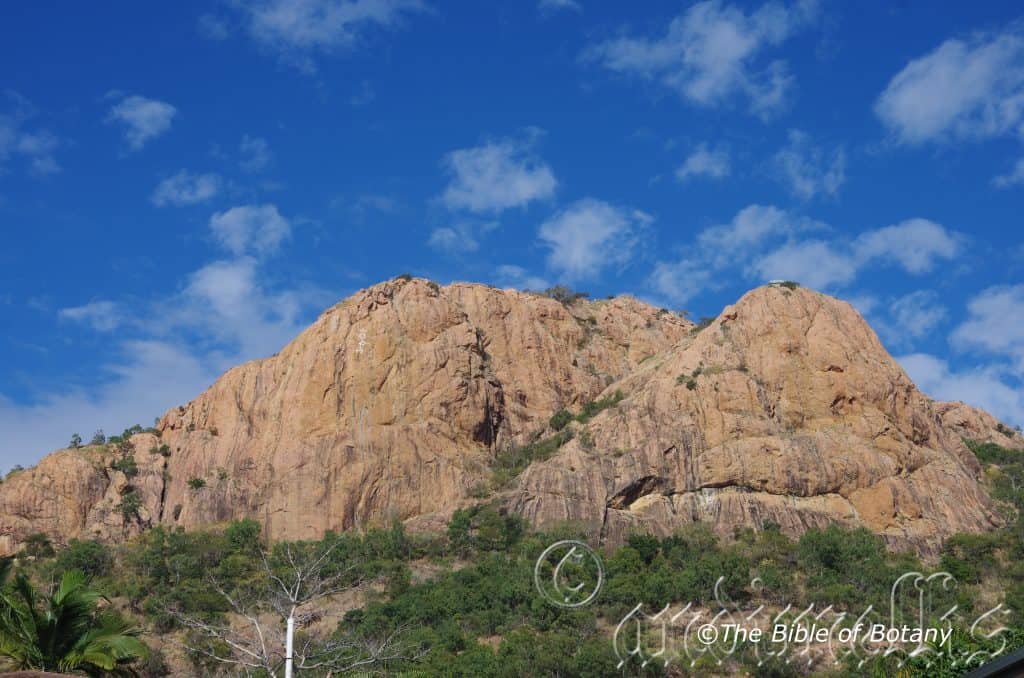
Base of Castle Hill Townsville Qld.
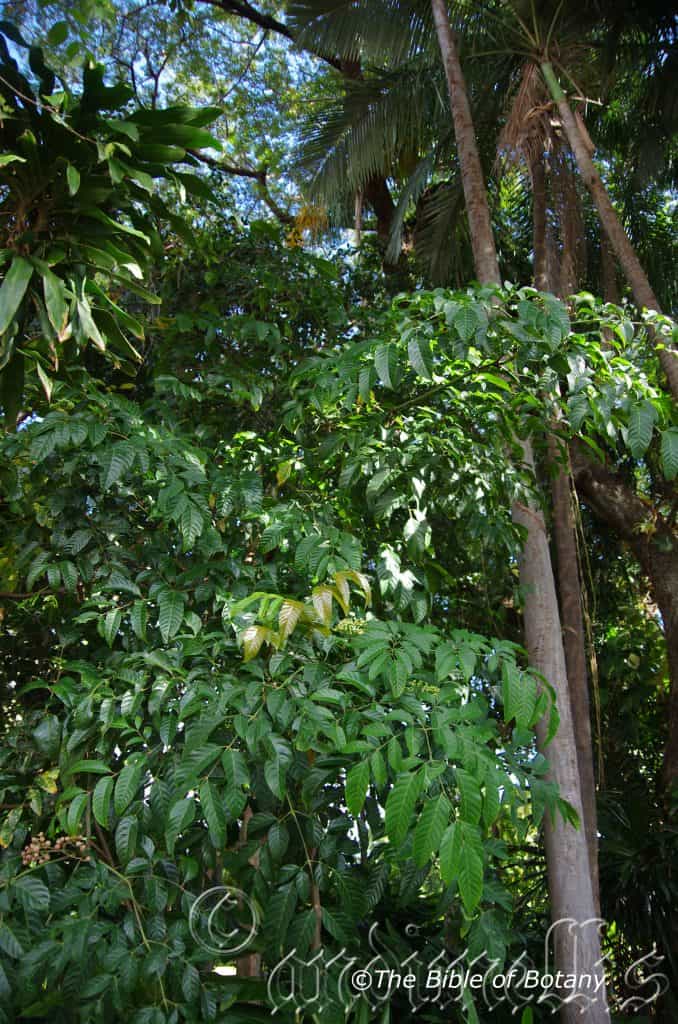
Base of Castle Hill Townsville Qld.
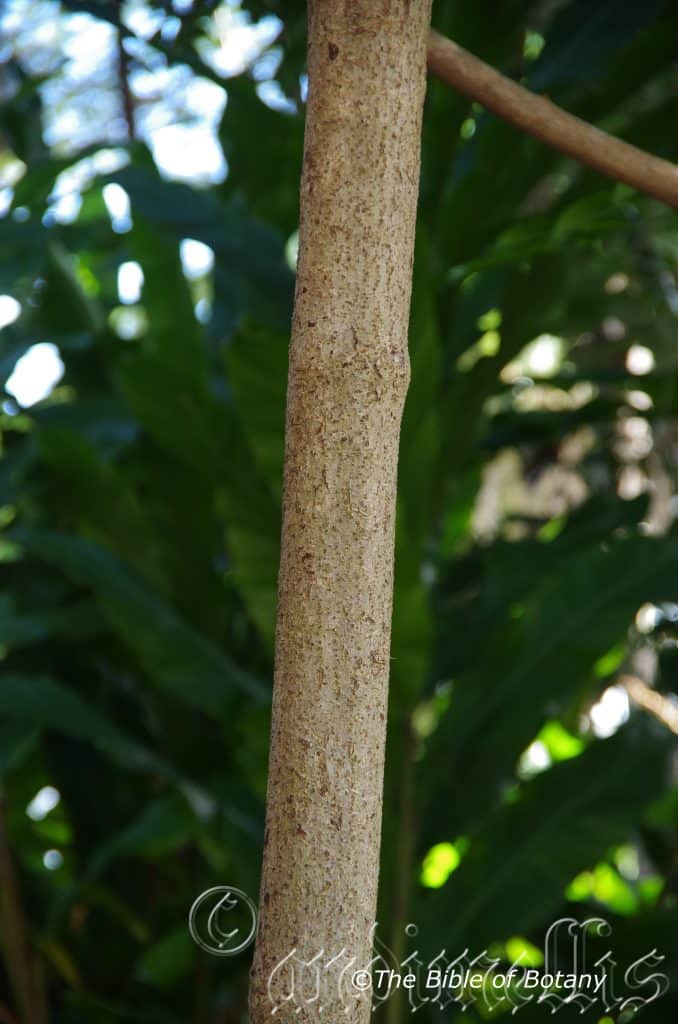
Base of Castle Hill Townsville Qld.
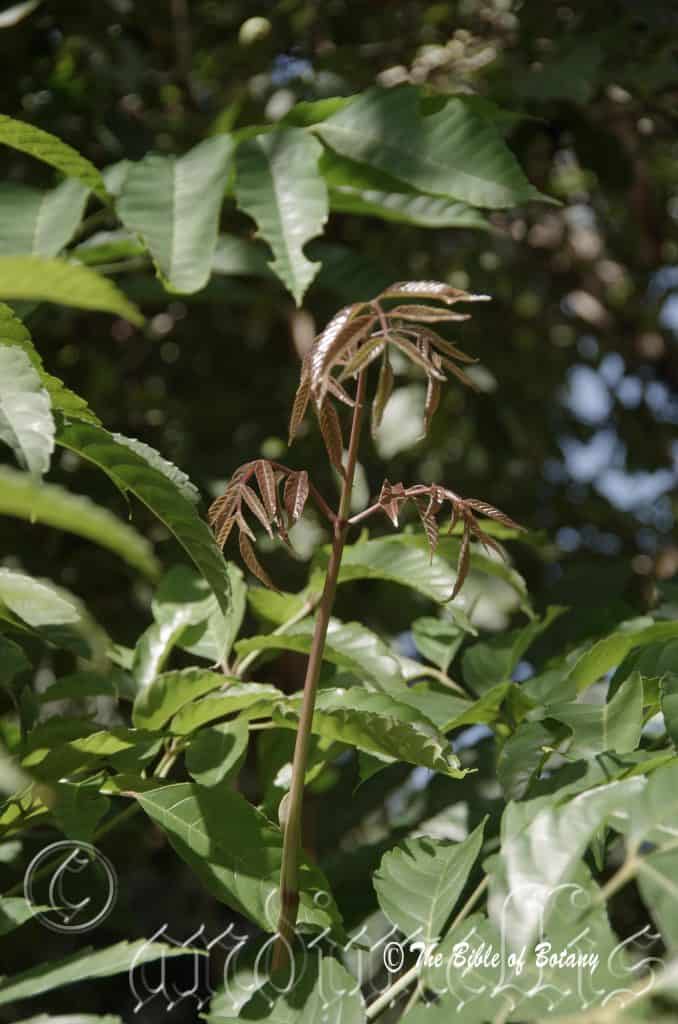
Anderson Gardens Townsville Qld.
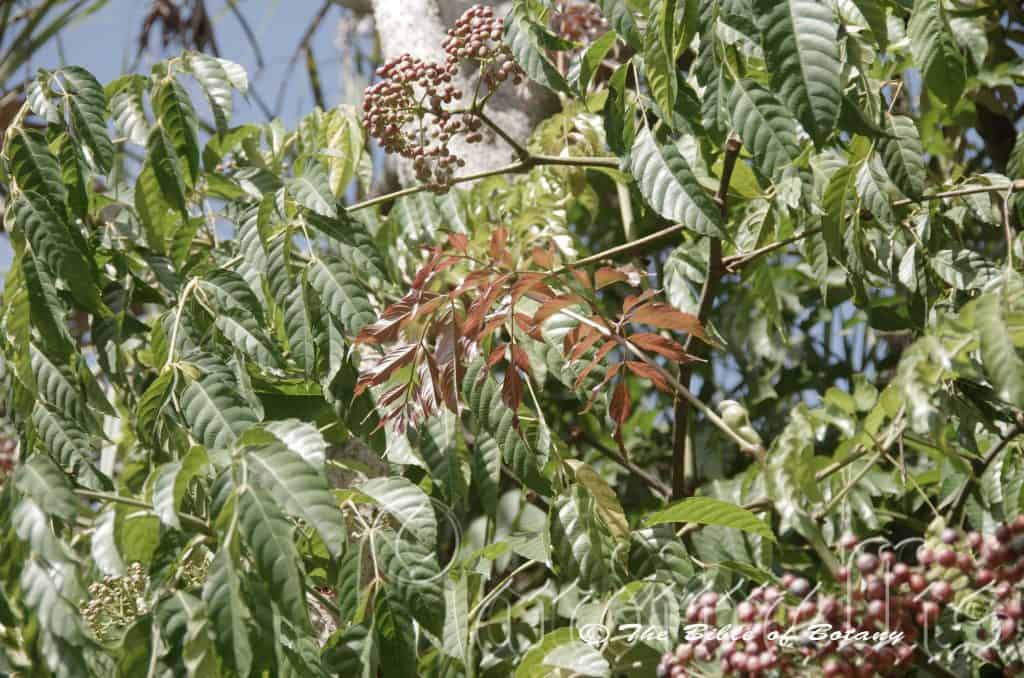
Anderson Gardens Townsville Qld.
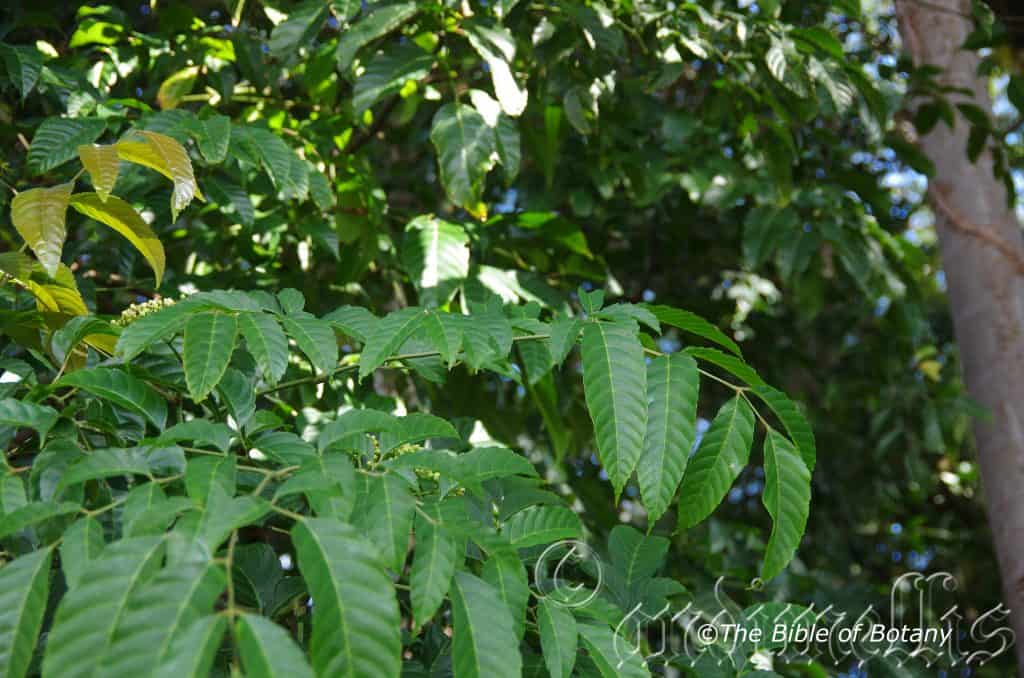
Base of Castle Hill Townsville Qld.
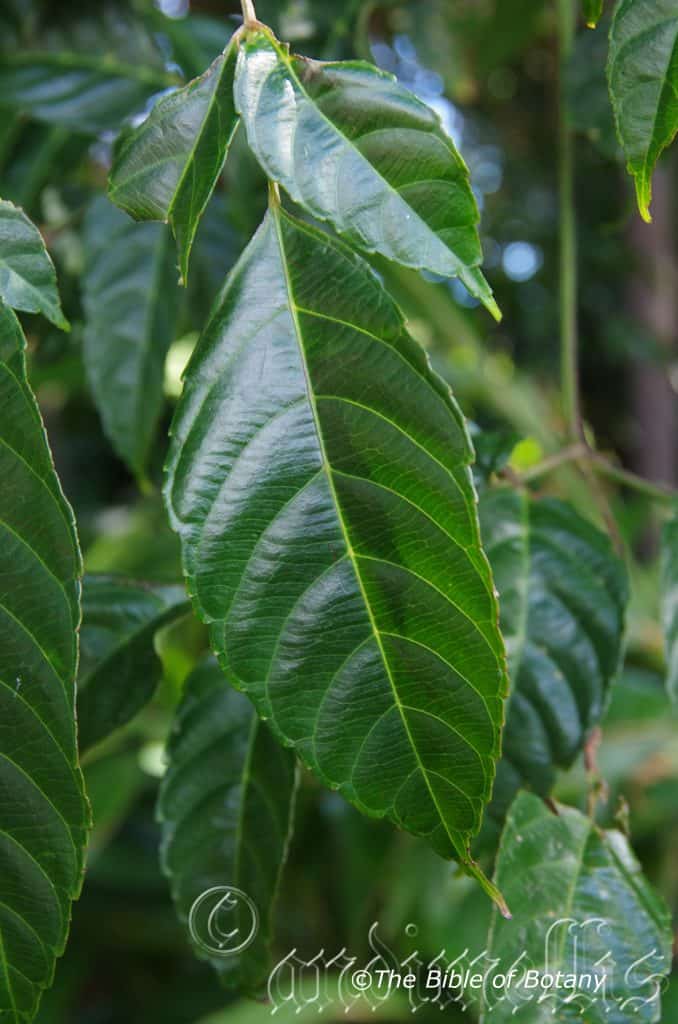
Base of Castle Hill Townsville Qld.
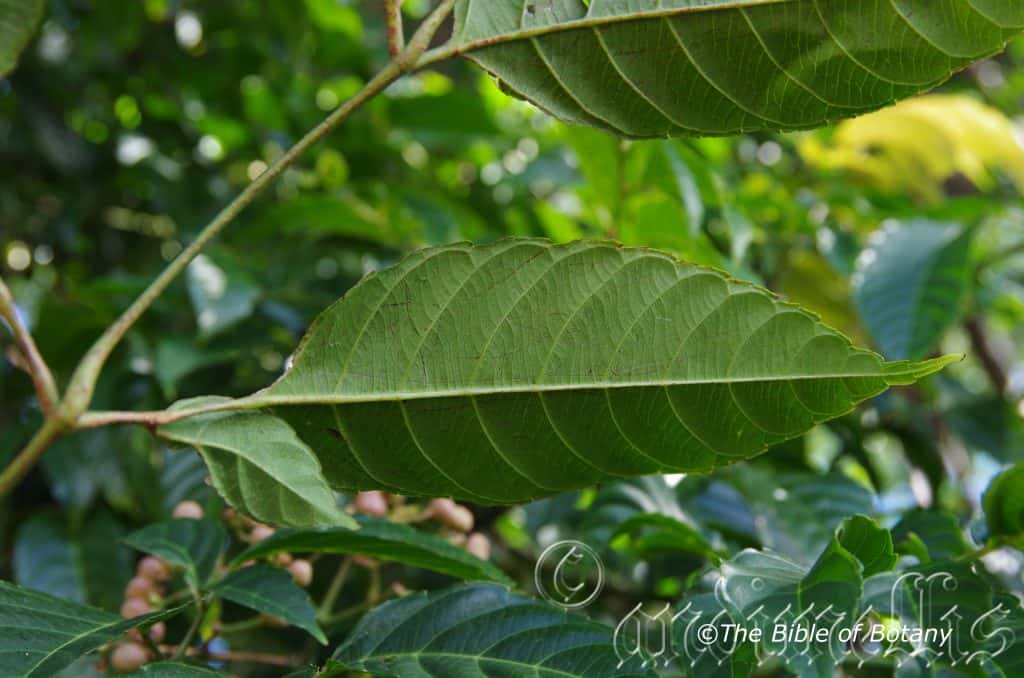
Base of Castle Hill Townsville Qld.
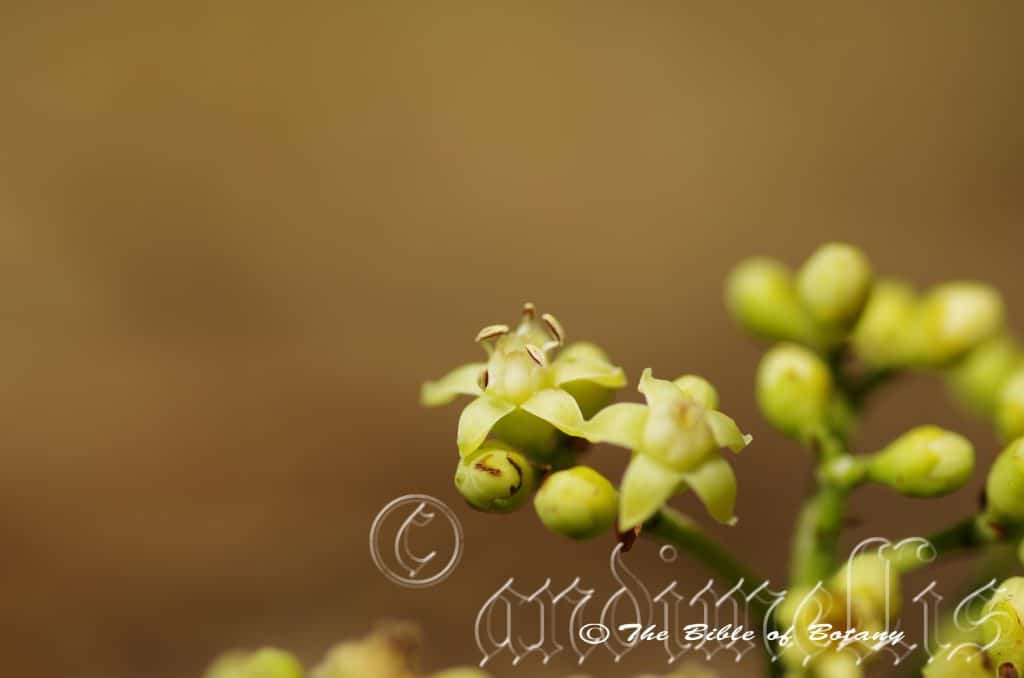
Anderson Gardens Townsville Qld.
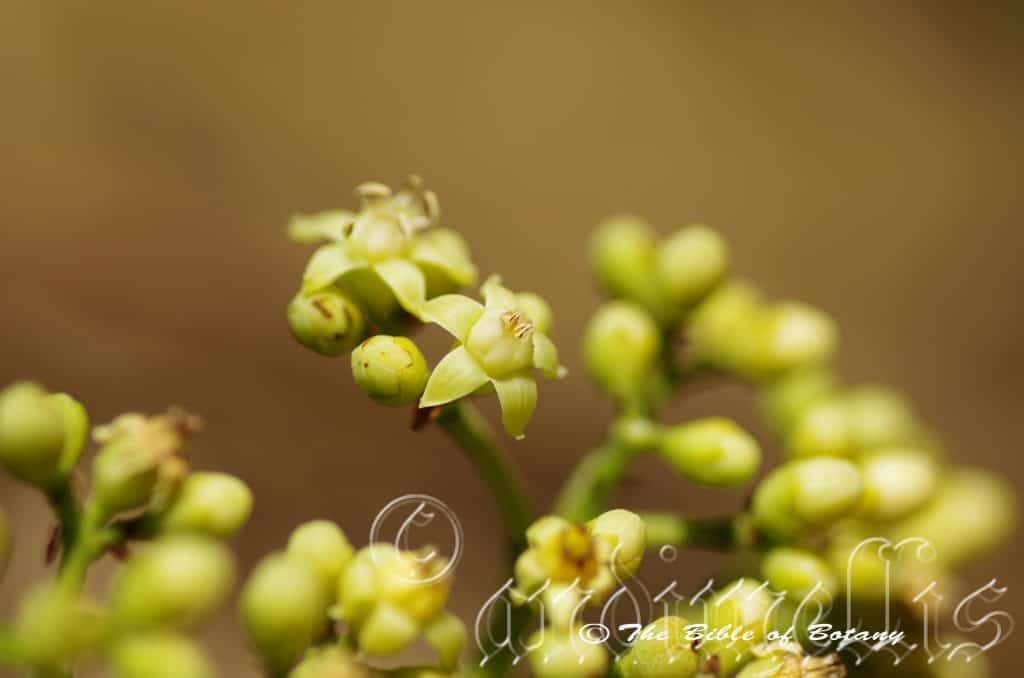
Anderson Gardens Townsville Qld.
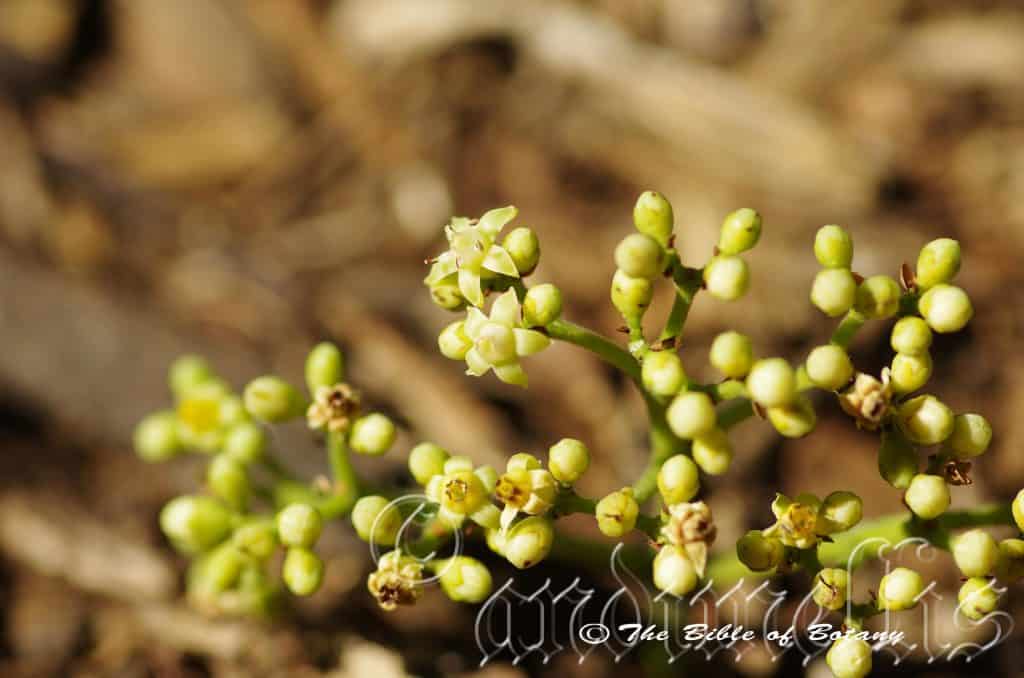
Anderson Gardens Townsville Qld.
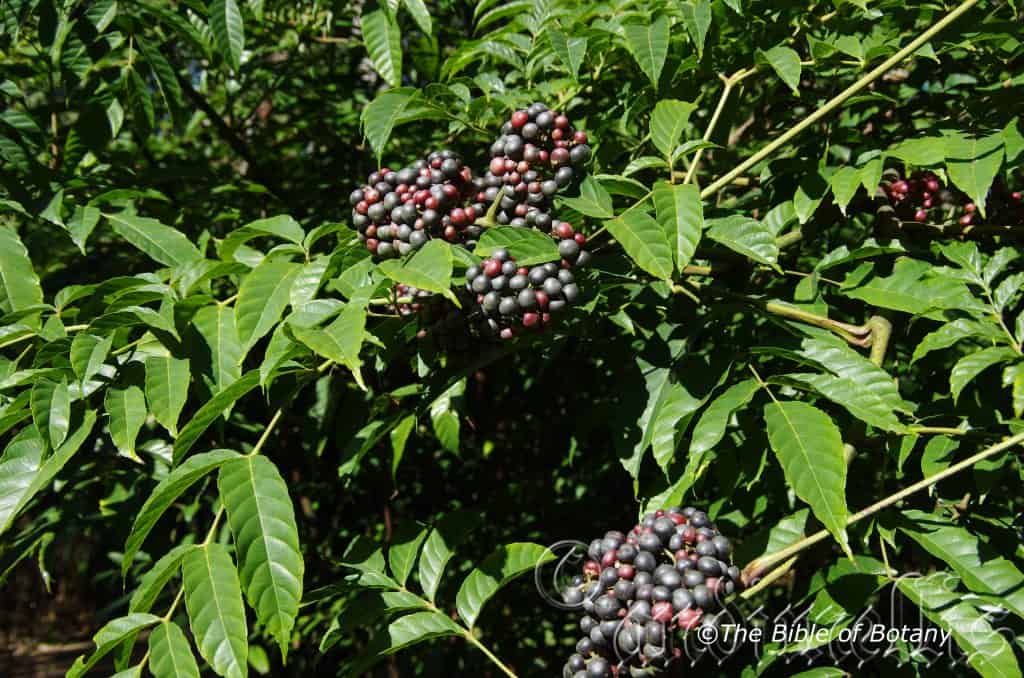
Base of Castle Hill Townsville Qld.
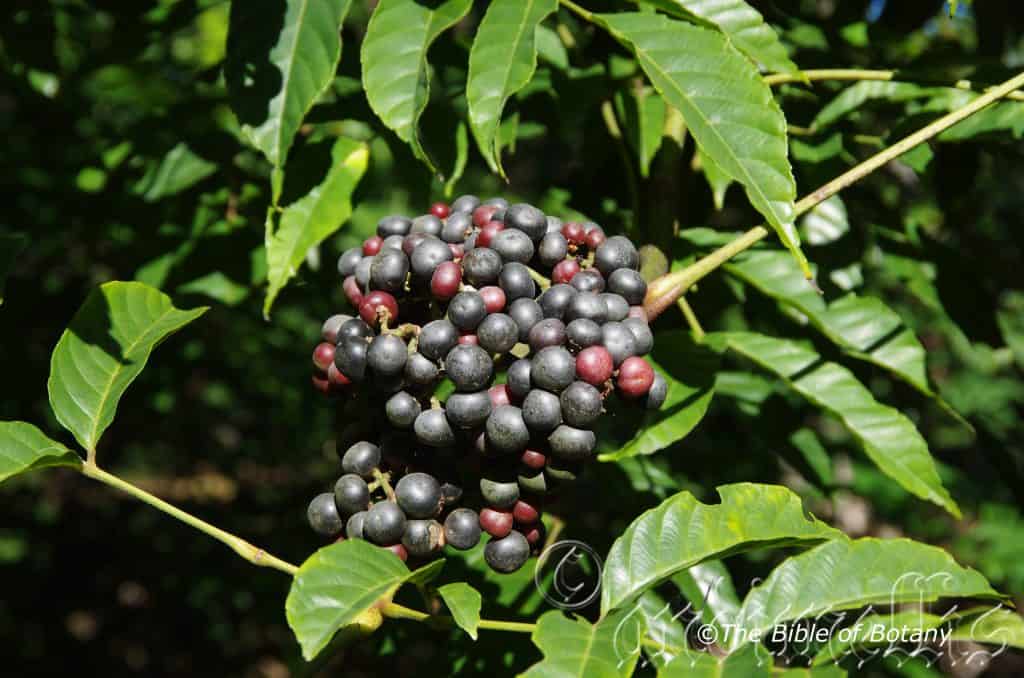
Base of Castle Hill Townsville Qld.
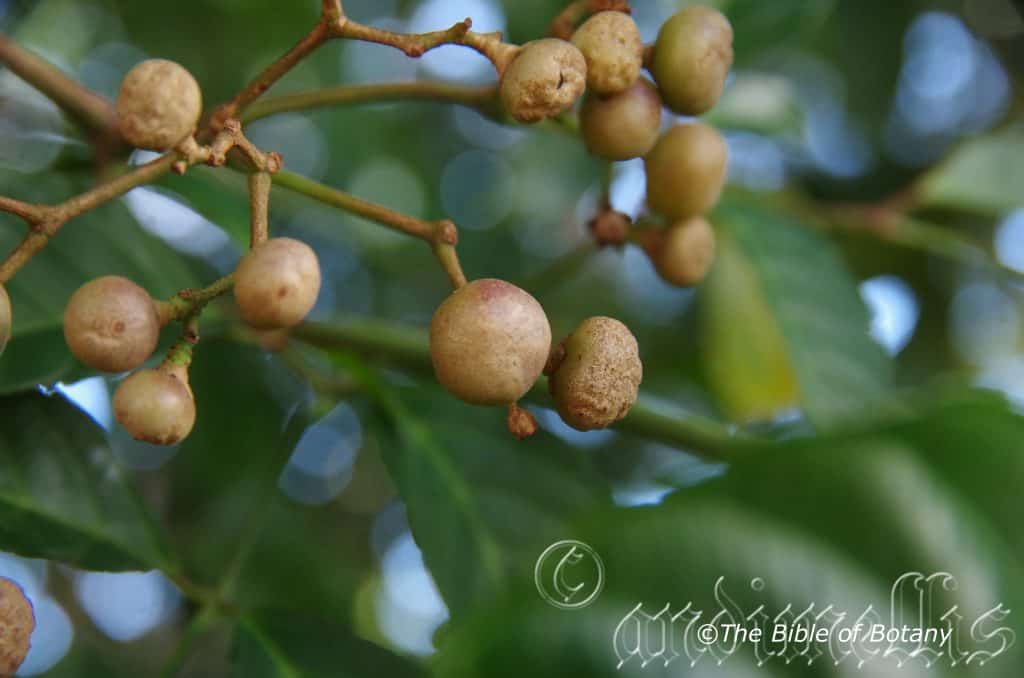
Base of Castle Hill Townsville Qld.
Leea novoguineensis
Classification:
Unranked: Eudicots
Unranked: Rosids
Order: Vitales
Family: Vitaceae
Genus: Is probably named in honour of James Lee 1715-1795, who was an English horticulturalist and nurseryman.
Specie: From Novaguinee, which is Latinized for New Guinee and Ensis, which is Latin for to originate from. It refers to the type specimen, which was first discovered in New Guinee.
Sub species:
Common Name: Bandicoot Berry.
Distribution:
Leea novoguineensis is found in 3 disjunct populations in Queensland and the Northern Territory. In the Northern Territory it is found from Darwin and Melville Island south to the Daly River Reserve in the west and in the east from the Cadel River floodplain east to Nuhlunbury and Groote Eylandt in the east.
In Queensland it is found south from the Torres Strait Islands and the tip of Cape York Peninsula to Bowen.
It is also found from southern Indian, Vietnam. Thailand, southern China, Indonesia, Philippines, Malaysia, New Guinee and South west Pacific Islands.
https://avh.ala.org.au/occurrences/search?taxa=Leea+novoguineensis#tab_mapView
Habitat Aspect Climate:
Leea novoguineensis prefers light dappled shade to full shade. It grows on coastal flats slopes and hills in or on the adjacent ranges in monsoonal forests, monsoonal vine thickets or well developed rainforests. The altitude ranges from 5 meter ASL to 300 meters ASL.
The temperatures range from 6 degree in August to 32 degrees in January.
The rainfalls range from lows of 900mm to an average of 3200mm.
Soil Requirements:
Leea novoguineensis prefer to grow on better quality sandy loams to medium clays. The soils are usually derived from decomposed granites. The soils pH ranges from 5pH to 6.5pH. It does not tolerate waterlogged soils. Non saline soils to the lower end of moderately saline soils are tolerated.
Height & Spread:
Wild Plants: 2m to 9m by 2m to 4.5m.
Characteristics:
Leea novoguineensis’s main stems are deep grey green, flat and slightly scabrous. The branchlets are grass green, and covered in lenticels and the scars from discarded leaves. It is tinged pink or red when grown in full sun.
Leea novoguineensis’s alternate, compound leaves measure 600mm to 950mm in length by 700mm to 1100mm width overall. The individual laminas measure 60mm to 210mm in length by 50mm to 90mm in width. The apex leaflet is longer than the lateral leaflets. The stipules measure 15mm to 60mm in length by 5mm to 18mm in width. The petioles measure 100mm to 700mm in length while the petiolules measure 30mm to 80mm in length. The terminal petiolule is longer than the lateral petiolules. The petiole is swollen at its point of joining with the main axils. The petioles and petiolules have a groove on the upper surface. The bases are broadly cuneate while the apexes are caudate. The concolourous laminas are grass-green, glossy and glabrous. The margins are double serrate, undulating and curve slightly upwards from the mid vein. The mid vein and lateral veins are strongly prominent on the lower lamina and is distinctly visible from above. The lateral veins curve close to the margins and remain strongly prominent. The stipule sheath covers the terminal bud is broad lanceolate and sheaths the stem at the base of the petiole after the leaf has fully emerged.
The inflorescences of Leea novoguineensis are long compound panicles and are born opposite the leaf axils. The green racemes measure 60mm to 110mm in length. The panicles are glabrous. The pedicels measure 2mm to 3mm in length. The bracts are cream. The 5 calyx lobes measure 1mm to 1.5mm in length. The glabrous corolla tube measures 2.5mm to 3.5mm in length. The corolla lobes are attached to the staminal tube. Individual corollas and lobes are pale green. The lobes are oblong with the margins curving upwards at the apex to form a small triangular cup. The lobes measure 8mm to 10mm in length.
Only the stamen’s anthers protrude from the staminal tube opening. The style is inserted in the corolla tube. The ovary has 6 oculars with a single ovule in each locule. The flowers appear from September to November.
Leea novoguineensis’s fruits are flattened globose drupes. The drupes measure 4mm to 11mm in length by 6mm to 15mm in diameter. The calyx is persistent on the deep red to purple-black drupes. The six seeds are cream and measure 5mm in length by 4mm in diameter.
Wildlife:
The flowers of Leea novoguineensis are very popular amongst small and medium size nectar feeding insects including native flies, beetles and bees.
The fruits are eaten by fruit eating doves and pigeons, Cat Birds and Bower Birds.
Cultivation:
Leea novoguineensis is beautiful small native shrubs with very large leaves that grow particularly well on heavier moist soils in part to full shade. It is suitable for small, medium and large sunny gardens close to the coast or high in the mountains in warm temperate, sub-tropical or tropical gardens. As garden subjects they will grow from 5 meters to 6 meters in height by 1.5 meters to 2 meters in diameter as a single trunk tree or 2 meters to 3 meters in height by 2 meters to 3 meters in diameter as a multi trunk shrub. It is fast growing and are cold tolerant to temperatures as low as 2 degrees once established.
It is best suited to shady patches in smaller gardens or as a rainforest understory shrub in larger gardens. They can be lightly pruned to induce bushiness or planted in groups of 2 or 3 close together to give the effect of bushiness. The very large glossy leaves and colourful fruits are particularly attractive. Plant them at 1.5 meter to 2.5 meter centers for quicker growth. The flowers have a honey scent.
Propagation:
Seeds: Leea novoguineensis seeds can be sown directly into a seed raising mix. Cover them with 5mm to 6mm of fine weed free mulch and keep moist. Place the tray in a warm sunny position. When the seedlings are 20mm to 30mm tall, prick them out and plant them into 50mm native tubes using a good organic mix.
Once the seedlings reach 100mm to 150mm in height they can be planted out into their permanent position.
Cuttings: Use 100mm to 200mm long hardened material when growing from cuttings from the present season’s growth. Take them in warmer months of the year. Remove half the leaves from the bottom section being careful not to tear the bark.
1 Prepare the cutting mix by adding one third sharp clean river sand, one third peat and one third perlite. These ingredients are sterilize,
2 Select good material from non diseased plants,
3 Select semi green stems for cuttings. Look for a stem with two or three nodes,
4 Place the cutting on a flat, hard surface, and make a clean cut down one side of the cutting at the base for 10mm with a sharp sterile knife or razor blade. – This scarification of the node will increase the chances of roots emerging from this spot. Now remove all but one or two the leaves, leaving the apex leaves in tact. If the leaves are very large in proportion to the stem, cut off the apical halves.
5 Fill a saucer with water, and place a little medium strength rooting hormone into another container like a milk bottle top. Dip the node end of the cutting into the water and then into the rooting hormone. Tap off any excess hormone,
6 Use a small dipple stick or old pencil to poke a hole into the soilless potting mix. Ensure the hole is slightly larger than the stem diameter and be careful not to wipe the rooting hormone off the cuttings base, place the cuttings in a pattern ensuring the cuttings are not touching each other,
7 I like to place the pots in Plastic bags to help maintain temperature and moisture. Place in a semi shaded place like under 50mm shade cloth.
8 When the cuttings have struck, open the bag to allow air circulation for a few days to a week,
9 Once hardened off remove the cuttings from the bag and allow to further hardening for a few more days,
10 Transplant into a good potting mix to grow on.
Fertilize using seaweed, fish emulsion or organic chicken pellets soaked in water on an alternate basis. Fertilize every two months until the plants are established then twice annually in early September or March to maintain health, vitality and better flowering.
Further Comments from Readers:
Hi reader, it seems you use The Bible of Botany a lot. That’s great as we have great pleasure in bringing it to you! It’s a little awkward for us to ask, but our first aim is to purchase land approximately 1,600 hectares to link several parcels of N.P. into one at The Pinnacles NSW Australia, but we need your help. We’re not salespeople. We’re amateur botanists who have dedicated over 30 years to saving the environment in a practical way. We depend on donations to reach our goal. If you donate just $5, the price of your coffee this Sunday, We can help to keep the planet alive in a real way and continue to bring you regular updates and features on Australian plants all in one Botanical Bible. Any support is greatly appreciated. Thank you.
In the spirit of reconciliation we acknowledge the Bundjalung, Gumbaynggirr and Yaegl and all aboriginal nations throughout Australia and their connections to land, sea and community. We pay our respect to their Elders past, present and future for the pleasures we have gained.
Leersia hexandra
Classification:
Unranked: Monocots
Unranked: Commelinids
Order: Poales
Family: Poaceae
Subfamily: Ehrhartoideae
Tribe: Oryzeae
Genus: Is named in honour of Johan Daniel Leers; 1727–1774, who was a German apothecaryist and botanist who wrote “Flora Herbornensis”.
Specie: From Hex, which is Ancient Greek for six and Andros, which is Ancient Greek for a man. It refers to plants, which have six stamens.
Sub specie:
Common Name: Swamp Rice Grass.
Distribution:
Leersia hexandra is found along the coastal from north of Broome in central coastal Western Australia to Groote Eyelandt in the western Northern Territory.
In the eastern states it is found south from Lockerbi in far North Queensland on Cape York Peninsula to the Sydney Basin in central coastal New South Wales. It is mainly found on the Western Slopes, on and east of the Great Dividing Range to the coast except for an isolated population on George Creek near Cloncurry.
https://avh.ala.org.au/occurrences/search?taxa=Leersia+hexandro#tab_mapView
Habitat Aspect Climate:
Leersia hexandra prefers full sunlight to very light dappled shade. It grows in and on the edge of swamps, wallums billabongs, creeks, streams and rivers especially on the flood plains, drainage lines, ditches and gutters and in low depressions which fill with water. It is an open aquatic or semi aquatic annual or perennial which often forms dense floating mats spreading out from the banks of creeks and billabongs where the water is deeper. The altitude ranges from 1 meter ASL to 600 meters ASL.
The temperatures range from minus 2 degrees in August to 42 degrees in January.
The rainfall ranges from lows of 300mm to 3200mm average per annum. Rainfall is not as important as the available ground water.
Soil Requirements:
Leersia hexandra prefers course sands to heavy clays but thrives on fertile alluvial flats. The soils are derived from decomposed sandstone, granites, shale, metamorphic rocks, brown basalt, black basalt, light to heavy alluviums or accumulated beach sands. The soils pH ranges from 4.5pH to 7.5pH. It tolerates waterlogged soils. Non saline soils to very saline soils are tolerated as are salt laden winds.
Height & Spread:
Wild Plants: 0.35m to 1.5m by several hundreds of square meters.
Characteristics:
Note: All measurements have been taken from plants around Chongqing China.
Leersia hexandra long branching rhizomes are rigid and tough. The culms are erect or geniculately ascending and measure 350mm to 1500mm in height. The mid culms are glabrous while the nodes are densely covered in white pubescent hairs. The lateral branches are simple. The scabrous ligules have a truncate apex, are eciliate, membranous and measure 1mm to 2mm in length.
The linear leaves measure 60mm to 200mm in length by 2mm to 16mm in width. The leaf sheaths are introrsely scabrous while the ligules are eciliate membranes. The lowest sheaths are often loose clasping, striated and glabrous or scabrous or sparsely covered on white hispid hairs. The margins are entire and at times ciliate. The oblique, truncate ligules are membranous and measure 1.5mm to 2.5mm in length. The concolourous laminas are pale blue-green to grass-green and are glabrous, scaberulous to lightly scabrous. The laminas are flat or recurve slightly upwards from the mid vein to the margins while the margins are entire. The midvein is slightly prominent on the lower lamina and is faintly visible from the upper lamina
The inflorescences are loose, open, oblong compound panicles usually from the terminal leaf axils. The panicles measure 50mm to 150mm in length by 10mm to 40mm in diameter at the base.
There are 3 to 10 spikelets on a raceme and 1 to 5 racemes on each branch. The shortly pedicillate spikelets are without a rachilla and measure 3.2mm to 5.5mm in length. There is 1 laterally compressed bisexual floret in a spikelet.
The similar glumes are reduced to a minute rim.
The fertile lemmas are keeled with 5 nerves and measure 3.2mm to 5.5mm in length. The lemma’s apexes are muticus while the palea’s apex is narrow obtuse and entire. The palea has a single keel and 3 nerves. Lodicules are present on the paleas.
The 6 stamens have filiform, white filaments that measure 0.4mm to 0.6mm in length while the deep pink to deep purple-pink linear anthers are basifixed and measure 1mm to 1.5mm in length. The pistils are white while the styles measure 0.5mm to 0.7mm in length have style and the bifid feathery stigmas measure 1mm to 1.2mm in length. The flowers appear from December to February.
The ovoidal caryopses are pale fawn to pastel straw-yellow and are enclosed in the lemma and palea. Mature fertile grains rarely develop and those that do measure 1.5mm to 2mm in length by 0.5mm to 0.7mm in diameter.
Wildlife:
Leersia hexandra’s leaves have high nutritional value for stock especially when young. The leaves are eaten by the Grey Kangaroo (Macropus giganteus), the Pretty Face Wallaby (Macropus parryi) and the Swamp Wallaby (Wallabia bicolor).
It is the main safe habitat for many Australian native birds and frogs providing nesting sites, nesting material and protective covering while at the same time provides a long tern larder for many swamp inhabiting birds and migratory birds. Some of the birds inhabiting Leersia hexandra include the Red Back Wren (Malurus melanocephalus) the Red-browed finch (Neochmia temporalis) and the Chestnut-breasted Mannikin (Lonchura castaneothorax)
Enemy or friend To rice farmers and floricultural farmers it can be a nightmare while grazers fancy it on wet boggy ground and environmentalists see it as a terrific soil erosion combatant and soil conditioner.
The grass is considered a weed of several crops, including tea, rubber, maize, and sugarcane, and especially in rice paddies. It is a close relative of the commercial rice and thrives under very similar conditions putting it in the competition stakes with rice to survive. Its vegetative parts can clog irrigation drains and waterways which can lead to flash flooding siltation.
It is the host to many rice pests and diseases or the basis of a strong and healthy natural food chain across the tropics worldwide. These include the brown plant hopper, or the green plant hopper (Nilaparvata bakeri), the green rice leafhopper (Nephotettix malayanus), the rice gall midge (Orseolia oryzae), and the small brown moth Helcystogramma arotraeum. It hosts the rice stem nematode, which causes Ufra disease of rice. It is susceptible to many plant viruses that infect rice plants, such as rice grassy stunt virus, rice transitory yellowing virus, and rice tungro virus. It is susceptible to fungi such as pathogenic (Xanthomonas oryzae) which causes leaf blight in rice and brown spot (Cochliobolus miyabeanus).
The grass is palatable to cattle and it is maintained as a pasture grass on swampy land and cut for hay in many parts of the world including Australia.
This species is strongly hyper cumulating of heavy metals and has the ability to take up large amounts of chrome, copper, and nickel from water and soil. It is considered to be a potential agent of phyto remediation in efforts to clean up metal-contaminated soils and water including industrial sewage and industrial and mining waste ponds.
Cultivation:
Leersia hexandra is not the grass to grow around the house because of its size and potential invasiveness in the garden. For broad acreage it has many advantages as listed above.
Propagation:
Seeds: Collecting seeds from mature plants of Leersia hexandra is not difficult but the collector must be vigilant as the seeds will disperse over in a matter of a couple of days to a week when fully ripe.
The fresh seeds can be sown directly into a seed raising mix however better; more even germination is gained if the seeds are stratified for a short period and sown in spring. This can be achieved by placing the seeds in a paper bag in the vegetable crisper for a few weeks prior to sowing. Cover the seeds to a depth of 2mm. Seeds usually germinate rapidly with a strike rate of less than 10mm.
When the seedlings are 20mm to 30mm tall, prick them out and plant them into 50mm native tubes using a good quality mix.
Once the seedlings reach 50mm in height they can be repotted for indoor use or 100mm to 150mm in height plant them out into their permanent position.
Fertilize using seaweed, fish emulsion or organic chicken pellets soaked in water on an alternate basis. Fertilize every two months until the plants are established then twice annually in early September and March to maintain health, vitality and better flowering.
Further Comments from Readers:
Hi reader, it seems you use The Bible of Botany a lot. That’s great as we have great pleasure in bringing it to you! It’s a little awkward for us to ask, but our first aim is to purchase land approximately 1,600 hectares to link several parcels of N.P. into one at The Pinnacles NSW Australia, but we need your help. We’re not salespeople. We’re amateur botanists who have dedicated over 30 years to saving the environment in a practical way. We depend on donations to reach our goal. If you donate just $5, the price of your coffee this Sunday, We can help to keep the planet alive in a real way and continue to bring you regular updates and features on Australian plants all in one Botanical Bible. Any support is greatly appreciated. Thank you.
In the spirit of reconciliation we acknowledge the Bundjalung, Gumbaynggirr and Yaegl and all aboriginal nations throughout Australia and their connections to land, sea and community. We pay our respect to their Elders past, present and future for the pleasures we have gained.
Leichhardtia flavescens
Classification:
Phylum: Charophyta
Class: Equisetopsida
Subclass: Magnoliidae
Superorder: Asteranae
Order: Gentianales
Family: Apocyanaceae
Genus: Is named in honour of Ludwig Leichardt; 1813 – c. 1848 who was a German explorer and naturalist, who was most famous for his exploration of northern and central Australia.
Specie: From Flavum, which is Latin for turning or becoming yellow. It refers to the colour of the stems, leaves or more often the flowers, which turn yellowish or yellow-ochre following anthesis.
Sub species:
Common Name: Hairy Milk Vine.
Distribution:
Leichhardtia flavescens is found south from the Darlington Range between Yatalla and Ormeau in south eastern coastal Queensland to Bairnsdale in eastern Victoria.
https://avh.ala.org.au/occurrences/search?taxa=Leichardtia+flavescens#tab_mapView
Habitat Aspect Climate:
Leichhardtia flavescens prefers dappled light to moderate shade. It grows in dry rainforests, subtropical rainforests or warm temperate rainforests. The altitude ranges from 5 meters ASL to 550 meters ASL.
The temperatures range from minus 3 degrees in August to 38 degrees in January.
The rainfalls range from lows of 500mm to an average of 2000mm.
Soil Requirements:
Leichhardtia flavescens prefers to grow on light fatty clays to medium clays. The soils are usually derived from decomposed black basalts, sandstones granites or shale. The soils are deep with a good water holding capacity. The soils pH. ranges from 6pH to 7pH. It does not tolerate waterlogged soils. Non saline soils to moderately saline soils are tolerated.
Height & Spread:
Wild Plants: 3m to 6m by 3m to 6m.
Characteristics:
Leichhardtia flavescens is a twinning climber. The main stems are creamy-grey to creamy-brown with a corky appearance. The deep green twinning stems are and covered in off white flaky scales. The new shoots are deep green and are moderately covered in soft creamy fawn to white pulverulent hairs. The stems exude pastel yellowish milky latex when damaged.
Leichhardtia flavescens’s opposite, oblong or narrow-oblong leaves measure 30mm to 120mm in length by 15mm to 45mm in width. The bases are rounded to very slightly rounded-cordate while the apexes are obtuse with a bluntly cuspidate tip. The discolourous laminas are deep green to sea-green, semi glossy and glabrous on the upper lamina while the lower laminas are yellowish-green and moderately to densely covered with creamy fawn to golden fawn pulverulent hairs especially along the midvein. The laminas are flat to undulating and slightly to moderately recurve from the mid vein to the margins while the margins are entire. The mid vein is strongly prominent below and is distinctly visible from above while the 12 to 18 lateral veins are slightly prominent on both laminas. The narrow linear, caduceous stipules are only present on the very young shoots and measure 60mm to 100mm in length by 2.5mm in width. The petioles are moderately to densely covered with creamy fawn to golden fawn pulverulent hairs and measure 5mm to 15mm in length.
The inflorescences of Leichhardtia flavescens are 2 to 6 umbels born on panicles which are born from the axils. The peduncules, rachises and pedicels are moderately to densely covered with creamy fawn to golden fawn pulverulent hairs. The pedicels measure 4mm to 6mm in length. The individual flowers measure 3mm to 4mm in diameter. The pale yellow corolla is rotate and glabrous. The corolla tube measures 1mm to 1.5mm in length and is glabrous. The corona segments are short, broad and have 2 auricles at base. The 5 pale yellow divaricate lobes are oblong with obtuse apexes. The 5 lobes measure 1.5mm to 2mm in diameter.
The pale creamy yellow anthers measure 0.3mm in length while the pollen is aggregated in pollinia, which measure 0.2mm in length by 0.25mm in diameter. The obtuse style head is glandular and measures 1mm in length. The faint fruity scented flowers appear from December to February.
Leichhardtia flavescens’s fruits are narrow fusiform, glabrous follicles. The follicles measure 40mm to 60mm in length by 4mm to 9mm in diameter. The green follicles turn grey when ripe. The deep brown to black ovate seeds measure 5mm to 9mm in length by 3.5mm to 4mm in width. The corolla lobes are persistent on the ripe follicles. The white plumes are not barbed, and measure 30mm to 35mm in length.
Wildlife:
Leichhardtia flavescens is unknown to the author. The position of the flowers, nectarines and scent would indicate that they may be visited by small nectar feeding nocturnal insects.
While the plants are toxic to humans its leaves offer a regular all round food source for the Blue Tigers butterflies (Tirumala hamata) and the Common Crow butterfly (Euploea core) and many species of the Danaus genera of butterflies.
Cultivation:
Leichhardtia species are one of Australia’s most overlooked garden vines and are often treated as weeds by gardeners. As garden subjects they will grow from 3m to 5m in height by 3m to 5m in diameter when grown in the open on a trellis. It is cold tolerant to temperatures at least as low as minus 3 degrees once established. The vines are drought resistant.
It is best planted in a position where it goes unnoticed and won’t cause any problems climbing over your precious more valued plants. When it comes into flower the faint scent is quite divine.
Mass plantings of 4 or 5 close together make the plants more appealing to look at making the clump denser and increasing the number of summer flowers.
Propagation:
Seeds: Leichhardtia flavescens seeds can be sown directly into a seed raising mix. Cover the seeds with 1mm to 2mm of fine weed free mulch and keep moist. Place the tray in a warm sunny position. When the seedlings are 15mm to 20mm tall, prick them out and plant them into 20mm native tubes using a good organic mix.
When the seedlings are 70mm to 90mm tall, prick them out and plant them into 50mm native tubes using a good organic mix or plant them out into their permanent positions.
Once the seedlings reach 150mm to 200mm in height they can be planted out into their permanent position.
Fertilize using seaweed, fish emulsion or organic chicken pellets soaked in water on an alternate basis. Fertilize every two months until the plants are established then twice annually in early September or March to maintain health, vitality and better flowering.
Further Comments from Readers:
Hi reader, it seems you use The Bible of Botany a lot. That’s great as we have great pleasure in bringing it to you! It’s a little awkward for us to ask, but our first aim is to purchase land approximately 1,600 hectares to link several parcels of N.P. into one at The Pinnacles NSW Australia, but we need your help. We’re not salespeople. We’re amateur botanists who have dedicated over 30 years to saving the environment in a practical way. We depend on donations to reach our goal. If you donate just $5, the price of your coffee this Sunday, We can help to keep the planet alive in a real way and continue to bring you regular updates and features on Australian plants all in one Botanical Bible. Any support is greatly appreciated. Thank you.
In the spirit of reconciliation we acknowledge the Bundjalung, Gumbaynggirr and Yaegl and all aboriginal nations throughout Australia and their connections to land, sea and community. We pay our respect to their Elders past, present and future for the pleasures we have gained.
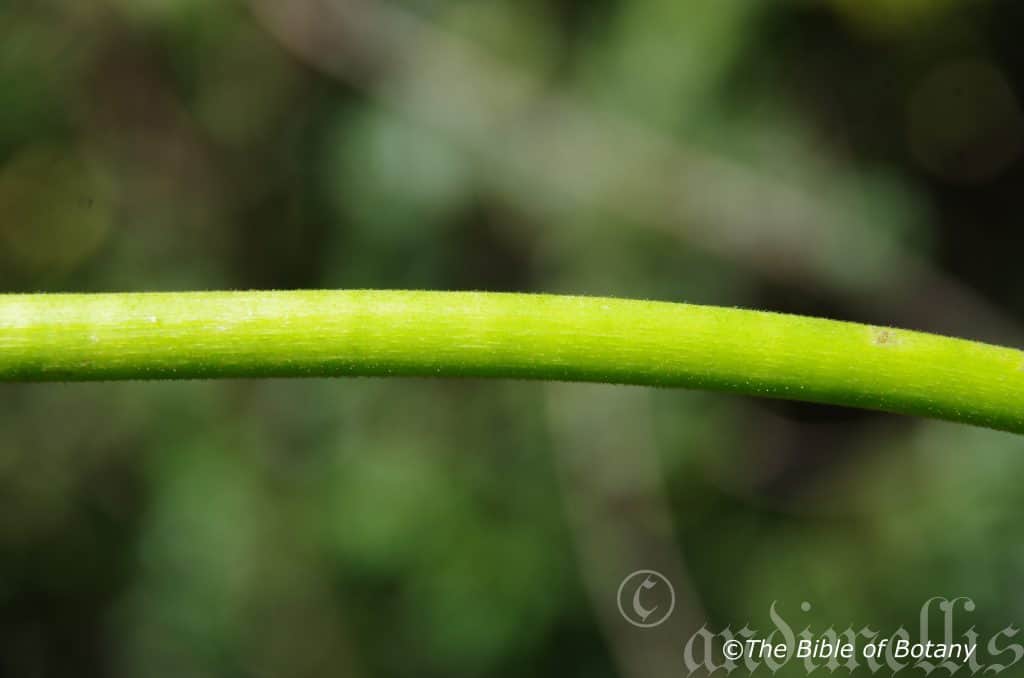
Washpool National Park NSW
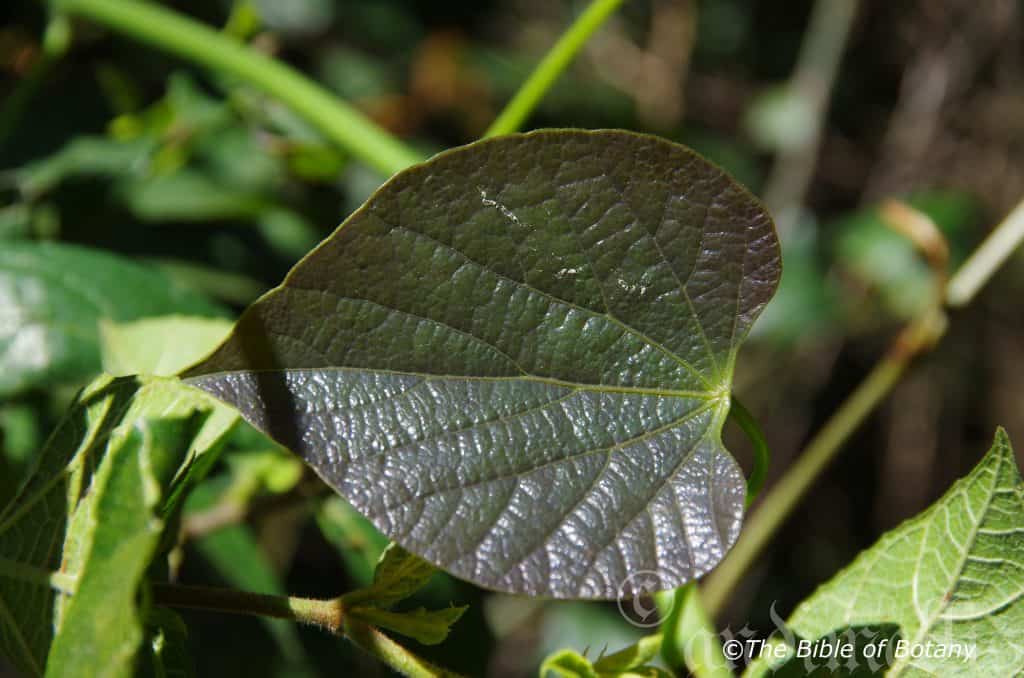
Washpool National Park NSW
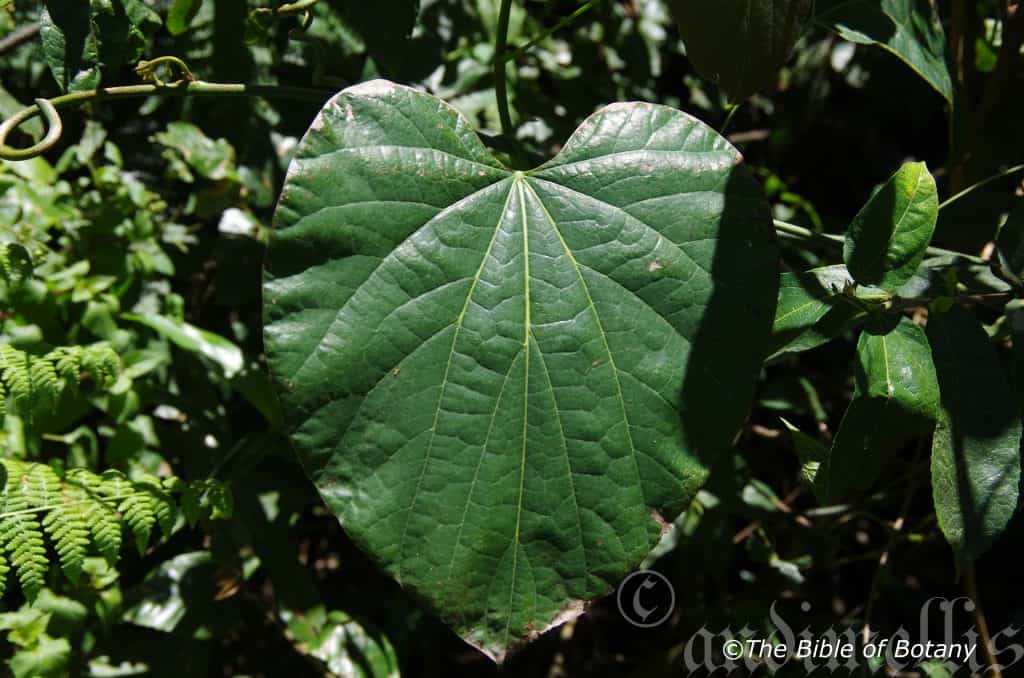
Washpool National Park NSW
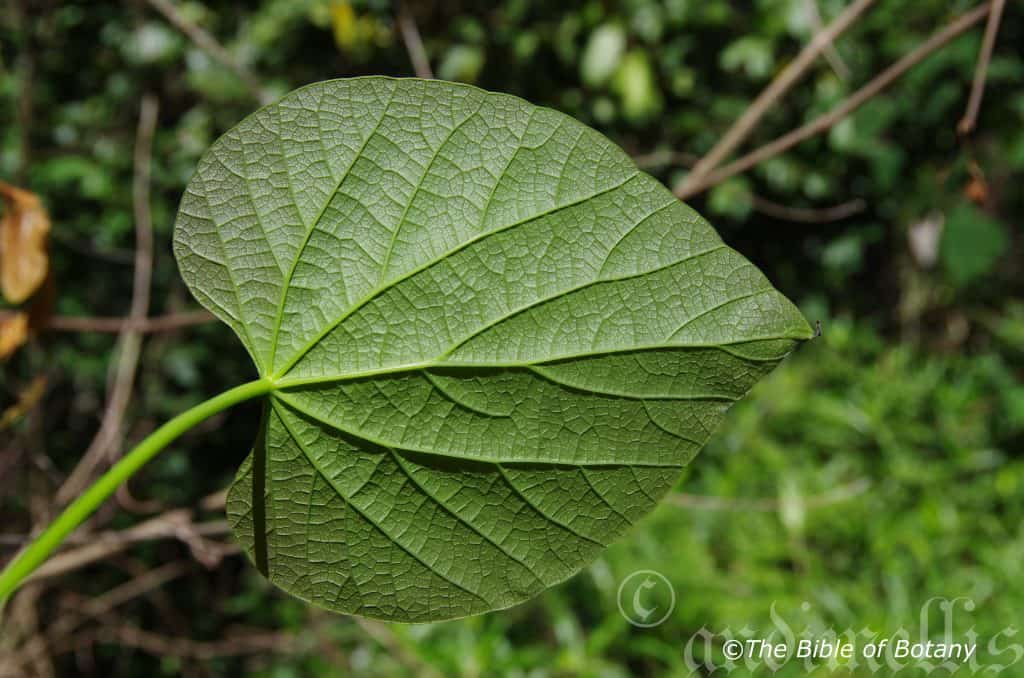
Washpool National Park NSW
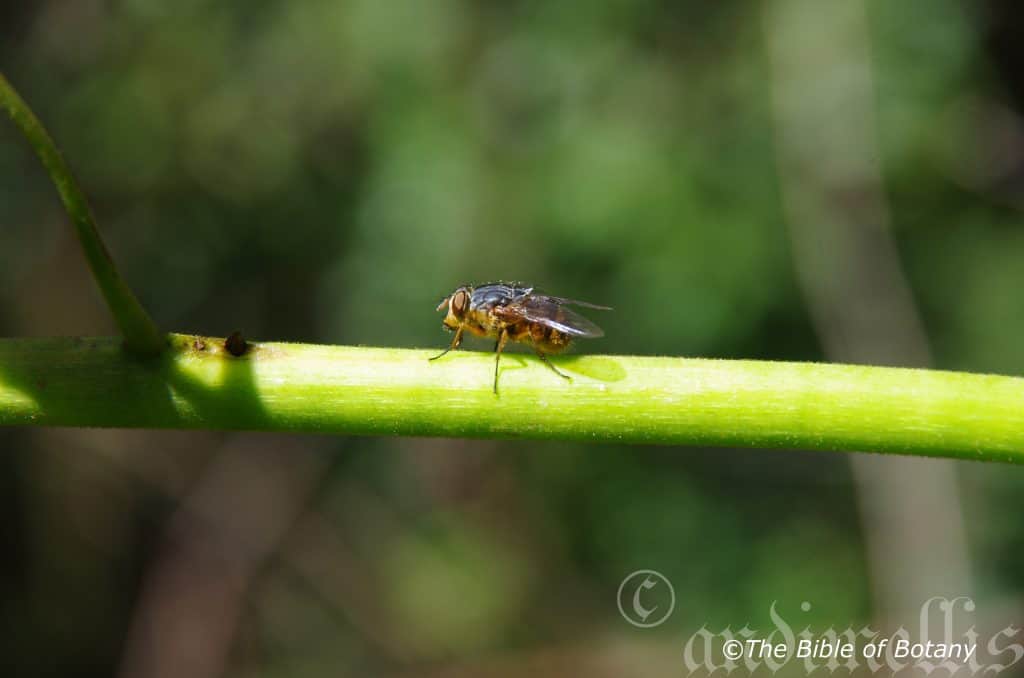
Washpool National Park NSW
Legnephora moorei
Classification:
Unranked: Eudicots
Order: Ranunculales
Family: Menispermaceae
Genus: From Lignum, which is Latin for wood or fire wood and Phoros which is Ancient Greek for bearing. It refers to structures or organs which are rather woody as in trees. Many of the species are large woody vines.
Specie: Is named in honour of Charles Moore; 1820–1905, who was an Irish born Australian botanist. He arrived in Sydney on 14 January 1848 and took up the position of Director of the Royal Botanic Garden, Sydney, a position he held until 5 May 1896. He was a keen seed collector and specimen collector of plants in in eastern New South Wales on behalf of Ferdinand von Mueller.
Sub species:
Common Name: Round Leaf Vine.
Distribution:
Legnephora moorei is found in 3 disjunct populations south from the Windsor Tableland to the Herbert River in far north Queensland. It is also found on the Whitsunday Islands, Eungella National Park and Eimeo on the central coastal Queensland. The southern population is found south from the Broad Sound in central coastal Queensland to Milton near Shoal Haven Bay in central coastal New South Wales. It is mainly found on and east of the Great Dividing Range.
https://avh.ala.org.au/occurrences/search?taxa=Legnephora+moorei#tab_mapView
Habitat Aspect Climate:
Legnephora moorei prefers light dappled shade to medium shade. It grows in dry sclerophyll forests to wet Eucalyptus forests along creek beds swamps and wallums. The altitude ranges from 1 meter ASL to 1000 meters ASL.
The Temperatures range from 2 degree in August to 38 degrees in January.
The rainfalls range from lows of 950mm to an average of 3000mm.
Soil Requirements:
Legnephora moorei prefer to grow on sandy loams or medium sandy clays. The soils are usually derived from decomposed brown basalts, black basalts and metamorphic rocks or at times sandstone and granites. The soils pH ranges from 5pH to 7pH. It does not tolerate waterlogged soils. Non saline soils to moderately saline soils are tolerated.
Height & Spread:
Wild Plants: 4m to 16m by 3m to 5m.
Characteristics:
Legnephora moorei is a woody climber with deep grey to almost black longitudinal tessellated bark. Old stems have been recorded at 90mm in diameter. The young stems and new growth are moderately covered in golden to golden-brown pubescent to hirsute hairs.
The alternate usually ovate to orbicular or at times subreniform leaves, measure 80mm to 200mm in length by 80mm to 200mm in diameter. The pulvinus is present at the base of the petioles and measures 3mm to 5mm in length. The petioles are grooved on the upper surface, are moderately to densely covered in golden to golden-brown caduceous, pubescent to hirsute hairs and measure 50mm to 150mm in length and are usually longer than the leaves.
The bases are broadly cordate while the apexes are broad obtuse. The discolourous laminas are sea-green, semi glossy and glabrous on the upper laminas while the lower laminas are pale ash-green to pastel green, dull and moderately to densely covered in golden to golden-brown caduceous pubescent hairs. The laminas are flat or decurve downwards from the base to the margins and apex while margins are entire. The 5 to 8 radiating veins from the base and secondary veins are prominent on the lower lamina and are clearly visible on the upper lamina.
The new growth is pale bluish-green to glossy bronze while the fallen leaves turn black before being discarded.
The dioecious inflorescences are simple racemes or loose panicles born from the leaf axis and measure 20mm to 85mm in length. The peduncle measures 10mm to 15mm in length.
The male inflorescences are covered in short golden pubescent hairs. The flowers measure 5mm to 7mm in diameter. The pedicels are covered in short golden puberulent hairs and measure 5mm to 8mm in length. The 6 or 8 sepals are in two whorls. The bright green outer elliptical sepals have an acute apex, are covered in white puberulent hairs especially on the margins and measure 1.8mm to 2.3mm in length by 1mm to 1.2mm in width. The bright green inner ovate sepals have an obtuse to broad accuminate apex, are covered in white puberulent hairs especially on the margins and measure 1.8mm to 2.3mm in length by 1.8mm to 2.3mm in width. The 6 or 8 petals are glabrous surrounds a single stamen. The pastel yellow to pastel yellow-green petals measure 0.8mm to 1mm in diameter. The base is cordate while the apex is almost truncate. The pastel yellow-green gelatinous looking filaments measure 1mm in length while the yellow globose anthers measure 0.25mmin length by 0.25mm in diameter.
The female inflorescence measure 6mm to 7mm in diameter. The pedicels are covered in short golden pubescent hairs and measure 3.5mm to 5mm in length. The sepals are in 2 whorls of 3.The bright green outer elliptical sepals have an acute apex, are covered in white puberulent hairs with longer hairs on the margins and measure 2.4mm to 2.6mm in length by 1mm to 1.2mm in width. The bright green inner ovate sepals have an obtuse to broad accuminate apex, are covered in white puberulent hairs with longer hairs on the margins and measure 1.8mm to 2.3mm in length by 1.8mm to 2mm in width.
The petals are absent in the female flowers. The 6 gelatinous looking staminodes are pastel green to pale green and measure 1mm in length by 1mm in width. The 3 carpels are densely covered in white sericeous hairs and measure 1mm to 1.5mm in length. There is 1 ovule in each carpel. The gelatinous looking styles are pastel green to pale green with a bifid stigma. The flowers appear from December to February.
The fruits are broad, laterally compressed globose berries. The 3 locular berries measure 12mm to 14mm in length by 13mm to 16mm in diameter. The pale green berries turn deep purplish-blue to royal-blue with a glaucous covering when ripe. The style remnants are attached close to the pedicel near the base of the ripe fruits. The endocarps are variable thick, glutinous mass and measure about 9mm to 10mm in diameter.
Wildlife:
Legnephora moorei’s flowers are fed upon by numerous small butterflies, native bees, native beetles, wasps and flies.
The attractive fruits are edible with a bland grape texture and flavour.
Cultivation:
Legnephora moorei is a beautiful medium to large creeper that deserves a place in every warm temperate, sub-tropical, tropical or semi-arid native or exotic garden provided some shade is present for most of the day. It is ideal in almost every setting on pool fences, at the edge of a rain forest in court yards, pergolas or larger rockeries where their size is balanced. In cultivation it will grow from 5 meters to 8 meters in height by 4 meters to 5 meters in width.
It grows exceptionally well on lighter soils where deep leaf litter keeps the soil cool and moisture at an even level. If these requirements are met they can cope with temperatures as low as minus 2 degrees and up to 40 degrees.
Add to the above, if it is given an adequate supply of native fertilizers on a regular basis the plants will respond with spectacular flowering and fruiting over a long period.
It often reaches its full potential in just 5 years and flower from the third year from seed.
Be imaginative when planting on pergolas, fences or other structures. Use the plants in different configurations and with different creepers that flower at different periods.
Use curves and light pruning after fruiting or tip pruning will help to maintain the plant to a smaller size.
When it is in fruit these plants will catch your attention and the viewer will be transfixed and want to investigate further.
Propagation:
Seeds: Legnephora moorei seeds can be sown directly into a seed raising mix. Cover the seeds with 1mm to 5mm of fine weed free mulch and keep moist. Place the tray in a warm semi shaded position beneath 50mm shade cloth. When the seedlings are 20mm to 30mm tall, prick them out and plant them into 50mm native tubes using a good organic mix.
Once the seedlings reach 100mm to 150mm in height they can be planted out into their permanent position. Nip out the tips out if it is being used as a ground cover or on a fence and leave the growing tips intact if it is to cover a pergola.
Cuttings: Use 100mm to 160mm long mature material when growing from cuttings from the present season’s growth. Take them in warmer months of the year. Remove half the leaves from the bottom section being careful not to tear the bark and cut the remainder in half for balance. I have been told better results come if the trimming of the leaves is done a week before taking the cuttings, while still attached to the parent plant.
1 Prepare the cutting mix by adding one third sharp clean river sand, one third peat and one third perlite. These ingredients are sterilize,
2 Select good material from non diseased plants,
3 Select semi green stems for cuttings. Look for a stem with two or three nodes,
4 Place the cutting on a flat, hard surface, and make a clean cut down one side of the cutting at the base for 10mm with a sharp sterile knife or razor blade. – This scarification of the node will increase the chances of roots emerging from this spot. Now remove all but one or two the leaves, leaving the apex leaves in tact. If the leaves are very large in proportion to the stem, cut off the apical halves.
5 Fill a saucer with water, and place a little medium strength rooting hormone into another container like a milk bottle top. Dip the node end of the cutting into the water and then into the rooting hormone. Tap off any excess hormone,
6 Use a small dipple stick or old pencil to poke a hole into the soilless potting mix. Ensure the hole is slightly larger than the stem diameter and be careful not to wipe the rooting hormone off the cuttings base, place the cuttings in a pattern ensuring the cuttings are not touching each other,
7 I like to place the pots in Plastic bags to help maintain temperature and moisture. Place in a semi shaded place like under 50mm shade cloth.
8 When the cuttings have struck, open the bag to allow air circulation for a few days to a week,
9 Once hardened off remove the cuttings from the bag and allow to further hardening for a few more days,
10 Transplant into a good potting mix to grow on.
Fertilize using seaweed, fish emulsion or organic chicken pellets soaked in water on an alternate basis. Fertilize every two months until the plants are established then twice annually in early September or March to maintain health, vitality and better flowering.
Further Comments from Readers:
Hi reader, it seems you use The Bible of Botany a lot. That’s great as we have great pleasure in bringing it to you! It’s a little awkward for us to ask, but our first aim is to purchase land approximately 1,600 hectares to link several parcels of N.P. into one at The Pinnacles NSW Australia, but we need your help. We’re not salespeople. We’re amateur botanists who have dedicated over 30 years to saving the environment in a practical way. We depend on donations to reach our goal. If you donate just $5, the price of your coffee this Sunday, We can help to keep the planet alive in a real way and continue to bring you regular updates and features on Australian plants all in one Botanical Bible. Any support is greatly appreciated. Thank you.
In the spirit of reconciliation we acknowledge the Bundjalung, Gumbaynggirr and Yaegl and all aboriginal nations throughout Australia and their connections to land, sea and community. We pay our respect to their Elders past, present and future for the pleasures we have gained.
Leiocarpa serpens
Classification:
Unranked: Eudicots
Unranked: Asterids
Order: Asterales
Family: Asteraceae
Genus: From Leîos, which is Ancient Greek or Leio, which is Latin for smooth or glabrous and Karpós, which is Ancient Greek for a fruit. It refers to the fruits, which are somewhat smooth and glossy.
Specie: From Serpere, which is Latin for to creep like a snake. It refers to plants, which are more repent and crawl along the ground like a snake than other species in the genus.
Sub species:
Common Name:
Distribution:
Leiocarpa serpens is restricted to a small to several small disjunct populations in Mount Marsh State Forest on Black Mountain north of Grafton, the lower Ebor Falls, Cunnawarra National Park, Oxley Wild Rivers National Park and the Giro State Forest on the Great Dividing Range in north eastern New South Wales.
https://avh.ala.org.au/occurrences/search?taxa=Leiocarpa+serpens#tab_mapView
Habitat Aspect Climate:
Leiocarpa serpens prefers light dappled shade to full sun. It grows in dry sclerophyll forests. The altitude ranges from 850 meter ASL to 1250 meters ASL.
The Temperatures range from minus 5 degree in August to 36 degrees in January.
The rainfalls range from lows of 900mm to an average of 1200mm.
Soil Requirements:
Leiocarpa serpens prefer to grow on light sandy clays to medium sandy clays. The soils are usually derived from decomposed metamorphic sandstones or metamorphic shales. The soils pH ranges from 5pH to 6pH. It does not tolerate waterlogged soils. Non saline soils to moderately saline soils are tolerated.
Height & Spread: Wild Plants: 0.1m to 0.15m by 0.2m to 0.3m.
Characteristics:
Leiocarpa serpens is a prostrate to ascending, mat-forming annual or short lived perennial herb. The stems are pale blue-green usually covered in white glandular hairs or at times are glabrescent or scaberulous.
Leiocarpa serpens’s The crowded, narrow spathulate, obovate or oblong leaves, measure 10mm to 40mm in length by 1.5mm to 40mm in width. The bases are cauline while the apexes are acute. The concolourous laminas are pale blue-green, dull and densely covered in white glandular, hirsute and hispid viscid hairs. The laminas are flat to in rolled and decurve downwards from the bases to the apexes while the margins are entire. The mid vein is slightly prominent on the lower lamina and is faintly visible on the upper lamina.
The inflorescences are scapes born solitarily from the leaf axis. The scapes measure 65mm to 90mm in length while the heads measure 9mm to 12mm in diameter. There are 60 to 100 florets to a head. The outer bracts have narrow claws and with membranous laminas that are densely covered in white floccose while the margins are covered in white ciliate hairs. The bisexual florets are campanulate. The female florets are filiform with bright yellow corollas. The flowers appear from September to January.
The fruits are oblong cypselas with 2 to 4 distinct ribs. The cypselas measure 2mm to 4mm in length. The pale fawn cypselas turn pale brown when ripe. The pappus is a ring of shortly fused barbellate bristles that are sub plumose at the apex or are or of 1 or 2 bristles.
Wildlife:
Leiocarpa moorei’s wildlife is unknown to the author.
Cultivation:
Leiocarpa serpens are beautiful small native perennial which is suitable for small gardens to the largest garden. It is an excellent colourful addition for sub-tropical, semi-arid, sub alpine zone gardens. As garden subjects they will grow from 0.2 meters to 0.4 meters in height by 0.3 meters to 0.5 meters in diameter
It is fast growing, drought tolerant once established and are cold tolerant to temperatures at least as low as minus 4 degrees.
It is most suitable for use around sunny medium fish and frog ponds, sunny courtyards, besides pathways, small semi alpine or semi-arid rockeries and along sparsely planted banks. It is also suited for planting in small rockeries as a fill in plant. Here they can be planted in small groups of 3 to 5 or as a standalone plant to create a harsher more barren look with other arid plants. If it is surrounded by shorter plants with fine foliages and red flowers they will dominate at the center giving height and strength to the bed especially when it is in flower.
If it is placed around ponds then I would place them towards the center not at the ends and plant 3 to 5 in a straight row for a very formal look or use curves for the natural look. Here the choice of companion plants to use either side is limited only by size of the area to be landscaped. Leaf size or flower colour is limited by your imagination. The only limitation would be not to use other yellow flowering plants.
It is great adjacent to small areas of bush close to paths or the house when mass planted so their deep yellow flowers contrasting against the bluish-green leaves can be viewed regularly.
Again 2 to 5 or 7 planted back from a bend will become a very strong focal point when in flower, gain a lot of attention whether you are coming or going because of the fresh clean look of the foliage even in the driest of times. They can be tip pruned if a smaller shrub is required. Hard pruning can be done once the plants are established but some set back may occur so it is better to trim the plants on a regular or annual basis.
Ensure that the whole plant or at least most of it is on display from most sections of the garden as the flowers are a real bonus.
Whether it is in flower or not these plants will catch your attention. Mass plantings are best achieved by planting them at 0.3 meters to 0.5 meter centers. Do not crowd them with larger plants but leave plenty of room for larger plants to grow as they will succumb quickly to competition.
Propagation:
Seeds: Leiocarpa serpens seeds can be sown directly into a seed raising mix after roughing the sides with fine sandpaper to assist in germination. Cover the seeds with 1mm to 2mm of fine weed free mulch and keep moist. Place the tray in a warm sunny position. When the seedlings are 15mm to 25mm tall, prick them out and plant them into 50mm native tubes using a good organic mix.
Once the seedlings reach 100mm to 150mm in height they can be planted out into their permanent position. Nip the tips out prior to planting.
Cuttings: Water thoroughly the day before you start.
2. Cut back foliage to around 70mm to 100mm in length,
3. Use a garden fork or shovel to dig around the clump you want to remove (preferably sections that have already rooted),
4. Lift the whole section out with the roots in tact,
5. Replant in the prepared bed using half a hand full of blood and bone in the hole and mix,
9. Level off at the same level the as the plants were before,
10. Water regularly and feed fortnightly until the plants have re-established themselves.
Fertilize using seaweed, fish emulsion or organic chicken pellets soaked in water on an alternate basis. Fertilize every two months until the plants are established then twice annually in early September and March to maintain health, vitality and better flowering.
Further Comments from Readers:
Hi reader, it seems you use The Bible of Botany a lot. That’s great as we have great pleasure in bringing it to you! It’s a little awkward for us to ask, but our first aim is to purchase land approximately 1,600 hectares to link several parcels of N.P. into one at The Pinnacles NSW Australia, but we need your help. We’re not salespeople. We’re amateur botanists who have dedicated over 30 years to saving the environment in a practical way. We depend on donations to reach our goal. If you donate just $5, the price of your coffee this Sunday, We can help to keep the planet alive in a real way and continue to bring you regular updates and features on Australian plants all in one Botanical Bible. Any support is greatly appreciated. Thank you.
In the spirit of reconciliation we acknowledge the Bundjalung, Gumbaynggirr and Yaegl and all aboriginal nations throughout Australia and their connections to land, sea and community. We pay our respect to their Elders past, present and future for the pleasures we have gained.
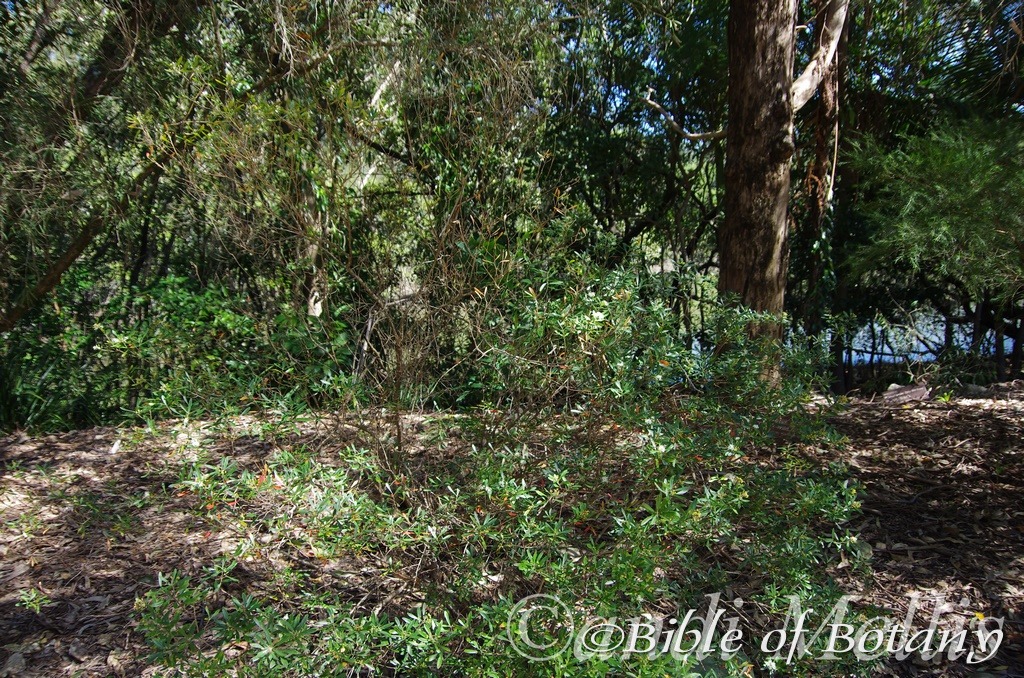
Clarence River NSW
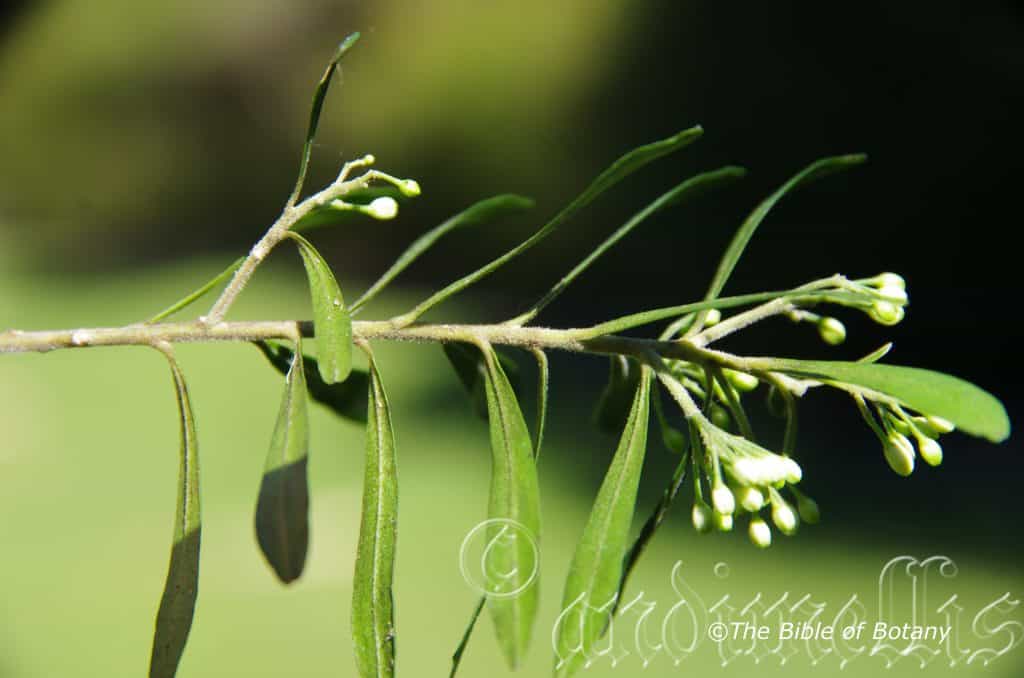
NCBG Coffs Harbour NSW
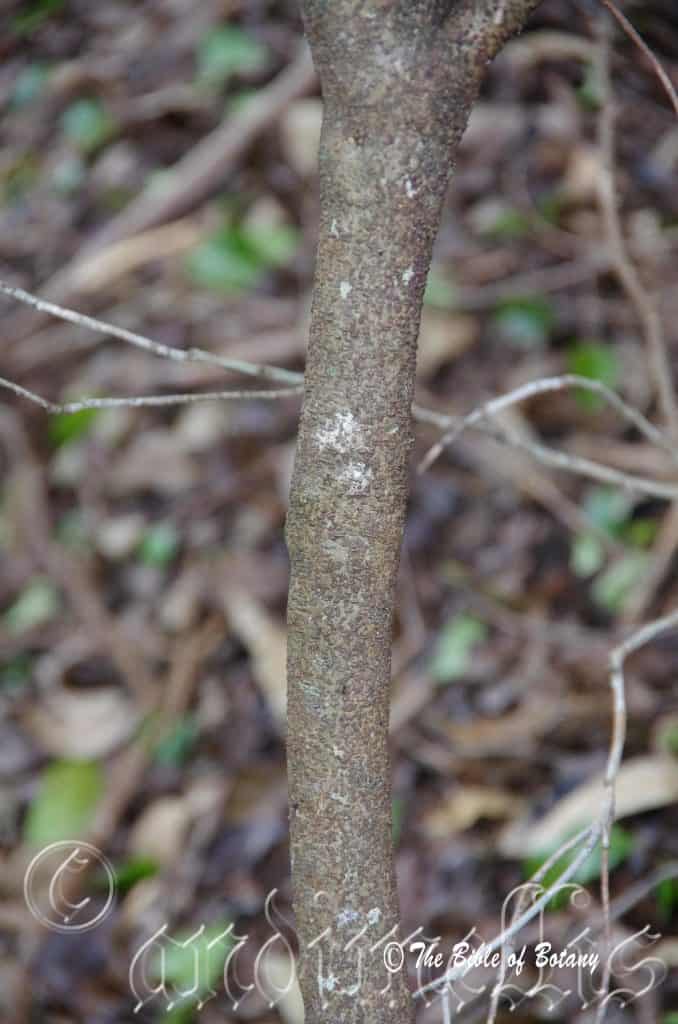
Ebor NSW
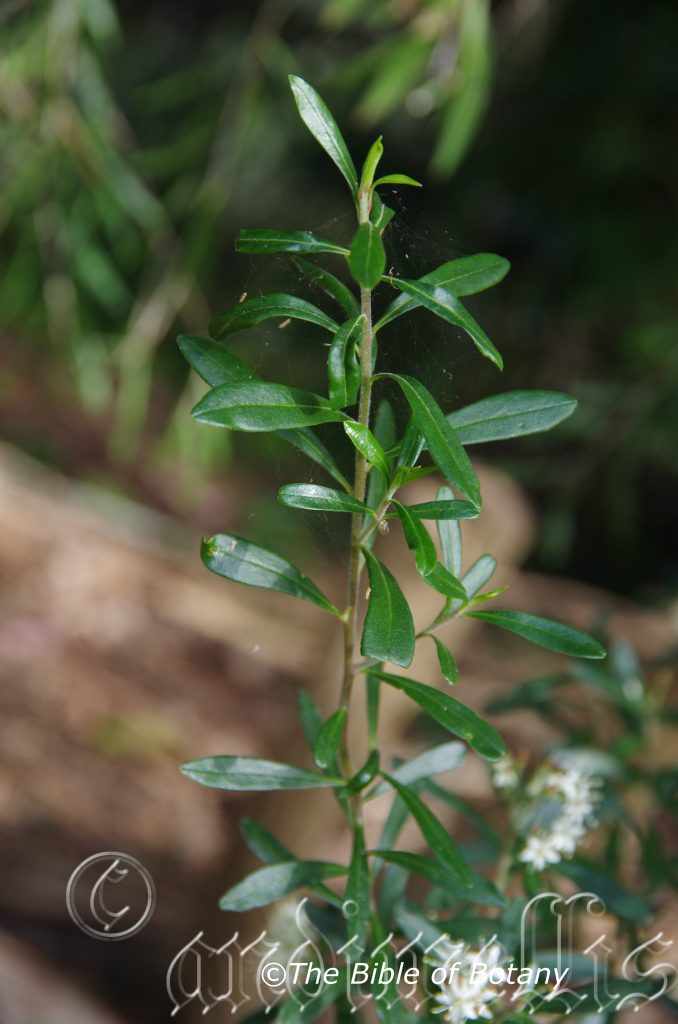
NCBG Coffs Harbour NSW
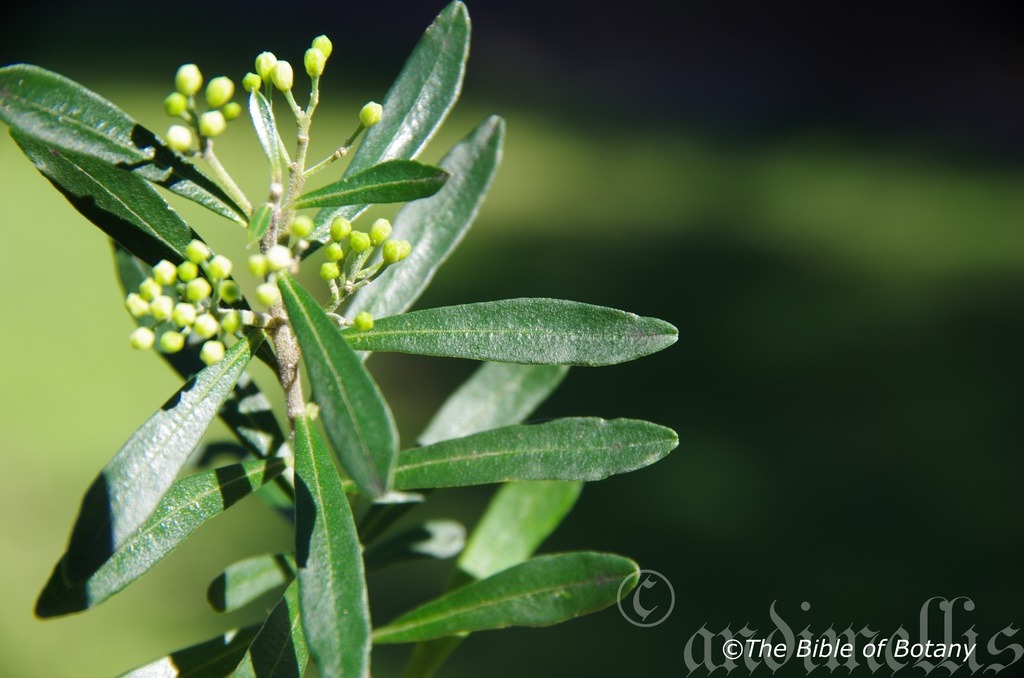
NCBG Coffs Harbour NSW
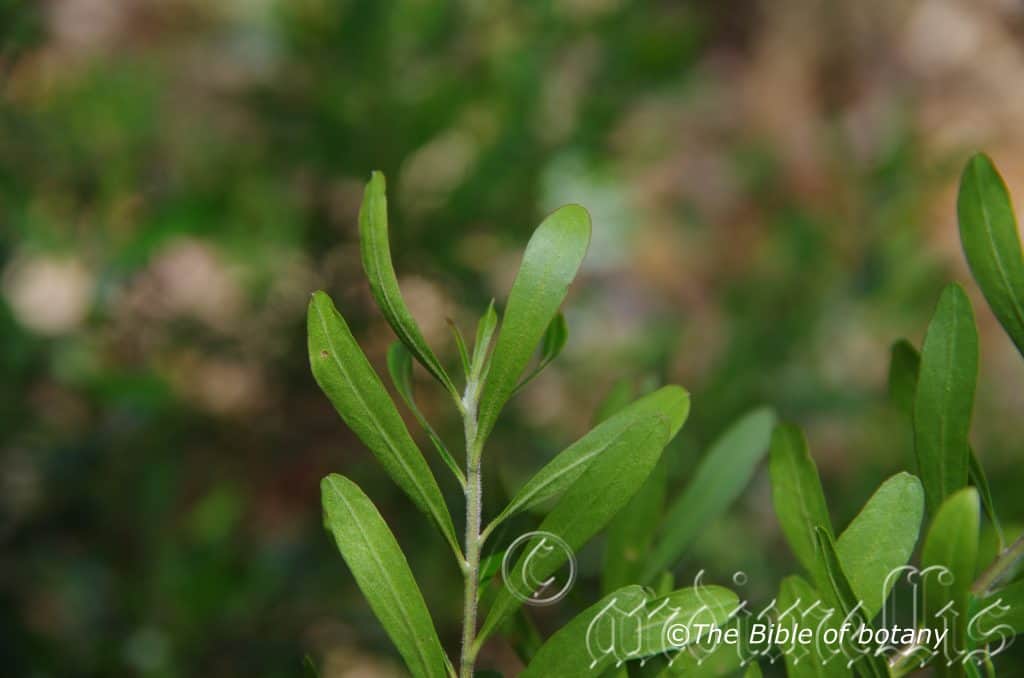
NCBG Coffs Harbour NSW
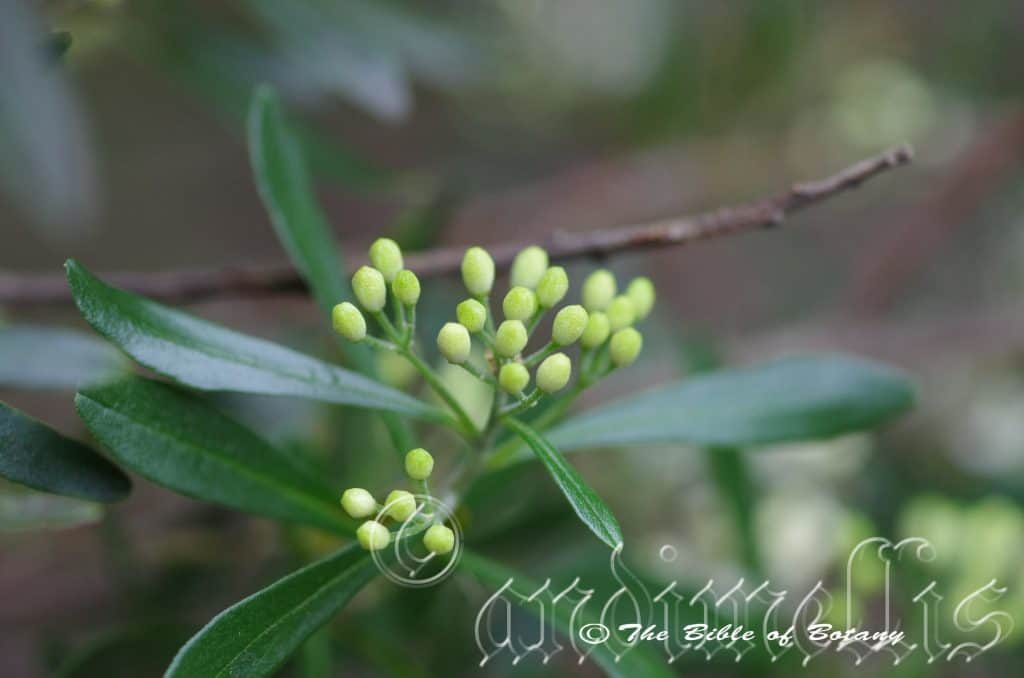
NCBG Coffs Harbour NSW
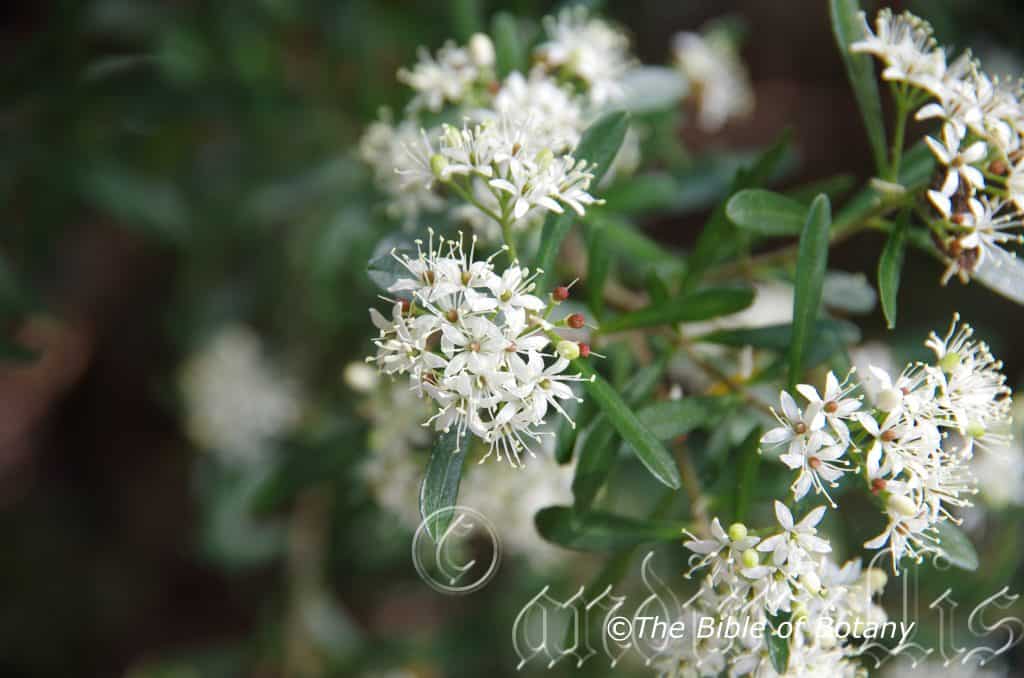
NCBG Coffs Harbour NSW
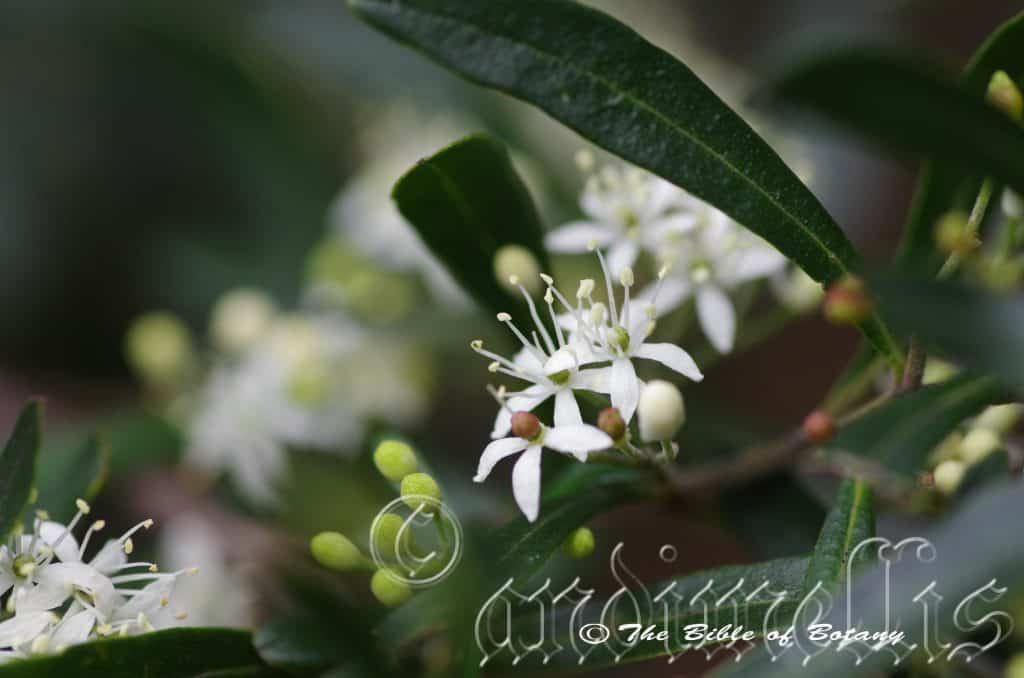
NCBG Coffs Harbour NSW
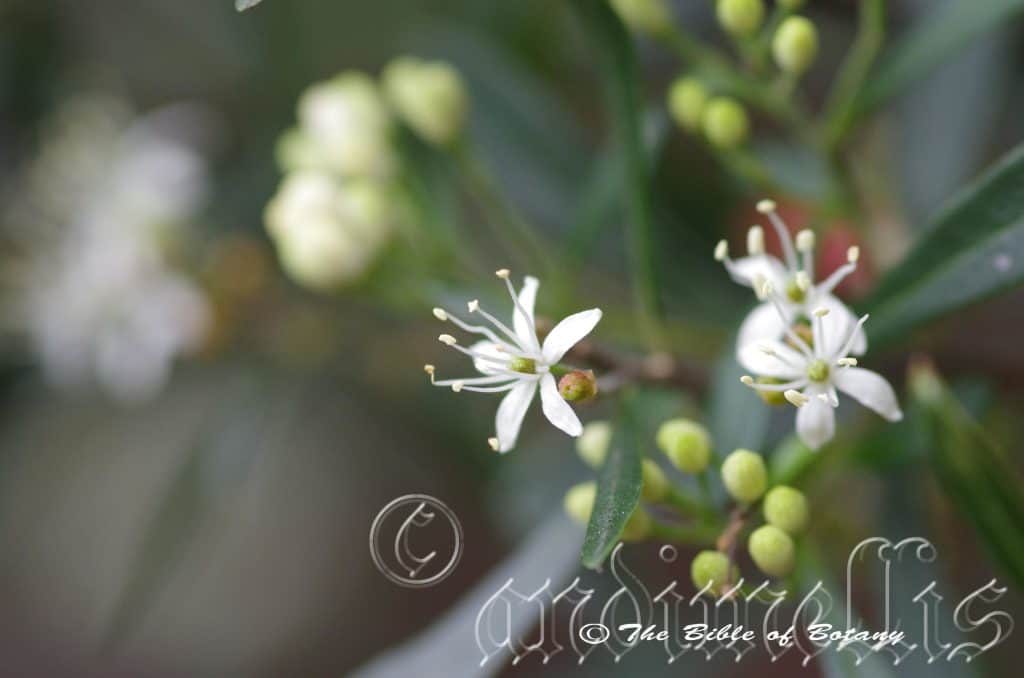
NCBG Coffs Harbour NSW
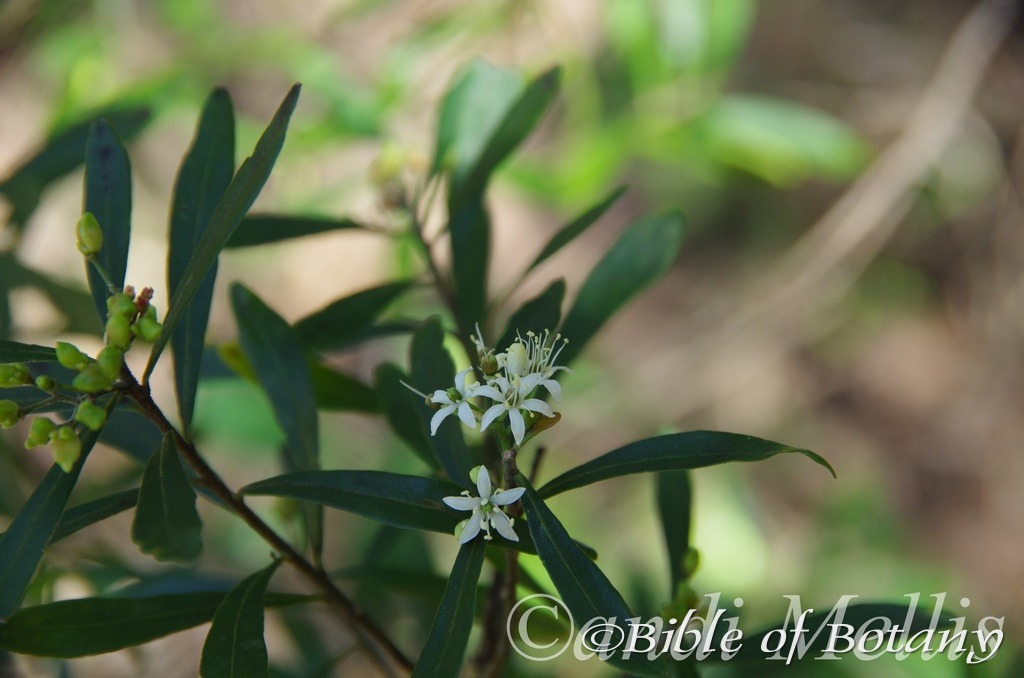
Clarence River NSW
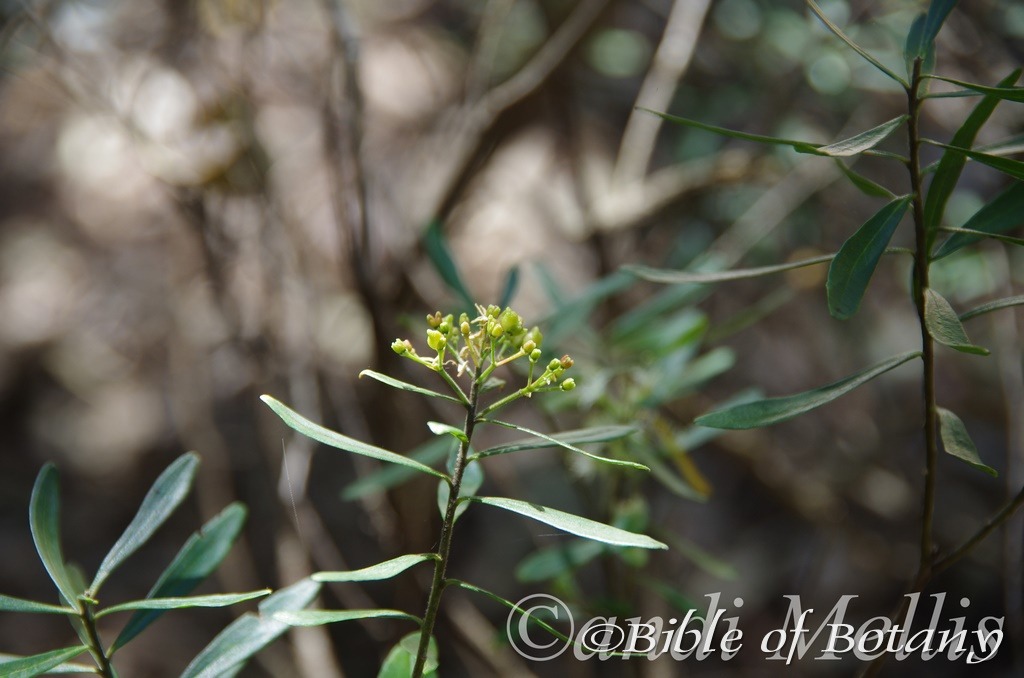
Clarence River NSW
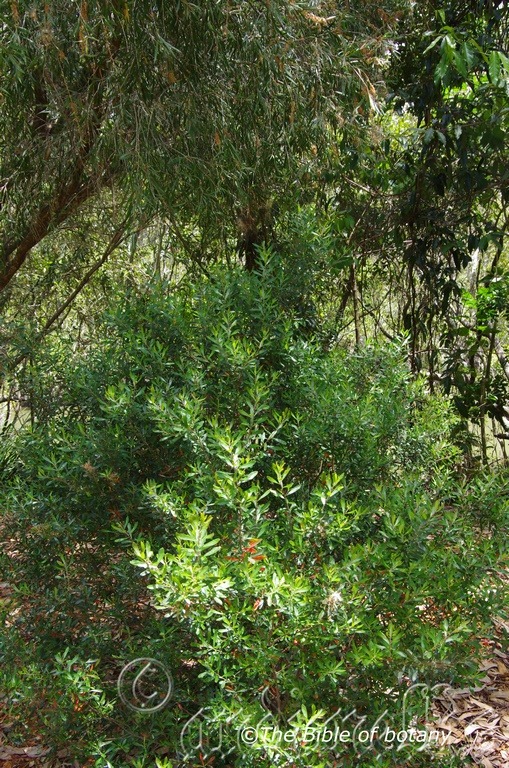
NCBG Coffs Harbour NSW

NCBG Coffs Harbour NSW
Leionema elatius
Classification:
Unranked: Eudicots
Unranked: Rosids
Order: Sapindales
Family: Rutaceae
Genus: From Leîos, which is Ancient Greek or Leio, which is Latin for smooth or glabrous and Nêma, which is Ancient Greek or Nēma, which is Latin for a thread. It refers to the stamens, notably the filaments, which are rather long, thread like and glabrous compared to other species in the genus.
Specie: From Elatus, which is Latin for very tall. It refers to plants, which are much taller than other species in the genus.
Sub specie: Leionema elatius subsp. beckleri. Is probably named in honour of Ludwig Philipp Heinrich Becker; 1808-1861, who was a German botanical artist and explorer who died on the last Burk and Wills expedition near Balloo in Queensland.
Sub specie: Leionema elatius subsp. elatius’s. From Elatus, which is Latin for very tall. It refers to plants, which are much taller than other species in the genus.
Common Name: Tall Phebalium.
Distribution:
Leionema elatius subsp. beckleri is found south of Canyon Lookout on the Border Ranges of Queensland to Port Stephens in central coastal New South Wales. It is mainly found east of the Great Dividing Range.
Leionema elatius subsp. elatius’s is found south from near Binna Burra in far southern Queensland to south of Taree in New South Wales in several disjunct populations on the Great Dividing Range.
https://avh.ala.org.au/occurrences/search?taxa=Leionema+elatius#tab_mapView
Habitat Aspect Climate:
Leionema elatius prefers light dappled shade to full sun. It grows in openings in warm subtropical rainforests, adjacent to warm subtropical rainforests and openings in well-developed rainforests. The altitude ranges from 60 meter ASL to 1150 meters ASL.
The temperatures range from minus 5 degree in August to 38 degrees in January.
The rainfalls range from lows of 900mm to an average of 1650mm.
Soil Requirements:
Leionema Leionema elatius prefers light sandy clays to medium sandy clays. The soils are usually derived from decomposed metagranites with black basalts. The soils pH ranges from 5pH to 6pH. It does not tolerate waterlogged soils. Non saline soils to moderately saline soils are tolerated.
Height & Spread:
Wild Plants: 2m to 5m by 2m to 3.5m.
Characteristics:
The bark is pale grey and covered in large irregular lenticels and papillate lumps. The branchlets are deep reddish-maroon with pale green growing tips. The branchlets are glabrous while the new growth is glabrous to moderately covered in cream to fawn stellate hairs.
The alternate, narrow spathulate to obovate, oblanceolate or oblong, leaves, measure 15mm to 36mm in length by 3mm to 10mm in width. The petioles measure 1mm to 2.5mm in length. The bases are cuneate to tapering attenuate, while the apexes are tapering obtuse or rarely retuse. The discolourous laminas are deep green to sea-green, semi glossy to glossy, glabrous and smooth to slightly rough while the lower laminas are much paler and smooth. The laminas are flat or slightly convex and decurve slightly on the apical half while the margins are crenate or entire on the basal half and crenate on the apical half. The mid vein is strongly prominent on the lower lamina and forms a furrow on the upper lamina.
The new growth is tinged bronze to deep purple. This bronzing is more noticeable in colder climates.
The inflorescences are cymes born from the terminals and measure 20mm to 40mm in length. The peduncle and pedicels are glabrous to moderately covered in cream to fawn sessile, stellate hairs. The peduncles measure 20mm to 40mm in length while the pedicels measure 3mm to 5mm in length. The minute calyx lobes are pale green and broadly triangular. The 5 white to pale creamy white petals are elliptical and measure 3mm to 4.5mm in length by 1.6mm to 2mm in width.
The 10 white filiform filaments measure 3.5mm to 5mm in length while the yellow basifixed anthers measure 0.5mm in diameter. The white pistil is centrally located on the bright, glossy lime-green rugose ovary and measures 3.5mm to 4mm in length. The ovary measures 1.5mm to 2mm in length by 1mm to 1.2mm in diameter. The flowers appear from September to November.
Leionema elatius’s fruits are compressed cocci. The pale green cocci turn brown when ripe.
Confusing Subspecies Varieties:
Leionema elatius subsp. elatius’s are compact, dense shrubs to 2 meters in height by 2 meters in diameter. The leaves are oblanceolate and measure 15mm to 20mm in length by 3mm to 5mm in width. The carpels only have a minute sterile apical. The cocci are beakless. The stems are covered in glandular warts. Mature flower buds are obovoidal and measure 3mm to 3.5mm in length. The ovaries are compact globose cocci that measure 1mm to 1.5mm in length, are finely rugose and slightly spreading.
Leionema elatius subsp. beckleri’s are shrubs that measure 3 meters to 5 meters by 2.5 meters to 3.5 meters in diameter with smooth, glabrous stems. The leaves are obovate to oblanceolate and measure 20mm to 35mm in length by 6mm to 10mm in width. The carpels have a larger sterile apical to a third of total length of the cocci. The cocci have an outwardly pointing short beak. The mature flower buds are ellipsoid and measure 3mm to 4mm in length. The ovaries are hemispherical and measure 1.5mm in length, are rugose on the apical half only and are divaricate.
Wildlife:
Leionema elatius flowers are fed upon by numerous small butterflies, native bees, native beetles, wasps and flies.
Cultivation:
Leionema elatius are beautiful semi weeping small trees or large shrubs that grow particularly well on moisture problem soils. It is suitable for small, medium and large gardens close to the coast or high in the mountains in warm temperate, sub-tropical or tropical gardens. As garden subjects they will grow from 4 meters to 5 meters in height by 3 meters to 4 meters in width when grown in the open. It is cold tolerant to temperatures at least as low as minus 4 degrees once established.
It can be lightly tip pruned if a smaller bushier shrub is required or heavily pruned once it is fully established.
It is best used as an understory shrub in warm rainforest gardens or in a moist Eucalyptus garden where the trees have been used as park trees. Placed in the midground or mass planted centrally as a feature and surrounded by other small native shrubs with red, pink, yellow or lilac flowers will look very powerful and draw ones attention.
It is also very good bonsai plants where it is very affective when highlighting the gnarled trunk.
Propagation:
Seeds: Leionema elatius seeds can be sown directly into a seed raising mix after roughing the sides with fine sandpaper to assist in germination. Cover the seeds with 15mm to 20mm of fine weed free mulch and keep moist. Place the tray in a warm sunny position.
When the seedlings are 20mm to 30mm tall, prick them out and plant them into 50mm native tubes using a good organic mix.
Once the seedlings reach 100mm to 150mm in height they can be planted out into their permanent position.
Cuttings: Use 80mm to 100mm long half ripened tip cuttings when growing from cuttings from the present season’s growth. Take them in warmer months of the year. Remove half the leaves from the bottom section being careful not to tear the bark.
1 Prepare the cutting mix by adding one third sharp clean river sand, one third peat and one third perlite. These ingredients are sterilize,
2 Select good material from non diseased plants,
3 Select semi green stems for cuttings. Look for a stem with two or three nodes,
4 Place the cutting on a flat, hard surface, and make a clean cut down one side of the cutting at the base for 10mm with a sharp sterile knife or razor blade. – This scarification of the node will increase the chances of roots emerging from this spot. Now remove all but one or two the leaves, leaving the apex leaves in tact. If the leaves are very large in proportion to the stem, cut off the apical halves.
5 Fill a saucer with water, and place a little medium strength rooting hormone into another container like a milk bottle top. Dip the node end of the cutting into the water and then into the rooting hormone. Tap off any excess hormone,
6 Use a small dipple stick or old pencil to poke a hole into the soilless potting mix. Ensure the hole is slightly larger than the stem diameter and be careful not to wipe the rooting hormone off the cuttings base, place the cuttings in a pattern ensuring the cuttings are not touching each other,
7 I like to place the pots in Plastic bags to help maintain temperature and moisture. Place in a semi shaded place like under 50mm shade cloth.
8 When the cuttings have struck, open the bag to allow air circulation for a few days to a week,
9 Once hardened off remove the cuttings from the bag and allow to further hardening for a few more days,
10 Transplant into a good potting mix to grow on.
Fertilize using seaweed, fish emulsion or organic chicken pellets soaked in water on an alternate basis. Fertilize every two months until the plants are established then twice annually in early September or March to maintain health, vitality and better flowering.
Further Comments from Readers:
Hi reader, it seems you use The Bible of Botany a lot. That’s great as we have great pleasure in bringing it to you! It’s a little awkward for us to ask, but our first aim is to purchase land approximately 1,600 hectares to link several parcels of N.P. into one at The Pinnacles NSW Australia, but we need your help. We’re not salespeople. We’re amateur botanists who have dedicated over 30 years to saving the environment in a practical way. We depend on donations to reach our goal. If you donate just $5, the price of your coffee this Sunday, We can help to keep the planet alive in a real way and continue to bring you regular updates and features on Australian plants all in one Botanical Bible. Any support is greatly appreciated. Thank you.
In the spirit of reconciliation we acknowledge the Bundjalung, Gumbaynggirr and Yaegl and all aboriginal nations throughout Australia and their connections to land, sea and community. We pay our respect to their Elders past, present and future for the pleasures we have gained.
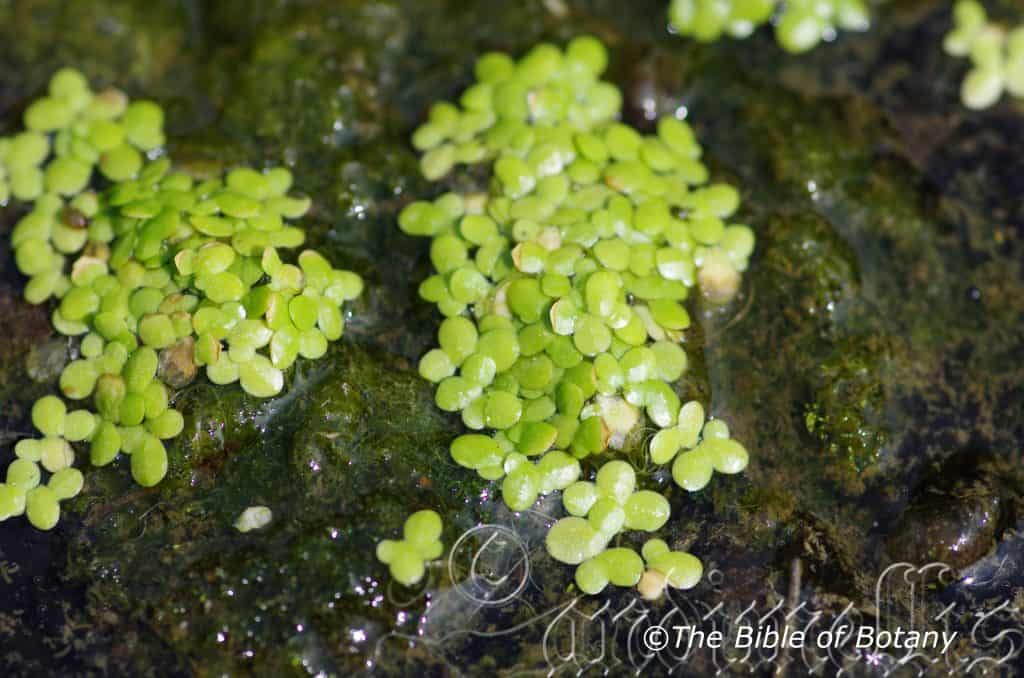
Chong da University Sha Ping Ba China
Lemna minor
Classification:
Unranked: Monocots
Order: Alismatales
Family: Araceae
Subfamily: Lemnoideae
Tribe: Lemnae
Genus: From Lemma, which is Latin for stagnant pools and swamps. It refers to plants, which thrive in water with high nutrient levels.
Specie: From Menor/menour, which are Ancient Greek or Latin for lessor. It usually refers to leaves or phyllodes, which appear less important than other species in the genus.
Sub species:
Common Name: Duck Weed.
Distribution:
Lemna minor is very widespread throughout eastern and south eastern Australia. It is found from the tip of Cape York Peninsula in far north eastern Queensland south to Woodhouse in eastern South Australia. There is also a population around around the Western Australia and northern territory borders in the far north..
In Tasmania it is found scattered in the warmer parts of the state.
It is found throughout New Zealand.
https://avh.ala.org.au/occurrences/search?taxa=Lemna+minor#tab_mapView
Habitat Aspect Climate:
Lemna minor prefers full sun to light dappled shade. It grows along slow to fast flowing creeks, streams, and rivers on alluvial bogs, attached to tree roots or backwaters. The altitude ranges from 1 meter ASL to 1250 meters ASL.
The temperatures range from minus 5 degrees in August to 40 degrees in January.
The rainfalls range from lows of 200mm to an average of 3000mm.
Soil Requirements:
Lemna minor prefers growing in water that overlies soils derived from decomposed sandstones, alluvial flats, alluvial laterites or accumulated dunes sands. The soils are pure coarse sands to light clays and heavy silts. The soils pH varies from 5pH through to 6.6pH are preferred. Non saline soils to moderately saline soils are tolerated.
Height & Spread:
Wild Plants: 2mm to 13mm by 1.5m to 10mm.
Characteristics:
Lemna minor’s consist of a single leaf that is suspended below the surface of the water except when in flower. The roots are absent.
The narrow oval to narrow oblong leaves have 2 distinct lobes, are thin and measure 6mm to 8mm in length by 3mm to 4mm in width. The bases are truncate while the apex obtuse to oblique-truncate or broad-emarginate. The translucent leaves are grass-green and glabrous. The margins are entire or irregularly finely toothed while the upper laminas are slightly convex to flat. The petioles measure 1mm to 13mm in length.
The daughter leaves remain attached to the parent leaf until it is disturbed or broken mechanically. The colonies are made up of successive generations which are produced at right angles to the previous leaf.
There is a budding pouch located adjacent to the roots on the upper lamina where the protogynous flowers emerge. The inflorescences of Lemna minor are minute spathes almost covering the pouches. The 1 or sometimes 2 stamens and pistil are green and glabrous.
The fruits are minute oblong capsules. The oblong seeds are minute and flattened on one side.
Confusing Species:
Lemna disperma offspring are produced at less than 90 degrees.
Lemna minor has ovate to elliptical leaves, with offspring appearing near the base. (See photo) It has been introduced to Australia.
Lemna minor’s has 2 distinct lobes on the leaves.
Confusing Genre:
The following genre is rather difficult to distinguish without a 30X-microsope to observe the flowering pouches. The characteristics below must be taken as a guide only. Australia can brag though with Wolffia angusta being the smallest known flowering plant in the world.
Lemna species roots absent or with a single root. Lower surface green. Usually in long strings held together but easily broken.
Spirodela polyrhiza has 5 to 18 roots. Lower surface purplish.
Landoltia punctata has 2 to 7 roots. Lower surface purplish.
Wolfia angusta roots are absent. Lower surface green.
Wildlife:
Lemna minor are feasted upon by many fresh water fish and fresh water birds especially the surface filter feeders like ducks.
Cultivation:
At first glance Lemna minor may appear to be a floating water weed but in fact it has an extremely important role to play in recycling waste matter and preventing nutrient blooms which occur in nature.
The plants make an interesting addition to the outside fish pond or internal glass aquariums where they will remove large quantities of ammonium from the water without affecting the pH or oxygen content. In fact it improves the conditions to allow greater oxygen uptake by the water.
Phytoremediation Lemna minor is an all-round phytoremediator meaning that it can take up large amounts of metals from the water. They can be used very successfully in controlling very acid or alkaline water nutrient rich water which is acid due to high levels of nitrate fertilizers leaching from the soil. It is a safer method than using chemicals, is more cost effective, is environmentally friendly, non-disruptive as opposed to physically filtering the water or using chemicals to dissolve the mineral toxicity and pumping water into the polluted water it dilute it to safer levels.
Eutrophication is Greek for eutrophic—healthy, adequate nutrition while hypertrophication relates to the excess of nutrient within the body of water usually caused by factory or mining discharge farm discharge and decaying vegetable and animal matter. Professors Randall Kerstetter, Joachim Messing and Todd Michael research on different duckweeds from the Delaware and Raritan Canal near Rutgers University in the USA showed they were able to extract nitrogen and phosphate pollutants from agricultural and municipal wastewater. Their research concluded in reducing algae growth, coliform bacterial counts and mosquito larvae on ponds, while at the same time concentrated heavy metals, capturing or degrading toxic chemicals, and encourage the growth of other aquatic animals such as frogs, fish and waterfowl. Duckweeds produce biomass faster than any other flowering plant. They can be used as high-protein feed for domestic animals and show great potential as an alternative for biofuel production.
Spirodela specie along with punctata sequence could unlock the remarkable potential of rapidly growing aquatic plants for absorbing atmospheric carbon dioxide to help break the present unbalanced spiraling ecosystem carbon cycle we have created.
Culley et al 1981 found that a mixture with various specie 1,378 kilograms of Nitrogen, 347 kilograms of Phosphorous and 441 kilograms of Potassium could remove from 1 hectare of land every 12 months.
Under ideal conditions Nitrogen uptake can reach 1,890 kilograms a year. Landolt and Kandeler 1987 also noted that some specie achieved a biomass of in excess of 75 tons a year per hectare with a protein content of 45mm which would make it an ideal dietary supplement for pigs, livestock, fish and fowls.
Lemna minor like Spirodela polyrhiza has tremendous potential to supply the world’s protein needs being up to 45mm protein producing up to $300,000 a hectare at present wholesale prices for human consumption. It is far more environmentally friendly. The biggest drawback is government regulation, lack of support for new agricultural industries. The Chinese are now seriously contemplating their use as alternately protein source. This however would not discourage me one little bit in recommending it as the next crop of the future because of its huge potential, ease of growth and present worldwide prices.
Spirodela polyrhiza is high in vitamin A, amino acids, 25mm to 48mm protein, and 17 to 18mm fiber. Up to 22mm calcium, 15mm magnesium, 0.11mm zinc and 0.14mm sodium by dry weight. Nutrition and Food Research Centre in Freising (Germany) (Lemna trisulca & Landoltia punctata would probably return similar nutritional values to Spirodela polyrhiza because it has a similar rate of growth and similar nutrient requirements. Window tests we conducted showed identical growth reproduction rates with various soluble nutrients added to the water.)
Propagation:
Seeds: Lemna minor can be easily grown by allowing the plants to self-bud in water free of water fowl and herbivorous fish.
Further Comments from Readers:
Hi reader, it seems you use The Bible of Botany a lot. That’s great as we have great pleasure in bringing it to you! It’s a little awkward for us to ask, but our first aim is to purchase land approximately 1,600 hectares to link several parcels of N.P. into one at The Pinnacles NSW Australia, but we need your help. We’re not salespeople. We’re amateur botanists who have dedicated over 30 years to saving the environment in a practical way. We depend on donations to reach our goal. If you donate just $5, the price of your coffee this Sunday, We can help to keep the planet alive in a real way and continue to bring you regular updates and features on Australian plants all in one Botanical Bible. Any support is greatly appreciated. Thank you.
In the spirit of reconciliation we acknowledge the Bundjalung, Gumbaynggirr and Yaegl and all aboriginal nations throughout Australia and their connections to land, sea and community. We pay our respect to their Elders past, present and future for the pleasures we have gained.
Lemna trisulca
Classification:
Unranked: Monocots
Order: Alismatales
Family: Araceae
Subfamily: Lemnoideae
Tribe: Lemnae
Genus: From Lemma, which is Latin for stagnant pools and swamps. It refers to plants, which thrive in water with high nutrient levels.
Specie: From Tri/Tris, which are Ancient Greek or Latin for three and Sulcus which is Latin for a furrow. It refers to stems, leaves or phyllodes, which have a distinct furrow.
Sub species:
Common Name: Duck Weed.
Distribution:
Lemna trisulca is very widespread throughout eastern and south eastern Australia. It is found from south from Mount surprise in north eastern Queensland to Kangaroo island in eastern south Australia and throughout Tasmania. It is found on the western side on and east of the Great Dividing Range.
https://avh.ala.org.au/occurrences/search?taxa=Lemna+trisulca#tab_mapView
Habitat Aspect Climate:
Lemna trisulca prefers full sun to light dappled shade. It grows along slow to fast flowing creeks, streams, and rivers on alluvial bogs, attached to tree roots or backwaters. The altitude ranges from 1 meter ASL to 1250 meters ASL.
The temperatures range from minus 5 degrees in August to 40 degrees in January.
The rainfalls range from lows of 200mm to an average of 3000mm.
Soil Requirements:
Lemna trisulca prefers growing in water that overlies soils derived from decomposed sandstones, alluvial flats, alluvial laterites or accumulated dunes sands. The soils are pure coarse sands to light clays and heavy silts. The soils pH varies from 5pH through to 6.6pH are preferred. Non saline soils to moderately saline soils are tolerated.
Height & Spread:
Wild Plants: 2mm to 13mm by 1.5m to 10mm.
Characteristics:
Lemna trisulca’s consist of a single leaf that is suspended below the surface of the water except when in flower. The roots are absent.
The narrow oval to narrow oblong leaves have 2 distinct lobes, are thin and measure 6mm to 8mm in length by 3mm to 4mm in width. The bases are truncate while the apex obtuse to oblique-truncate or broad-emarginate. The translucent leaves are grass-green and glabrous. The margins are entire or irregularly finely toothed while the upper laminas are slightly convex to flat. The petioles measure 1mm to 13mm in length.
The daughter leaves remain attached to the parent leaf until it is disturbed or broken mechanically. The colonies are made up of successive generations which are produced at right angles to the previous leaf.
There is a budding pouch located adjacent to the roots on the upper lamina where the protogynous flowers emerge. The inflorescences of Lemna trisulca are minute spathes almost covering the pouches. The 1 or sometimes 2 stamens and pistil are green and glabrous.
The fruits are minute oblong capsules. The oblong seeds are minute and flattened on one side.
Confusing Species:
Lemna disperma offspring are produced at less than 90 degrees.
Lemna trisulca has ovate to elliptical leaves, with offspring appearing near the base. (See photo) It has been introduced to Australia.
Lemna trisulca’s has 2 distinct lobes on the leaves.
Confusing Genre:
The following genre is rather difficult to distinguish without a 30X-microsope to observe the flowering pouches. The characteristics below must be taken as a guide only. Australia can brag though with Wolffia angusta being the smallest known flowering plant in the world.
Lemna species roots absent or with a single root. Lower surface green. Usually in long strings held together but easily broken.
Spirodela polyrhiza has 5 to 18 roots. Lower surface purplish.
Landoltia punctata has 2 to 7 roots. Lower surface purplish.
Wolfia angusta roots are absent. Lower surface green.
Wildlife:
Lemna trisulca are feasted upon by many fresh water fish and fresh water birds especially the surface filter feeders like ducks.
Cultivation:
At first glance Lemna trisulca may appear to be a floating water weed but in fact it has an extremely important role to play in recycling waste matter and preventing nutrient blooms which occur in nature.
The plants make an interesting addition to the outside fish pond or internal glass aquariums where they will remove large quantities of ammonium from the water without affecting the pH or oxygen content. In fact it improves the conditions to allow greater oxygen uptake by the water.
Phytoremediation Lemna trisulca is an all-round phytoremediator meaning that it can take up large amounts of metals from the water. They can be used very successfully in controlling very acid or alkaline water nutrient rich water which is acid due to high levels of nitrate fertilizers leaching from the soil. It is a safer method than using chemicals, is more cost effective, is environmentally friendly, non-disruptive as opposed to physically filtering the water or using chemicals to dissolve the mineral toxicity and pumping water into the polluted water it dilute it to safer levels.
Eutrophication is Greek for eutrophic—healthy, adequate nutrition while hypertrophication relates to the excess of nutrient within the body of water usually caused by factory or mining discharge farm discharge and decaying vegetable and animal matter. Professors Randall Kerstetter, Joachim Messing and Todd Michael research on different duckweeds from the Delaware and Raritan Canal near Rutgers University in the USA showed they were able to extract nitrogen and phosphate pollutants from agricultural and municipal wastewater. Their research concluded in reducing algae growth, coliform bacterial counts and mosquito larvae on ponds, while at the same time concentrated heavy metals, capturing or degrading toxic chemicals, and encourage the growth of other aquatic animals such as frogs, fish and waterfowl. Duckweeds produce biomass faster than any other flowering plant. They can be used as high-protein feed for domestic animals and show great potential as an alternative for biofuel production.
Spirodela specie along with punctata sequence could unlock the remarkable potential of rapidly growing aquatic plants for absorbing atmospheric carbon dioxide to help break the present unbalanced spiraling ecosystem carbon cycle we have created.
Culley et al 1981 found that a mixture with various specie 1,378 kilograms of Nitrogen, 347 kilograms of Phosphorous and 441 kilograms of Potassium could remove from 1 hectare of land every 12 months.
Under ideal conditions Nitrogen uptake can reach 1,890 kilograms a year. Landolt and Kandeler 1987 also noted that some specie achieved a biomass of in excess of 75 tons a year per hectare with a protein content of 45mm which would make it an ideal dietary supplement for pigs, livestock, fish and fowls.
Lemna trisulca like Spirodela polyrhiza has tremendous potential to supply the world’s protein needs being up to 45mm protein producing up to $300,000 a hectare at present wholesale prices for human consumption. It is far more environmentally friendly. The biggest drawback is government regulation, lack of support for new agricultural industries. The Chinese are now seriously contemplating their use as alternately protein source. This however would not discourage me one little bit in recommending it as the next crop of the future because of its huge potential, ease of growth and present worldwide prices.
Spirodela polyrhiza is high in vitamin A, amino acids, 25mm to 48mm protein, and 17 to 18mm fiber. Up to 22mm calcium, 15mm magnesium, 0.11mm zinc and 0.14mm sodium by dry weight. Nutrition and Food Research Centre in Freising (Germany) (Lemna trisulca & Landoltia punctata would probably return similar nutritional values to Spirodela polyrhiza because it has a similar rate of growth and similar nutrient requirements. Window tests we conducted showed identical growth reproduction rates with various soluble nutrients added to the water.)
Propagation:
Seeds: Lemna trisulca can be easily grown by allowing the plants to self-bud in water free of water fowl and herbivorous fish.
Further Comments from Readers:
Hi reader, it seems you use The Bible of Botany a lot. That’s great as we have great pleasure in bringing it to you! It’s a little awkward for us to ask, but our first aim is to purchase land approximately 1,600 hectares to link several parcels of N.P. into one at The Pinnacles NSW Australia, but we need your help. We’re not salespeople. We’re amateur botanists who have dedicated over 30 years to saving the environment in a practical way. We depend on donations to reach our goal. If you donate just $5, the price of your coffee this Sunday, We can help to keep the planet alive in a real way and continue to bring you regular updates and features on Australian plants all in one Botanical Bible. Any support is greatly appreciated. Thank you.
In the spirit of reconciliation we acknowledge the Bundjalung, Gumbaynggirr and Yaegl and all aboriginal nations throughout Australia and their connections to land, sea and community. We pay our respect to their Elders past, present and future for the pleasures we have gained.
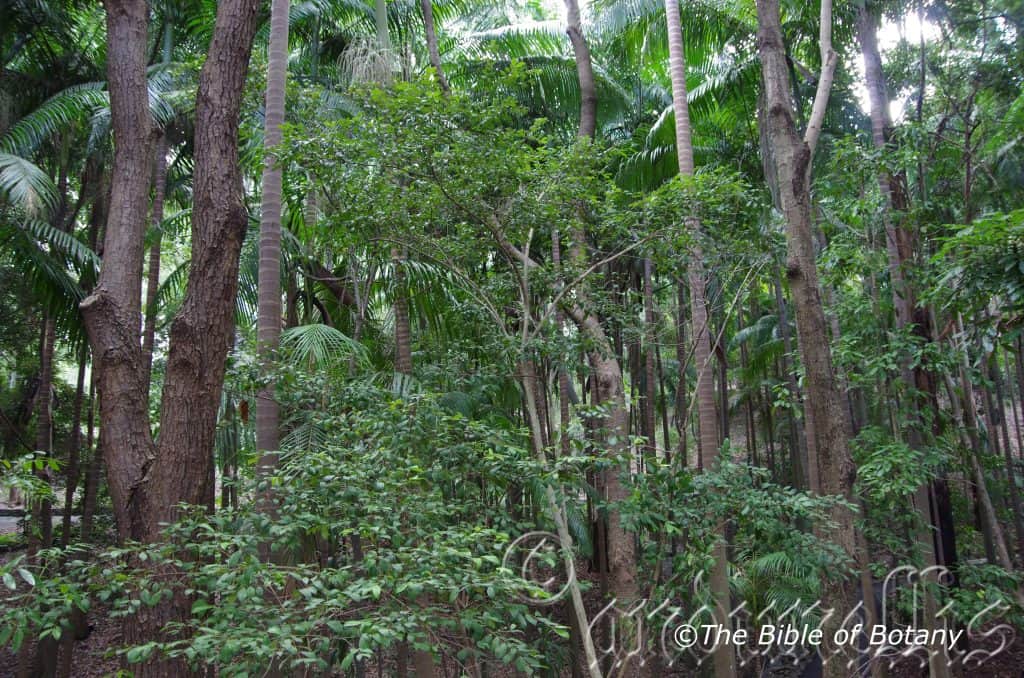
Mount Cootha Botanic Gardens Qld.
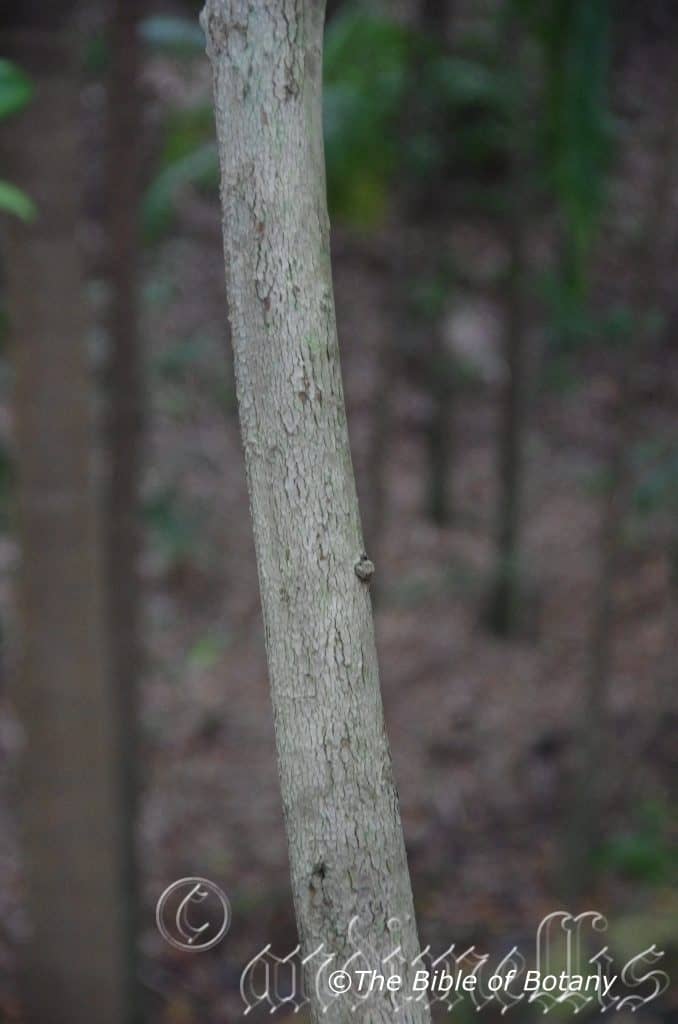
Mount Cootha Botanic Gardens Qld.
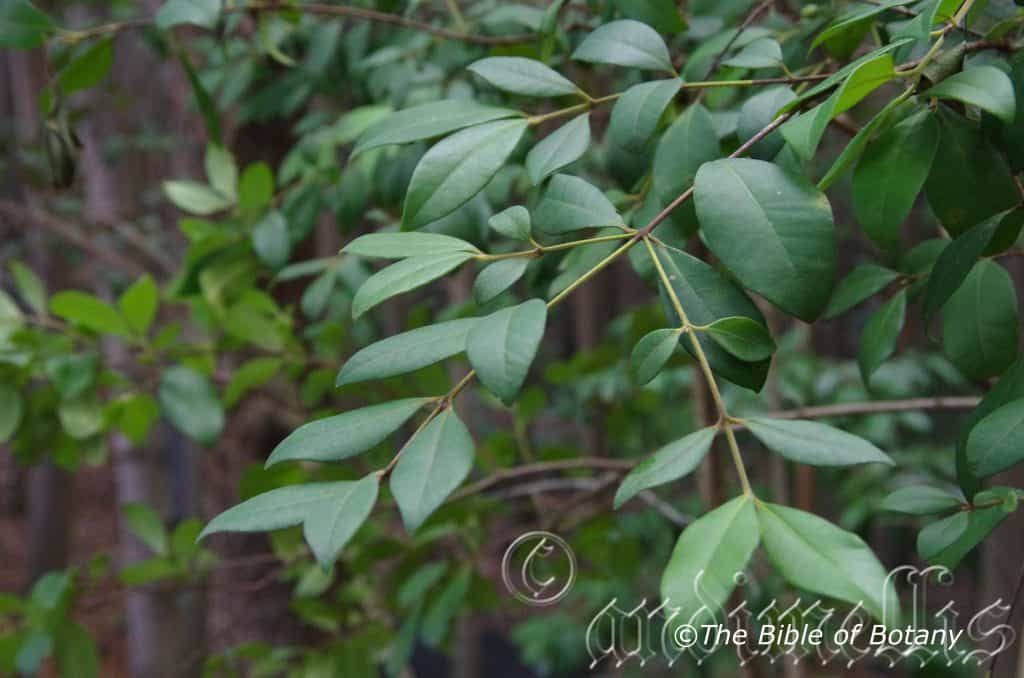
Mount Cootha Botanic Gardens Qld.
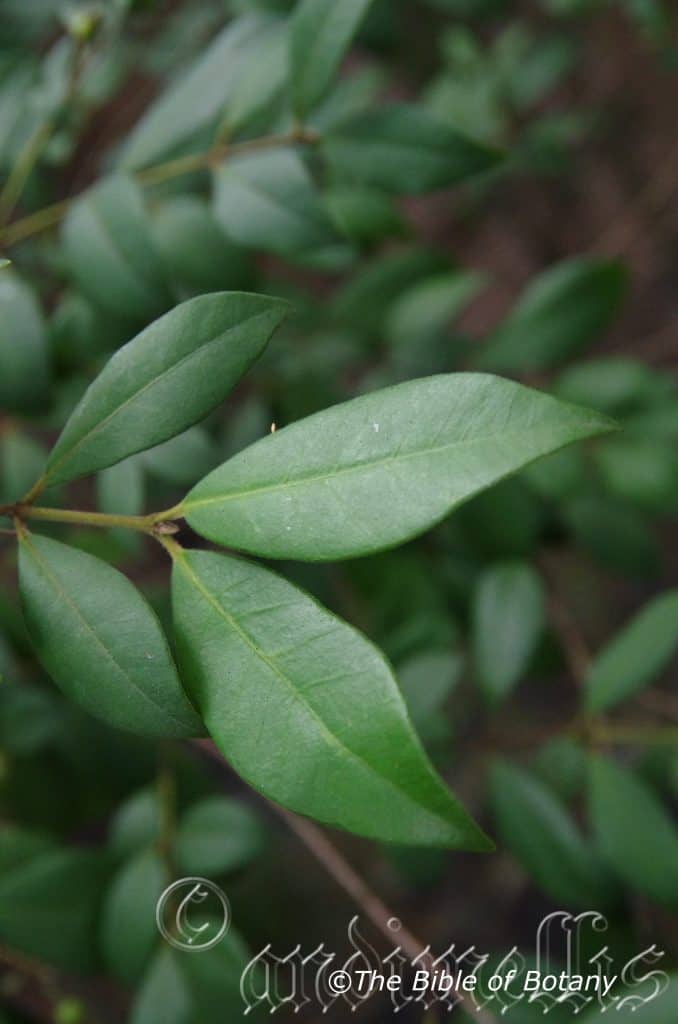
Mount Cootha Botanic Gardens Qld.
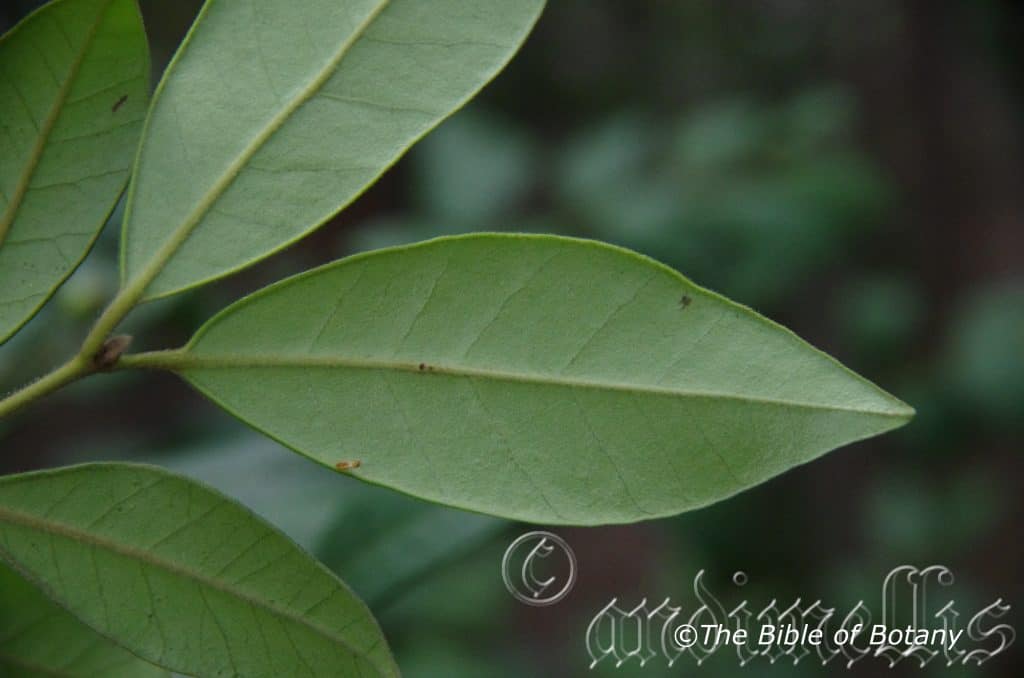
Mount Cootha Botanic Gardens Qld.
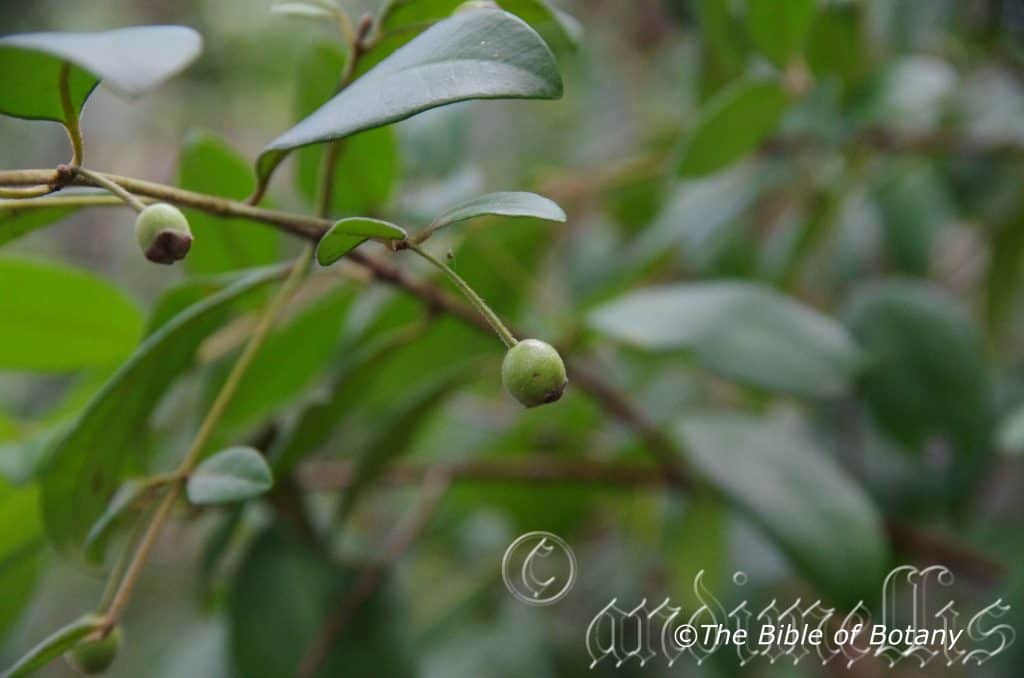
Mount Cootha Botanic Gardens Qld.
Lenwebbia prominens
Classification:
Unranked: Eudicots
Unranked: Rosids
Order: Myrtales
Family: Myrtaceae
SubFamily: Myrtoideae
Tribe: Myrteae
Genus: is named in honour of Leonard James (Len) Webb AO, 1920–2008, who was a widely awarded Australian ecologist and ethnobotanist. (Ethnobotany is the study of a region’s plants and how they were used or affected the traditional indigenous people) He was the author or joint-author of over 112 scientific papers throughout the course of his professional career.
Specie: May be from Prōmineō, which is Latin for to stand out, jut out or be prominent. It refers to plants which have outstanding features thus are very prominent. Here it refers to the overall beauty of the trees.
Sub species:
Common Name:
Distribution:
Lenwebbia prominens is restricted to a small area bounded by the mesic forests along or near the east coast of Australia, from northern New South Wales to south eastern Queensland in association with the Mount Warning volcanic rim.
https://avh.ala.org.au/occurrences/search?taxa=Lenwebbia+prominens#tab_mapView
Habitat Aspect Climate:
Lenwebbia prominens prefer light dappled shade to full sun. It grows in moist sub tropical rainforests. The altitude ranges from 150 meter ASL to 1500 meters ASL.
The Temperatures range from minus 1 degree in August to 36 degrees in January.
The rainfalls range from lows of 1000mm to an average of 1800mm.
Soil Requirements:
Lenwebbia prominens prefer to grow on fertile light sandy clays to medium sandy clays. The soils are derived from decomposed black basalts forming typical krasnozems which are highly weathered red-clayey soils. The basalt on the slopes produce prairie soils which are reddish-brown to greyish-brown in colour and less acidic than krasnozems. The soils pH ranges from 5pH to 6pH. It does not tolerate waterlogged soils but does appreciate permanent soil moisture. Non saline soils to moderately saline soils are tolerated.
Height & Spread:
Wild Plants: 5m to 9m by 5m to 7m.
Characteristics:
Lenwebbia prominens has a hard, fissured, pale grey bark. The small branches are reddish-brown and moderately covered in reddish-brown scales, while the juvenile stems are mid yellow-green and moderately to densely covered in caduceus, fawn to pale brown pubescent hairs.
Lenwebbia prominens disjunct opposite, elliptic to lanceolate leaves, measure 30m to 10mm in length by 20mm to 35mm in width. The petioles are moderately to densely covered in fawn to pale brown pubescent hairs and measure 3mm to 8mm in length. The bases are cuneate to round-cuneate, while the apexes are acuminate. The discolourous laminas are deep green, semi glossy to glossy and glabrous on the upper laminas, while the lower laminas are paler and moderately to densely covered in fawn to pale brown pubescent hairs.
The laminas are flat, undulating slightly on the apical half and decurve downwards strongly at the margins. The margins are entire. The mid vein is slightly prominent on the lower lamina and is clearly visible on the upper lamina, while the lateral veins are prominent and set at 50 to 60 degrees
The inflorescences of Lenwebbia prominens are born singularly, in pairs or rarely in groups of 3 from the leaf axis. The pedicels are moderately to densely covered in caduceous, fawn to pale brown pubescent hairs and measure 8mm to 25mm in length. The 5 deltoid sepals are moderately to densely covered in fawn to pale brown pubescent hairs externally and measure 1mm to 2mm in length. The 5 oblong-ovate, white petals measure 4mm to 5mm in length.
The numerous white filaments are glabrous and measure 5mm to 6mm in length, while the pale pink, basifixed anthers are orbicular. The erect, white style measures 3.5mm to 5mm in length. The hypanthium is moderately to densely covered in fawn to pale brown pubescent hairs. The flowers appear from November to January
Lenwebbia prominens fruits are 3 locular, globose, berries. The green berries are moderately to densely covered in semi caduceous, fawn to pale brown pubescent hairs and turn deep purple to black when ripe. The berries measure 6mm to 10mm in length by 5mm to 8mm in diameter.
Wildlife:
Lenwebbia prominens flowers are fed upon by numerous small butterflies, native bees, native beetles, wasps and flies.
Cultivation:
Lenwebbia prominens are beautiful small erect trees for small to large gardens which are close to the coast or high in the mountains in warm temperate, sub-tropical or tropical gardens. As garden subjects they will grow from 8 meters to 12 meters in height by 4 meters to 6 meters in diameter when grown in the open. It is cold tolerant to temperatures at least as low as minus 2 degrees once established.
It is best used as a small park tree, placed in the background or planted centrally as a small feature tree in small gardens surrounded by other small native shrubs with deep green large simple leaves to help high light foliage. Placed at the rear of a bush garden their striking display of paler leaves followed by the brilliant orange fruits will draw your attention so that you will want to investigate further. Plants with small red flowers and large or fine green leaves can be used in the mid ground while small red flowering prostrate shrubs are used in the front. Whether it is in flower or not these trees will catch your attention because of the leaves and the interesting bark.
The trees make very good accent trees in front of low set commercial buildings, industrial sheds or single or 2 story school buildings where they will break up hard rigid architectural lines and give warmth and breadth to a building. Here mixed with trees with large deep green leaves look delicate and need to be planted in small groups of 3 to 1 to give balance.
It also is a great looking rainforest tree for beginners on smaller allotments. Mix them with Harpullia pendula, Mallotus philippensis the red kamala, Rhodomyrtus psidioides the native guava, Syzygium tierneyanum, Melicope micrococca, Acmena smithii, Backhousia myrtifolia, Brachychiton acerifolius, Davidsonia pruriens or Syzygium wilsonii just to mention a few small rainforest trees which are suitable for a small suburban block and have great foliage contrasts.
Lenwebbia prominens also make great beginners bonsai plant because of their fast growth and hardiness in containers. It is easy to maintain and the trunks will bulk up in about three years from a seedling.
Propagation:
Seeds: Lenwebbia prominens seeds can be sown directly into a seed raising mix after roughing the sides with fine sandpaper to assist in germination. Cover the seeds with 15mm to 20mm of fine weed free mulch and keep moist. Place the tray in a warm sunny position. When the seedlings are 20mm to 30mm tall, prick them out and plant them into 50mm native tubes using a good organic mix.
Once the seedlings reach 100mm to 150mm in height they can be planted out into their permanent position.
Fertilize using seaweed, fish emulsion or organic chicken pellets soaked in water on an alternate basis. Fertilize every two months until the plants are established then twice annually in early September and March to maintain health, vitality and better flowering.
Further Comments from Readers:
Hi reader, it seems you use The Bible of Botany a lot. That’s great as we have great pleasure in bringing it to you! It’s a little awkward for us to ask, but our first aim is to purchase land approximately 1,600 hectares to link several parcels of N.P. into one at The Pinnacles NSW Australia, but we need your help. We’re not salespeople. We’re amateur botanists who have dedicated over 30 years to saving the environment in a practical way. We depend on donations to reach our goal. If you donate just $5, the price of your coffee this Sunday, We can help to keep the planet alive in a real way and continue to bring you regular updates and features on Australian plants all in one Botanical Bible. Any support is greatly appreciated. Thank you.
In the spirit of reconciliation we acknowledge the Bundjalung, Gumbaynggirr and Yaegl and all aboriginal nations throughout Australia and their connections to land, sea and community. We pay our respect to their Elders past, present and future for the pleasures we have gained.
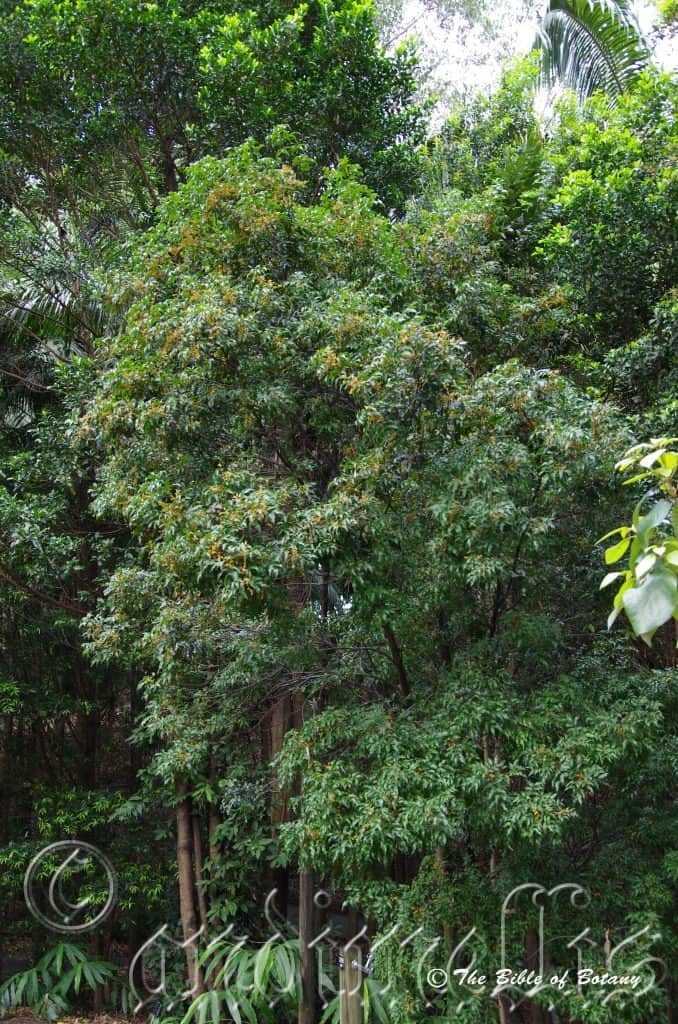
NCBG Coffs Harbour NSW
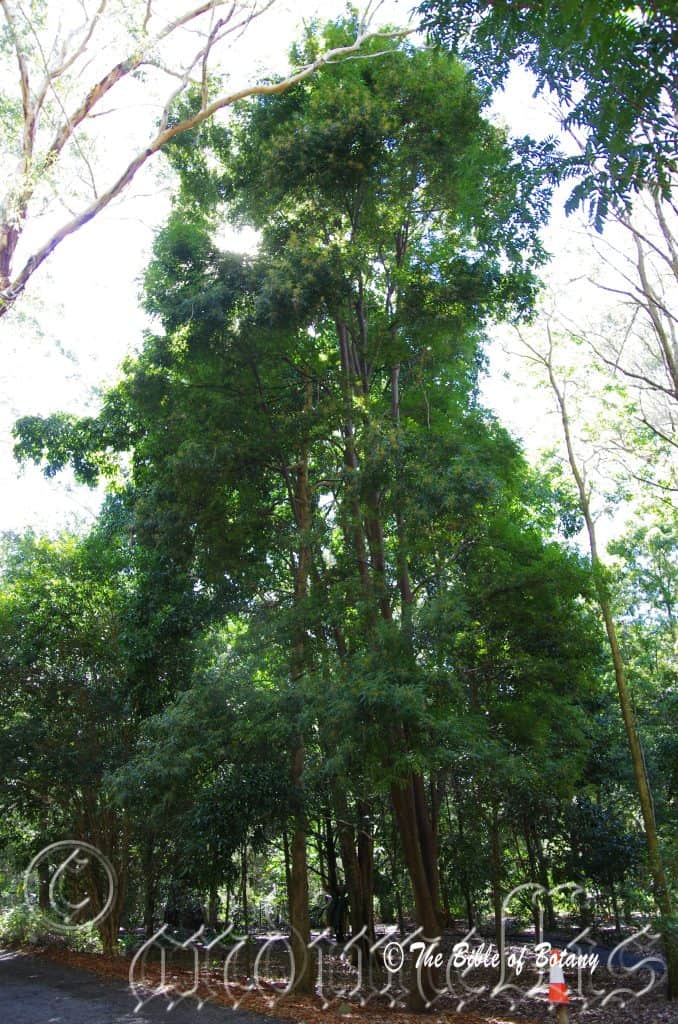
NCBG Coffs Harbour NSW
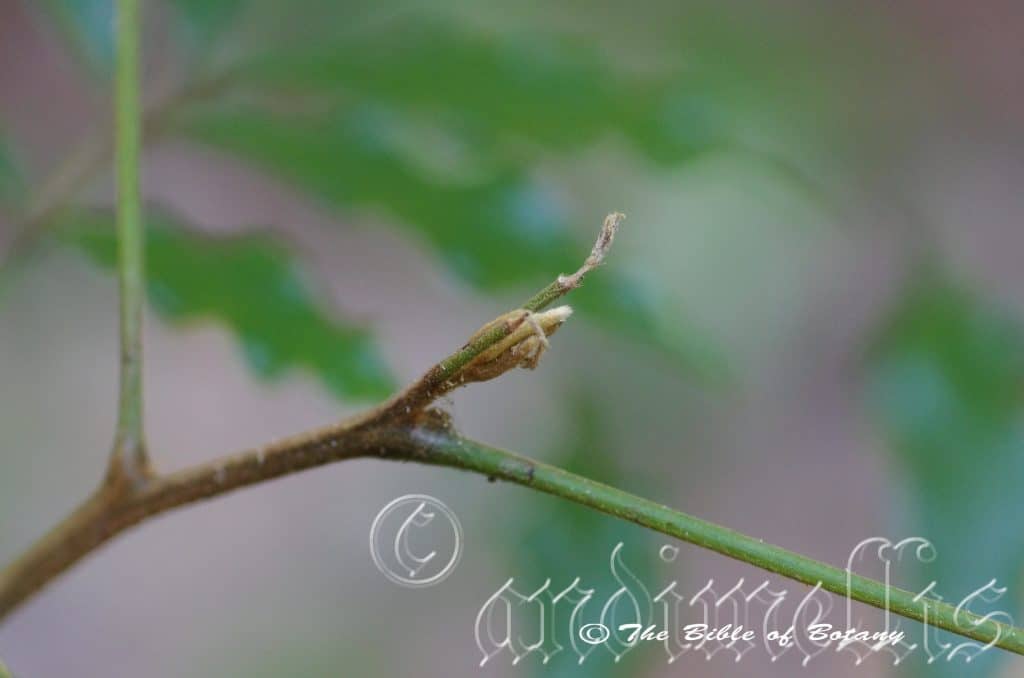
NCBG Coffs Harbour NSW
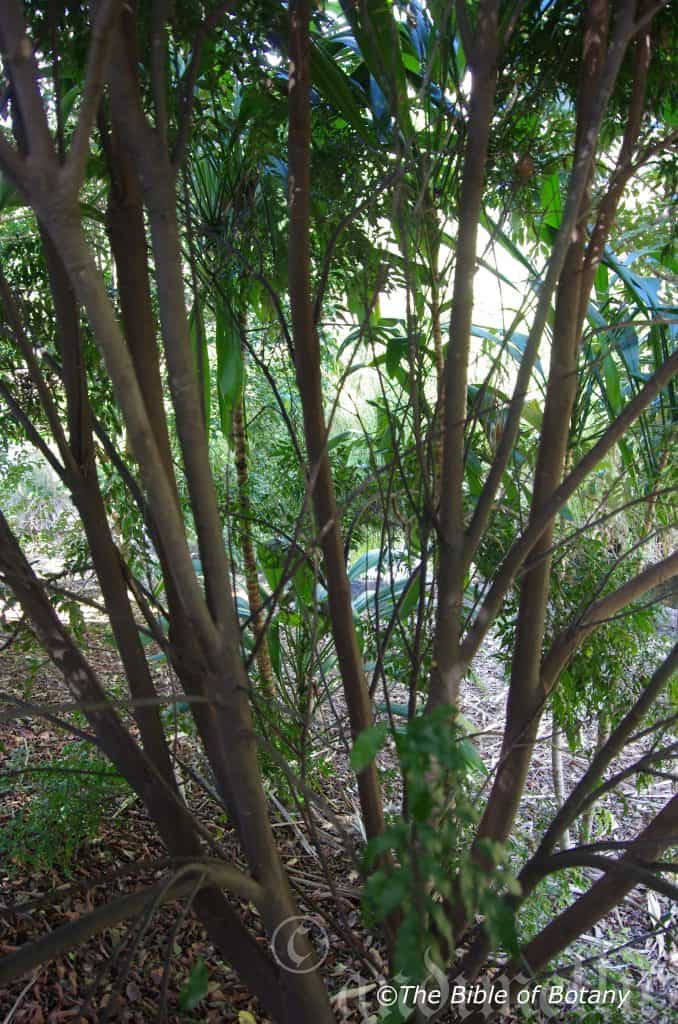
Tweed Valley Qld.
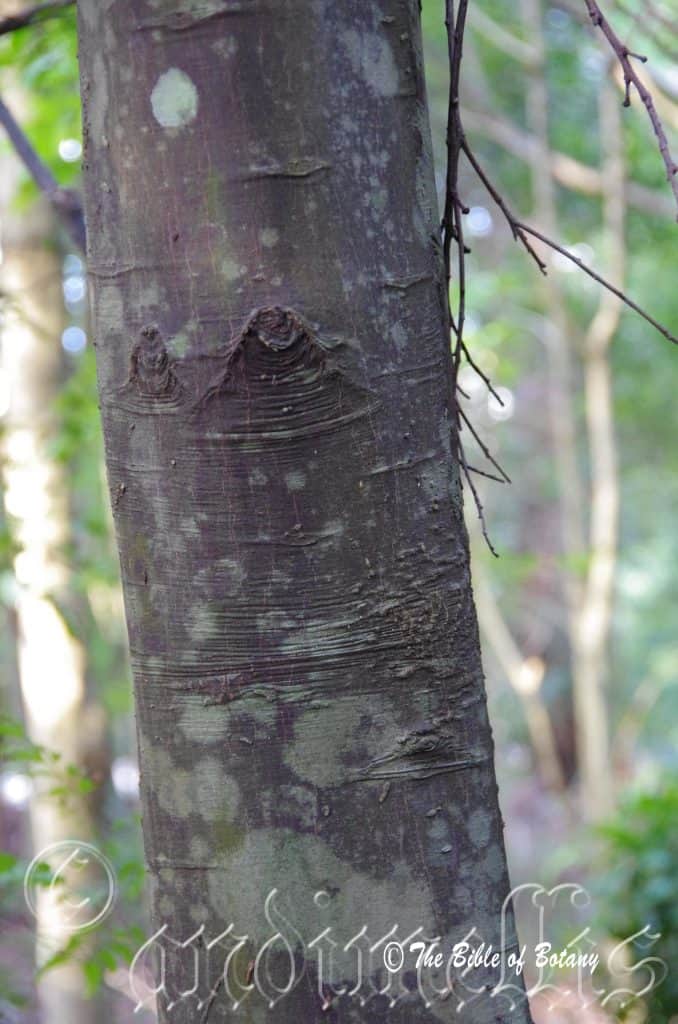
NCBG Coffs Harbour NSW
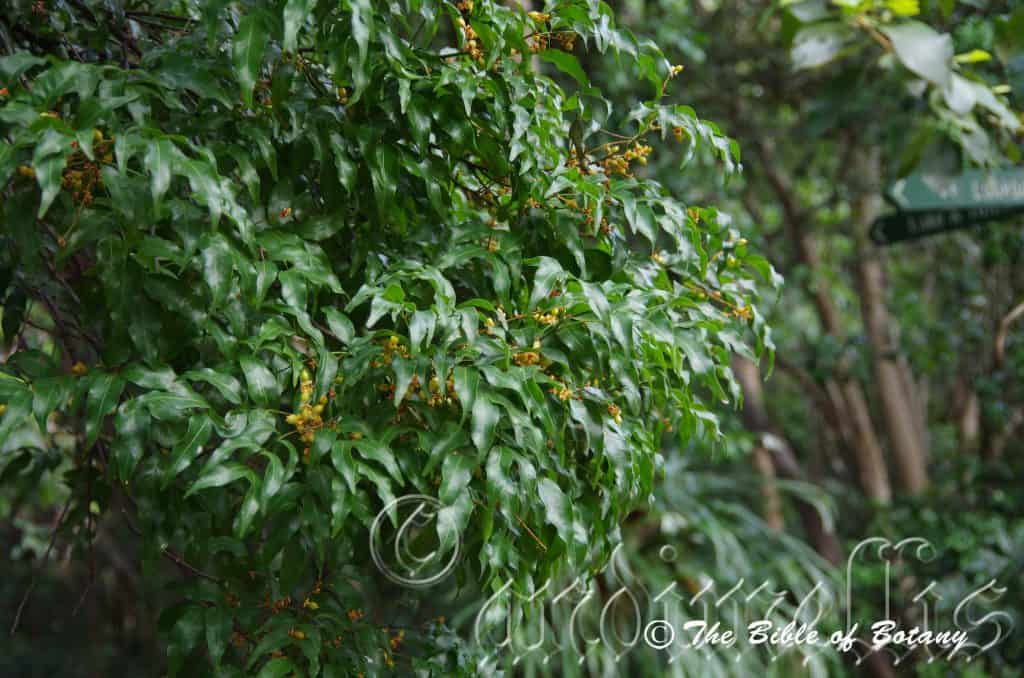
Mount Cootha Botanical Gardens Qld.
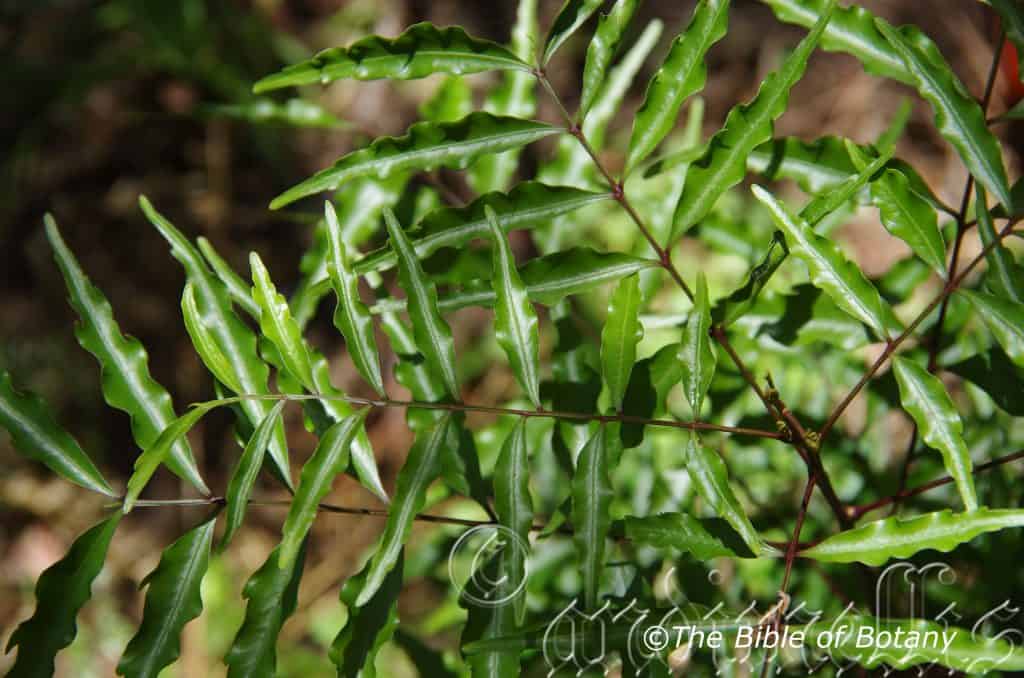
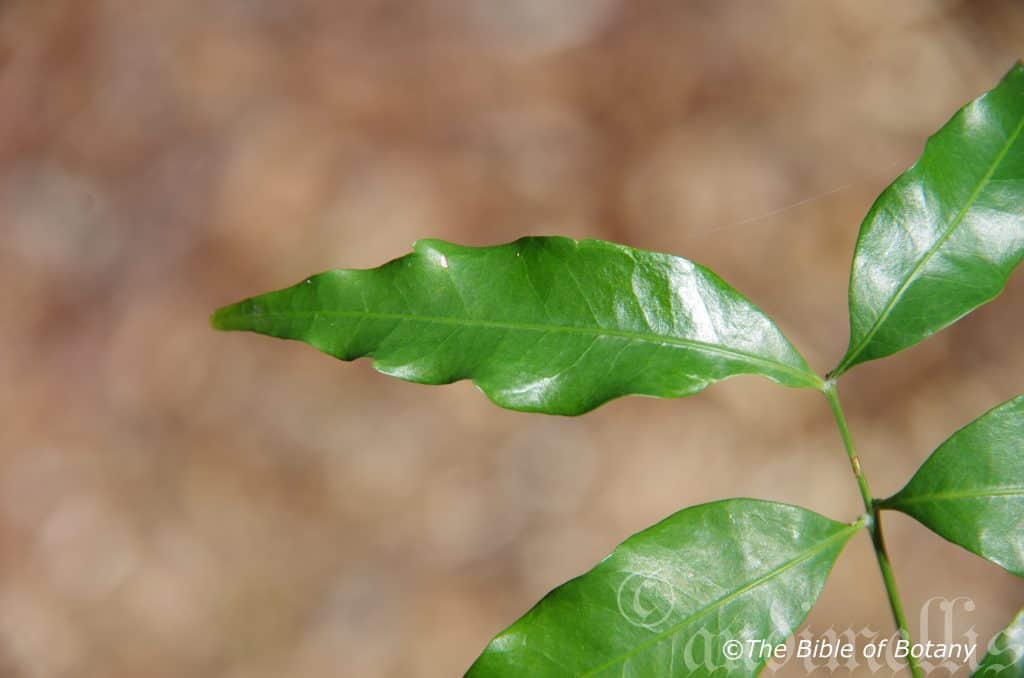
Tweed Valley Qld.
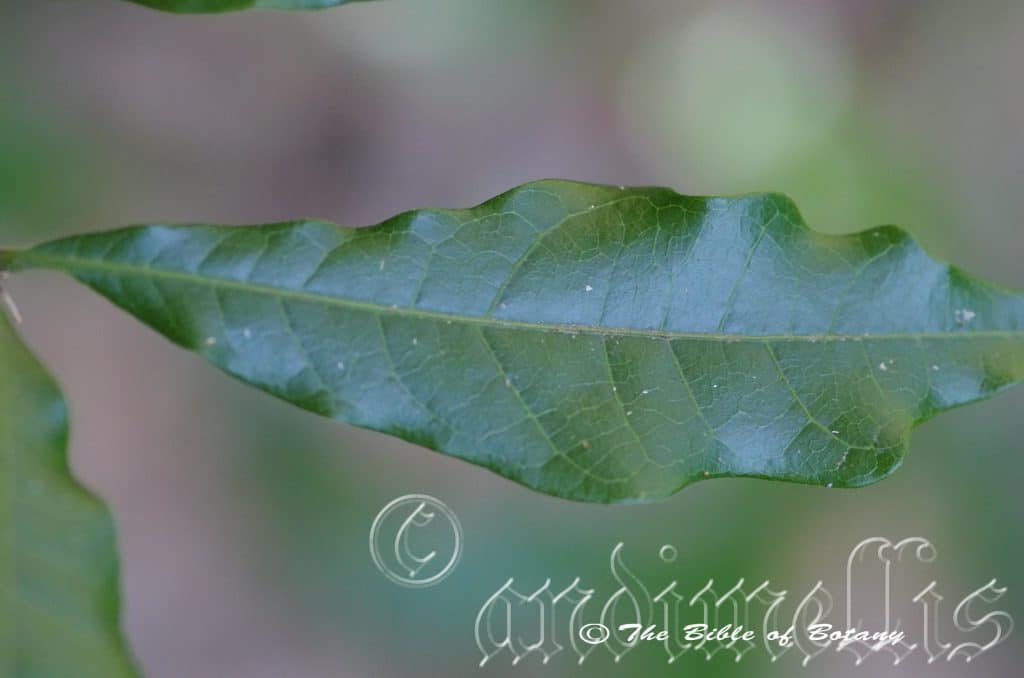
NCBG Coffs Harbour NSW
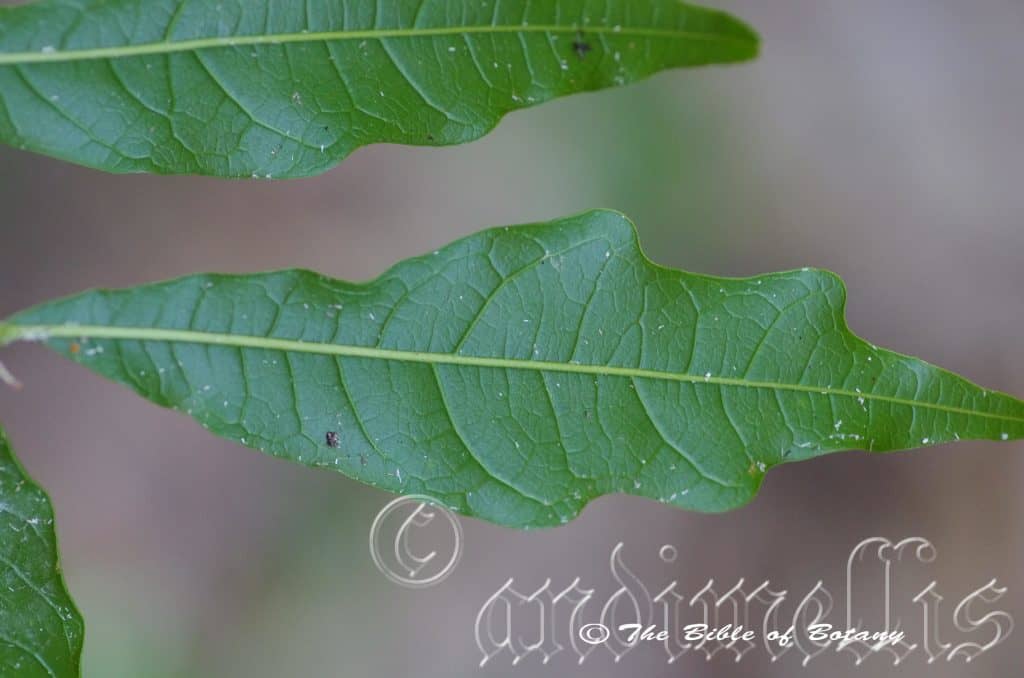
NCBG Coffs Harbour NSW
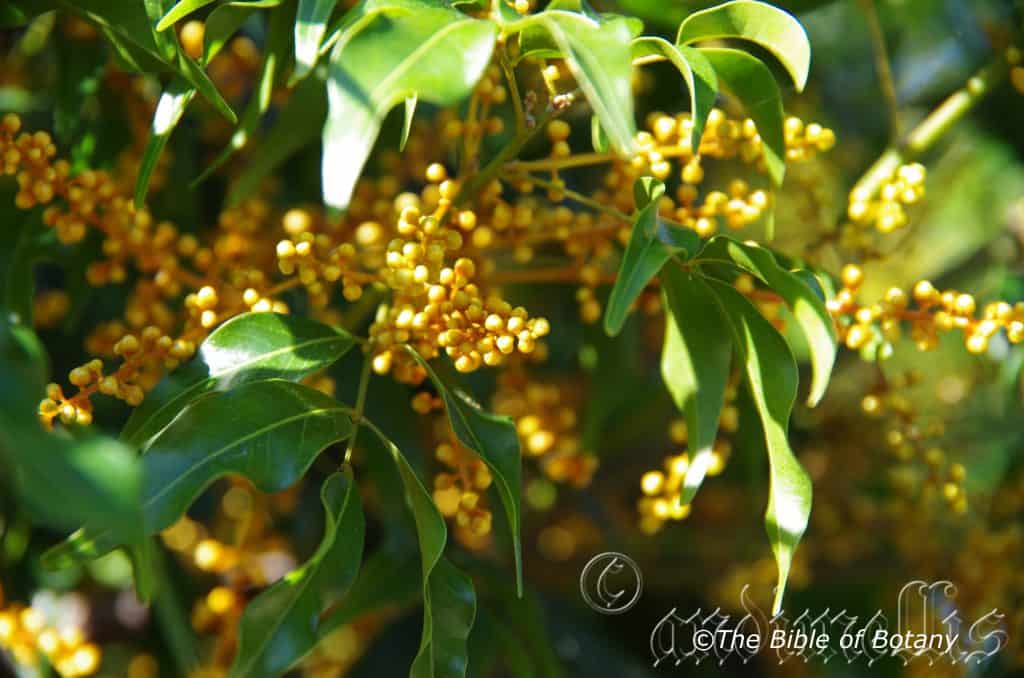
Rosser Gardens Benowa Qld.
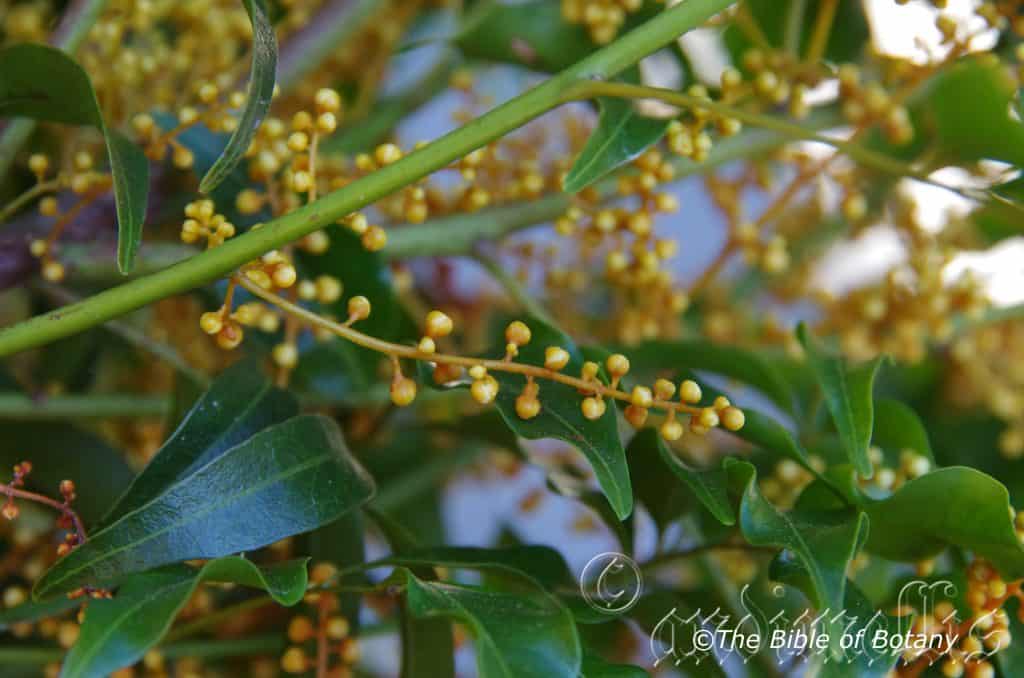
Rosser Gardens Benowa Qld.
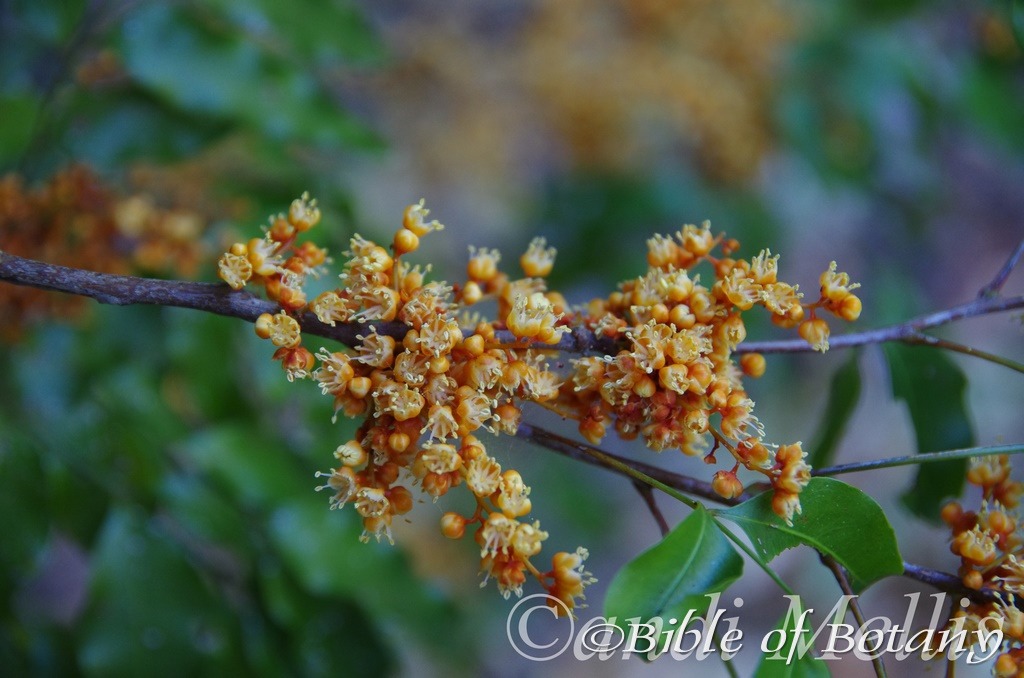
Richmond River NSW
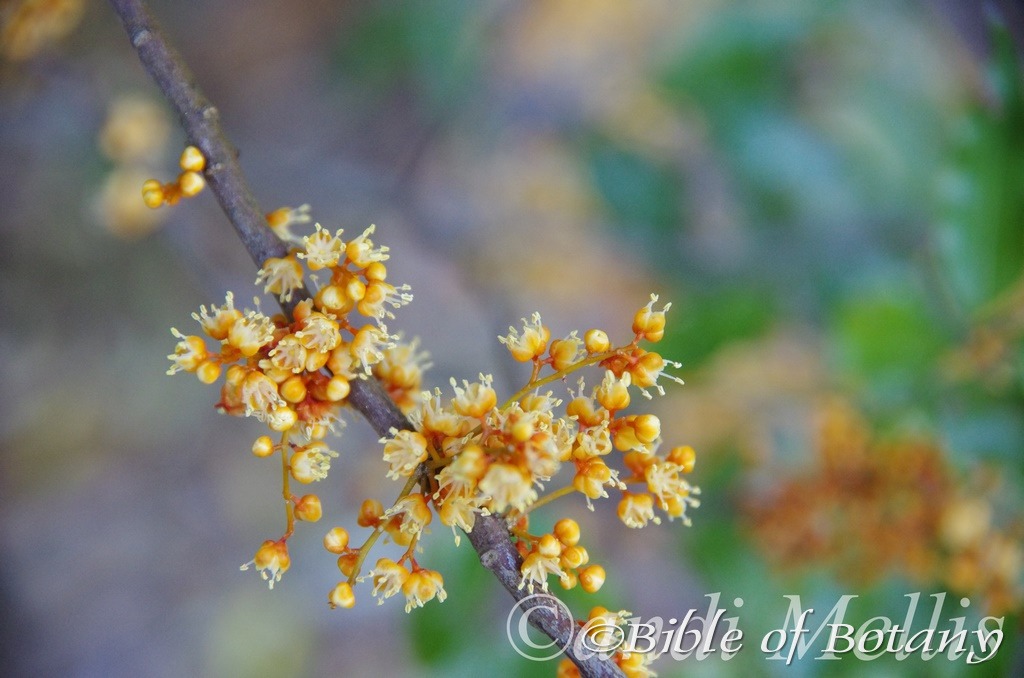
Richmond River NSW
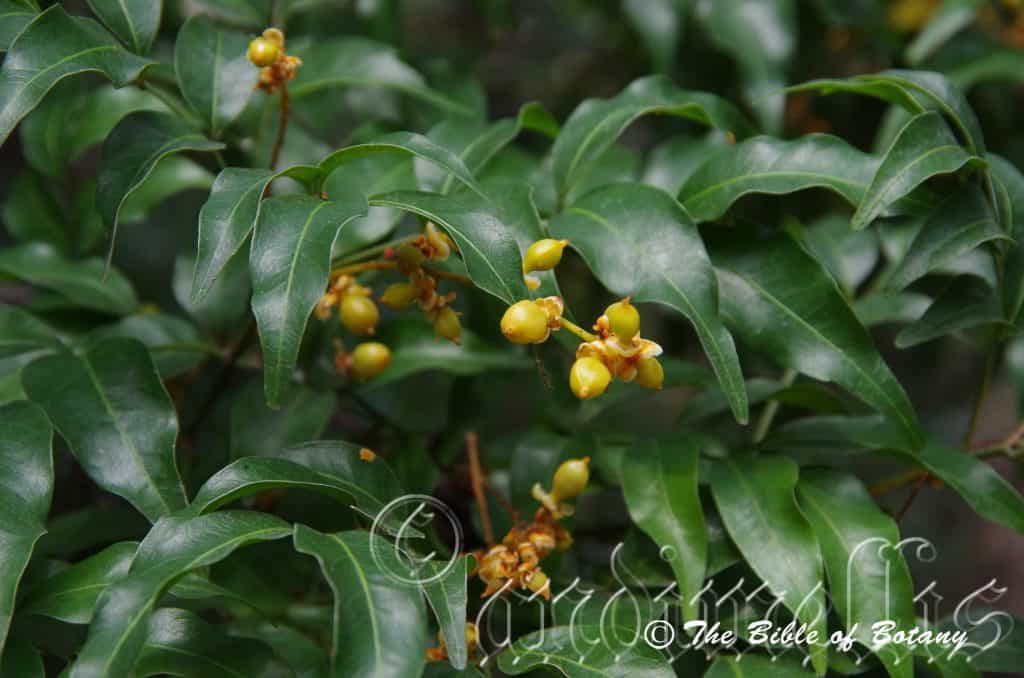
Mount Cootha Botanical Gardens Qld.
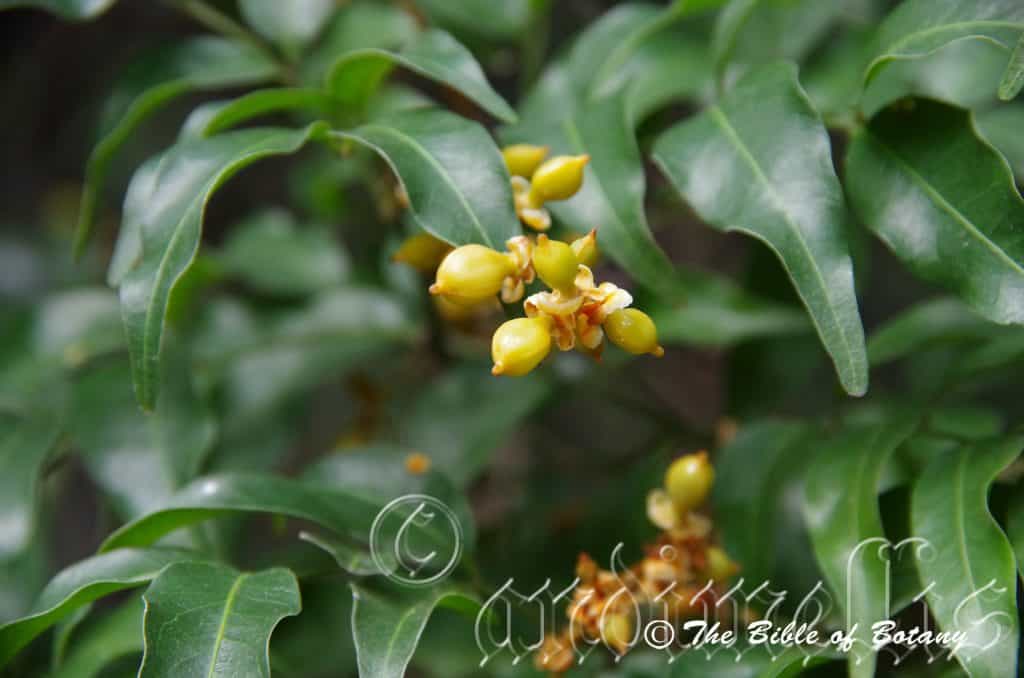
Mount Cootha Botanical Gardens Qld.
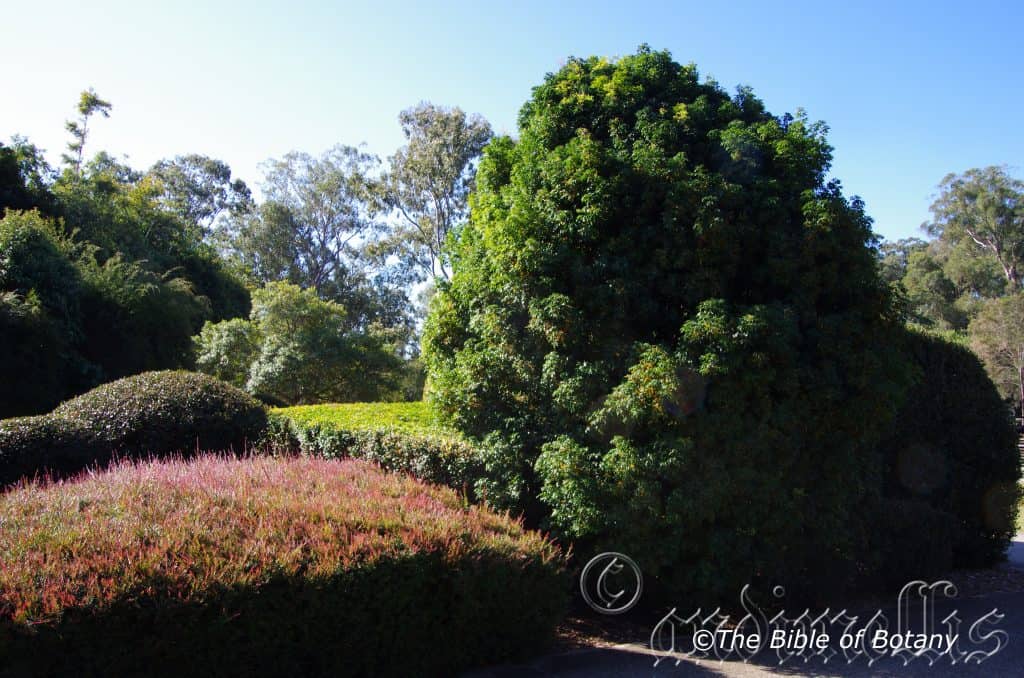
Rosser Gardens Benowa Qld.
Lepiderema pulchella
Classification:
Unranked: Eudicots
Unranked: Rosids
Order: Sapindales
Family: Sapindaceae
Genus: From Lepidōtós, which is Ancient Greek or Lepidōtum, which is Latin for a scale or scaly and Rima which is Ancient Greek fora slit, fissure, or narrow elongated opening between two symmetrical parts. It refers to petals in the bud stage, which have a groove between the scale like petals.
Specie: From Pulchella which is Latin for pretty. It usually refers to flowers, which are pink and rather attractive.
Sub species:
Common Name: Fine Leaf Tuckeroo.
Distribution:
Lepiderema pulchella is restricted to several widely disjunct populations on the Great Dividing Range which includes the Daintree National Park, Mount Dryandra to Shute Harbour, Caloundra hinterland and from the Nunimbah Valley in southern Queensland to Limpinwood Floral Reserve and the Tweed river catchments in northern New South Wales. It is also found on the Richmond River and Stotts Island in far north eastern New South Wales.
https://avh.ala.org.au/occurrences/search?taxa=Lepiderema+pulchella#tab_mapView
Habitat Aspect Climate:
Lepiderema pulchella prefer light dappled shade to full sun. It grows in dry sclerophyll forests. The altitude ranges from 50 meter ASL to 750 meters ASL.
The Temperatures range from minus 1 degree in August to 36 degrees in January.
The rainfalls range from lows of 1000mm to an average of 3000mm.
Soil Requirements:
Lepiderema pulchella prefer to grow on light sandy clays to medium sandy clays. The soils are usually derived from decomposed metasandstones with black basalts. The soils pH ranges from 5pH to 6pH. It does not tolerate waterlogged soils but does appreciate permanent soil moisture. Non saline soils to moderately saline soils are tolerated.
Height & Spread:
Wild Plants: 10m to 15m by 6m to 8m.
Characteristics:
Lepiderema pulchella’s bark is tight, grey, hard and usually covered in lichens and mosses. The bark is persistent on the trunk and lower branches thickening as the tree ages. The branches are mid green and glabrous while the new growth is pale pink and glabrous.
Lepiderema pulchella’s disjunct alternate leaves, measure 70mm to 150mm in length by 55mm to 165mm in width. The 4 to 14 leaflets are narrow elliptic to lanceolate and are slightly falcate. The leaflets measure 25mm to 80mm in length by 10mm to 25mm in width. The petioles rachis and petiolules are glabrous. The petioles measure 15mm to 25mm in length while the petiolules measure 1mm to 3mm in length. The asymmetrical bases are attenuate while the apexes are bluntly acuminate. The discolourous laminas are pale green, semi glossy to glossy and glabrous on the upper laminas while the lower laminas are paler. The laminas are undulating and decurve downwards from the bases to the apexes while the margins are entire. The mid vein is slightly prominent on the lower lamina and is not visible on the upper lamina. The leaves are weakly to strongly aromatic smelling of citronella.
The new growth is pastel green tinged pink with entire margins or coarsely toothed margins.
The inflorescences of Lepiderema pulchella are panicles born from the leaf upper leaf axils and measure 50mm to 100mm in length. The peduncle, rachis and pedicels are glabrous. The pedicels measure 3mm to 5mm in length. The 4 orbicular, pale orange to creamy orange sepals are cupular and glabrous. The sepals measure 2.5mm to 3mm in length by 2.5mm to 3mm in diameter. The 4 orbicular, pale yellow-orange to orange finely spotted orange sepals are cupular and glabrous. The petals measure 4mm to 5mm in length by 4mm to 5mm in diameter.
The 8 white filaments are covered in white puberulent hairs and measure 2mm to 3mm in length. The yellow adnately fixed anthers are obloidal and measure 1.5mm to 2mm in length. The olive-yellow globose ovary is glabrous and measures 2.5mm to 3.1mm in length by 2mm to 2.5mm in diameter. The bifid to trifid pistil is centrally located. The flowers appear from October to December.
Lepiderema pulchella’s fruits are globose, ribbed capsules. The 3 locular capsules measure 8mm to 10mm in length by 6.5mm to 8mm in diameter and are shortly attenuate at the base. The pale green capsules turn bright orange to bright orange-red when ripe. The valves are divaricate. The deep brown, orbicular seeds measure 5mm to 7mm in length by 5mm to 7mm in diameter. The long, yellow aril is attached at the base. The fruits ripen in December to early January.
Wildlife:
Lepiderema pulchella flowers are fed upon by numerous small butterflies, native bees, native beetles, wasps and flies.
Cultivation:
Lepiderema pulchella are beautiful small erect trees for small to large gardens which are close to the coast or high in the mountains in warm temperate, sub-tropical or tropical gardens. As garden subjects they will grow from 8 meters to 12 meters in height by 4 meters to 6 meters in diameter when grown in the open. It is cold tolerant to temperatures at least as low as minus 2 degrees once established.
It is best used as a small park tree, placed in the background or planted centrally as a small feature tree in small gardens surrounded by other small native shrubs with deep green large simple leaves to help high light foliage. Placed at the rear of a bush garden their striking display of paler leaves followed by the brilliant orange fruits will draw your attention so that you will want to investigate further. Plants with small red flowers and large or fine green leaves can be used in the mid ground while small red flowering prostrate shrubs are used in the front. Whether it is in flower or not these trees will catch your attention because of the leaves and the interesting bark.
The trees make very good accent trees in front of low set commercial buildings, industrial sheds or single or 2 story school buildings where they will break up hard rigid architectural lines and give warmth and breadth to a building. Here mixed with trees with large deep green leaves look delicate and need to be planted in small groups of 3 to 1 to give balance.
It also is a great looking rainforest tree for beginners on smaller allotments. Mix them with Harpullia pendula, Mallotus philippensis the red kamala, Rhodomyrtus psidioides the native guava, Syzygium tierneyanum, Melicope micrococca, Acmena smithii, Backhousia myrtifolia, Brachychiton acerifolius, Davidsonia pruriens or Syzygium wilsonii just to mention a few small rainforest trees which are suitable for a small suburban block and have great foliage contrasts.
Lepiderema pulchella also make great beginners bonsai plant because of their fast growth and hardiness in containers. It is easy to maintain and the trunks will bulk up in about three years from a seedling.
Propagation:
Seeds: Lepiderema pulchella seeds can be sown directly into a seed raising mix after roughing the sides with fine sandpaper to assist in germination. Cover the seeds with 15mm to 20mm of fine weed free mulch and keep moist. Place the tray in a warm sunny position. When the seedlings are 20mm to 30mm tall, prick them out and plant them into 50mm native tubes using a good organic mix.
Once the seedlings reach 100mm to 150mm in height they can be planted out into their permanent position.
Fertilize using seaweed, fish emulsion or organic chicken pellets soaked in water on an alternate basis. Fertilize every two months until the plants are established then twice annually in early September and March to maintain health, vitality and better flowering.
Further Comments from Readers:
Hi reader, it seems you use The Bible of Botany a lot. That’s great as we have great pleasure in bringing it to you! It’s a little awkward for us to ask, but our first aim is to purchase land approximately 1,600 hectares to link several parcels of N.P. into one at The Pinnacles NSW Australia, but we need your help. We’re not salespeople. We’re amateur botanists who have dedicated over 30 years to saving the environment in a practical way. We depend on donations to reach our goal. If you donate just $5, the price of your coffee this Sunday, We can help to keep the planet alive in a real way and continue to bring you regular updates and features on Australian plants all in one Botanical Bible. Any support is greatly appreciated. Thank you.
In the spirit of reconciliation we acknowledge the Bundjalung, Gumbaynggirr and Yaegl and all aboriginal nations throughout Australia and their connections to land, sea and community. We pay our respect to their Elders past, present and future for the pleasures we have gained.
Lepidosperma concavum
Classification:
Unranked: Monocots
Unranked: Commelinids
Order: Poales
Family: Cyperaceae
Genus: From Lepidōtós, which is Ancient Greek or Lepidōtum, which is Latin for a scale or scaly and Spérma, which is Ancient Greek for a seed. It refers to seeds or nuts, which are covered in scales.
Specie: From Concava, which is Latin for a hollow. It refers to a surfaces usually the seeds, which bends inwards.
Sub specie:
Common Name:
Distribution:
Lepidosperma concavum is found south from Beerwah in southern Queensland to Yumbarra Conservation Park in southern central South Australia. It is found within 280 kilometres from the coast. There is an isolated population in far north Queensland in the Mount Spec National Park.
In Tasmania it is found on the Bass Strait Islands of King Island, Flinders Island and Deal Island. On the main land it is found from on Strahan the central western coast north along the coastal fringe to the Huon Valley in the south east corner of the state.
https://avh.ala.org.au/occurrences/search?taxa=Lepidosperma+concavum#tab_mapView
Habitat Aspect Climate:
Lepidosperma concavum prefers full sunlight to very light dappled shade. It grows in very exposed situations along headlands in open forests or open woodlands. The altitude ranges from 5 meter ASL to 360 meters ASL.
The temperatures range from minus 4 degrees in August to 40 degrees in January.
The rainfall ranges from lows of 250mm to 1650mm average per annum.
Soil Requirements:
Lepidosperma concavum prefers course sands, fine sharp sands fatty sands and light clays. The soils are usually derived from sandstone, granites, accumulated sands or at times sandy metamorphic rocks. The soils pH ranges from 5pH to 7pH. It does not tolerate waterlogged soils. Non saline soils to the high end of moderately saline soils are tolerated as are salt laden winds.
Height & Spread:
Wild Plants: 0.2m to 0.6m by 0.25m to 0.8m.
Characteristics:
Lepidosperma concavum is an open tufted perennial with short erect rhizomes or when present are very short. The rigid culms are erect and are flat or convex on one face and concave to convex on the other surface. The smooth or finely striated culms are glabrous and measure 200mm to 600mm in length. The margins are scabrous or scaberulous.
The dull, linear leaves measure 150mm to 500mm in length by 3mm to 6mm in width. The leaf sheaths are introrsely scabrous while the ligules are eciliate membranous. The sheaths are usually straw coloured or on rare occasions are reddish-purple on the apical third and deep yellow-brown to mid grey-brown on the basal half. The sheaths measure 3mm to 12mm in length. The bases merge into the sheaths while the apexes are obtuse or acute. The concolourous laminas are mid olive-green, glossy and glabrous. The laminas are thick, flat or convex on one face and concave to convex on the other surface and while the margins are entire.
The inflorescences are ovate to oblong in outline, erect and dense panicles. The panicles measure 30mm to 150mm in length by 20mm to 40mm in diameter at the base. The involucral bract is shorter than inflorescences or on rare occasions is longer when the inflorescences are depauperate. The involucral bract is leaf like and measures 30mm to 70mm in length.
The numerous spikelets in a panicle measure 5mm to 8mm in length.
The 6 to 8 similar glumes are reddish-brown to grey-brown, are without keels and are nerveless. The lanceolate lower glumes are puberulent with obtuse to acute or mucronate apexes and measure 4mm to 6mm in length. The lowest 2 or 3 are empty. The lanceolate upper glumes are puberulent with acute apexes and measure 6mm to 7mm in length. The 6 white scales are a third to three fifths the length of the nut.
The 2 or 3 stamens have filiform, white filaments. The pale yellow, obloidal anthers measure 2.5mm to 4mm in length while the appendage measures 0.3mm to 1mm in length. The white style is trifid. The flowers appear from September to January or February.
The fruits are ovoidal nuts. The nuts are pale fawn to deep brown, glossy and measures 2.7mm to 4mm in length by 1.3mm to 1.8mm in diameter.
Wildlife:
Lepidosperma concavum’s like all grasses and rushes have a wide and varied number of higher animals, insects and fungi that rely on them for their very existence. The Annals of Botany at www.aob.oxfordjournals.org cited the following wildlife associated with Lepidosperma laterale. Many of the Elachistine moths feed upon the leaves like Elachista carcharota and maybe found on Lepidosperma concavum.
Cultivation:
Lepidosperma concavum are unusual flowering sedges for dry sub-tropical to temperate gardens with sandy soils. It requires little water and attention making it ideal for coastal sandy beach front homes. In cultivation they will grow 500mm to 600mm in height by 200mm to 300mm in diameter when grown in an open situation in full sun.
Lepidosperma concavum offers the non-conforming gardener an astonishing new concept for rockeries or small heaths. The coarse flat leaves and culms are very striking offering strong accents in heath or bush gardens. Hibbertia obtusifolia, Isotoma axillaris, most of the dwarf Goodenia specie would be satisfactory despite having larger leaves as would and Viola betonicifolia would all suffice beautifully.
Mass plantings are best achieved by leaving spaces between the individual plants so plant them at 800mm to 1.5 meter centres.
Propagation:
Seeds: Collecting seeds from mature plants of Lepidosperma concavum is not difficult but the collector must be vigilant as the seeds will disperse over
It is easy to grow, harvest and propagate but needs other small fine leaf plants around it to be successful. Low mounded plants with small bright green leaves would make it appear larger and more powerful. Hibbertia linearis,
in a matter of a couple of weeks when fully ripe. The fresh seeds can be sown directly into a seed raising mix however better; more even germination is gained if the seeds are lightly scarified first to imitate nature. This can by gently rubbing the nuts over piece of very fine sand paper. Alternately place them into a plastic bottle that has had a piece of emery paper glued to the inside of the bottle. Shake the bottle for a few minutes. Now cover the nuts to a depth of 2mm to 5mm and keep moist. Place the trays in a warm sunny position. The seeds usually germinate rapidly with a strike rate of over 80mm.
When the seedlings are 20mm to 30mm tall, prick them out and plant them into 50mm native tubes using a good quality mix.
Once the seedlings reach 50mm in height they can be repotted for indoor use or 100mm to 150mm in height plant them out into their permanent position.
Fertilize using seaweed, fish emulsion or organic chicken pellets soaked in water on an alternate basis. Fertilize every two months until the plants are established then twice annually in early September and March to maintain health, vitality and better flowering.
Further Comments from Readers:
Hi reader, it seems you use The Bible of Botany a lot. That’s great as we have great pleasure in bringing it to you! It’s a little awkward for us to ask, but our first aim is to purchase land approximately 1,600 hectares to link several parcels of N.P. into one at The Pinnacles NSW Australia, but we need your help. We’re not salespeople. We’re amateur botanists who have dedicated over 30 years to saving the environment in a practical way. We depend on donations to reach our goal. If you donate just $5, the price of your coffee this Sunday, We can help to keep the planet alive in a real way and continue to bring you regular updates and features on Australian plants all in one Botanical Bible. Any support is greatly appreciated. Thank you.
In the spirit of reconciliation we acknowledge the Bundjalung, Gumbaynggirr and Yaegl and all aboriginal nations throughout Australia and their connections to land, sea and community. We pay our respect to their Elders past, present and future for the pleasures we have gained.
Lepidosperma elatius
Classification:
Unranked: Monocots
Unranked: Commelinids
Order: Poales
Family: Cyperaceae
Genus: From Lepidōtós, which is Ancient Greek or Lepidōtum, which is Latin for a scale or scaly and Spérma, which is Ancient Greek for a seed. It refers to seeds or nuts, which are covered in scales.
Specie: From Elatus, which is Latin for very tall. It refers to plants, which are much taller than other species in the genus.
Sub specie:
Common Name: Tall Sword Grass.
Distribution:
Lepidosperma elatius is found south from the Mount Parnassus in central coastal Queensland to the lower Glenelg River in south western Victoria. It is mainly found on and east of the Great Dividing Range while in southern Victoria it is found within 120 kilometres from the coast.
In Tasmania it is found on King Island, Flinders Island while on the main land it is mainly found circumnavigating the state within 70 kilometres from the coast.
https://avh.ala.org.au/occurrences/search?taxa=Lepidosperma+elatius#tab_mapView
Habitat Aspect Climate:
Lepidosperma elatius prefers full sunlight to very light dappled shade. It grows in sheltered situations in closed moist forests often adjacent to sub-tropical rainforests or temperate rainforests. The altitude ranges from 50 meter ASL to 1100 meters ASL.
The temperatures range from minus 4 degrees in August to 40 degrees in January.
The rainfall ranges from lows of 400mm to 1600mm average per annum.
Soil Requirements:
Lepidosperma elatius prefers course sands, fine sharp sands fatty sands and light clays. The soils are usually derived from sandstone, granites, metamorphic rocks or accumulated sands. The soils pH ranges from 5pH to 7pH. It does not tolerate waterlogged soils but prefers all year round moisture in the soil. Non saline soils to the high end of moderately saline soils are tolerated as are salt laden winds.
Height & Spread:
Wild Plants: 0.7m to 1.8m by 1m to 2m
Characteristics:
Lepidosperma elatius is an open tufted perennial with very short rhizomes. The rigid culms are erect, biconvex, or convex on 1 surface and flat on the other surface or margins flat with a central biconvex ridge. The striate, glabrous, smooth culms measure 700mm to 1750mm in height by 5mm to 15mm in width. The margins are scabrous.
The linear leaves are flat and measure 500mm to 1600mm in length by 6mm to 20mm in width. The leaf sheaths are reddish-brown to fawnish-yellow abaxially, glossy and are usually not viscid. The sheaths measure 3mm to 12mm in length. The bases merge into the sheaths while the apexes are obtuse or acute. The concolourous laminas are soft, pale blue-green and are sparsely covered in fine papillose lumps. The laminas are flat while the margins are entire.
The inflorescences are loose, open, ovate to oblong in outline compound panicles with drooping branches. The panicles measure 180mm to 650mm in length by 50mm to 200mm in diameter at the base. The involucral bract is much shorter than the inflorescence.
The numerous spikelets are densely arranged on the spikes and measure 3mm to 7mm in length.
The 4 to 7 similar glumes are reddish-brown, without keels and are nerveless. The lanceolate lower glumes are puberulent with mucronate apexes and measure 2.6mm to 5.5mm in length. The lowest 1 or 2 are empty. The lanceolate upper glumes are puberulent with long acute apexes and measure 3mm to 6mm in length. The 6 white to pale brown scales are a quarter to a third the length of the nut.
The 2 or 3 stamens have filiform, white filaments and measure 1.6mm to 3mm in length. The pale yellow, obloidal anthers measure 1.6mm to 3mm in length while the appendage measures 0.3mm to 0.5mm in length. The white style is trifid. The flowers appear from September to February.
The fruits are trigonous, ovoidal to narrow ellipsoidal nuts. The nuts measure 2mm to 3mm in length by 1.3mm to 1.5mm in diameter. The green nuts turn greyish-brown to reddish-brown, smooth, and glossy when ripe.
Wildlife:
Lepidosperma elatius’s like all grasses and rushes have a wide and varied number of higher animals, insects and fungi that rely on them for their very existence. The Annals of Botany at www.aob.oxfordjournals.org cited the following wildlife associated with Lepidosperma elatius.
Lepidosperma elatius is the preferred nesting site and material for nest building for the Pilotbird (Pycnoptilus floccosus), Leadbeater’s possum (Gymnobelideus leadbeateri) and the Elachistine moth feed upon the leaves like Elachista deusta.
Cultivation:
Lepidosperma elatius are unusual flowering sedges for dry sub-tropical to temperate gardens with sandy soils. It requires little water and attention making it ideal for coastal sandy beach front homes. In cultivation they will grow 1.4 meters to 1.6 meters in height by 1.5 meters to 2 meters in diameter when grown in an open situation in full sun.
Lepidosperma elatius offers the non-conforming gardener an astonishing new concept for rockeries or small heaths. The coarse flat leaves and culms are very striking offering strong accents in heath or bush gardens. Along driveways or against walls their strong glossy leaves and culms make a great display and break up hard horizontal lines.
It is easy to grow, harvest and propagate but needs other small fine leaf plants around it to be successful. Low mounded plants with small bright green leaves would make it appear larger and more powerful. Hibbertia linearis, Hibbertia obtusifolia, Isotoma axillaris, most of the dwarf Goodenia specie would be satisfactory despite having larger leaves as would and Viola betonicifolia would all suffice beautifully.
Mass plantings are best achieved by leaving spaces between the individual plants so plant them at 2 meter to 3 meter centres.
Propagation:
Seeds: Collecting seeds from mature plants of Lepidosperma elatius is not difficult but the collector must be vigilant as the seeds will disperse over in a matter of a couple of days to a week when fully ripe. The fresh seeds can be sown directly into a seed raising mix however better; more even germination is gained if the seeds are stratified for a short period and sown in spring. This can be achieved by placing the seeds in a paper bag in the vegetable crisper for a few weeks prior to sowing. Cover the seeds to a depth of 2mm. Seeds usually germinate rapidly with a strike rate of over 80mm.
When the seedlings are 20mm to 30mm tall, prick them out and plant them into 50mm native tubes using a good quality mix.
Once the seedlings reach 50mm in height they can be repotted for indoor use or 100mm to 150mm in height plant them out into their permanent position.
Fertilize using seaweed, fish emulsion or organic chicken pellets soaked in water on an alternate basis. Fertilize every two months until the plants are established to maintain health, vitality and better flowering.
Further Comments from Readers:
Hi reader, it seems you use The Bible of Botany a lot. That’s great as we have great pleasure in bringing it to you! It’s a little awkward for us to ask, but our first aim is to purchase land approximately 1,600 hectares to link several parcels of N.P. into one at The Pinnacles NSW Australia, but we need your help. We’re not salespeople. We’re amateur botanists who have dedicated over 30 years to saving the environment in a practical way. We depend on donations to reach our goal. If you donate just $5, the price of your coffee this Sunday, We can help to keep the planet alive in a real way and continue to bring you regular updates and features on Australian plants all in one Botanical Bible. Any support is greatly appreciated. Thank you.
In the spirit of reconciliation we acknowledge the Bundjalung, Gumbaynggirr and Yaegl and all aboriginal nations throughout Australia and their connections to land, sea and community. We pay our respect to their Elders past, present and future for the pleasures we have gained.
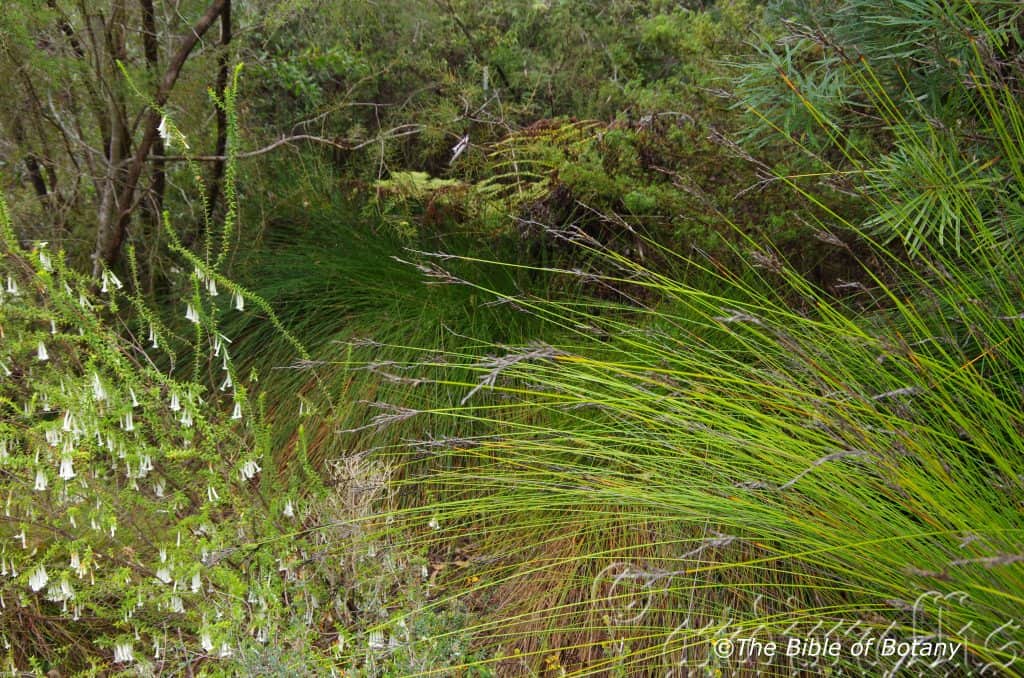
Canberra Botanic Gardens ACT
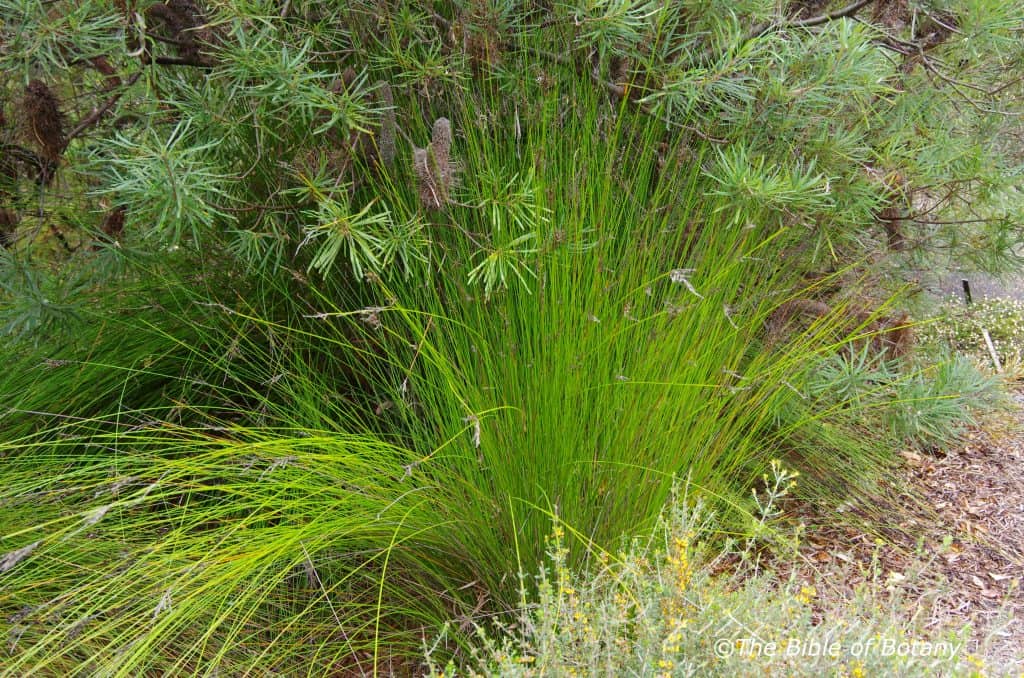
Canberra Botanic Gardens ACT
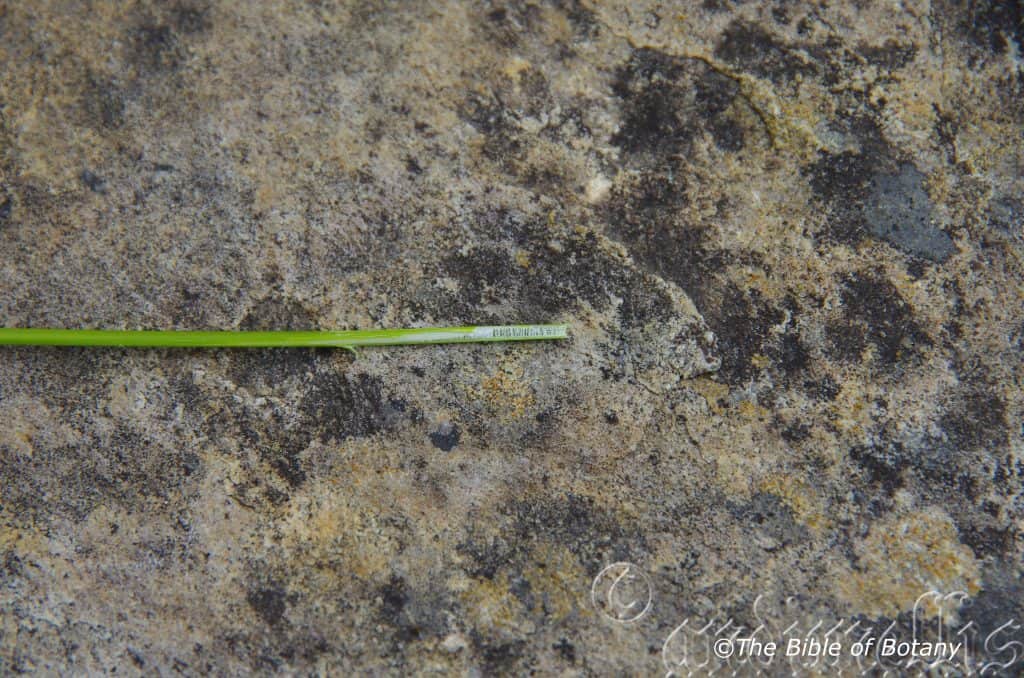
Canberra Botanic Gardens ACT
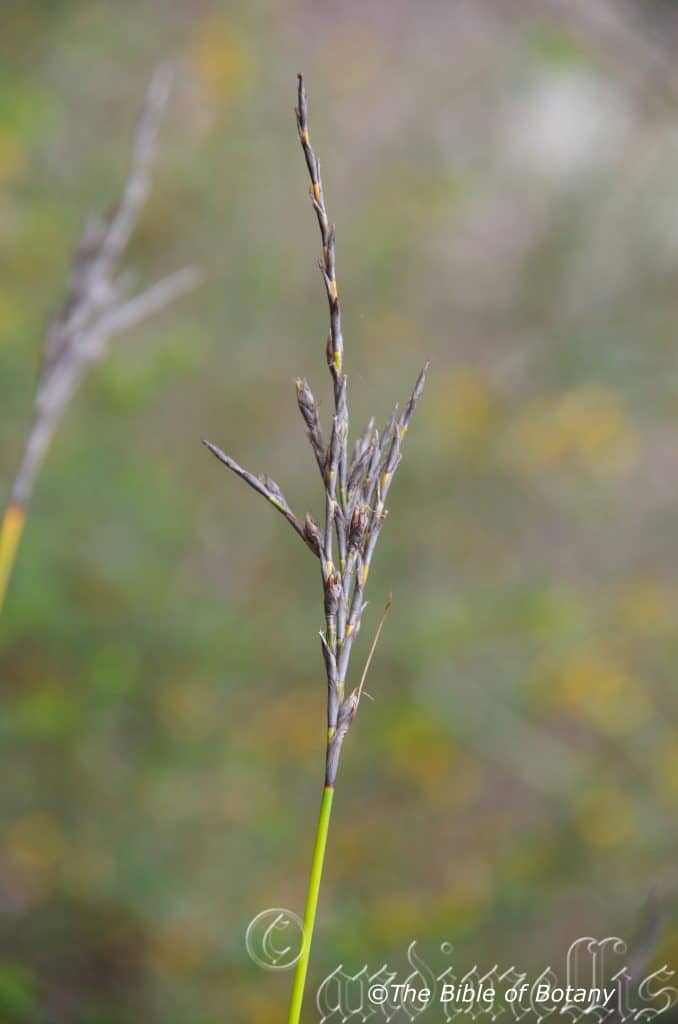
Canberra Botanic Gardens ACT
Lepidosperma filiforme
Classification:
Unranked: Monocots
Unranked: Commelinids
Order: Poales
Family: Cyperaceae
Genus: From Lepidōtós, which is Ancient Greek or Lepidōtum, which is Latin for a scale or scaly and Spérma, which is Ancient Greek for a seed. It refers to seeds or nuts, which are covered in scales.
Specie: From Filum, which is Latin for a thread or a thin cord and Forme which is Latin for to take the shape or form of. It refers to a structure or organ, which is thread like. Here it refers to the plants, which are much finer than other species in the genus.
Sub specie:
Common Name:
Distribution:
Lepidosperma filiforme is found south from McCauley heads in far north eastern New South Wales to the Glenelg River in south western Victoria. It is found within 120 kilometres of the coast.
In Tasmania it is found on the Bass Strait Islands of the Flinders Island group. It is found over most the state of Tasmania except the high lands.
https://avh.ala.org.au/occurrences/search?taxa=Lepidosperma+filiforme#tab_mapView
Habitat Aspect Climate:
Lepidosperma filiforme prefers full very light dappled shade to medium shade. It grows in very exposed situations along headlands in open forests or open woodlands. The altitude ranges from 5 meter ASL to 360 meters ASL.
The temperatures range from minus 4 degrees in August to 38 degrees in January.
The rainfall ranges from lows of 550mm to 2850mm average per annum.
Soil Requirements:
Lepidosperma filiforme prefer course sands, fine sharp sands, fatty sands, peaty sands to light clays. The soils are usually derived from sandstone, granites or accumulated sands. The soils pH ranges from 5pH to 7pH. It does not tolerate waterlogged soils. Non saline soils to the high end of moderately saline soils are tolerated as are salt laden winds.
Height & Spread:
Wild Plants: 0.3m to 1m by 0.5m to 1.2m
Characteristics:
Lepidosperma filiforme is an open tufted perennial with very short rhizomes. The culms are rigid, erect and slightly compressed rather than terete. It is smooth and glabrous and measure 300mm to 1000mm in length by 0.7mm to 2mm in width.
The compressed rather than true terete leaves are channelled near the base. The leaves measure 250mm to 900mm in length by 0.8mm to 1mm in diameter. The pale dull fawnish-yellow leaf sheaths are not viscid. The bases merge into the sheaths while the apexes are obtuse or acute. The concolourous laminas are mid blue-green and are glabrous.
The inflorescences are linear to fan-shaped in outline, erect to spreading outline compound panicles with drooping branches. The panicles measure 10mm to 120mm in length by 50mm to 80mm in diameter at the base. The involucral bract is much shorter than the inflorescence.
The few to numerous spikelets are loosely or densely arranged on the spikes and measure 6mm to 7mm in length.
The 4 to 6 similar glumes are reddish-brown to grey-brown, are without keels and are without nerves. The lanceolate lower glumes are glabrous with acute to mucronate apexes and measure 5mm to 8mm in length. The lowest 2 or 3 are empty. The lanceolate upper glumes are scabrous with long acute apexes and measure 7mm to 9mm in length. The 5 or 6 off yellow-white to yellowish scales are a quarter to a third the length of the nuts.
The 2 or 3 stamens have filiform, white filaments and measure 2mm to 4mm in length. The pale yellow, obloidal anthers measure 2.5mm to 4.3mm in length while the appendage measures 0.8mm to 1.3mm in length. The white style is trifid. The flowers appear from September to November.
The fruits are trigonous, narrow obloidal nuts. The green nuts turn pale grey-green to reddish-brown and are smooth and glabrous when ripe. The nuts measure 2.8mm to 4mm in length by 1.2mm to 1.8mm in diameter.
Wildlife:
Lepidosperma filiforme’s like all grasses and rushes have a wide and varied number of higher animals, insects and fungi that rely on them for their very existence. The Annals of Botany at www.aob.oxfordjournals.org cited the following wildlife associated with Lepidosperma laterale.
The Smoky mouse (Pseudomys fumeus), the New Holland mouse (Psuedomys novaehollandiae), the White-footed dunnart (Sminthopsis leucopus) and the Ground parrot (Pezoporus wallicus).
Cultivation:
Lepidosperma filiforme are unusual flowering sedges for dry sub-tropical to temperate gardens with sandy soils that always look green and fresh. It requires little water and attention making it ideal for coastal sandy beach front homes. In cultivation they will grow 0.8 meters to 1 meters in height by 1 meters to 1.3 meters in diameter when grown in an open situation in full sun.
Lepidosperma filiforme offers the non-conforming gardener an astonishing new concept for rockeries or small heaths. The coarse flat leaves and culms are very striking offering strong accents in heath or bush gardens. Along driveways or against walls their strong glossy leaves and culms make a great display and break up hard horizontal lines.
It is easy to grow, harvest and propagate but needs other small fine leaf plants around it to be successful. Low mounded plants with small bright green leaves would make it appear larger and more powerful. Hibbertia linearis, Hibbertia obtusifolia, Isotoma axillaris, most of the dwarf Goodenia specie would be satisfactory despite having larger leaves as would and Viola betonicifolia would all suffice beautifully.
Mass plantings are best achieved by leaving spaces between the individual plants so plant them at 1.5 meter to 3 meter centres.
Propagation:
Seeds: Collecting seeds from mature plants of Lepidosperma filiforme is not difficult but the collector must be vigilant as the seeds will disperse over in a matter of a couple of days to a week when fully ripe. The fresh seeds can be sown directly into a seed raising mix however better; more even germination is gained if the seeds are stratified for a short period and sown in spring. This can be achieved by placing the seeds in a paper bag in the vegetable crisper for a few weeks prior to sowing. Cover the seeds to a depth of 2mm. Seeds usually germinate rapidly with a strike rate of over 80mm.
When the seedlings are 20mm to 30mm tall, prick them out and plant them into 50mm native tubes using a good quality mix.
Fertilize using seaweed, fish emulsion or organic chicken pellets soaked in water on an alternate basis. Fertilize every two months until the plants are established to maintain health, vitality and better flowering.
Further Comments from Readers:
Hi reader, it seems you use The Bible of Botany a lot. That’s great as we have great pleasure in bringing it to you! It’s a little awkward for us to ask, but our first aim is to purchase land approximately 1,600 hectares to link several parcels of N.P. into one at The Pinnacles NSW Australia, but we need your help. We’re not salespeople. We’re amateur botanists who have dedicated over 30 years to saving the environment in a practical way. We depend on donations to reach our goal. If you donate just $5, the price of your coffee this Sunday, We can help to keep the planet alive in a real way and continue to bring you regular updates and features on Australian plants all in one Botanical Bible. Any support is greatly appreciated. Thank you.
In the spirit of reconciliation we acknowledge the Bundjalung, Gumbaynggirr and Yaegl and all aboriginal nations throughout Australia and their connections to land, sea and community. We pay our respect to their Elders past, present and future for the pleasures we have gained.
Lepidosperma gunnii
Classification:
Unranked: Monocots
Unranked: Commelinids
Order: Poales
Family: Cyperaceae
Genus: From Lepidōtós, which is Ancient Greek or Lepidōtum, which is Latin for a scale or scaly and Spérma, which is Ancient Greek for a seed. It refers to seeds or nuts, which are covered in scales.
Specie: Is named in honour of Ronald Campbell Gunn; 1808-1881, who was a South African born Tasmanian collector of plants and botanist.
Sub specie:
Common Name: Little Sword Grass.
Distribution:
Lepidosperma gunnii is found south from Nudley Forest in southern Queensland to Port Campbell on the Warnambool Plain in southern Victoria. It is mainly found on the western slopes, on and east of the Great Dividing Range with a notable exception being a population found in Carnarvon Gorge.
In Tasmania it is found on the Bass Strait Islands of King Island, Flinders Island down the eastern half of the state.
https://avh.ala.org.au/occurrences/search?taxa=Lepidosperma+gunnii#tab_mapView
Habitat Aspect Climate:
Lepidosperma gunnii prefers full sunlight to very light dappled shade. It grows in very exposed situations along headlands in open forests and open woodlands. The altitude ranges from 5 meter ASL to 360 meters ASL.
The temperatures range from minus 4 degrees in August to 40 degrees
The rainfall ranges from lows of 250mm to 1650mm average per annum.
Soil Requirements:
Lepidosperma gunnii prefers course sands, fine sharp sands fatty sands and light clays. The soils are usually derived from sandstone, granites, metamorphic rocks or accumulated sands. The soils pH ranges from 5pH to 7pH. It does not tolerate waterlogged soils. Non saline soils to the high end of moderately saline soils are tolerated as are salt laden winds.
Height & Spread:
Wild Plants: 0.2m to 0.4m by 0.25m to 0.8m
Characteristics:
Lepidosperma gunnii is an open tufted perennial with short rhizomes. The culms are rigid, erect, biconvex or rarely flattened on 1 surface. The smooth glabrous culms measure 150mm to 400mmm in height by 1mm to 2.5mm in width. The margins are smooth to scabrous.
The filiform to linear leaves measure 120mm to 350mm in length by 1mm to 3mm in width. The leaf sheaths are fawnish-yellow usually with a deep reddish-brown base or at times reddish, glossy and not viscid. The leaf bases merge into the sheaths while the apexes are obtuse or acute. The concolourous laminas are grass-green, smooth and glossy. The laminas are flat while the margins are entire.
The inflorescences are linear in outline and are narrow erect compound panicles with erect branches. The panicles measure 20mm to 80mm in length by 5mm to 10mm in diameter. The involucral bract is much shorter, usually a third to half the length of the inflorescence.
The few spikelets are densely arranged on the spikes and measure 3.5mm to 5.5mm in length.
The 4 to 7 similar glumes are reddish-brown, are without keels and are without nerves. The lanceolate lower glumes are scabrous near the acute to mucronate apexes and measure 2mm to 3.5mm in length. The lowest 2 or 3 glumes are empty. The lanceolate upper glumes are scabrous near the long acute apexes and measure 2.5mm to 4.5mm in length. The 6 or 8 creamy yellow to yellowish scales is a third to half the length of the nuts.
The 2 or 3 stamens have filiform, white filaments and measure 2mm to 4mm in length. The orange narrow obloidal anthers measure 1.7mm to 2.2mm in length while the appendage measures 0.5mm to 0.6mm in length. The white style is trifid. The flowers appear from September to March.
The fruits are trigonous ovoidal nuts. The fawn to pastel brown nuts are rugose, glabrous and measure 2.5mm to 3.3mm in length by 1.2mm to 1.7mm in diameter.
Wildlife:
Lepidosperma gunnii like all grasses and rushes have a wide and varied number of higher animals, insects and fungi that rely on them for their very existence. The Annals of Botany at www.aob.oxfordjournals.org cited the following wildlife associated with Lepidosperma gunnii.
The Smoky mouse (Pseudomys fumeus), the New Holland mouse (Psuedomys novaehollandiae), the White-footed dunnart (Sminthopsis leucopus) and the Ground parrot (Pezoporus wallicus).
Cultivation:
Lepidosperma gunnii are unusual flowering sedges for dry sub-tropical to temperate gardens with sandy soils that always look green and fresh. It requires little water and attention making it ideal for coastal sandy beach front homes. In cultivation they will grow 0.2 meters to 0.4 meters in height by 0.4 meters to 0.7 meters in diameter when grown in an open situation in full sun.
Lepidosperma gunnii offers the non-conforming gardener amazing new concepts for rockeries or small heath gardens. The coarse flat leaves and culms are very striking offering strong accents in heath or bush gardens. Along driveways or against walls, small sunny alcoves or court yards their strong glossy leaves and culms make a great display and break up hard horizontal lines. Placed near logs or between small boulders, around fish or frog ponds they give balance with a completely natural look. Isotom axillaris, Isotoma fluviatilis or Isotoma armstrongii all look beautiful balance together as they do in the wild.
It is easy to grow, harvest and propagate but needs other small fine leaf plants around it to be successful. Low mounded plants with small bright green leaves would make it appear larger and more powerful. Hibbertia linearis, Hibbertia obtusifolia, Isotoma axillaris, most of the dwarf Goodenia specie would be satisfactory despite having larger leaves as would and Viola betonicifolia would all suffice beautifully.
Mass plantings are best achieved by leaving spaces between the individual plants so plant them at 1.5 meter to 3 meter centres using small herbaceous plants between.
Propagation:
Seeds: Collecting seeds from mature plants of Lepidosperma gunnii is not difficult but the collector must be vigilant as the seeds will disperse over in a matter of a couple of days to a week when fully ripe. The fresh seeds can be sown directly into a seed raising mix however better; more even germination is gained if the seeds are stratified for a short period and sown in spring. This can be achieved by placing the seeds in a paper bag in the vegetable crisper for a few weeks prior to sowing. Cover the seeds to a depth of 2mm. Seeds usually germinate rapidly with a strike rate of over 80mm.
When the seedlings are 20mm to 30mm tall, prick them out and plant them into 50mm native tubes using a good quality mix.
Once the seedlings reach 50mm in height they can be repotted for indoor use or 100mm to 150mm in height plant them out into their permanent position.
Fertilize using seaweed, fish emulsion or organic chicken pellets soaked in water on an alternate basis. Fertilize every two months until the plants are established to maintain health, vitality and better flowering.
Further Comments from Readers:
Hi reader, it seems you use The Bible of Botany a lot. That’s great as we have great pleasure in bringing it to you! It’s a little awkward for us to ask, but our first aim is to purchase land approximately 1,600 hectares to link several parcels of N.P. into one at The Pinnacles NSW Australia, but we need your help. We’re not salespeople. We’re amateur botanists who have dedicated over 30 years to saving the environment in a practical way. We depend on donations to reach our goal. If you donate just $5, the price of your coffee this Sunday, We can help to keep the planet alive in a real way and continue to bring you regular updates and features on Australian plants all in one Botanical Bible. Any support is greatly appreciated. Thank you.
In the spirit of reconciliation we acknowledge the Bundjalung, Gumbaynggirr and Yaegl and all aboriginal nations throughout Australia and their connections to land, sea and community. We pay our respect to their Elders past, present and future for the pleasures we have gained.
Lepidosperma latens
Classification:
Unranked: Monocots
Unranked: Commelinids
Order: Poales
Family: Cyperaceae
Genus: From Lepidōtós, which is Ancient Greek or Lepidōtum, which is Latin for a scale or scaly and Spérma, which is Ancient Greek for a seed. It refers to seeds or nuts, which are covered in scales.
Specie: From Latēns, which is Latin for lurking, skulking or hiding. It refers to plants, which are not readily or easily seen in their environments.
Sub specie:
Common Name:
Distribution:
Lepidosperma latens is found in several disjunct populations in New South Wales south from Morriset to the Bega Valley with 2 populations further north on the Koonyum Range and the Boonoo Boonoo National Park near Tenterfield.
In Tasmania it is found on the Bass Strait Islands of King Island, Flinders Island and Deal Island. On the main land it is found from on Strahan the central western coast north along the coastal fringe to the Huon Valley in the south east corner of the state.
https://avh.ala.org.au/occurrences/search?taxa=Lepidosperma+latens#tab_mapView
Habitat Aspect Climate:
It prefers full sunlight to very light dappled shade. It grows in heaths, open forests and open woodlands often in exposed positions. The localized populations thrive in 2 distinct seasons, seasonally hot dry spring and summers with cool moist autumn and winters. The altitude ranges from 30 meter ASL to 930 meters ASL.
The temperatures range from minus 4 degrees in August to 36 degrees in January.
The rainfall ranges from lows of 700mm to 1650mm average per annum.
Soil Requirements:
Lepidosperma latens prefer course sands, fine sharp sands fatty sands to light clays. The soils are usually derived from sandstone or granites or rarely black basalt soils. The soils pH ranges from 5pH to 6pH. It tolerates seasonal waterlogged soils. Non saline soils to the high end of moderately saline soils are tolerated as are salt laden winds.
Height & Spread:
Wild Plants: 0.2m to 0.6m by 0.25m to 0.8m
Characteristics:
Lepidosperma latens is an open tufted perennial with short rhizomes. The erect culms are rigid, biconvex, or convex on 1 surface and almost flat on other surface. The olive-green culms are smooth, glabrous and measure 350mm to 600mm in height by 3.5mm to 4.5mm in diameter. The margins are acute, sharp and become erose with age.
The leaves are slightly convex on 1 surface and flat on the other surface and measure 300mm to 560mm in length by 2.5mm to 4mm in width. The leaf sheaths are brown to black tending to be fawnish-yellow at the apex, very smooth, glabrous, glossy and are occasionally viscid. The bases merge into the sheaths while the apexes are obtuse or acute. The concolourous laminas are soft, pale blue-green and are sparsely covered in fine papillose lumps. The laminas are flat to conduplicate while the margins are entire. The midvein is slightly prominent on the lower lamina and is faintly visible from the upper lamina.
The inflorescences are ovate to oblong in outline and are narrow erect compound panicles with erect branches. The panicles measure 50mm to 120mm in length by 20mm to 40mm in diameter. The involucral bracts are much shorter, usually a three quarters of the length of the branch in each inflorescence.
The few spikelets are densely arranged on the zig zag spikes and measure 6mm to 7.5mm in length.
The 5 to 6 similar glumes are reddish-brown to reddish-black, are without keels and are without nerves. The lanceolate lower glumes are glabrous or covered in white puberulent hairs and have mucronate apexes. The lower glumes measure 5mm to 6.5mm in length. The lowest 3 or 4 glumes are sterile. The fertile, lanceolate upper glumes are glabrous with obtuse or mucronate apexes and measure 5.5mm to 7mm in length. The 6 off white, creamy yellow to yellowish scales are a quarter of the length of the nuts.
The 2 or 3 stamens have filiform, white filaments and measure 2mm to 2.6mm in length. The lemon-yellow narrow obloidal anthers measure 2mm to 2.8mm in length while the appendage measures 0.5mm to 0.6mm in length. The white style is trifid. The flowers appear from September to February.
Lepidosperma latens’s The fruits are narrow ellipsoidal to narrow ovoidal trigonous nuts. The deep grey to reddish-brown nuts are smooth, glabrous and glossy. The nuts measure 2.6mm to 3mm in length by 1.2mm to 1.4mm in diameter.
Wildlife:
Lepidosperma latens like all grasses and rushes have a wide and varied number of higher animals, insects and fungi that rely on them for their very existence. The Annals of Botany at www.aob.oxfordjournals.org cited the following wildlife associated with Lepidosperma latens.
Many specie of the Elachistine moths feed upon the leaves like Elachista deusta.
Cultivation:
Lepidosperma latens are unusual flowering sedges for dry sub-tropical to temperate gardens with sandy soils that always look green and fresh. It requires little water and attention making it ideal for coastal sandy beach front homes. In cultivation they will grow 0.4 meters to 0.7 meters in height by 0.5 meters to 0.9 meters in diameter when grown in an open situation in full sun.
Lepidosperma latens offers the non-conforming gardener amazing new concepts for rockeries or small heath gardens. The coarse flat leaves and culms are very striking offering strong accents in heath or bush gardens. Along driveways or against walls, small sunny alcoves or court yards their strong glossy leaves and culms make a great display and break up hard horizontal lines. Placed near logs or between small boulders, around fish or frog ponds they give balance with a completely natural look.
It is easy to grow, harvest and propagate but needs other small fine leaf plants around it to be successful. Low mounded plants with small bright green leaves would make it appear larger and more powerful. Hibbertia linearis, Hibbertia obtusifolia, Isotoma axillaris, most of the dwarf Goodenia would be satisfactory despite having larger leaves as would and Viola betonicifolia would all suffice beautifully.
Mass plantings are best achieved by leaving spaces between the individual plants so plant them at 2 meter to 3 meter centres using small herbaceous plants between.
Propagation:
Seeds: Collecting seeds from mature plants of Lepidosperma latens is not difficult but the collector must be vigilant as the seeds will disperse over in a matter of a couple of days to a week when fully ripe. The fresh seeds can be sown directly into a seed raising mix however better; more even germination is gained if the seeds are stratified for a short period and sown in spring. This can be achieved by placing the seeds in a paper bag in the vegetable crisper for a few weeks prior to sowing. Cover the seeds to a depth of 2mm. Seeds usually germinate rapidly with a strike rate of over 80mm.
When the seedlings are 20mm to 30mm tall, prick them out and plant them into 50mm native tubes using a good quality mix.
Once the seedlings reach 50mm in height they can be repotted for indoor use or 100mm to 150mm in height plant them out into their permanent position.
Fertilize using seaweed, fish emulsion or organic chicken pellets soaked in water on an alternate basis. Fertilize every two months until the plants are established to maintain health, vitality and better flowering.
Further Comments from Readers:
Hi reader, it seems you use The Bible of Botany a lot. That’s great as we have great pleasure in bringing it to you! It’s a little awkward for us to ask, but our first aim is to purchase land approximately 1,600 hectares to link several parcels of N.P. into one at The Pinnacles NSW Australia, but we need your help. We’re not salespeople. We’re amateur botanists who have dedicated over 30 years to saving the environment in a practical way. We depend on donations to reach our goal. If you donate just $5, the price of your coffee this Sunday, We can help to keep the planet alive in a real way and continue to bring you regular updates and features on Australian plants all in one Botanical Bible. Any support is greatly appreciated. Thank you.
In the spirit of reconciliation we acknowledge the Bundjalung, Gumbaynggirr and Yaegl and all aboriginal nations throughout Australia and their connections to land, sea and community. We pay our respect to their Elders past, present and future for the pleasures we have gained.
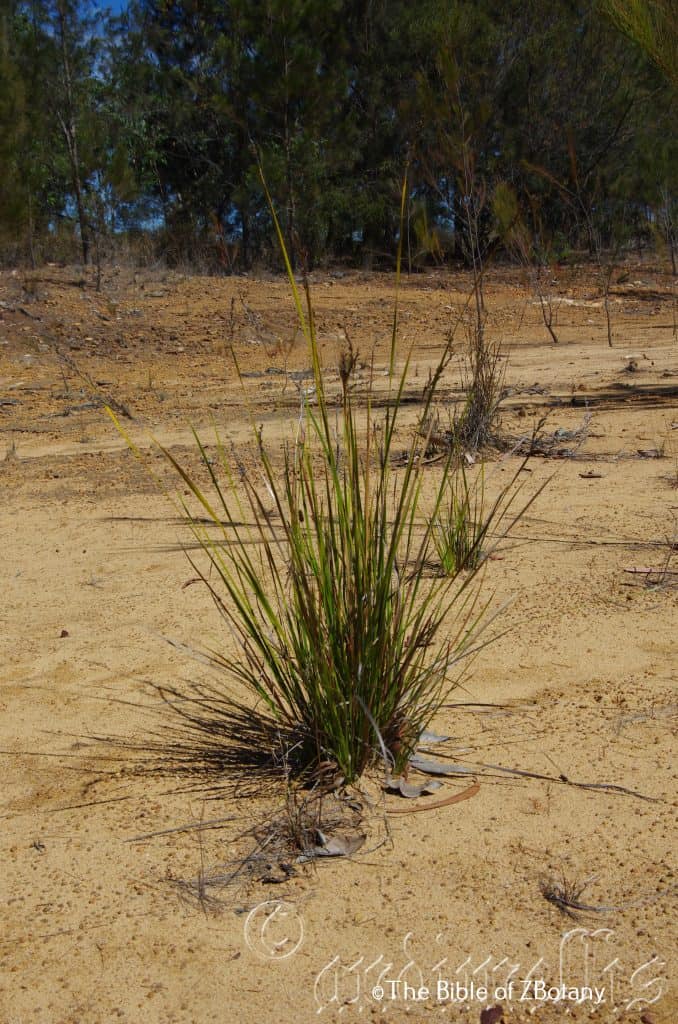
The Pinnacles NSW
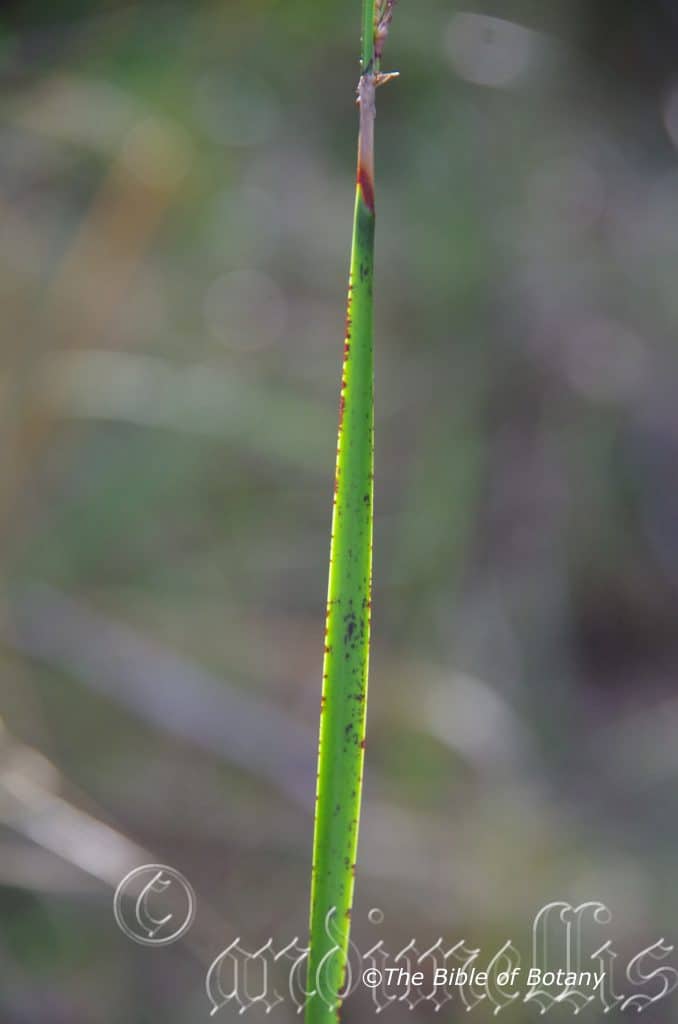
Pillar Valley NSW
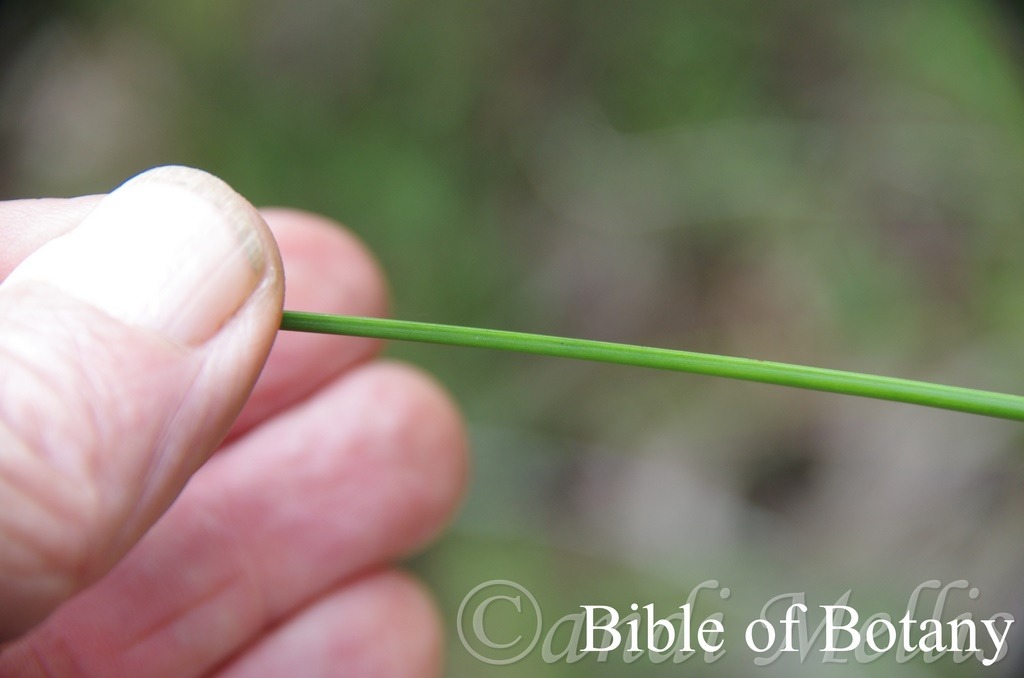
Banyabba National Park NSW
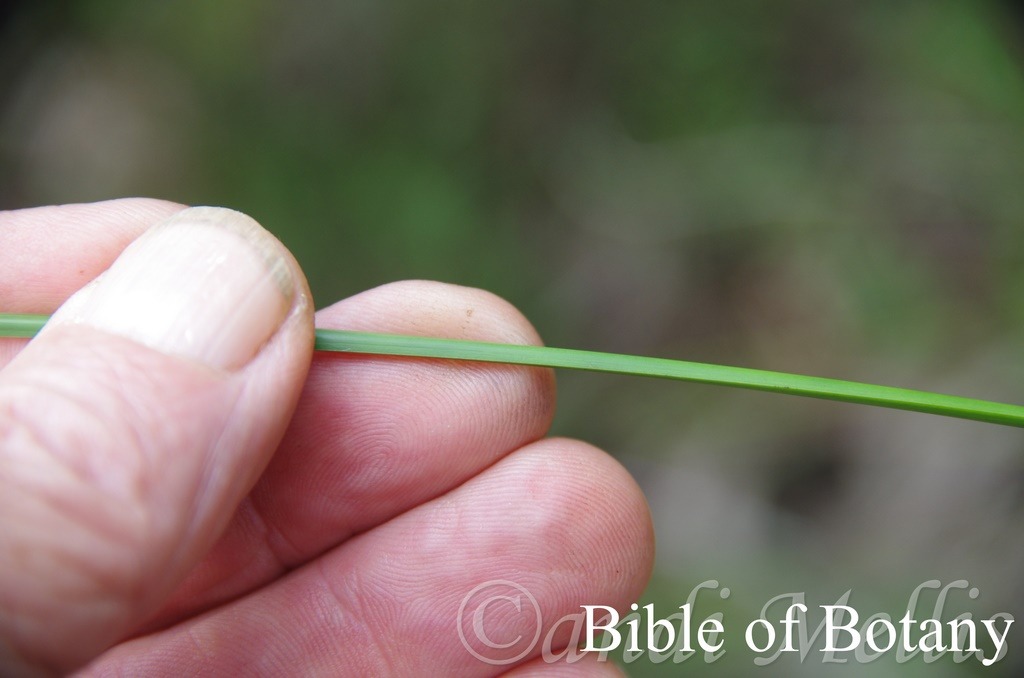
Banyabba National Park NSW
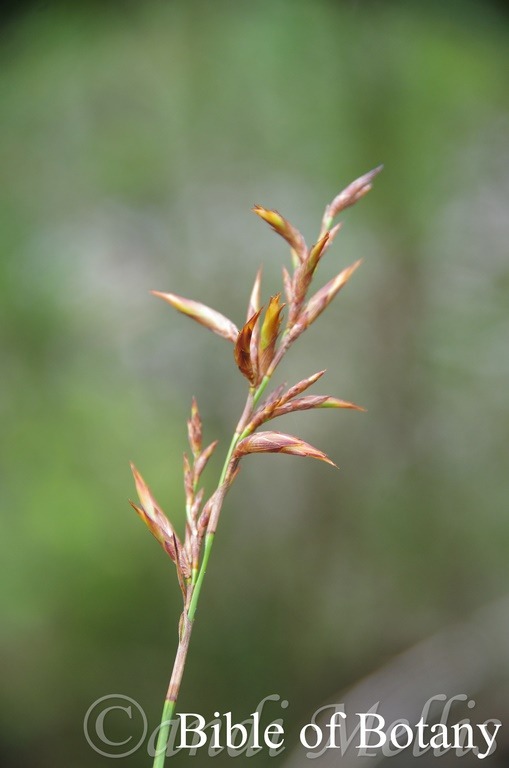
Banyabba National Park NSW
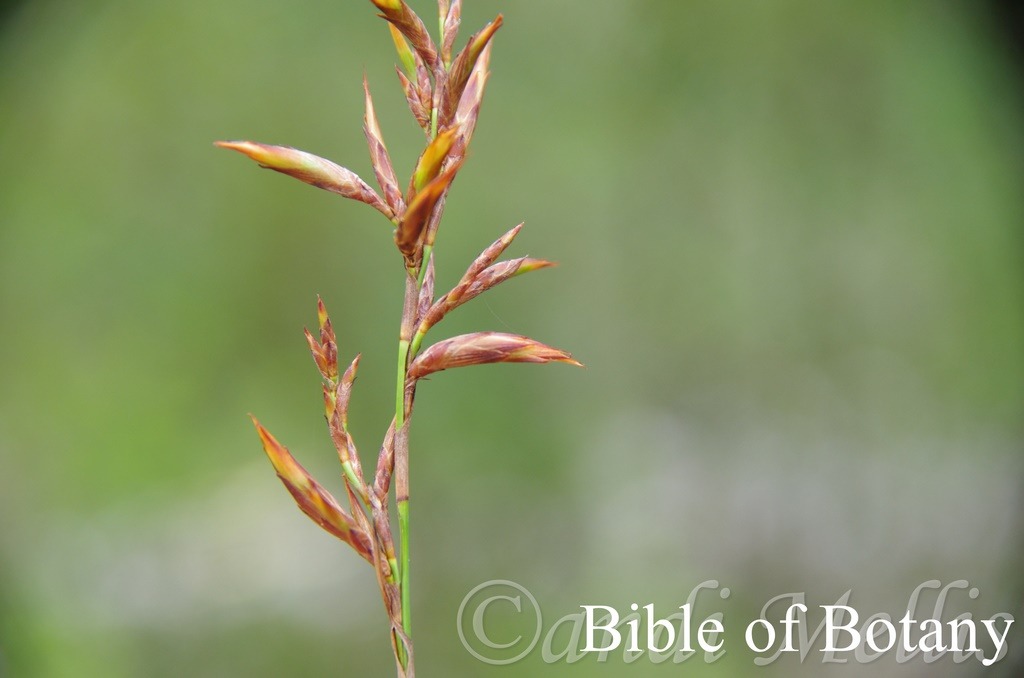
Banyabba National Park NSW
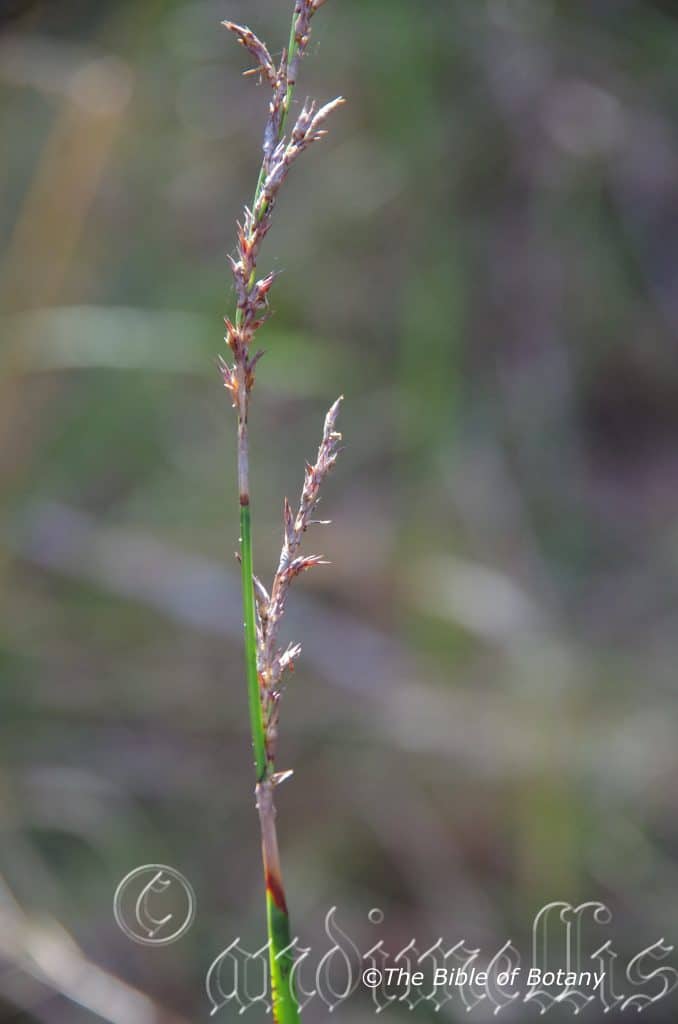
Pillar Valley NSW
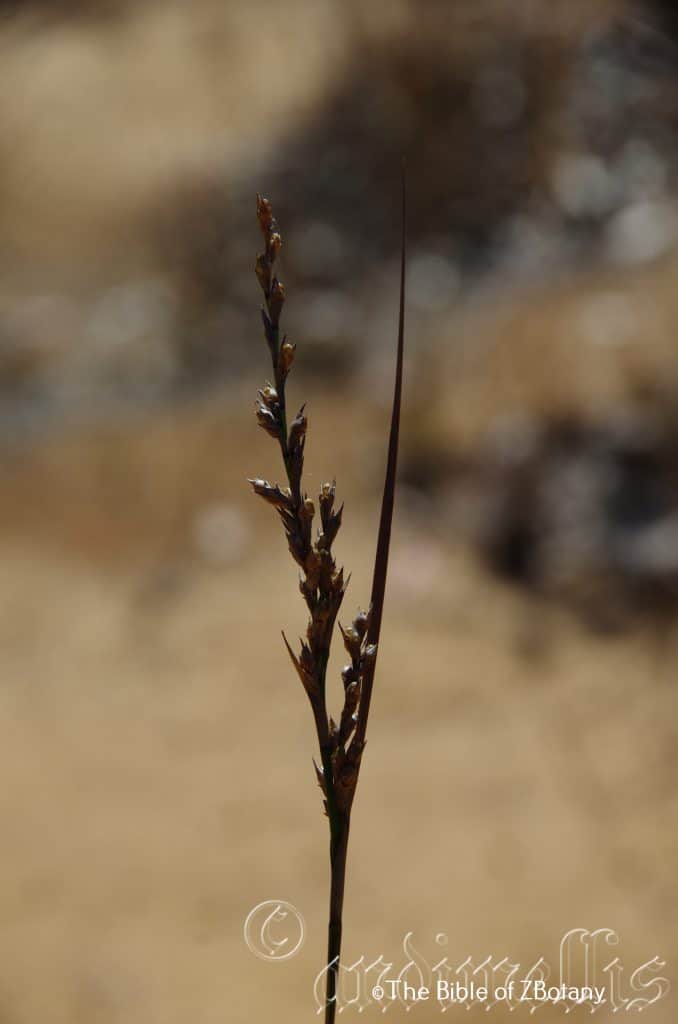
The Pinnacles NSW
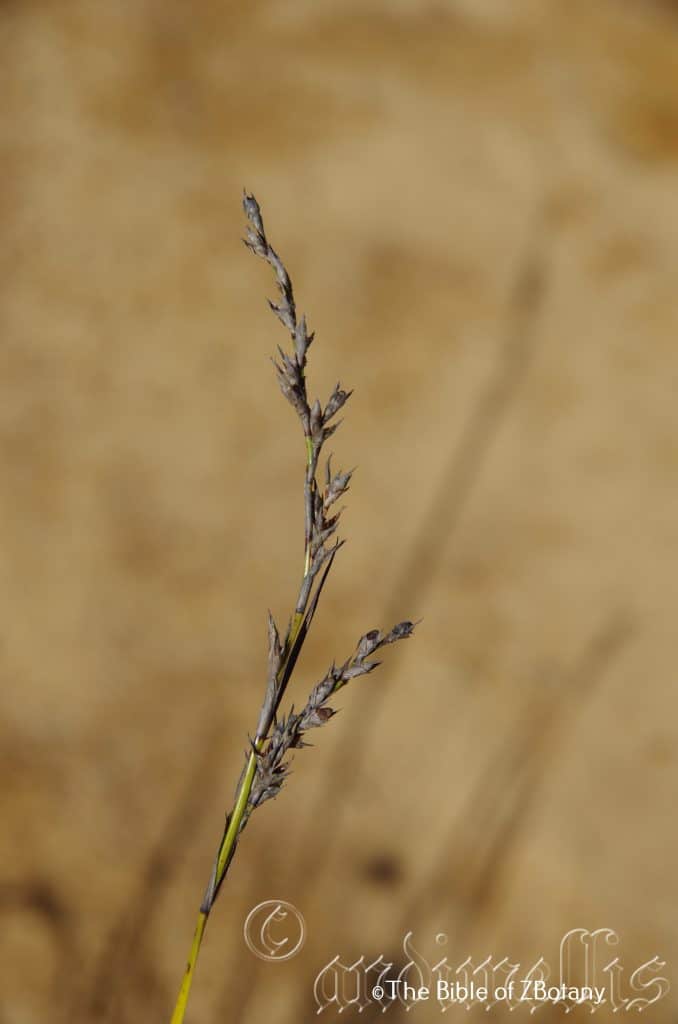
The Pinnacles NSW
Lepidosperma laterale
Classification:
Unranked: Monocots
Unranked: Commelinids
Order: Poales
Family: Cyperaceae
Genus: From Lepidōtós, which is Ancient Greek or Lepidōtum, which is Latin for a scale or scaly and Spérma, which is Ancient Greek for a seed. It refers to seeds or nuts, which are covered in scales.
Specie: From Lateralis, which is Latin for the side. It refers to organs, which develop from the sides of a structure like the stems. Here it refers to the flowering spikes, which develop from along the stems or culms.
Sub specie:
Common Name:
Distribution:
Lepidosperma laterale is found in 2 disjunct populations on the east coast south from Thornton Peak on Cape Tribulation National Park in North Queensland to the Hidden valley in Paluma National Park. It is then found south and east of a line from Shoalwater Bay and Carnarvon Gorge in central Queensland to Crows Nest National Park, Maryborough in Victoria then west to the High Eden Scrubs and to Adelaide in South Australia. Isolated and disjunct populations also occur at Warang and Gloucester Island in Queensland, Wymlet Park in Victoria, along the Murray River, Mambray Park, southern Eyre York Peninsula, Carrappee Hill and Wanilla in South Australia.
There is an isolated population near Ravensthorpe in Western Australia.
In Tasmania it is found on the Bass Strait Islands of Flinders Island group and on the main land it is found from the Calder River in the north west to the Huon valley and east to Fortescue Bay with a population further south at the Lune River and in the west of the state at New Granville Harbour to Rosebery.
https://avh.ala.org.au/occurrences/search?taxa=Lepidosperma+laterale#tab_mapView
Habitat Aspect Climate:
Lepidosperma laterale prefers full sunlight to light dappled shade. It grows in sheltered situations in cool, moist to wet closed forests, cool tropical rainforests, warm subtropical rainforests or warm temperate rainforests. It is found along drainage lines near seepages or in folds and shallow depressions. The altitude ranges from 20 meter ASL to 1360 meters ASL.
The temperatures range from minus 4 degrees in August to 40 degrees in January.
The rainfall ranges from lows of 250mm to 3000mm average per annum.
Soil Requirements:
Lepidosperma laterale prefers course sands, fine sharp sands fatty sands to medium clays. The soils are derived from sandstone, granites, metamorphic rocks, brown basalt, black basalt, shale, ironstone, limestones or accumulated sands. The soils pH ranges from 4.5pH to 7.5pH. It tolerates seasonal waterlogged soils or soils that are continually moist. Non saline soils to the high end of moderately saline soils are tolerated as are salt laden winds.
Height & Spread:
Wild Plants: 0.3m to 1m by 0.5m to 1.3m
Characteristics:
Lepidosperma laterale are open tufted perennial with very short rhizomes. The erect culms are rigid, flat to slightly convex on one surface and concave to convex on the other surface. The usually smooth and glabrous culms are rarely scabrous and measure 300mm to 1000mm in height by 2.5mm to 8mm in width.
The leaves are flat to slightly convex on one surface and concave to convex on the other surface leaves are usually smooth and glabrous or are rarely scabrous. The leaves measure 250mm to 850mm in length by 3mm to 8mm in width. The leaf sheaths are reddish or deep grey-brown at base and fawnish-yellow at the acute apexes. It is not viscid and semi glossy. The leaves bases merge into the sheaths while the apexes are obtuse or acute. The concolourous laminas are mid grass-green, glabrous and glossy. The laminas are flat and decurve from the bases to the apexes while the margins are entire.
The inflorescences are linear in outline, erect to somewhat spreading compound panicles with erect branches. The panicles usually measure 40mm to 300mm in length or at times to 380mm in length by 10mm to 16mm in diameter. The involucral bract is shorter, usually half to three quarters of the length of the inflorescence.
The few spikelets are densely arranged on the spikes and measure 4mm to 8.5mm in length.
The 4 to 6 similar glumes are reddish-brown to grey-brown and are covered in off white puberulent hairs, are without keels and are without nerves. The lanceolate lower glumes are glabrous or covered in white puberulent hairs and have mucronate apexes. The lower glumes measure 3mm to 6mm in length. The lowest 2 or 4 glumes are empty. The fertile, lanceolate upper glumes are glabrous or covered in white puberulent hairs and have mucronate apexes and measure 3.5mm to 6.5mm in length. The 6 fawn to pale brown scales are a quarter to a third of the length of the nuts.
The 3 stamens have filiform, white filaments and measure 1.5mm to 1.8mm in length. The pale yellow obloidal anthers measure 1.7mm to 2mm in length. The appendages measure 0.7mm to0.8mm in length. The style is usually trifid or at times 4 fid. The flowers appear from September to February.
The fruits are ovoidal, trigonous nuts. The pale brown to deep brown nuts are smooth, rugose and glossy. The nuts measure 2.5mm to 4mm in length by 1.3mm to 2mm in diameter.
Wildlife:
Lepidosperma laterale like all grasses and rushes have a wide and varied number of higher animals, insects and fungi that rely on them for their very existence. The Annals of Botany at www.aob.oxfordjournals.org cited the following wildlife associated with Lepidosperma laterale.
The Long-nosed potoroo (Potorous tridactylus), the Eastern barred bandicoot (Perameles gunnii), the Short-tailed shearwater (Puffinus tenuirostris), the Little penguin (Eudyptula minor), the White throated treecreeper (Cormobates leucophaea), The Superb fairy wren (Malurus cyaneus) Grey shrike thrush (Colluricincla harmonica), the Grey fantail (Rhipidura fuliginosa), the Helmeted honeyeater (Lichenostomus melanops subsp. cassidix), the spotless crake (Porzana tabuensis), the Southern emu-wren and Lewin’s rail (Rallus pectoralis) use the grasses as protective zones and nesting in. Lewin’s rail was observed by us in Carbrook south of Brisbane in our nursery nesting amongst Lepidosperma laterale and using the leaves as both camouflage and nesting material.
Insects attracted to Lepidosperma laterale include the Elachistine moths (Elachistine magidina), the Eastern flag face grasshopper (Propsednura peninsularis) and members of the Iridomyrmex specie of ants collect the seeds. Various smuts like the Black smut (Moreaua rodwayi and Tolyposporium sp.)
Cultivation:
Lepidosperma laterale are unusual flowering sedges for dry sub-tropical to temperate gardens with sandy soils that always look green and fresh. It requires little water and attention making it ideal for coastal sandy beach front homes. In cultivation it grows 0.4 meters to 0.7 meters in height by 0.5 meters to 0.9 meters in diameter when grown in an open situation in full sun.
Lepidosperma laterale offers the enthusiastic gardener amazing new concepts for rockeries or small heath gardens. The coarse flat leaves and culms are very striking offering strong accents in heath or bush gardens. Along driveways or against walls, small sunny alcoves or court yards their strong glossy leaves and culms make a great display and break up hard horizontal lines. Placed near logs or between small boulders, around fish or frog ponds they give balance with a completely natural look.
It is easy to grow, harvest and propagate but needs other small fine leaf plants around it to be successful. Low mounded plants with small bright green leaves would make it appear larger and more powerful. Hibbertia linearis, Hibbertia obtusifolia, Isotoma axillaris, most of the dwarf Goodenia specie would be satisfactory despite having larger leaves as would and Viola betonicifolia would all suffice beautifully.
Mass plantings are best achieved by leaving spaces between the individual plants so plant them at 2 meter to 3 meter centres using small herbaceous plants between.
Propagation:
Seeds: Collecting seeds from mature plants of Lepidosperma laterale is not difficult but the collector must be vigilant as the seeds will disperse over in a matter of a couple of days to a week when fully ripe. The fresh seeds can be sown directly into a seed raising mix however better; more even germination is gained if the seeds are stratified for a short period and sown in spring. This can be achieved by placing the seeds in a paper bag in the vegetable crisper for a few weeks prior to sowing. Cover the seeds to a depth of 2mm. Seeds usually germinate rapidly with a strike rate of over 80mm.
When the seedlings are 20mm to 30mm tall, prick them out and plant them into 50mm native tubes using a good quality mix.
Once the seedlings reach 50mm in height they can be repotted for indoor use or 100mm to 150mm in height plant them out into their permanent position.
Fertilize using seaweed, fish emulsion or organic chicken pellets soaked in water on an alternate basis. Fertilize every two months until the plants are established to maintain health, vitality and better flowering.
Further Comments from Readers:
Hi reader, it seems you use The Bible of Botany a lot. That’s great as we have great pleasure in bringing it to you! It’s a little awkward for us to ask, but our first aim is to purchase land approximately 1,600 hectares to link several parcels of N.P. into one at The Pinnacles NSW Australia, but we need your help. We’re not salespeople. We’re amateur botanists who have dedicated over 30 years to saving the environment in a practical way. We depend on donations to reach our goal. If you donate just $5, the price of your coffee this Sunday, We can help to keep the planet alive in a real way and continue to bring you regular updates and features on Australian plants all in one Botanical Bible. Any support is greatly appreciated. Thank you.
In the spirit of reconciliation we acknowledge the Bundjalung, Gumbaynggirr and Yaegl and all aboriginal nations throughout Australia and their connections to land, sea and community. We pay our respect to their Elders past, present and future for the pleasures we have gained.
Lepidosperma limicola
Classification:
Unranked: Monocots
Unranked: Commelinids
Order: Poales
Family: Cyperaceae
Genus: From Lepidōtós, which is Ancient Greek or Lepidōtum, which is Latin for a scale or scaly and Spérma, which is Ancient Greek for a seed. It refers to seeds or nuts, which are covered in scales.
Specie: From Limi, which is Latin for mud and Kola, which is Ancient Greek or Cola, which is Latin for to dwell or reside at. It refers to plants, which are found in muddy situations along swamps and ephemeral pools.
Sub specie:
Common Name: Razor Sedge.
Distribution:
Leidosperma limicola is found south from Boonoo Boonoo National Park near Tenterfield to Cabbage Tree Creek near Orbost with a disjunct population on Reedy Creek north of Melbourne.
In northern Tasmania it is found around Low Head Town. It grows on and east of the Great Dividing Range.
https://avh.ala.org.au/occurrences/search?taxa=Lepidosperma+limicola#tab_mapView
Habitat Aspect Climate:
Leidosperma limicola prefers full sunlight to very light dappled shade. It grows in sheltered situations on the Western Slopes, on the Great Dividing Range and occasionally venturing to the coast. The altitude ranges from 35 meters ASL to 1100 meters ASL.
The temperatures range from minus 4 degrees in August to 36 degrees in January.
The rainfall ranges from lows of 700mm to 1650mm average per annum.
Soil Requirements:
Leidosperma limicola prefer course sands, fine sharp sands fatty sands and light clays. The soils are usually derived from granites and sandstone. The soils pH ranges from 5pH to 6.5pH. It tolerates seasonal waterlogged soils or soils that are permanently moist. Non saline soils to moderately saline soils are tolerated as are salt laden winds.
Height & Spread:
Wild Plants: 0.6m to 1.5m by 1m to 2m
Characteristics:
Leidosperma limicola is an open tufted perennial with short erect rhizomes. The erect culms are rigid, biconvex, striate, smooth, and glabrous and measure 600mm to 1500mm in height. The yellowish to olive–green margins are strongly scabrous and sharp.
The biconvex, striate, smooth, glabrous leaves have a convex upper lamina and measure 550mm to 1400mm in length by 2.5mm to 5mm in width. The leaf sheaths are yellowish near the apexes and are deep grey-brown to almost black at base, glossy and are not viscid. The bases merge into the sheaths while the apexes are obtuse or acute. The concolourous laminas are grass-green, glabrous and glossy. The laminas are flat and decurve from the bases to the apexes to while the margins are entire and scabrous and sharp.
The inflorescences are narrow oblong, erect, dense, compound panicles with erect branches. The panicles usually measure 50mm to 150mm in length by 10mm to 30mm in diameter. The involucral bracts are shorter than the inflorescence. The opposite lower 2 being about longer than their branches are half the size of the inflorescence while the upper involucral bracts are shorter than their branches.
The numerous spikelets are densely arranged on the spikes and measure 5mm to 9mm in length.
The 5 to 7 similar glumes are reddish-brown to grey-brown, glabrous, are without keels and are without nerves. The lanceolate lower glumes are glabrous or covered in white puberulent hairs and have mucronate apexes. The lower glumes measure 4mm to 6mm in length. The 3 lowest glumes are empty. The fertile, lanceolate upper glumes are glabrous have long acute apexes and measure 5mm to 7mm in length. The 5 or 6 yellowish-fawn scales are a quarter to half of the length of the nuts.
The 3 stamens have filiform, white filaments and measure 2.5mm to 3.8mm in length. The pale yellow obloidal anthers measure 2.3mm to 3.8mm in length. The appendages measure 0.5mm to 0.8mm in length. The white style is trifid. The flowers appear from September to February.
The fruits are narrow ellipsoid to ellipsoid, trigonous nuts. The pale brown to misty grey-brown nuts are smooth and glossy. The nuts measure 2.5mm to 3.5mm in length by 1mm to 1.5mm in diameter.
Wildlife:
The leaves have high nutritional value for stock but does not recuperate quickly from grazing nor does it accept heavy traffic. The leaves are eaten by the Grey Kangaroo (Macropus giganteus), the Pretty Face Wallaby (Macropus parryi) and the Swamp Wallaby (Wallabia bicolor).
Cultivation:
Leidosperma limicola are unusual flowering sedges for dry sub-tropical to temperate gardens with sandy soils that always look green and fresh. It requires little water and attention making it ideal for coastal sandy beach front homes. In cultivation they will grow 1.2 meters to 1.5 meters in height by 1.8 meters to 2.2 meters in diameter when grown in an open situation in full sun.
Leidosperma limicola offers the enthusiastic gardener amazing new concepts for rockeries or small heath gardens. The coarse flat leaves and culms are very striking offering strong accents in heath or bush gardens. Along driveways or against walls, small sunny alcoves or court yards their strong glossy leaves and culms make a great display and break up hard horizontal lines. Placed near logs or between larger boulders, around larger fish ponds or frog ponds they give balance with a completely natural look.
It is easy to grow, harvest and propagate but needs other small fine leaf plants around it to be successful. Low mounded plants with small bright green leaves would make it appear larger and more powerful. Hibbertia linearis, Hibbertia obtusifolia, Isotoma axillaris, most of the dwarf Goodenia specie would be satisfactory despite having larger leaves as would and Viola betonicifolia would all suffice beautifully.
Mass plantings are best achieved by leaving spaces between the individual plants so plant them at 2 meter to 3 meter centres using small herbaceous plants between.
Propagation:
Seeds: Collecting seeds from mature plants of Leidosperma limicolais not difficult but the collector must be vigilant as the seeds will disperse over in a matter of a couple of days to a week when fully ripe. The fresh seeds can be sown directly into a seed raising mix however better; more even germination is gained if the seeds are stratified for a short period and sown in spring. This can be achieved by placing the seeds in a paper bag in the vegetable crisper for a few weeks prior to sowing. Cover the seeds to a depth of 2mm. Seeds usually germinate rapidly with a strike rate of over 80mm.
When the seedlings are 20mm to 30mm tall, prick them out and plant them into 50mm native tubes using a good quality mix.
Once the seedlings reach 50mm in height they can be repotted for indoor use or 100mm to 150mm in height plant them out into their permanent position.
Fertilize using seaweed, fish emulsion or organic chicken pellets soaked in water on an alternate basis. Fertilize every two months until the plants are established to maintain health, vitality and better flowering.
Further Comments from Readers:
Hi reader, it seems you use The Bible of Botany a lot. That’s great as we have great pleasure in bringing it to you! It’s a little awkward for us to ask, but our first aim is to purchase land approximately 1,600 hectares to link several parcels of N.P. into one at The Pinnacles NSW Australia, but we need your help. We’re not salespeople. We’re amateur botanists who have dedicated over 30 years to saving the environment in a practical way. We depend on donations to reach our goal. If you donate just $5, the price of your coffee this Sunday, We can help to keep the planet alive in a real way and continue to bring you regular updates and features on Australian plants all in one Botanical Bible. Any support is greatly appreciated. Thank you.
In the spirit of reconciliation we acknowledge the Bundjalung, Gumbaynggirr and Yaegl and all aboriginal nations throughout Australia and their connections to land, sea and community. We pay our respect to their Elders past, present and future for the pleasures we have gained.
Lepidosperma longitudinale
Classification:
Unranked: Monocots
Unranked: Commelinids
Order: Poales
Family: Cyperaceae
Genus: From Lepidōtós, which is Ancient Greek or Lepidōtum, which is Latin for a scale or scaly and Spérma, which is Ancient Greek for a seed. It refers to seeds or nuts, which are covered in scales.
Specie: From Longitia/Longus, which is Latin for long in length. It refers to the extension along the long axis of an organ.
Sub specie:
Common Name: Pithy Sword Sedge.
Distribution:
Lepidosperma longitudinale is found in 2 distinct isolated populations on the south west coast and along the east coast. In Western Australia it is found south from the South Hut River near Geraldton to the Kalgan River near Albury, it is found further inland near Buntine Rock, Ballidu and Bodallin.
In the east it is found south from Yeppoon in central Queensland to Kaiser Stuhl Conservation Park north of Adelaide and Kangaroo Island in southern South Australia. It is usually found east of the Great Dividing Range and the coastal ranges or at times on the range itself. In Victoria it extends further inland as far as Lake Coorong and Wilpina in central South Australia.
In Tasmania it is found on all the eastern Bass Strait Islands including Flinders Island Group and Deal Island. On the main land it is found circumnavigating Tasmania and through the center from Little Hampton, Ellensworth to Wineglass bay and Hazards Beach.
https://avh.ala.org.au/occurrences/search?taxa=Lepidosperma+longitudinale#tab_mapView
Habitat Aspect Climate:
Lepidosperma longitudinale prefers full sunlight to light dappled shade. It grows in very sheltered situations in open woodlands, wet heaths usually on seasonally swampy type ground. The altitude ranges from 5 meter ASL to 360 meters ASL.
The temperatures range from minus 4 degrees in August to 40 degrees in January.
The rainfall ranges from lows of 250mm to 2020mm average per annum.
Soil Requirements:
Lepidosperma longitudinale prefers course sands, fine sharp sands fatty sands and light clays. The soils are usually derived from sandstones, granites, metamorphic rocks or accumulated sands. The soils pH ranges from 5pH to 7pH. It tolerates seasonal waterlogged soils or soils that are permanently moist. Non saline soils to moderately saline soils are tolerated as are salt laden winds.
Height & Spread:
Wild Plants: 0.6m to 2m by 1m to 2.5m
Characteristics:
Lepidosperma longitudinale is an open tufted perennial with short thick rhizomes. The erect culms are rigid but compressible, thickly biconvex, smooth, glabrous and measure 600mm to 2000mm in height. The bases are yellow-brown to grey-brown near the bases and often tinged reddish-grey before turning grass-green and glossy. The yellowish to olive–green margins are acute but smooth.
The flattened leaves are compressible, slightly biconvex, smooth, glabrous measure 550mm to 1800mm in length by 3mm to 10mm in width. The leaf sheaths are yellow-brown to grey-brown near the bases and often reddish-grey near the apexes, glossy and are not viscid. The leaves bases merge into the sheaths while the apexes are obtuse or acute. The concolourous laminas are grass-green, glabrous and glossy. The laminas are flat and gently decurve on the apical half while the margins are entire.
The inflorescences are narrow oblong to narrow erect, dense, compound panicles with erect or spreading branches. The panicles usually measure 150mm to 500mm in length by 20mm to 80mm in diameter. The involucral bracts are shorter than the inflorescence. The erect involucral bract is half the length of the inflorescence and dies before anthesis but remains attached to the culm.
The numerous spikelets are densely arranged on the spikes and measure 6mm to 8mm in length.
The 5 to 7 similar glumes are fawn to pale reddish-brown glabrous, are without keels and are without nerves. The lanceolate lower glumes are glabrous and have mucronate apexes. The lower glumes measure 4mm to 5mm in length. The 1 to 3 lowest glumes are empty. The fertile, lanceolate upper glumes are glabrous, have acute apexes and measure 5mm to 6mm in length. The 6 pale fawn scales are a quarter to half of the length of the nuts.
The 3 stamens have filiform, white filaments and measure 2mm to 3.2mm in length. The white to pale yellow obloidal anthers measure 1.8mm to 3.2mm in length. The appendages measure 0.5mm to 0.8mm in length. The white, feathery style is trifid. The flowers appear from April to June and August to October.
The fruits are narrow ellipsoid trigonous nuts. The pale brown to deep brown nuts are smooth and glossy. The nuts measure 2.5mm to 3.5mm in length by 1.5mm to 1.7mm in diameter.
Confusing Specie:
Lepidosperma longitudinale culms cannot be readily compressed between the fingers, and the margins are scabrous, rough and often file like.
Wildlife:
Lepidosperma longitudinale’s like all grasses and rushes have a wide and varied number of higher animals, insects and fungi that rely on them for their very existence. The Annals of Botany at www.aob.oxfordjournals.org cited the following wildlife associated with Lepidosperma longitudinale.
The Tasmanian bettong (Bettongia gaimardi subsp. cuniculus), the Red-winged fairy wren (Malurus elegans) and the Mt Lofty Ranges southern emu wren (Stipiturus malachurus subsp. Intermedius) are all involved in nesting habits in and around Lepidosperma longitudinale.
Insects attracted to Lepidosperma longitudinale as a food source include the Variable psedna Grasshopper (Psedna nana) and the Elachistine moths of Elachistine faberella, Elachistine Lachnella, Elachistine spathacea western form, Elachistine melanthes complex, Elachistine toryna eastern and western forms and Elachistine velutin.
Cultivation:
Lepidosperma longitudinale are unusual flowering sedges for dry sub-tropical to temperate gardens with sandy soils that always look green and fresh. It requires little water and attention making it ideal for coastal sandy beach front homes. In cultivation it grows 1.8 meters to 2 meters in height by 2.2 meters to 2.8 meters in diameter when grown in an open situation in full sun.
Lepidosperma longitudinale offers the enthusiastic gardener amazing new concepts for rockeries or small heath gardens. The coarse flat leaves and culms are very striking offering strong accents in heath or bush gardens. Along driveways or against walls, small sunny alcoves or court yards their strong glossy leaves and culms make a great display and break up hard horizontal lines. Placed near logs or between larger boulders, around larger fish ponds or frog ponds they give balance with a completely natural look.
Mass plantings are best achieved by leaving spaces between the individual plants so plant them at 3 meter to 4 meter centres using ground covers or small shrubs between.
It is easy to grow, harvest and propagate but needs other small fine leaf plants around it to be successful. Low mounded plants with small bright green leaves would make it appear larger and more powerful. Melaleuca pearsonii, Kunzea opposita, Pelargonium australe, Pelargonium Helmsii or Pelargonium inodorum would all make good companion plants.
Propagation:
Seeds: Collecting seeds from mature plants of Lepidosperma longitudinale is not difficult but the collector must be vigilant as the seeds will disperse over in a matter of a couple of days to a week when fully ripe. The fresh seeds can be sown directly into a seed raising mix however better; more even germination is gained if the seeds are stratified for a short period and sown in spring. This can be achieved by placing the seeds in a paper bag in the vegetable crisper for a few weeks prior to sowing. Cover the seeds to a depth of 2mm. Seeds usually germinate rapidly with a strike rate of over 80mm.
When the seedlings are 20mm to 30mm tall, prick them out and plant them into 50mm native tubes using a good quality mix.
Once the seedlings reach 50mm in height they can be repotted for indoor use or 100mm to 150mm in height plant them out into their permanent position.
Fertilize using seaweed, fish emulsion or organic chicken pellets soaked in water on an alternate basis. Fertilize every two months until the plants are established to maintain health, vitality and better flowering.
Further Comments from Readers:
Hi reader, it seems you use The Bible of Botany a lot. That’s great as we have great pleasure in bringing it to you! It’s a little awkward for us to ask, but our first aim is to purchase land approximately 1,600 hectares to link several parcels of N.P. into one at The Pinnacles NSW Australia, but we need your help. We’re not salespeople. We’re amateur botanists who have dedicated over 30 years to saving the environment in a practical way. We depend on donations to reach our goal. If you donate just $5, the price of your coffee this Sunday, We can help to keep the planet alive in a real way and continue to bring you regular updates and features on Australian plants all in one Botanical Bible. Any support is greatly appreciated. Thank you.
In the spirit of reconciliation we acknowledge the Bundjalung, Gumbaynggirr and Yaegl and all aboriginal nations throughout Australia and their connections to land, sea and community. We pay our respect to their Elders past, present and future for the pleasures we have gained.
Lepidosperma neesii
Classification:
Unranked: Monocots
Unranked: Commelinids
Order: Poales
Family: Cyperaceae
Genus: From Lepidōtós, which is Ancient Greek or Lepidōtum, which is Latin for a scale or scaly and Spérma, which is Ancient Greek for a seed. It refers to seeds or nuts, which are covered in scales.
Specie: It may be named in honour of Christian Gottfried Daniel Nees; 1776-1858, who was a professor of botany at Breslau.
Sub specie:
Common Name:
Distribution:
Lepidosperma neesii is mainly found along the coastal strip south from the Richmond River in northern New South Wales to The Glenelg Plain to Mosquito Creek in south western Victoria. It is found further inland only in a few isolated populations like White Rock west of Tamworth and Callaroy west of Bathurst in New South Wales, Mount Gambier in South Australia and the Grampians in Victoria.
In Tasmania it is found on the Bass Strait Island of Clarke Island at Maclaines Creek.
https://avh.ala.org.au/occurrences/search?taxa=Lepidosperma+neesii#tab_mapView
Habitat Aspect Climate:
Lepidosperma neesii prefers full sunlight to very light dappled shade. It grows in very sheltered situations in open woodlands, wet heaths usually on seasonally swampy or wet type ground. It prefers hot dry springs and summers with cool wet autumns and winters. The altitude ranges from 10 meter ASL to 600 meters ASL.
The temperatures range from minus 2 degrees in August to 37 degrees in January.
The rainfall ranges from lows of 500mm to 1800mm average per annum.
Soil Requirements:
Lepidosperma neesii prefer course sands, fine sharp sands fatty sands and light clays. The soils are usually derived from sandstone, granites, metamorphic rocks or accumulated sands. The soils pH ranges from 5pH to 6pH. It tolerates seasonal waterlogged soils. Non saline soils to extremely saline soils are tolerated as are salt laden winds.
Height & Spread:
Wild Plants: 0.2m to 0.8m by 0.3m to 1m
Characteristics:
Lepidosperma neesii is an open tufted annual or perennial with long rhizomes. The erect or spreading culms are rigid, terete and are usually shallowly to deeply grooved or rarely 2-grooved, smooth and glabrous. They measure 200mm to 800mm in height by 0.8mm to 2mm in diameter.
The terete leaves measure 150mm to 750mm in length by 0.7mm to 1.3mm in diameter. The leaf sheaths are pale ochre to deep brown at the bases and reddish-brown above, dull and not viscid. The leaves bases merge into the sheaths while the apexes are obtuse or acute. The concolourous laminas are grass-green, glabrous and glossy. The laminas are flattened, grooved or obscurely 4 angled while the margins are entire.
The inflorescences are oblong to ovate, dense compound panicles. The panicles measure 20mm to 90mm in length by 10mm to 15mm in diameter. The involucral bract is a third to half the length of the inflorescence.
The numerous spikelets are densely clustered on the spikes and measure 6mm to 8mm in length.
The 5 or 6 similar glumes are fawn to pale red to grey-brown glabrous or covered in white puberulent hairs, are without keels and are without nerves. The lanceolate lower glumes usually have long acute apexes or at times have mucronate apexes. The lower glumes measure 3.5mm to 4mm in length. The 1 to 3 lowest glumes are empty. The fertile, lanceolate upper glumes usually have long acute or at times mucronate have apexes and measure 4.5mm to 5mm in length. The 5 or 6 pastel fawn scales are an eighth to a quarter of the length of the nuts.
The 3 stamens have filiform, white filaments and measure 2mm to 3.2mm in length. The pale yellow obloidal anthers measure 2.3mm to 3.3mm in length. The appendages measure 0.5mm to 1.1mm in length. The white, feathery style is trifid. The flowers appear from October to February.
The fruits are narrow ellipsoid trigonous nuts. The pastel fawn to pale reddish-brown nuts are rugose and glossy. The nuts measure 2 mm to 2.8mm in length by 1.3mm to 1.7mm in diameter.
Wildlife:
Lepidosperma neesii like all grasses and rushes have a wide and varied number of higher animals, insects and fungi that rely on them for their very existence. The wildlife is probably similar to other species within the genus.
The known smuts on the leaves of Lepidosperma include Moreaua megaglomerulosa and Moreaua rodwayi.
Cultivation:
Lepidosperma neesii are unusual flowering sedges for dry sub-tropical to temperate gardens with sandy soils that always look green and fresh. It requires little water and attention making it ideal for coastal sandy beach front homes. In cultivation they will grow 1.8 meters to 2 meters in height by 2.2 meters to 2.8 meters in diameter when grown in an open situation in full sun.
It offers the enthusiastic gardener amazing new concepts for rockeries or small heath gardens. The coarse flat leaves and culms are very striking offering strong accents in heath or bush gardens. Along driveways or against walls, small sunny alcoves or court yards their strong glossy leaves and culms make a great display and break up hard horizontal lines. Placed near logs or between larger boulders, around larger fish ponds or frog ponds they give balance with a completely natural look.
Mass plantings are best achieved by leaving spaces between the individual plants so plant them at 3 meter to 4 meter centres using ground covers or small shrubs between.
It is easy to grow, harvest and propagate but needs other small fine leaf plants around it to be successful. Low mounded plants with small bright green leaves would make it appear larger and more powerful. Melaleuca pearsonii, Kunzea opposita, Pelargonium austral, Pelargonium Helmsii, or Pelargonium inodorum would all make good companion plants.
Propagation:
Seeds: Collecting seeds from mature plants ofLepidosperma neesiiis not difficult but the collector must be vigilant as the seeds will disperse over in a matter of a couple of days to a week when fully ripe. The fresh seeds can be sown directly into a seed raising mix however better; more even germination is gained if the seeds are stratified for a short period and sown in spring. This can be achieved by placing the seeds in a paper bag in the vegetable crisper for a few weeks prior to sowing. Cover the seeds to a depth of 2mm. Seeds usually germinate rapidly with a strike rate of over 80mm.
When the seedlings are 20mm to 30mm tall, prick them out and plant them into 50mm native tubes using a good quality mix.
Once the seedlings reach 50mm in height they can be repotted for indoor use or 100mm to 150mm in height plant them out into their permanent position.
Fertilize using seaweed, fish emulsion or organic chicken pellets soaked in water on an alternate basis. Fertilize every two months until the plants are established to maintain health, vitality and better flowering.
Further Comments from Readers:
Hi reader, it seems you use The Bible of Botany a lot. That’s great as we have great pleasure in bringing it to you! It’s a little awkward for us to ask, but our first aim is to purchase land approximately 1,600 hectares to link several parcels of N.P. into one at The Pinnacles NSW Australia, but we need your help. We’re not salespeople. We’re amateur botanists who have dedicated over 30 years to saving the environment in a practical way. We depend on donations to reach our goal. If you donate just $5, the price of your coffee this Sunday, We can help to keep the planet alive in a real way and continue to bring you regular updates and features on Australian plants all in one Botanical Bible. Any support is greatly appreciated. Thank you.
In the spirit of reconciliation we acknowledge the Bundjalung, Gumbaynggirr and Yaegl and all aboriginal nations throughout Australia and their connections to land, sea and community. We pay our respect to their Elders past, present and future for the pleasures we have gained.
Lepidosperma quadrangulatum
Classification:
Unranked: Monocots
Unranked: Commelinids
Order: Poales
Family: Cyperaceae
Genus: From Lepidōtós, which is Ancient Greek or Lepidōtum, which is Latin for a scale or scaly and Spérma, which is Ancient Greek for a seed. It refers to seeds or nuts, which are covered in scales.
Specie: From Quād, which is Latin for four and Angulāris, which is Latin for an angle. It refers to structures or organs, which are square in cross section.
Sub specie:
Common Name:
Distribution:
Lepidosperma quadrangulatum is found south at Mount Coolum in southern coastal Queensland then from the Richmond River to Huckisson in central coastal New South Wales.
https://avh.ala.org.au/occurrences/search?taxa=Lepidosperma+quadrangulatum#tab_mapView
Habitat Aspect Climate:
Lepidosperma quadrangulatum prefers full sunlight to very light dappled shade. It grows in coastal swamps, moist wallums, and wet depressions in open woodlands or heaths. It prefers areas that are hot and dry in the spring and summer with cool moist autumns and winters. The altitude ranges from 3 meter ASL to 24 meters ASL.
The temperatures range from 2 degrees in August to 36 degrees in January.
The rainfall ranges from lows of 1000mm to 2000mm average per annum.
Soil Requirements:
Lepidosperma quadrangulatum prefer course sands to fine sharp peaty sands. The soils are usually derived from sandstone, granites, metamorphic rocks or accumulated sands. The soils pH ranges from 5pH to 7pH. It tolerates seasonal waterlogged soils. Non saline soils to the high end of moderately saline soils are tolerated as are salt laden winds.
Height & Spread:
Wild Plants: 0.5m to 1.5m by 0.8m to 2m
Characteristics:
Lepidosperma quadrangulatum is a tufted perennial with short rhizomes. The erect, rigid culms are 4 angled but are more strongly angled in the middle sections rather than at the bases or apexes. The surfaces are often concaved and are usually striated on the angles. The smooth, glabrous culms measure 450mm to 1500mm in height by 1.5mm to 2.5mm in diameter. The margins are smooth.
The erect leaves are 4 angled but are more strongly angled in the middle sections rather than at the bases or apexes. The surfaces are slightly concaved and are usually striated on the angles. The leaves measure 400mm to 1400mm in height by 1.3mm to 2.5mm in diameter. The leaf sheaths are yellow-brown to deep brown, dull and not viscid. The leaves bases merge into the sheaths while the apexes are obtuse or acute. The concolourous laminas are grass-green to olive–green, smooth glabrous and glossy. The laminas are flat and decurve gently on the apical half while the margins are entire.
The inflorescences are ovate or erect dense compound panicles. The panicles measure 20mm to 80mm in length by 10mm to 2mm in diameter. The involucral bract is a third to half the length of the inflorescence.
The few spikelets are densely clustered on the spikes and measure 5mm to 7mm in length.
The 5 or 7 similar glumes are fawn to pale reddish-brown to grey-brown, glabrous or scabrous, are without keels and are without nerves. The lanceolate lower glumes usually have acute apexes. The lower glumes measure 3.5mm to 4mm in length. The 2 to 3 lowest glumes are empty. The fertile, lanceolate upper glumes usually have long acute apexes and measure 5mm to 6mm in length. The 5 or 6 pale yellow scales are a quarter to a third of the length of the nuts.
The 3 stamens have filiform, white filaments and measure 5mm to 6mm in length. The pale yellow obloidal anthers measure 2mm to 4mm in length. The appendages measure 0.5mm to 0.8mm in length. The white, feathery style is trifid. The flowers appear from October to February.
The fruits are ovoidal trigonous nuts. The pastel fawn to yellow-brown nuts are rugose and glossy. The nuts measure 2 mm to 2.8mm in length by 1mm to 1.6mm in diameter.
Wildlife
The Red Back Wren (Malurus melanocephalus) has been seen breeding
within the sedges and the Red-browed finch (Neochmia temporalis) has been observed on the seed heads which would indicate that probably the Chestnut–breasted Mannikin (Lonchura castaneothorax)
would also haunt the seed heads for food.
Cultivation:
Lepidosperma quadrangulatum are unusual flowering sedges for dry sub-tropical to temperate gardens with sandy soils that always look green and fresh. It requires little water and attention making it ideal for coastal sandy beach front homes. In cultivation they will grow 1.2 meters to 1.6 meters in height by 1.6 meters to 2 meters in diameter when grown in an open situation in full sun.
Lepidosperma quadrangulatum offers the enthusiastic gardener amazing new concepts for rockeries or small heath gardens. The coarse flat leaves and culms are very striking offering strong accents in heath or bush gardens. Along driveways or against walls, small sunny alcoves or court yards their strong glossy leaves and culms make a great display and break up hard horizontal lines. Placed near logs or between larger boulders, around larger fish ponds or frog ponds they give balance with a completely natural look.
Mass plantings are best achieved by leaving spaces between the individual plants so plant them at 3 meter to 4 meter centres using ground covers or small shrubs between.
It is easy to grow, harvest and propagate but needs other small fine leaf plants around it to be successful. Low mounded plants with small bright green leaves would make it appear larger and more powerful. Melaleuca pearsonii, Kunzea opposita, Pelargonium australe, Pelargonium Helmsii or Pelargonium inodorum would all make good companion plants.
Propagation:
Seeds: Collecting seeds from mature plants of Lepidosperma quadrangulatum is not difficult but the collector must be vigilant as the seeds will disperse over in a matter of a couple of days to a week when fully ripe. The fresh seeds can be sown directly into a seed raising mix however better; more even germination is gained if the seeds are stratified for a short period and sown in spring. This can be achieved by placing the seeds in a paper bag in the vegetable crisper for a few weeks prior to sowing. Cover the seeds to a depth of 2mm. Seeds usually germinate rapidly with a strike rate of over 80mm.
When the seedlings are 20mm to 30mm tall, prick them out and plant them into 50mm native tubes using a good quality mix.
Once the seedlings reach 50mm in height they can be repotted for indoor use or 100mm to 150mm in height plant them out into their permanent position.
Fertilize using seaweed, fish emulsion or organic chicken pellets soaked in water on an alternate basis. Fertilize every two months until the plants are established to maintain health, vitality and better flowering.
Further Comments from Readers:
Hi reader, it seems you use The Bible of Botany a lot. That’s great as we have great pleasure in bringing it to you! It’s a little awkward for us to ask, but our first aim is to purchase land approximately 1,600 hectares to link several parcels of N.P. into one at The Pinnacles NSW Australia, but we need your help. We’re not salespeople. We’re amateur botanists who have dedicated over 30 years to saving the environment in a practical way. We depend on donations to reach our goal. If you donate just $5, the price of your coffee this Sunday, We can help to keep the planet alive in a real way and continue to bring you regular updates and features on Australian plants all in one Botanical Bible. Any support is greatly appreciated. Thank you.
In the spirit of reconciliation we acknowledge the Bundjalung, Gumbaynggirr and Yaegl and all aboriginal nations throughout Australia and their connections to land, sea and community. We pay our respect to their Elders past, present and future for the pleasures we have gained.
Lepidosperma tortuosum
Classification:
Unranked: Monocots
Unranked: Commelinids
Order: Poales
Family: Cyperaceae
Genus: From Lepidōtós, which is Ancient Greek or Lepidōtum, which is Latin for a scale or scaly and Spérma, which is Ancient Greek for a seed. It refers to seeds or nuts, which are covered in scales.
Specie: From Tortum, which is Latin for twisted. It refers to the flowering spikes, which have one or more twists.
Sub specie:
Common Name:
Distribution:
Lepidosperma tortuosum is found south from Mulligans Drive in the Gibraltar National Park to the Wombat Forest near Bacchus Marsh and from Georges Bay south to Boronia Valley south of Hobart along the east coast of Tasmania.
https://avh.ala.org.au/occurrences/search?taxa=Lepidosperma+tortuosum#tab_mapView
Habitat Aspect Climate:
Lepidosperma tortuosum prefers full sunlight to very light dappled shade. It grows in exposed situations in open forests, open woodlands or frontal dunes and back dunes. It prefers hot, dry springs and summers with cool moist autumns and warm winters. The altitude ranges from 32 meter ASL to 1000 meters ASL.
The temperatures range from minus 4 degrees in August to 36 degrees in January.
The rainfall ranges from lows of 550mm to 950mm average per annum.
Soil Requirements:
Lepidosperma tortuosum prefer course sands, fine sharp sands fatty sands and light clays. The soils are usually derived from granites or sandstones. The soils pH ranges from 5pH to 6.5pH. It tolerates waterlogged soils. Non saline soils to moderately saline soils are tolerated as are salt laden winds.
Height & Spread:
Wild Plants: 0.1m to 0.4m by 0.25m to 0.6m
Characteristics:
Lepidosperma tortuosum is a tufted perennial with very short rhizomes. The erect, rigid culms are often twisted greater than 90 degrees and are biconvex centrally with flat margins. The surfaces are striated, smooth, glabrous or scabrous and measure 100mm to 350mm in height by 0.5mm to 2mm in diameter. The margins are scabrous.
The leaves are slightly biconvex with a central groove on each surface. The surfaces are slightly concaved and are usually striated on the angles. The leaves measure 80mm to 300mm in height by 0.5mm to 2mm in diameter. The leaf sheaths are yellow-brown to reddish, glossy and not viscid. The concolourous laminas are grey-green, smooth glabrous and glossy. The laminas are flat and decurve gently on the apical half while the margins are entire.
The inflorescences are several small ovate clusters of spikelets with flexuous zigzag rachis on the compound panicles. The panicles measure 8mm to 40mm in length by 5mm to 10mm in diameter. The grey-green, glossy involucral bract is slightly shorter to slightly longer than the inflorescence and measures 4mm to 5mm in diameter.
The few spikelets are densely clustered on the spikes and measure 5mm to 8mm in length.
The 5 or 7 similar glumes are reddish-brown to grey-brown with mid ochre patches. The glumes are glabrous or scabrous, are without keels and are without nerves. The lanceolate lower glumes usually have obtuse or mucronate apexes. The lower glumes measure 3 mm to 3.5mm in length. The 3 to 4 lowest glumes are empty. The fertile, lanceolate scabrous upper glumes have long acute apexes and measure 4mm to 5mm in length. The 6 pale fawn scales are a third to two thirds of the length of the nuts.
The 3 stamens have filiform, white filaments and measure 4mm to 5.5mm in length. The lemon-yellow narrow obloidal anthers measure 1.5mm to 2.5mm in length. The appendages measure 0.3mm to 0.35mm in length. The white, feathery style is trifid. The flowers appear from September to February.
Lepidosperma tortuosum’s fruits are ellipsoidal to ovoidal trigonous nuts. The pastel grey-green nuts are smooth and glossy. The nuts measure 2mm to 2.7mm in length by 1.5mm to 1.6mm in diameter.
Wildlife:
Lepidosperma tortuosum’s like all grasses and rushes have a wide and varied number of higher animals, insects and fungi that rely on them for their very existence.
The following birds feed on the nuts of Lepidosperma tortuosum. The Red-browed finch (Neochmia temporalis) the Chestnut–breasted Mannikin (Lonchura castaneothorax) and the Double barred Finch (Taeniopygia bichenovii).
Cultivation:
Lepidosperma tortuosum are unusual flowering sedges for dry sub-tropical to temperate gardens with sandy soils that always look green and fresh. It requires little water and attention making it ideal for coastal sandy beach front homes. In cultivation they will grow 0.3 meters to 0.4 meters in height by 0.3 meters to 0.5 meters in diameter when grown in an open situation in full sun.
Lepidosperma tortuosum offers the enthusiastic gardener amazing new concepts for rockeries or small heath gardens. The coarse flat leaves and culms are very striking offering strong accents in heath or bush gardens. Along driveways or against walls, small sunny alcoves or court yards their strong glossy leaves and culms make a great display and break up hard horizontal lines. Placed near logs or between small boulders, around fish or frog ponds they give balance with a completely natural look. Isotoma fluviatilis or Isotoma armstrongii all look beautiful balance together as they do in the wild.
Mass plantings are best achieved by leaving spaces between the individual plants so plant them at 1.5 meter to 3 meter centres using ground covers or small shrubs between.
It is easy to grow, harvest and propagate but needs other small fine leaf plants around it to be successful. Low mounded plants with small bright green leaves would make it appear larger and more powerful. Melaleuca pearsonii, Kunzea opposita, Pelargonium australe, Pelargonium Helmsii or Pelargonium inodorum would all make good companion plants.
Propagation:
Seeds: Collecting seeds from mature plants of Lepidosperma tortuosumis not difficult but the collector must be vigilant as the seeds will disperse over in a matter of a couple of days to a week when fully ripe. The fresh seeds can be sown directly into a seed raising mix however better; more even germination is gained if the seeds are stratified for a short period and sown in spring. This can be achieved by placing the seeds in a paper bag in the vegetable crisper for a few weeks prior to sowing. Cover the seeds to a depth of 2mm. Seeds usually germinate rapidly with a strike rate of over 80mm.
When the seedlings are 20mm to 30mm tall, prick them out and plant them into 50mm native tubes using a good quality mix.
Once the seedlings reach 50mm in height they can be repotted for indoor use or 100mm to 150mm in height plant them out into their permanent position.
Fertilize using seaweed, fish emulsion or organic chicken pellets soaked in water on an alternate basis. Fertilize every two months until the plants are established to maintain health, vitality and better flowering.
Further Comments from Readers:
Hi reader, it seems you use The Bible of Botany a lot. That’s great as we have great pleasure in bringing it to you! It’s a little awkward for us to ask, but our first aim is to purchase land approximately 1,600 hectares to link several parcels of N.P. into one at The Pinnacles NSW Australia, but we need your help. We’re not salespeople. We’re amateur botanists who have dedicated over 30 years to saving the environment in a practical way. We depend on donations to reach our goal. If you donate just $5, the price of your coffee this Sunday, We can help to keep the planet alive in a real way and continue to bring you regular updates and features on Australian plants all in one Botanical Bible. Any support is greatly appreciated. Thank you.
In the spirit of reconciliation we acknowledge the Bundjalung, Gumbaynggirr and Yaegl and all aboriginal nations throughout Australia and their connections to land, sea and community. We pay our respect to their Elders past, present and future for the pleasures we have gained.
Lepidosperma urophorum
Classification:
Unranked: Monocots
Unranked: Commelinids
Order: Poales
Family: Cyperaceae
Genus: From Lepidōtós, which is Ancient Greek or Lepidōtum, which is Latin for a scale or scaly and Spérma, which is Ancient Greek for a seed. It refers to seeds or nuts, which are covered in scales.
Specie: From Oura/Uratus, which is Ancient Greek for a tail and Phóros/Phérein, which is a Greek suffix for to bear or bearing. It refers to any organ, which appears to have a tail like the flowering spikes.
Sub specie:
Common Name:
Distribution:
Lepidosperma urophorum is found in several disjunct populations south from Mudjimbah beach in southern coastal Queensland to Rowley’s Rock Trig point in central coastal New South Wales then continuously south from Mussellbrook to Mount Beenak to Leongatha in south eastern Victoria. It is mainly found on and east of the Great Dividing Range.
In Tasmania it is found on the Bass Strait Islands of King Island, Flinders Island and Deal Island. On the main land it is found from on Strahan the central western coast north along the coastal fringe to the Huon Valley in the south east corner of the state.
https://avh.ala.org.au/occurrences/search?taxa=Lepidosperma+urophorum#tab_mapView
Habitat Aspect Climate:
Lepidosperma urophorum prefers full sunlight to light dappled shade. It grows in exposed situations along headlands in open forests or open woodlands. It prefers hot dry springs and summers with cool wet autumns and warm winters. The altitude ranges from 5 meter ASL to 1067 meters ASL.
The temperatures range from minus 5 degrees in August to 37 degrees in January.
The rainfall ranges from lows of 600mm to 2000mm average per annum.
Soil Requirements:
Lepidosperma urophorum prefers course sands, fine sharp sands to light fatty sands. The soils are usually derived from granites, sandstones or accumulated sands. The soils pH ranges from 5pH to 7pH. It tolerates waterlogged soils. Non saline soils to the high end of moderately saline soils are tolerated as are salt laden winds.
Height & Spread:
Wild Plants: 0.2m to 0.6m by 0.25m to 0.8m
Characteristics:
Lepidosperma urophorum is a tufted perennial with very short rhizomes. The erect to arching, rigid culms are terete or often shallowly concave on one side or obscurely trigonous. The grey-green culms are often reddish near the base. The surfaces are striated, smooth, and glabrous and measure 600mm to 1500mm in height by 0.8mm to 2mm in diameter.
The leaves are erect to arching, rigid culms are terete or often shallowly concave on one side or obscurely trigonous. The surfaces are striated, smooth, and glabrous. The leaves measure 20mm to 300mm in height by 0.5mm to 1mm in diameter. The leaf sheaths are usually almost black to very deep reddish-brown or very deep maroon-brown, dull and are not viscid. The concolourous laminas are grey-green, smooth glabrous and glossy. The laminas are flat and decurve gently on the apical half while the margins are entire.
The inflorescences are narrow triangular or linear and consist of 1 to several slender spikes on compound panicles with erect branches. The panicles measure 30mm to 80mm in length by 0.5mm to 20mm in diameter. The deep reddish-brown involucral bracts are slightly shorter than the branches on the inflorescence and measures 5mm to 7mm in length.
The few spikelets are densely clustered on the spikes and measure 5mm to 7mm in length.
The 4 or 5 similar glumes are grey-brown to reddish-brown and covered in pale fawn puberulent hairs. The glumes are and are without keels and are without nerves. The lanceolate lower glumes usually have obtuse to acute or mucronate apexes. The lower glumes measure 3.5mm to 5mm in length. The 2 lowest glumes are empty. The fertile, lanceolate upper glumes have long acute or tapering mucronate apexes and measure 4mm to 5.5mm in length. The 6 ochre scales are a third to a half of the length of the nuts.
The 3 stamens have filiform, white filaments and measure 4mm to 6.5mm in length. The lemon-yellow to pale orange-red, almost linear anthers measure 1.7mm to 2.3mm in length. The appendages measure 0.5mm to 0.8mm in length and turn deep orange-red after anthesis. The white, feathery style is trifid. The flowers appear from September to February.
Lepidosperma urophorum’s fruits are narrow ellipsoidal to ovoidal trigonous nuts. The pale brown to deep grey-brown nuts are rugose and glossy. The nuts measure 3mm to 4mm in length by 1.5mm to 2.3mm in diameter.
Wildlife:
Lepidosperma urophorum like all grasses and rushes have a wide and varied number of higher animals, insects and fungi that rely on them for their very existence.
The following birds feed on the nuts of Lepidosperma tortuosum. The Red-browed finch (Neochmia temporalis) the Chestnut breasted Mannikin (Lonchura castaneothorax) and the Double barred Finch (Taeniopygia bichenovii).
Cultivation:
Lepidosperma urophorum are unusual flowering sedges for dry sub-tropical to temperate gardens with sandy soils that always look green and fresh. It requires little water and attention making it ideal for coastal sandy beach front homes. In cultivation it will grow 0.5 meters to 0.6 meters in height by 0.3 meters to 0.4 meters in diameter when grown in an open situation in full sun.
Lepidosperma urophorum offers the enthusiastic gardener amazing new concepts for rockeries or small heath gardens. The coarse flat leaves and culms are very striking offering strong accents in heath or bush gardens. Along driveways or against walls, small sunny alcoves or court yards their strong glossy leaves and culms make a great display and break up hard horizontal lines. Placed near logs or between small boulders, around fish or frog ponds they give balance with a completely natural look. Isotoma axillaris, Isotoma fluviatilis or Isotoma armstrongii all look beautiful balance together as they do in the wild.
Mass plantings are best achieved by leaving spaces between the individual plants so plant them at 1 meter to 3 meter centres using ground covers or small herbaceous shrubs between. Low mounded plants with small bright green leaves would make it appear larger and more powerful. Pelargonium australe, Pelargonium Helmsii or Pelargonium inodorum would all make good companion plants as would Scaevola aemula and Goodenia grandiflora and Goodenia ovata.
Propagation:
Seeds: Collecting seeds from mature plants of Lepidosperma urophorum is not difficult but the collector must be vigilant as the seeds will disperse over in a matter of a couple of days to a week when fully ripe. The fresh seeds can be sown directly into a seed raising mix however better; more even germination is gained if the seeds are stratified for a short period and sown in spring. This can be achieved by placing the seeds in a paper bag in the vegetable crisper for a few weeks prior to sowing. Cover the seeds to a depth of 2mm. Seeds usually germinate rapidly with a strike rate of over 80mm.
When the seedlings are 20mm to 30mm tall, prick them out and plant them into 50mm native tubes using a good quality mix.
Once the seedlings reach 50mm in height they can be repotted for indoor use or 100mm to 150mm in height plant them out into their permanent position.
Fertilize using seaweed, fish emulsion or organic chicken pellets soaked in water on an alternate basis. Fertilize every two months until the plants are established to maintain health, vitality and better flowering.
Further Comments from Readers:
Hi reader, it seems you use The Bible of Botany a lot. That’s great as we have great pleasure in bringing it to you! It’s a little awkward for us to ask, but our first aim is to purchase land approximately 1,600 hectares to link several parcels of N.P. into one at The Pinnacles NSW Australia, but we need your help. We’re not salespeople. We’re amateur botanists who have dedicated over 30 years to saving the environment in a practical way. We depend on donations to reach our goal. If you donate just $5, the price of your coffee this Sunday, We can help to keep the planet alive in a real way and continue to bring you regular updates and features on Australian plants all in one Botanical Bible. Any support is greatly appreciated. Thank you.
In the spirit of reconciliation we acknowledge the Bundjalung, Gumbaynggirr and Yaegl and all aboriginal nations throughout Australia and their connections to land, sea and community. We pay our respect to their Elders past, present and future for the pleasures we have gained.
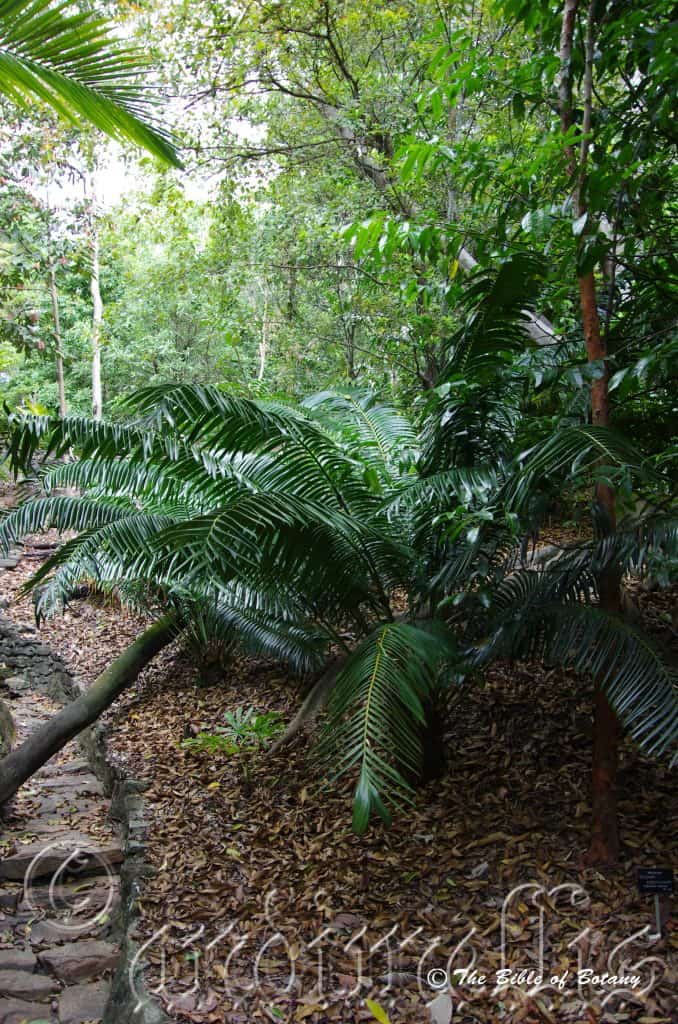
Cootha Botanical Gardens Qld.
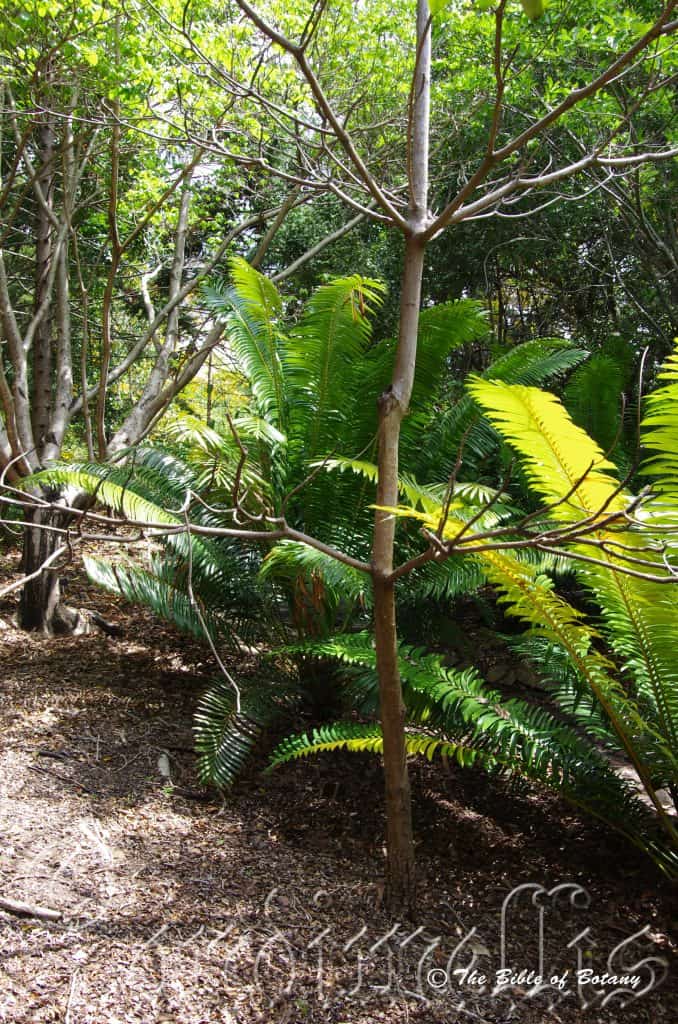
Cootha Botanical Gardens Qld.
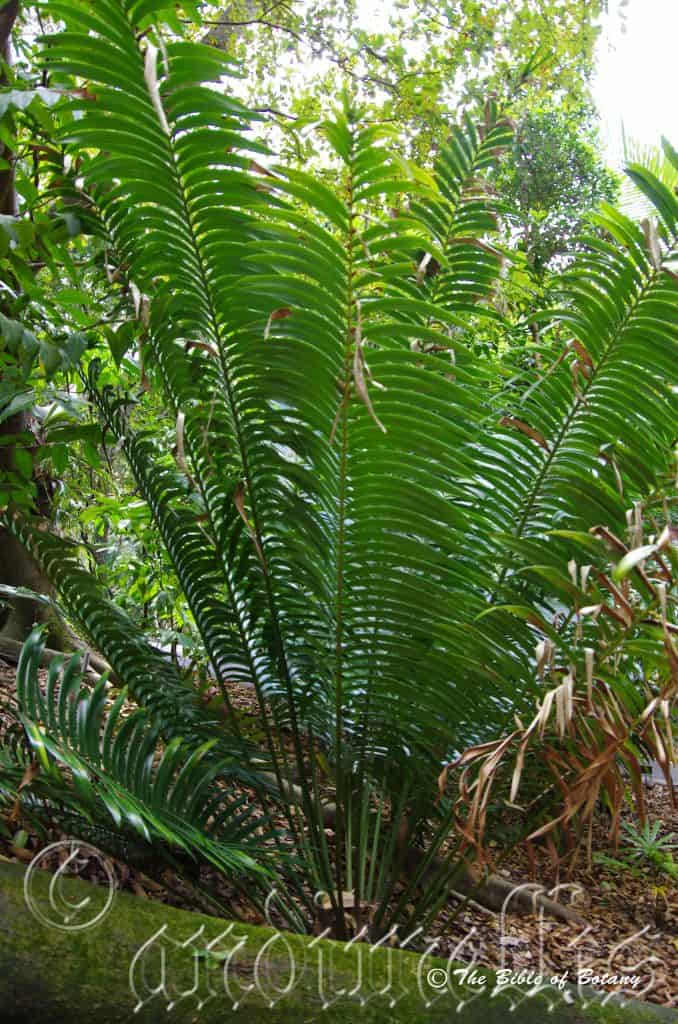
Cootha Botanical Gardens Qld.
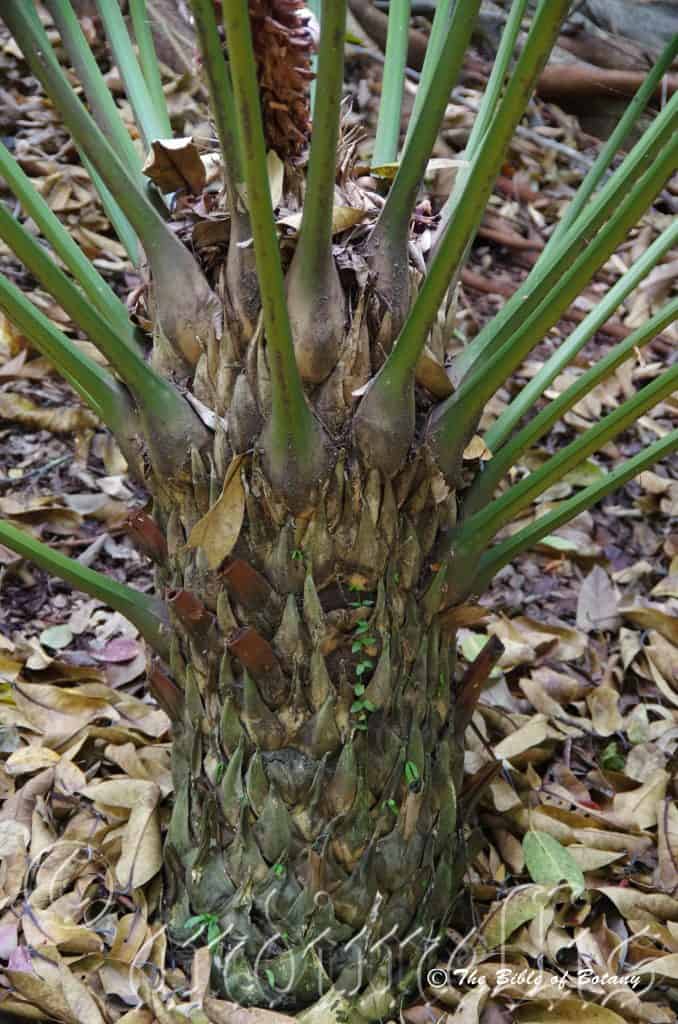
Cootha Botanical Gardens Qld.
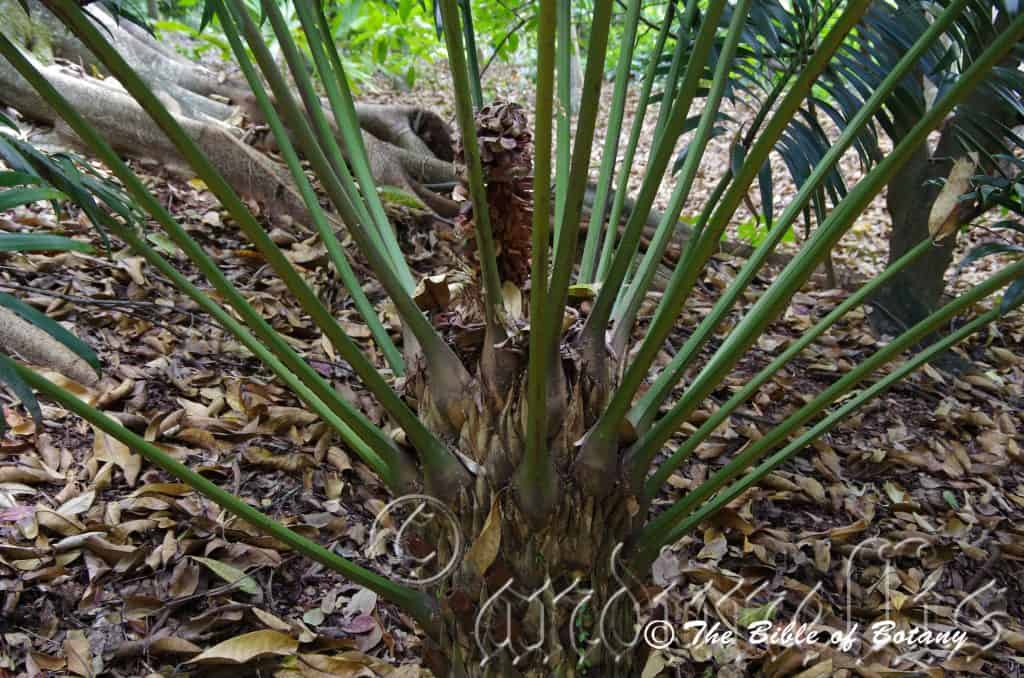
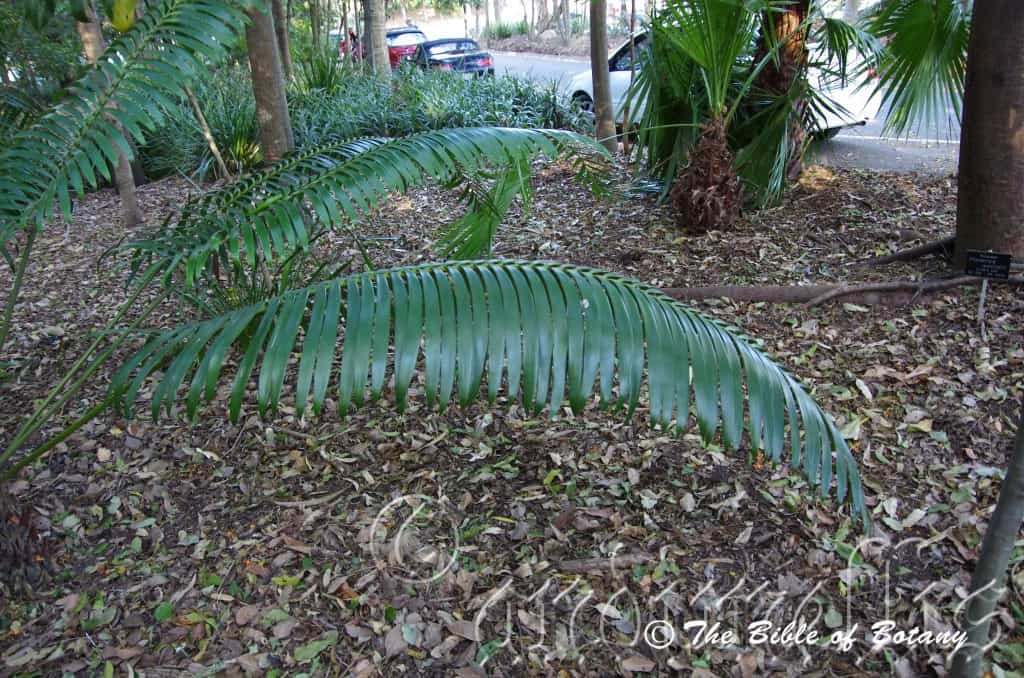
Cootha Botanical Gardens Qld.
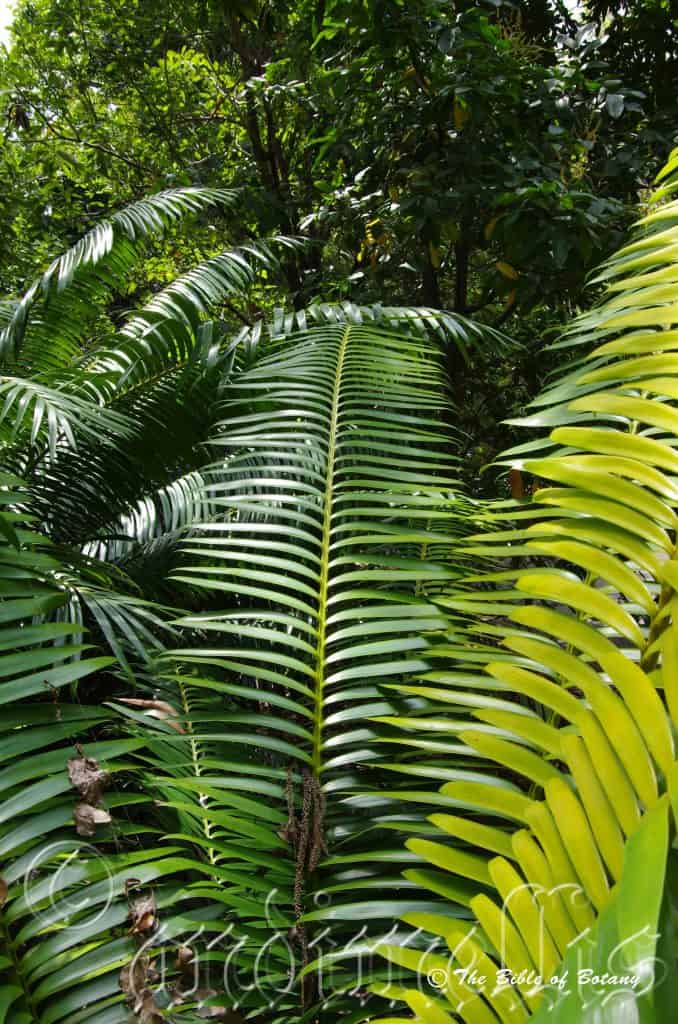
Cootha Botanical Gardens Qld.
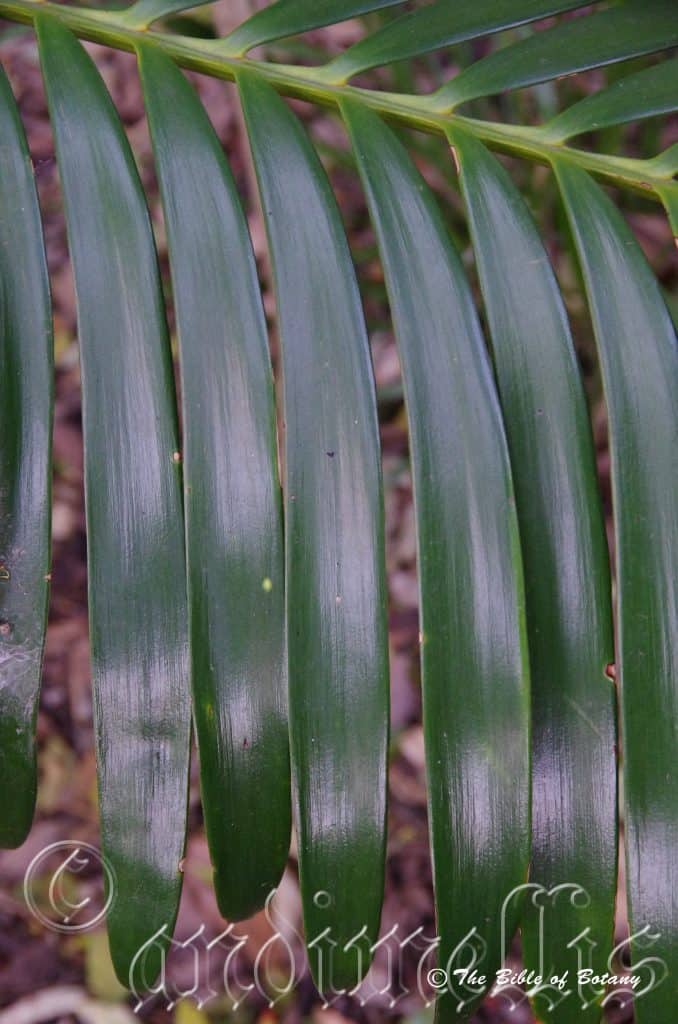
Cootha Botanical Gardens Qld.
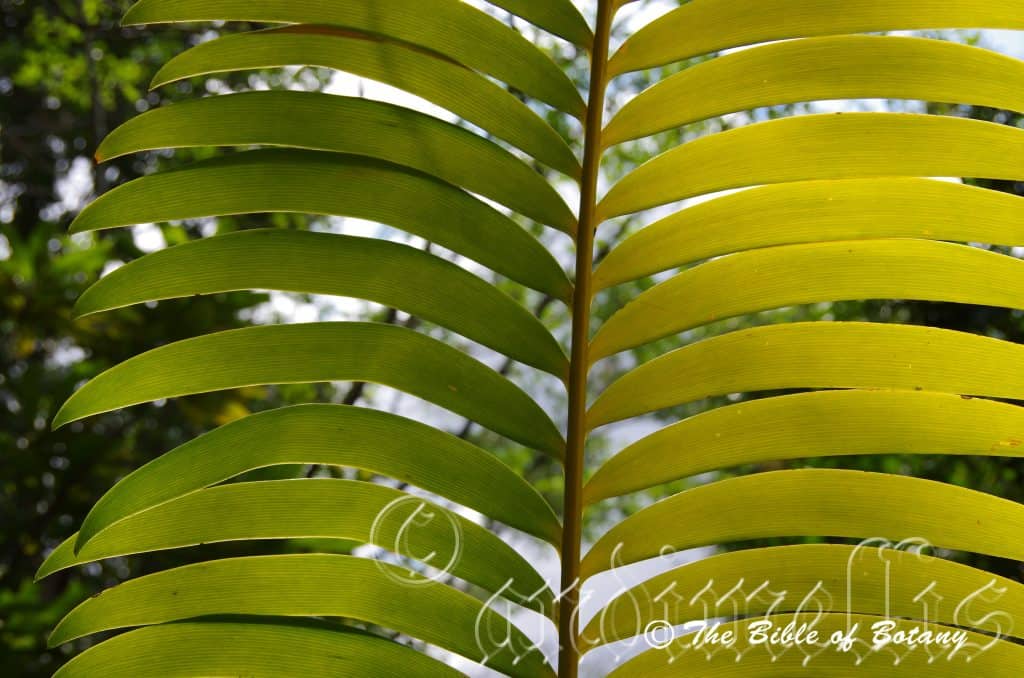
Cootha Botanical Gardens Qld.
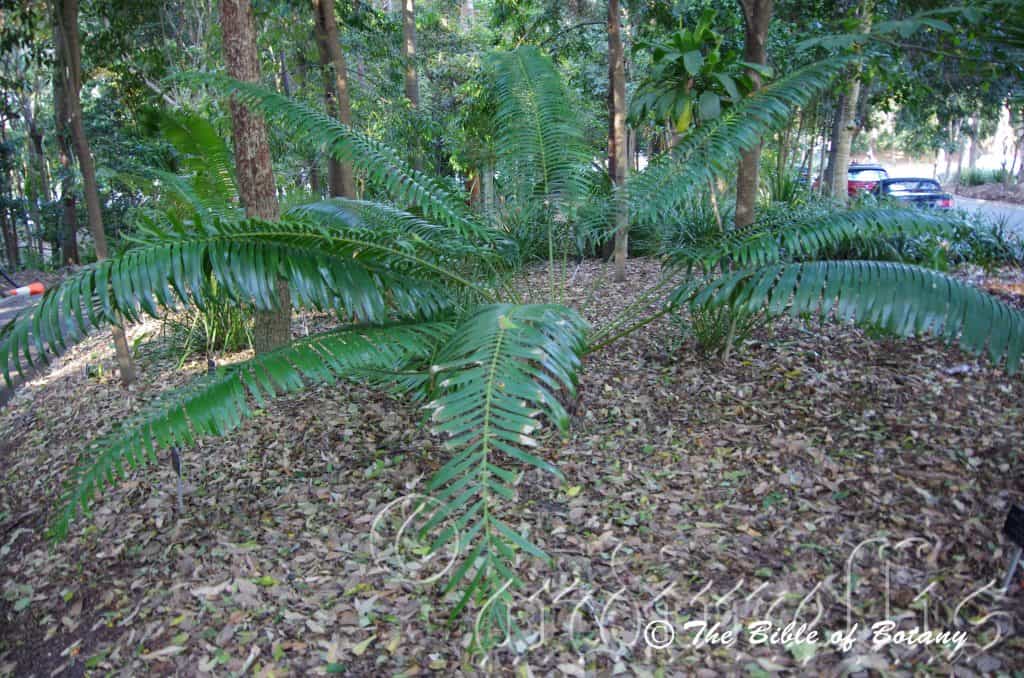
Cootha Botanical Gardens Qld.
Lepidozamia hopei
Classification:
Unranked: Cycadophyta
Class: Cycadopsida
Order: Cycadales
Family: Zamiaceae
Genus: From Lepidōtós, which is Ancient Greek or Lepidōtum, which is Latin for a scale or scaly and Azaniae, which is a misspelling applied to the Latin for the word, Pliny used for Zamia or a pine cone. It refers to fruits of many species, which have large, woody scales.
Specie: Is probably named in honour of Margaret Anderson Hope; 1848-1934, who was a noted Australian botanical artist.
Sub species:
Common Name: Hope’s Cycad Tall Zamia.
Distribution:
Lepidozamia hopei is found in Queensland south from Cooktown to Cardwell.
https://avh.ala.org.au/occurrences/search?taxa=Lepidozamia+hopei#tab_mapView
Habitat Aspect Climate:
Lepidozamia hopei prefers light dappled shade to full shade. It grows on coastal flats slopes and hills in or adjacent to low land or well developed rainforests. The altitude ranges from 5 meter ASL to 600 meters ASL.
The temperatures range from 8 degree in August to 32 degrees in January.
The rainfalls range from lows of 1250mm to an average of 2000mm.
Soil Requirements:
Lepidozamia hopei prefers to grow on better quality light gritty clays to medium clays. The soils are usually derived from decomposed granites. The soils pH ranges from 5pH to 6pH. It does not tolerate waterlogged soils. Non saline soils to moderately saline soils are tolerated.
Height & Spread: Wild Plants: 15m to 18m by 5m to 7m.
Characteristics:
Lepidozamia hopei’s trunk is deep brown rough and straight without branching. The bark is exudant and is very sticky.
Lepidozamia hopei’s pinnate leaves measure 6000mm to 7000mm in length by 420mm to 830mm in width overall. The alternate linear leaflets number 150 to 170 per rachis and measure 200mm to 380mm in length by 15mm to 30mm in width. The bases are sessile while the apexes taper to a point. The straighgt or falcate laminas are concolourous with the laminas being deep sea green, glossy and glabrous. The margins are entire and flat. The mid vein is not prominent on either lamina however there are 15 to 20 parallel veins which are faintly visible on both laminas. The petiole is 120mm to 200mm in length.
The inflorescence of Lepidozamia hopei are heterosexual producing male and female flowers on separate plants. The cones measure 250mm to 300mm in length by 190mm to 220mm in width. The female cones measure 250mm to 300mm in length by 190mm to 220mm in width at the base.
Lepidozamia hopei’s fruit is a large scaly globose cone. The cones measure 400mm to 650mm in length by 200mm to 300mm in width. The pale blue green cones turn pale fawn on ripening. The sarcotesta, the equivalent to the flesh on a flowering fruit; covering the seeds is bright scarlet red. The oblong slightly tapering hexagonal seeds measure 45mm to65mm by 25mm to 37mm across.
Wildlife:
The fruits are eaten by Cassowaries Casuarius johnsonii, while the aril is eaten by native rats like the White tail tropical rat Uromys caudimaculatus and probably most native mice.
Cultivation:
Lepidozamia hopei are beautiful self-cleaning palm like zamias. It is suitable for small, medium and large gardens close to the coast or high in the mountains in warm temperate, sub-tropical or tropical gardens. As garden subjects they will grow full size; however it is very slow growing and will only attain full height at an age of around 400 to 450 years of age. It is cold tolerant to temperatures as low as 4 degrees once established.
It is best suited to shady patches in smaller gardens or as a rainforest understory shrub in their early stages. They will not develop a trunk until at least 8 years of age however in that time they will look magnificent with their large spreading pinnate leaves. The fruits are particularly attractive. Plant them using 5 meters to 8 meters centers. Other faster growing plants like Cordyline or Orthosiphon aristatus can be planted in between until they reach their full potential in diameter.
It also makes an interesting specimen in a large rockery set aside just for Zamias logs and boulders or with scattered low growing shrubs like Commersonia dasyphylla or any of the Coleus species. Whether it is on a slope or flat land it is very enticing to look at the different foliages and spiral patterns on the trunks as they form.
Plants can be kept indoors for extended periods and because of their slow growth if maintained properly in a good organic mix and placed in a well ventilated, well-lit area will provide many years of enjoyment.
Propagation:
Seeds: Lepidozamia hopei seeds can be sown directly into 75mm native tubes with a good seed raising mix after roughing the sides with fine sandpaper to assist in germination. Cover the seeds with 15mm to 20mm of fine weed free mulch and keep moist. Place the tubes in a warm sunny position. When the seedlings have 2 or 3 leaves that are 100mm to 150mm tall, pot them into 250mm pots or directly into a prepared bed.
Once the seedlings have 7 to 9 leaves they can be used as veranda or indoor specimens.
Fertilize using seaweed, fish emulsion or organic chicken pellets soaked in water on an alternate basis. Fertilize every two months until the plants are established then twice annually in early September or March to maintain health, vitality and better flowering.
Further Comments from Readers:
Hi reader, it seems you use The Bible of Botany a lot. That’s great as we have great pleasure in bringing it to you! It’s a little awkward for us to ask, but our first aim is to purchase land approximately 1,600 hectares to link several parcels of N.P. into one at The Pinnacles NSW Australia, but we need your help. We’re not salespeople. We’re amateur botanists who have dedicated over 30 years to saving the environment in a practical way. We depend on donations to reach our goal. If you donate just $5, the price of your coffee this Sunday, We can help to keep the planet alive in a real way and continue to bring you regular updates and features on Australian plants all in one Botanical Bible. Any support is greatly appreciated. Thank you.
In the spirit of reconciliation we acknowledge the Bundjalung, Gumbaynggirr and Yaegl and all aboriginal nations throughout Australia and their connections to land, sea and community. We pay our respect to their Elders past, present and future for the pleasures we have gained.
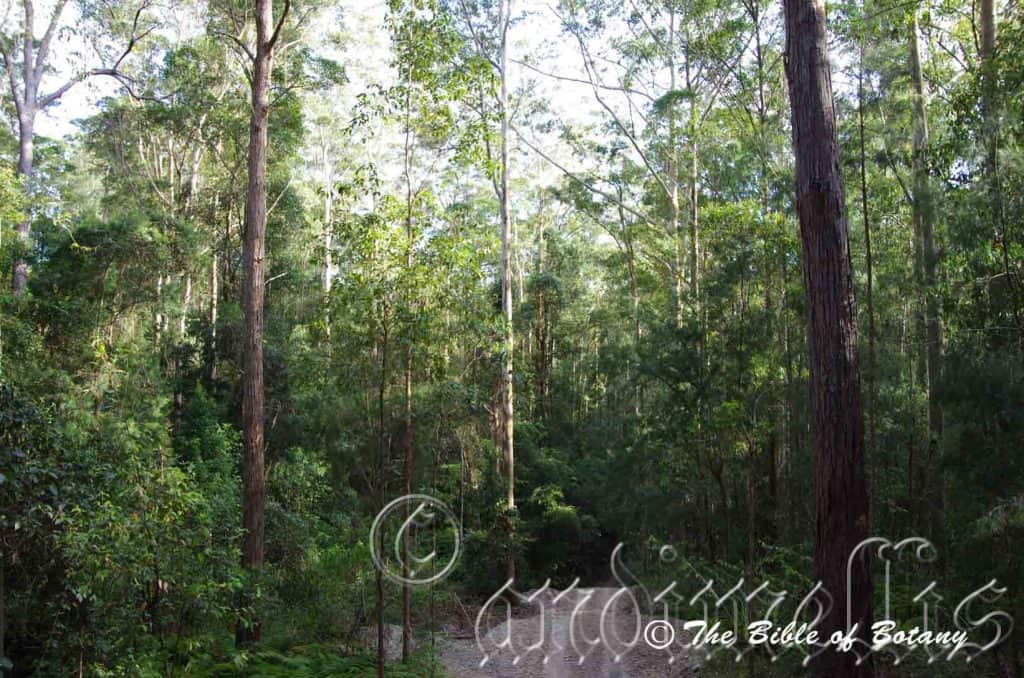
Kendall NSW
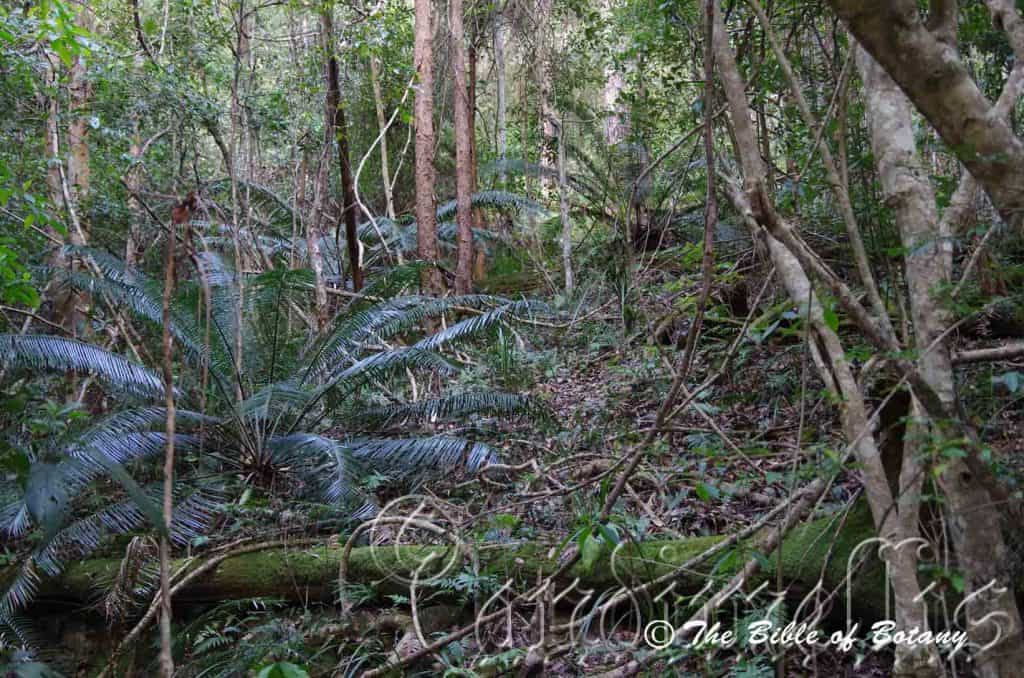
Kendall NSW
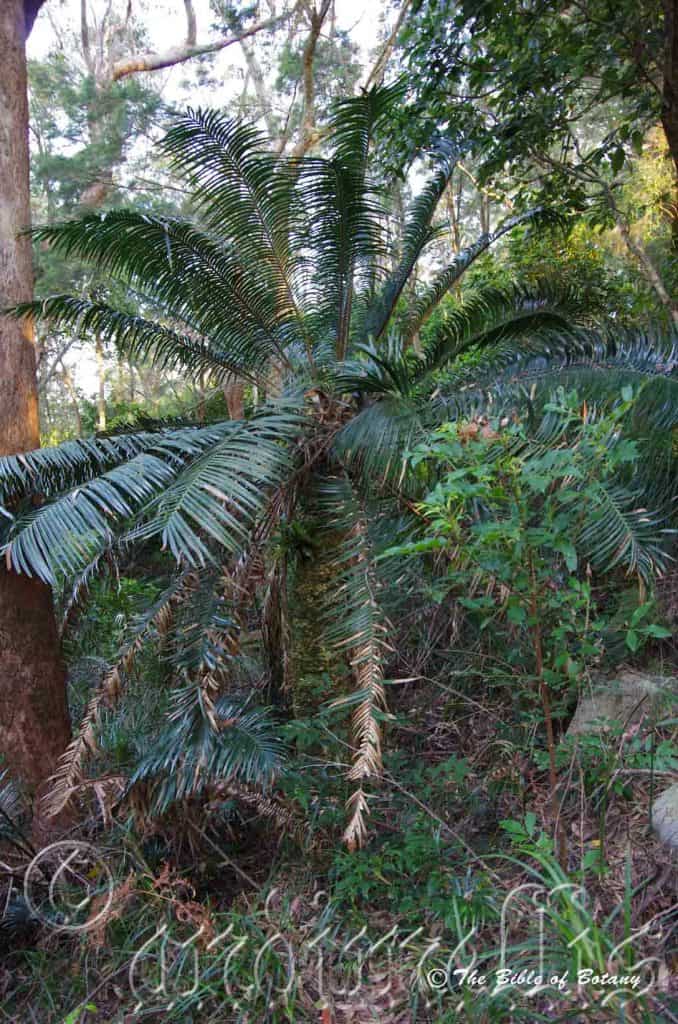
North Brother NSW
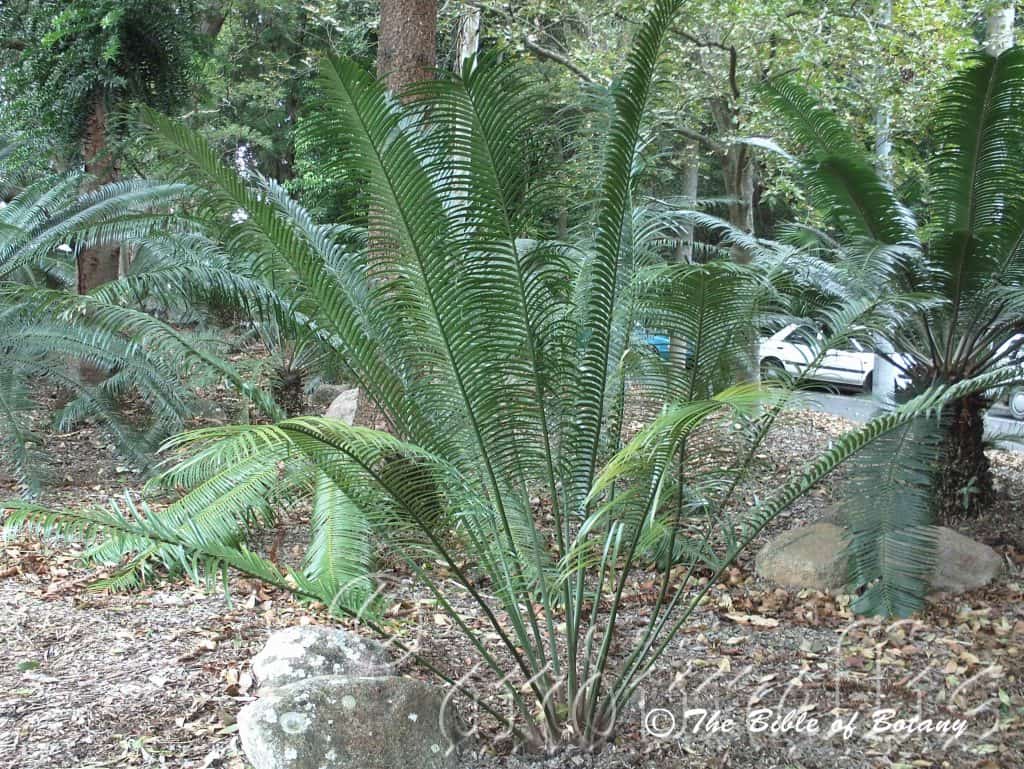
Cootha Botanical Gardens Qld.
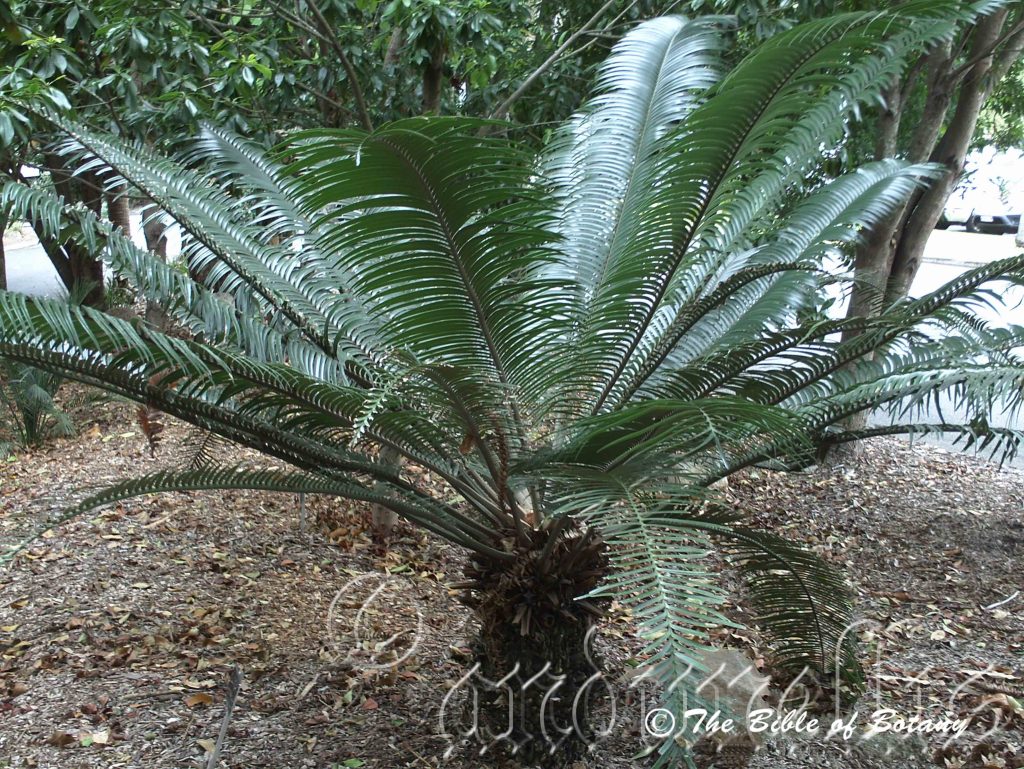
Cootha Botanical Gardens Qld.
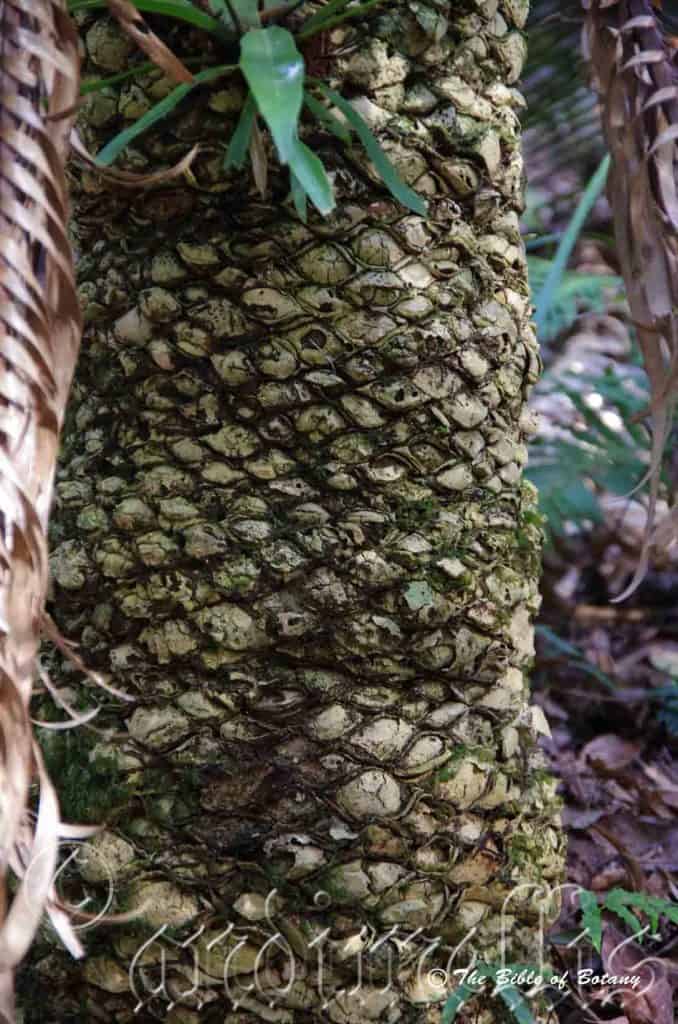
Kendall NSW
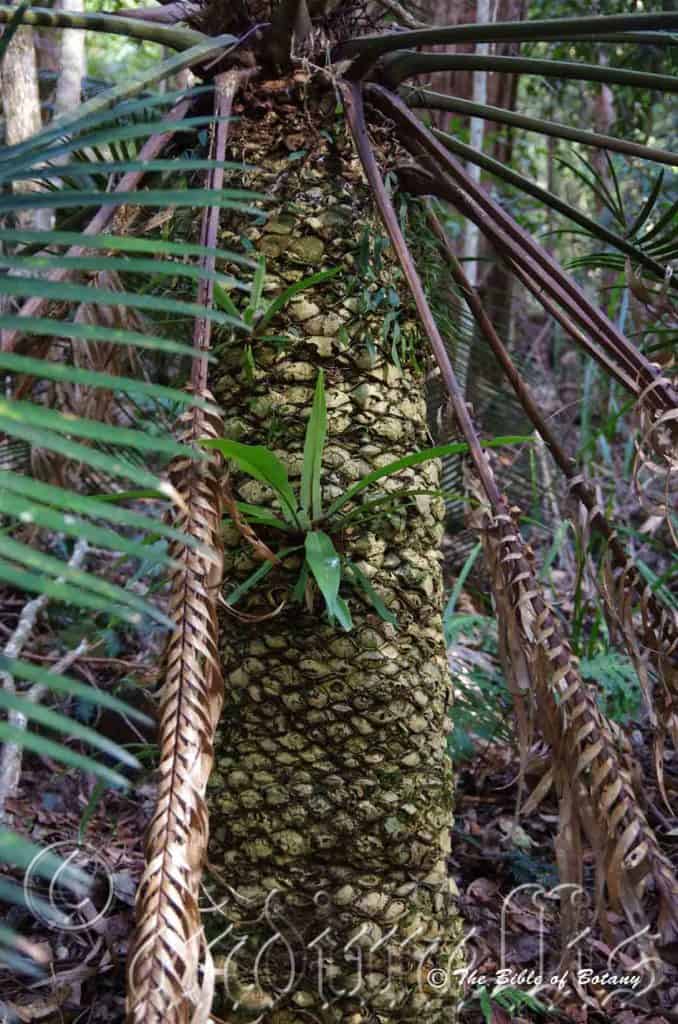
Kendall NSW
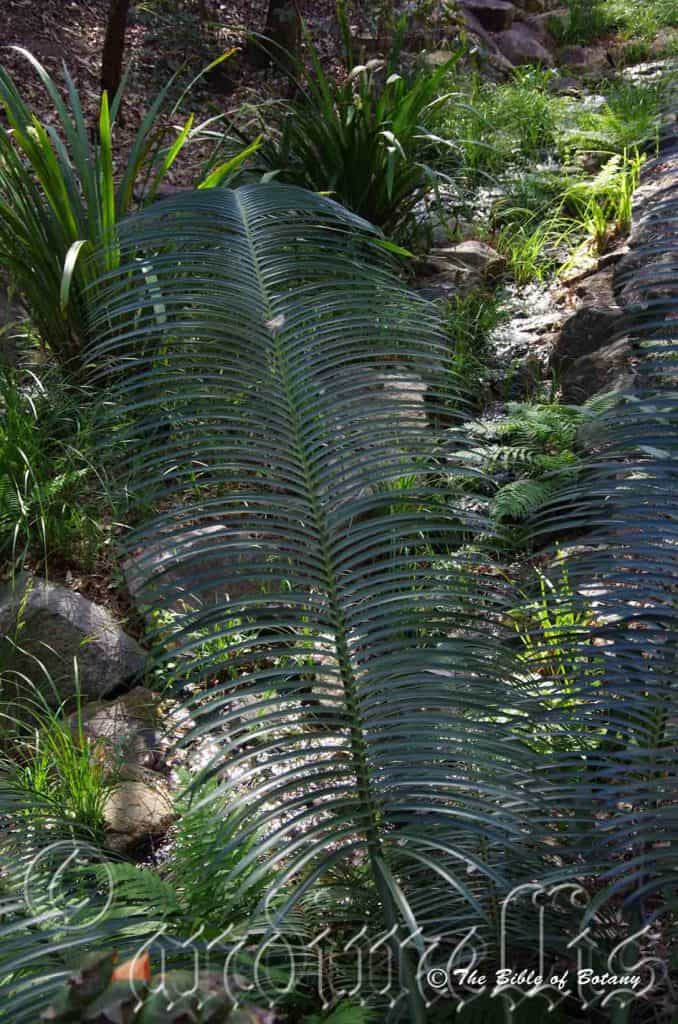
Cootha Botanical Gardens Qld.
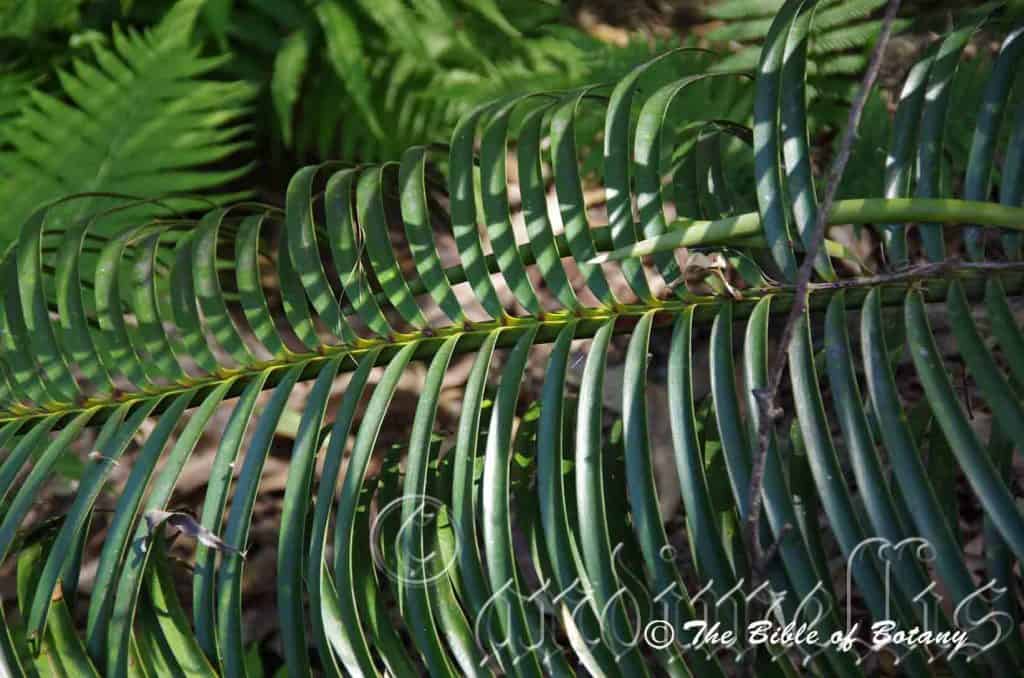
Cootha Botanical Gardens Qld.
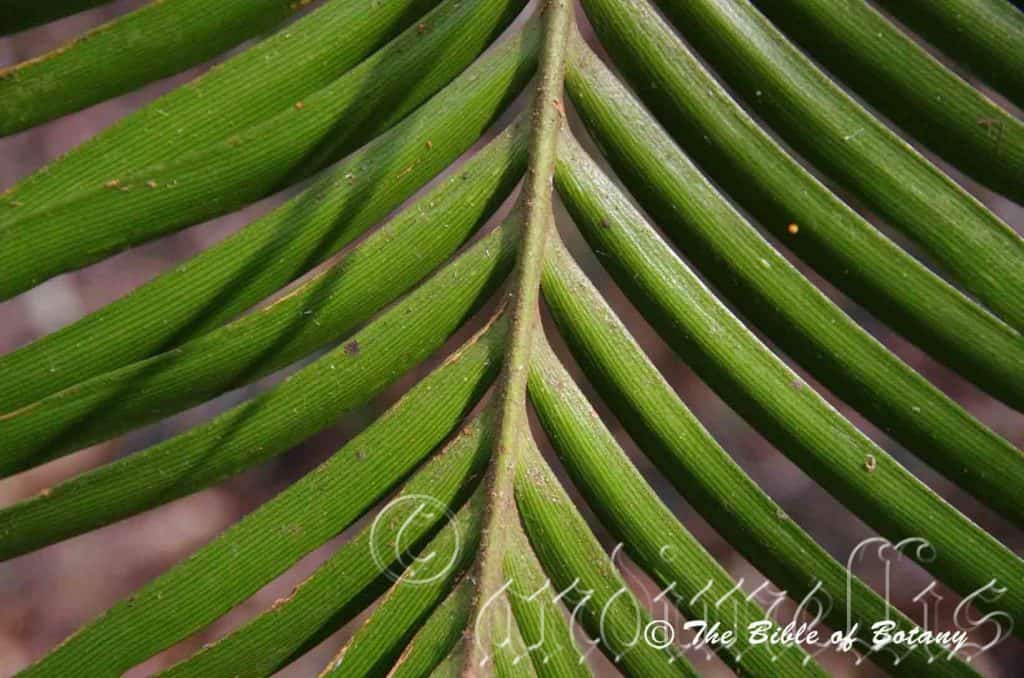
Kendall NSW
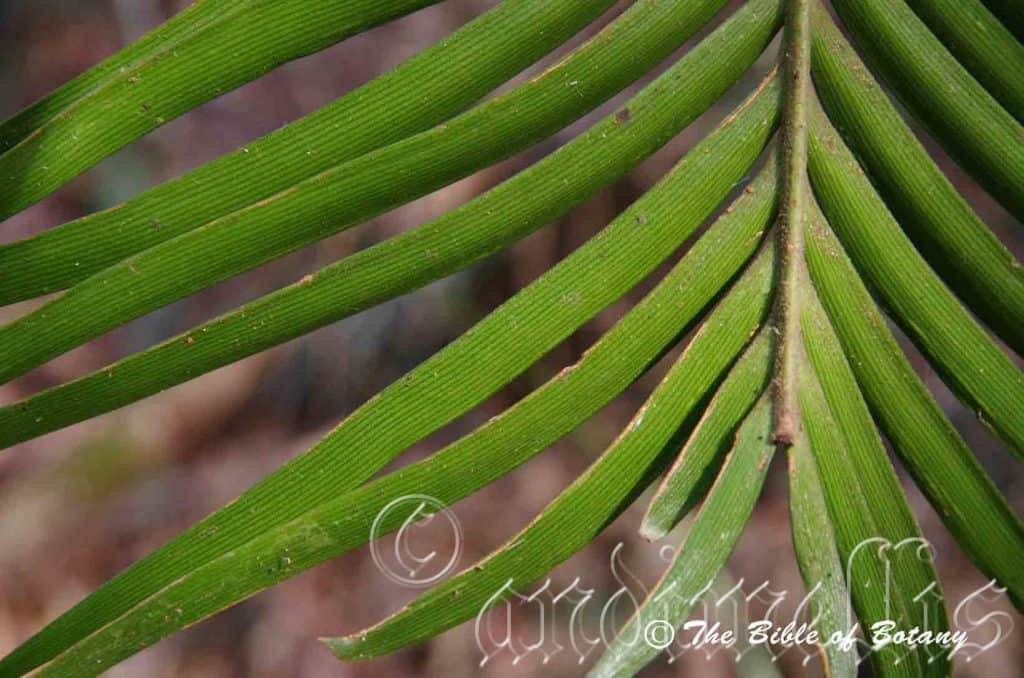
Kendall NSW
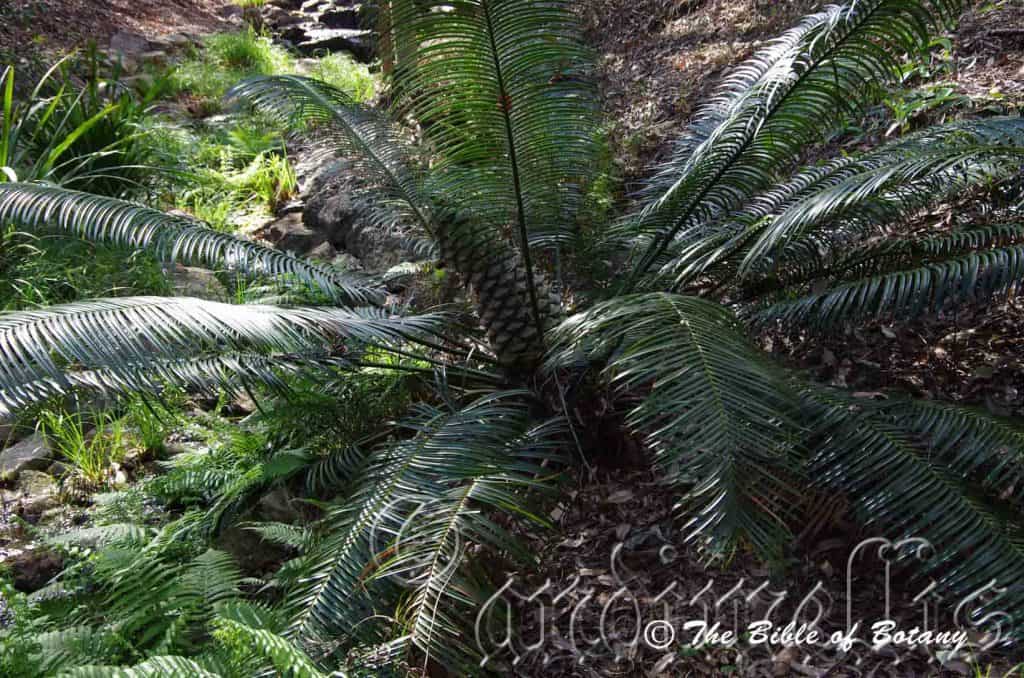
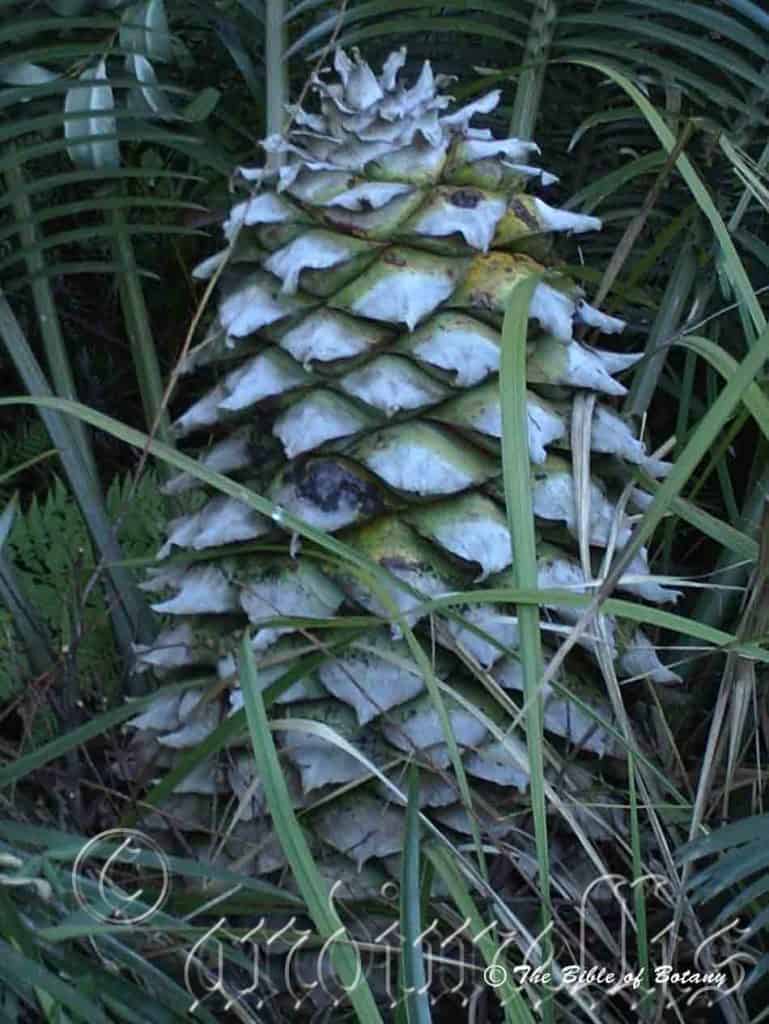
Swan Creek NSW
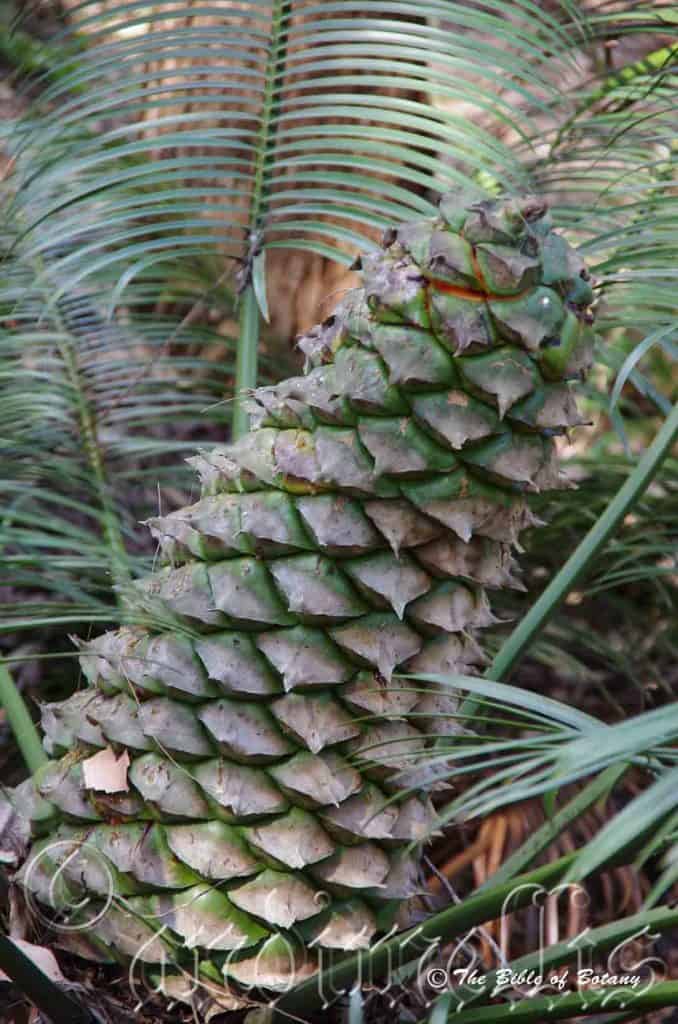
Cootha Botanical Gardens Qld.
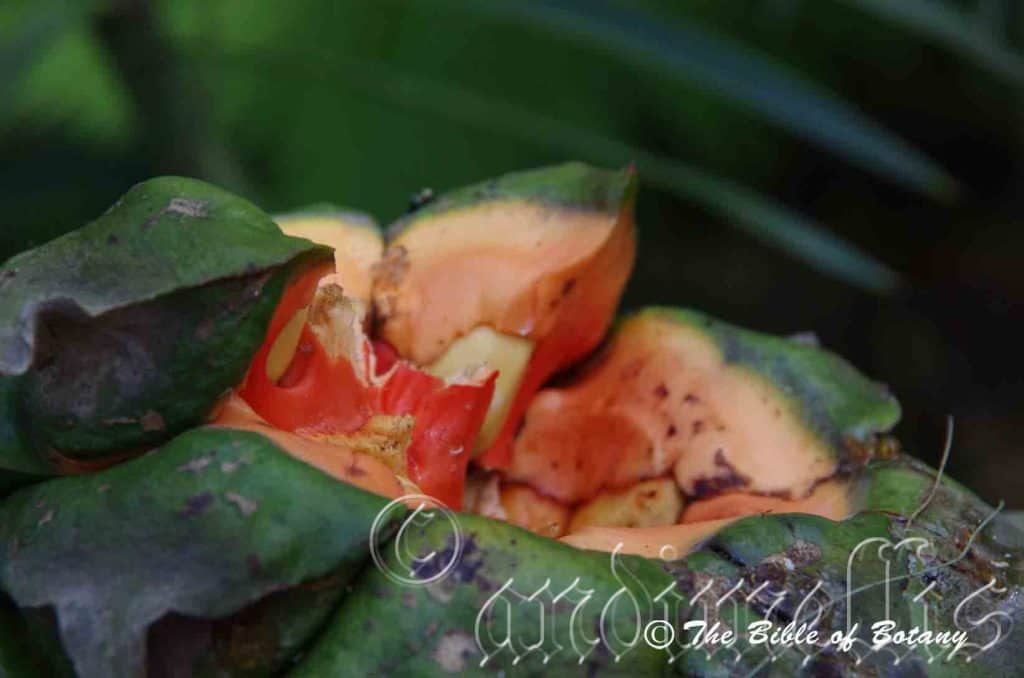
Cootha Botanical Gardens Qld.

Cootha Botanical Gardens Qld.
Lepidozamia peroffskyana
Classification:
Unranked: Cycadophyta
Class: Cycadopsida
Order: Cycadales
Family: Zamiaceae
Genus: From Lepidōtós, which is Ancient Greek or Lepidōtum, which is Latin for a scale or scaly and Azaniae, which is a misspelling applied to the Latin for the word, Pliny used for Zamia or a pine cone. It refers to fruits of many species, which have large, woody scales.
Specie: Is named in honour of Count Peroffsky; 1794-1857, who was a Russian nobleman and benefactor of the St. Petersburg Botanical Garden.
Sub species:
Common Name: Burrawang.
Distribution:
Lepidozamia peroffskyana is found south from Gympie in southern Queensland to Taree in New South Wales with an isolated population in far north east Queensland between Port Douglas and Cassowary. It may be more common than reports indicate as we have found it 3 locations from Nana Glen, Coramba, Kendal and Swan Creek.
https://avh.ala.org.au/occurrences/search?taxa=Lepidozamia+peroffskyana#tab_mapView
Habitat Aspect Climate:
Lepidozamia peroffskyana prefer full sun, light dappled shade to dense shade. It is found on coastal flats slopes and hills associated with low land and well developed mountain rainforests or wet Eucalyptus forests. The altitude ranges from 40 meter ASL to 600 meters ASL.
The temperatures range from 1degree in August to 36 degrees in January.
The rainfalls range from lows of 700mm to an average of 1300mm.
Soil Requirements:
Lepidozamia peroffskyana prefers to grow on better quality sandy loams to light gritty clays. The soils are usually derived from decomposed granites. The soils pH ranges from 5pH to 6pH. It does not tolerate waterlogged soils. Non saline soils to moderately saline soils are tolerated as are salt laden winds.
Height & Spread:
Wild Plants: 5m to 7m by 4.5m to 6.5m.
Characteristics:
Lepidozamia peroffskyana’s trunk is pale to deep brown rough and straight and sometimes sporadically branched. The trunks are often blackened by fire or have lichens, mosses or ferns growing on them when it is growing in rainforests.
Lepidozamia peroffskyana’s pinnate leaves measure 2000mm to 3000mm in length by 420mm to 630mm in width overall. The alternate linear to broad linear leaflets number 190 to 210 per rachis and measure 100mm to 300mm by 8mm to 13mm in width. The base is sessile while the apex tapers to a point. The slightly falcate laminas are concolourous with the laminas being deep sea green, glossy and glabrous. The margins are entire and flat. There are 7 to 13 slightly prominent parallel veins visible on the lower lamina and which are not visible on the upper lamina. The rounded petiole is 300mm to 600mm in length.
The inflorescences of Lepidozamia peroffskyana are monoecious producing male and female flowers on separate plants. The cataphylls measure 100mm to 150mm in length. The male cones measure 400mm to 600mm in length by 100mm to 120mm in width. The microsporophyll, (the equivalent to anthers in flowering plants) in the cones measure 50mm to 80mm in length. The female flowers measure 500mm to 600mm in length by 250mm to 320mm in diameter at the base. Flowering occurs throughout the year especially in the warmer months.
Lepidozamia peroffskyana’s fruit is a large scaly globose cone. The cones measure 550mm to 650mm in length by 250mm to 350mm in width. The pale blue green cones turn pale fawn on ripening. The sarcotesta; the equivalent to flesh on a flowering fruit, covering the seeds is bright scarlet red to bright orange-red. The oblong, slightly tapering or hexagonal to square in cross section seeds measure 50mm to 60mm in length by 25mm to 37mm in width at the widest point.
Wildlife:
While I have not noticed any animal eating the flesh the flesh is often half or fully devoured.
Cultivation:
Lepidozamia peroffskyana are beautiful self-cleaning palm like zamias. It is suitable for small, medium and large gardens close to the coast or high in the mountains in warm temperate, sub-tropical or tropical gardens. As garden subjects they will grow full size; however it is very slow growing and will only attain full height at an age of around 200 to 300 years of age. It is cold tolerant to temperatures as low as minus 4 degrees once established.
It is best suited to shady patches in smaller gardens or as a rainforest understory shrub in their early stages. They will not develop a trunk until at least 8 years of age however in that time they will look magnificent with their large spreading pinnate leaves. The fruits are particularly attractive. Plant them using 5 meters to 8 meter centers. Other faster growing plants like Cordyline or Orthosiphon aristatus can be planted in between until they reach their full potential in diameter.
They also make interesting specimens in a large rockery set aside just for Zamias logs and boulders. Whether it is on a slope or flat land it is very enticing to look at the different foliages and spiral patterns on the trunks as they form.
Plants can be kept indoors for extended periods and because of their slow growth if maintained properly in a good organic mix and placed in a well ventilated, well-lit area will provide many years of enjoyment.
Propagation:
Seeds: Lepidozamia peroffskyana seeds can be sown directly into 75mm native tubes with a good seed raising mix after roughing the sides with fine sandpaper to assist in germination. Cover the seeds with 15mm to 20mm of fine weed free mulch and keep moist. Place the tubes in a warm sunny position. When the seedlings have 2 or 3 leaves that are 100mm to 150mm tall, pot them into 250mm pots or directly into a prepared bed.
Once the seedlings have 7 to 9 leaves they can be used as veranda or indoor speciemens.
Fertilize using seaweed, fish emulsion or organic chicken pellets soaked in water on an alternate basis. Fertilize every two months until the plants are established then twice annually in early September or March to maintain health, vitality and better flowering.
Further Comments from Readers:
Hi reader, it seems you use The Bible of Botany a lot. That’s great as we have great pleasure in bringing it to you! It’s a little awkward for us to ask, but our first aim is to purchase land approximately 1,600 hectares to link several parcels of N.P. into one at The Pinnacles NSW Australia, but we need your help. We’re not salespeople. We’re amateur botanists who have dedicated over 30 years to saving the environment in a practical way. We depend on donations to reach our goal. If you donate just $5, the price of your coffee this Sunday, We can help to keep the planet alive in a real way and continue to bring you regular updates and features on Australian plants all in one Botanical Bible. Any support is greatly appreciated. Thank you.
In the spirit of reconciliation we acknowledge the Bundjalung, Gumbaynggirr and Yaegl and all aboriginal nations throughout Australia and their connections to land, sea and community. We pay our respect to their Elders past, present and future for the pleasures we have gained.
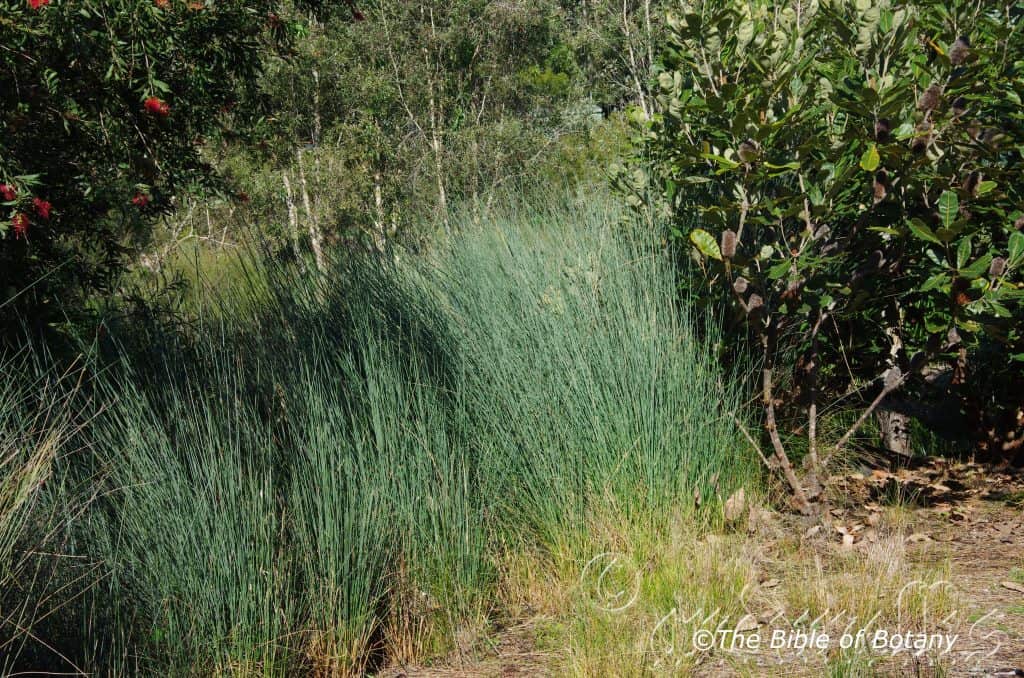
Benowa Qld.
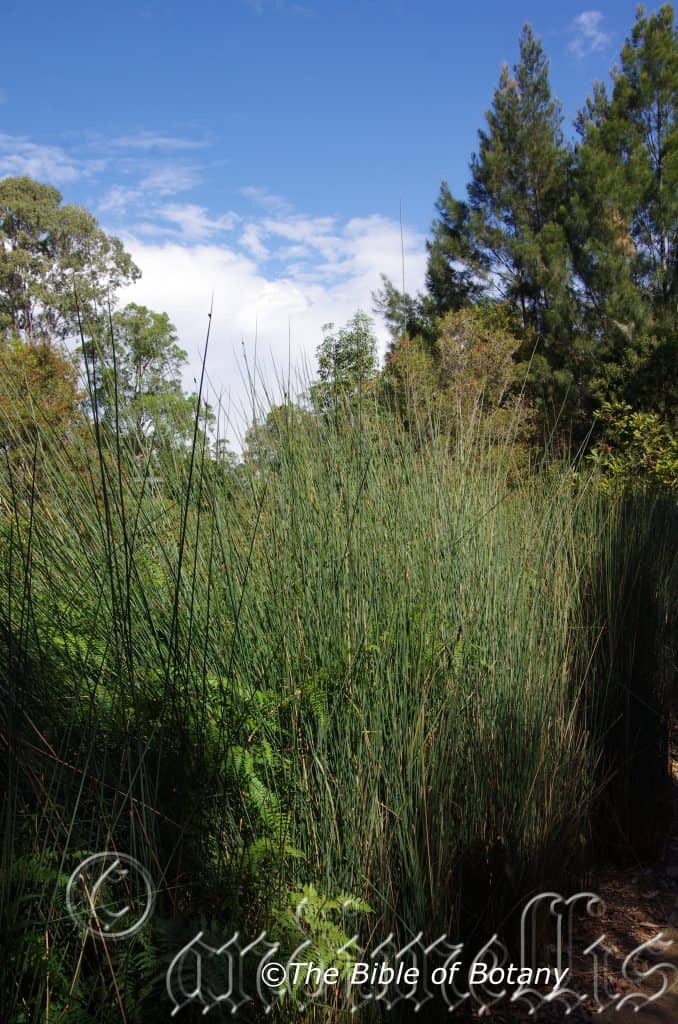
Benowa Qld.
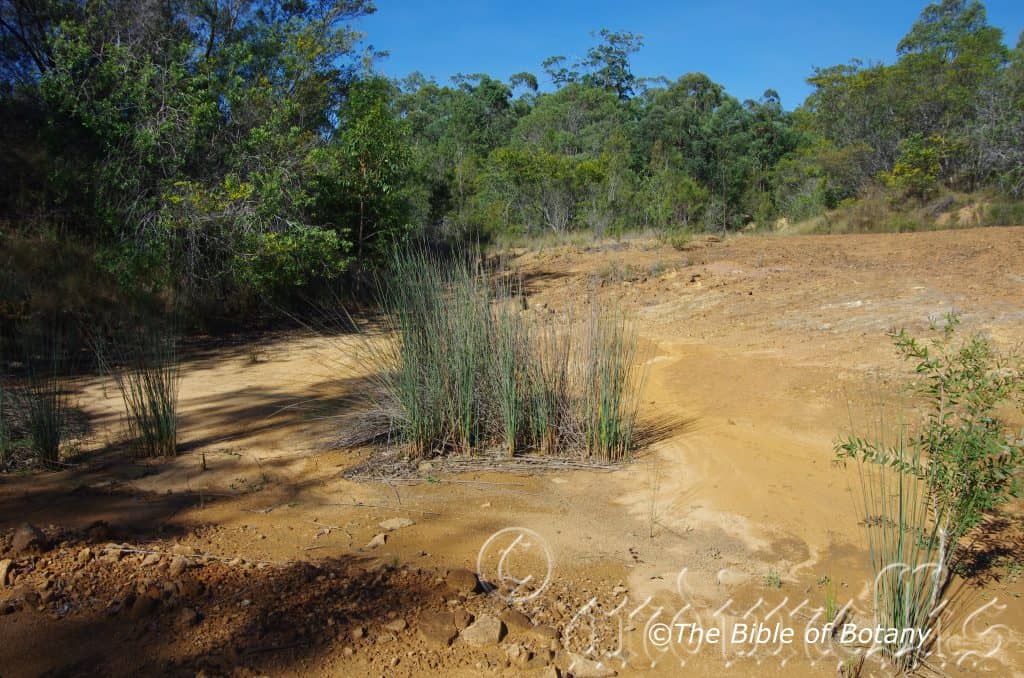
The Pinnacles NSW
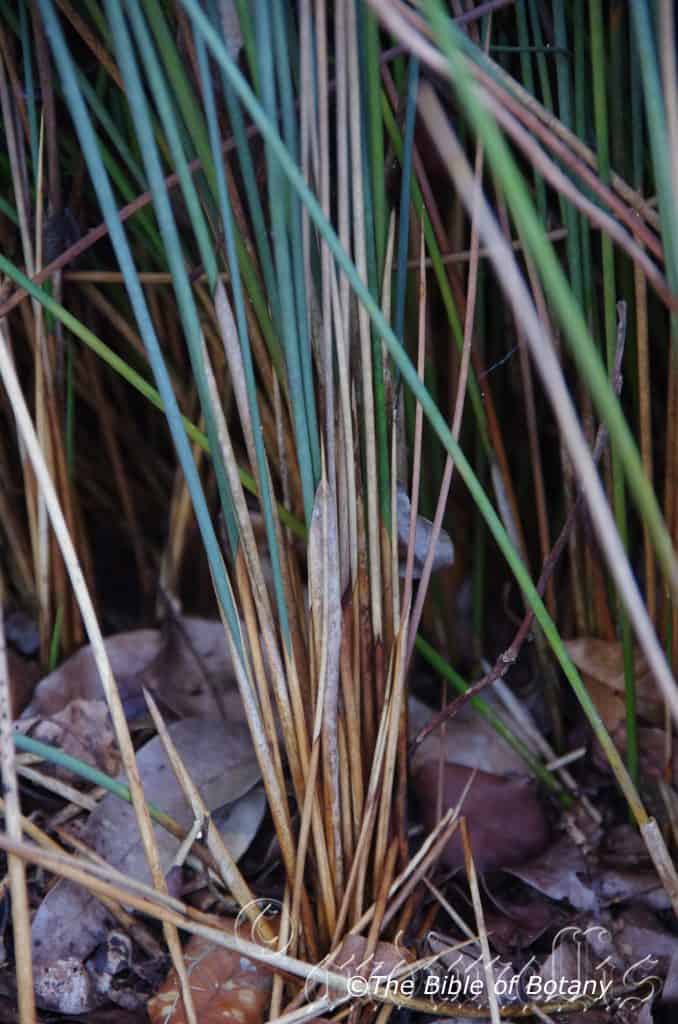
Benowa Qld.
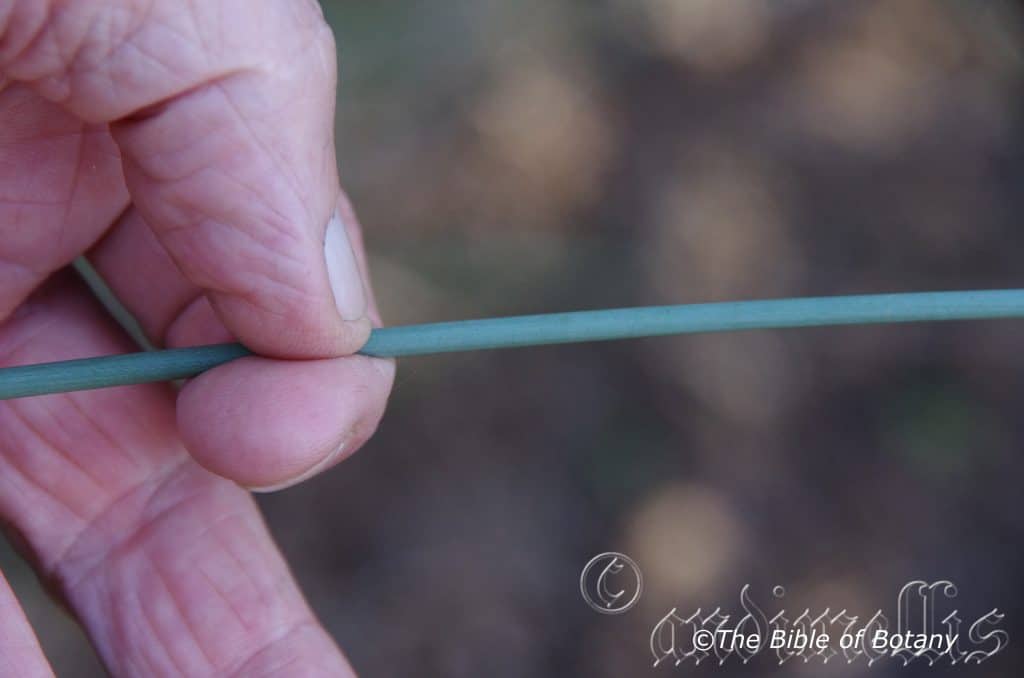
Benowa Qld.
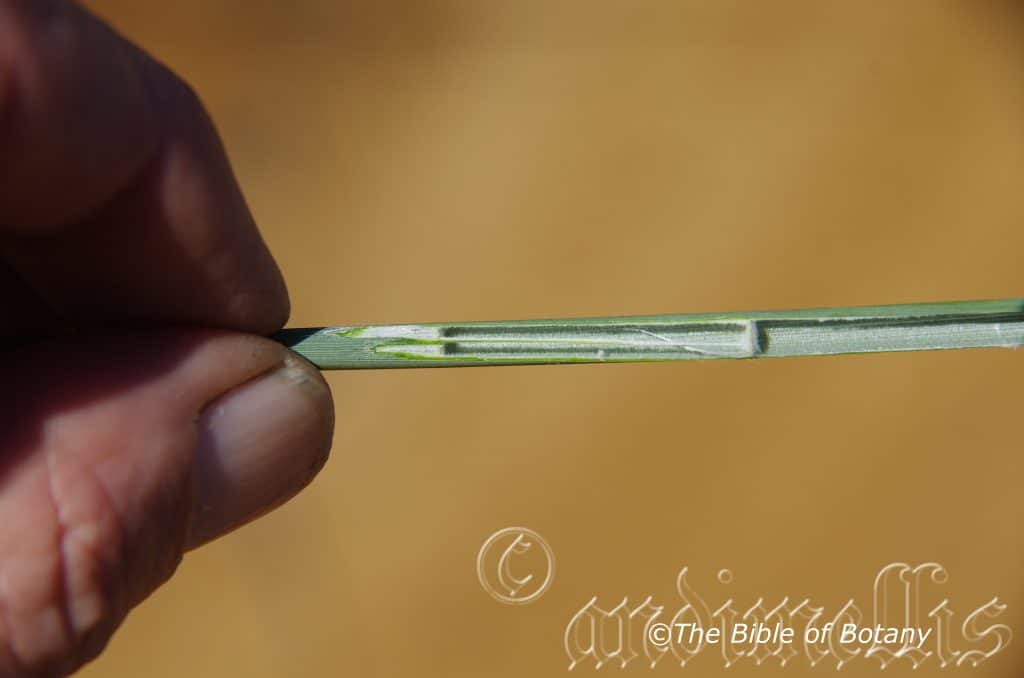
The Pinnacles NSW
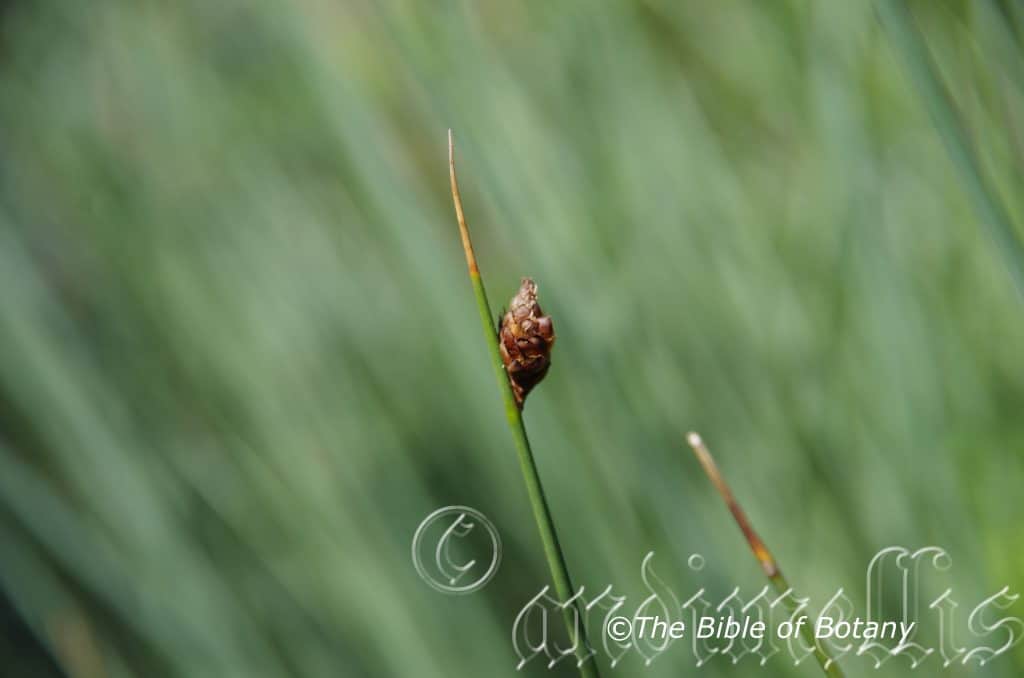

The Pinnacles NSW
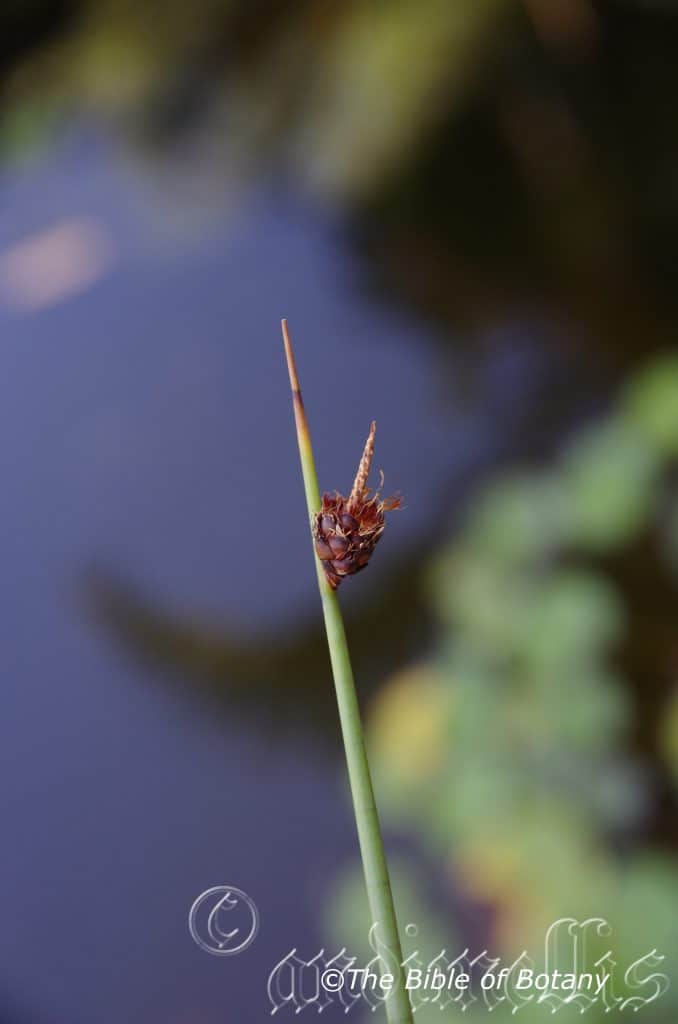
Mount Cootha Botanic Gardens Qld.
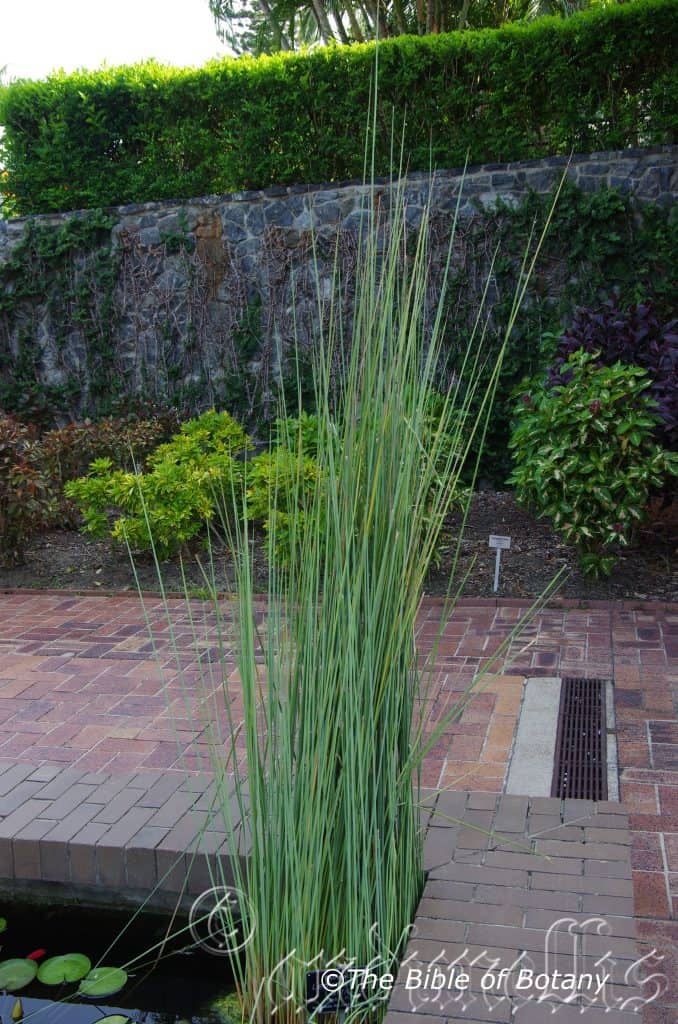
Mount Cootha Botanic Gardens Qld.
Lepironia articulata
Classification:
Unranked: Monocots
Unranked: Commelinids
Order: Poales
Family: Cyperaceae
Genus: From Leporīnus, which is Latin for a hare. It refers to the flower spikes, which in some species resemble a hare’s foot.
Specie: From Articulatus, which is Latin for to be divided into distinct sections. It usually refers to scale like fruits, which resemble scales dividing or overlapping each other.
Sub specie:
Common Name: Grey Rush.
Distribution:
Lepironia articulata is found in several disjunct populations along the coast in northern Australia. In the Northern Territory it is found from Sand Fly Creek near Port Keats to Lake Eames on Vanderlin Island.
In Queensland it is found from Nameplate Creek on the west coast of Cape York Peninsula north along the coast to the Torres Strait Islands and then south along the east coast to Chilli Beach. It is then found in disjunct populations south from around various lakes in the Cape Flattery to Coomenderry Swamp near Shoal Haven Bay in New South Wales. It is mainly found on or east of the Great Dividing Range except for the populations in the Pelican Lagoons and Stretchworth State Forest lagoons in the southern Queensland.
https://avh.ala.org.au/occurrences/search?taxa=Lepironia+articulata#tab_mapView
Habitat Aspect Climate:
Lepironia articulata prefers full sunlight to light dappled shade. It grows in exposed situations in lagoons slow moving water in billabongs, lakes or depressions where water lies for extended periods throughout the year. It prefers hot dry springs and summers with warm wet autumns and warm winters. The altitude ranges from 3 meter ASL to 670 meters ASL.
The temperatures range from minus 5 degrees in August to 42 degrees in January.
The rainfall ranges from lows of 960mm to 3000mm average per annum.
Soil Requirements:
Lepironia articulata prefer course sands, fine sharp sands to medium clays. The soils are usually derived from brown basalt, black basalt, granites, sandstone, shales metamorphic rocks, accumulated sands or alluvial silts. The soils pH ranges from 4.5pH to 7pH. It prefers acid waters for optimum growth. It tolerates waterlogged soils preferring to stand in water from 0.2 meters 1.5 meters in depth but prefers water depths of 50mm to 900mm for optimum growth. Non saline soils to moderately saline soils are tolerated as are salt laden winds.
Height & Spread:
Wild Plants: 0.4m to 4m by 0.25m to several square meters.
Characteristics:
Lepironia articulata is a tall, open perennial rush with long rhizomes. The terete culms are erect, glabrous, grey-green or glaucous and usually measure 400mm to 2000mm in height by 2mm to 10mm in diameter but can grow up to 4000mm in deep water for short periods of inundation. The septa close together and are only visible externally after the death of the culm which causes some separation.
Lepironia articulata is leafless while the ochre-brown sheaths are without a blade.
The inflorescences are narrow ovoid to narrow ellipsoid with an acute apex. They measure 10mm to 40mm in length by 5mm to 15mm in diameter near the base. The involucral bract measures 20mm to 60mm in length.
The similar glumes have 2 keels and are without nerves. Each pseudo-spikelet’s lowest glumes are obtuse often with erose margins. The glumes measure 4mm to 6mm in length by 4mm to 6mm in width. The lower glumes are very deep brown to black. The upper 15 to 26 brown upper glumes are compressed and measure 4mm to 6mm in length by 3.5mm to 5mm in width.
The 2 stamens have filiform, white filaments while the pastel yellow to pastel pink anthers are obloidal and measure 4mm to 6mm in length. Only the anthers are exserted. The style is bifid or trifid. The flowers appear throughout the year.
Lepironia articulata’s fruits are obovoid to sub globose nuts. The brown nuts are finely striated longitudinally and are glabrous except for the trigonous corners which are scabrous. The nuts measure 3.5mm to 6mm in length by 2.5mm to 3mm in diameter.
Wildlife:
Lepironia articulata is unknown to the author
The rhizomes were eaten by aborigines in the north of the country and are still eaten in southern Thailand, Laos and Cambodia.
Cultivation:
Lepironia articulata are unusual flowering reeds for dry sub-tropical to temperate gardens with sandy to heavy soils. It requires a minimum water depth of 300mm and prefers 5mm for optimum growth. In cultivation they will grow 1000mm to 1500mm in height by 200mm in diameter when grown in an open situation in full sun. A 200mm pot is the minimum size pot that should be used to grow it.
Lepironia articulata offers the gardener a fine erect plant for tranquil setting.
Mass plantings are best achieved by leaving spaces between the individual plants so plant them at 300mm to 600mm centres.
Propagation:
Seeds: Collecting seeds from mature plants of Lepironia articulata is not difficult but the collector must be vigilant as the seeds will disperse over in a matter of a couple of days to a week when fully ripe. The fresh seeds can be sown directly into a seed raising mix however better; more even germination is gained if the seeds are scarified by lightly scraping the nuts over a piece of fine emery paper. Cover the seeds to a depth of 2mm. Place the trays in a warm position beneath 30mm shade cloth and stand it in a larger tray with 50mm to 100mm of water so that the mix does not dry out. The seeds usually germinate rapidly with a strike rate of over 80mm.
When the seedlings are 20mm to 30mm tall, prick them out and plant them into 50mm native tubes using a good quality mix.
Once the seedlings reach 50mm in height they can be repotted for indoor use or 100mm to 150mm in height plant them out into their permanent position.
Fertilize using seaweed, fish emulsion or organic chicken pellets soaked in water on an alternate basis. Fertilize every two months until the plants are established to maintain health, vitality and better flowering.
Further Comments from Readers:
Hi reader, it seems you use The Bible of Botany a lot. That’s great as we have great pleasure in bringing it to you! It’s a little awkward for us to ask, but our first aim is to purchase land approximately 1,600 hectares to link several parcels of N.P. into one at The Pinnacles NSW Australia, but we need your help. We’re not salespeople. We’re amateur botanists who have dedicated over 30 years to saving the environment in a practical way. We depend on donations to reach our goal. If you donate just $5, the price of your coffee this Sunday, We can help to keep the planet alive in a real way and continue to bring you regular updates and features on Australian plants all in one Botanical Bible. Any support is greatly appreciated. Thank you.
In the spirit of reconciliation we acknowledge the Bundjalung, Gumbaynggirr and Yaegl and all aboriginal nations throughout Australia and their connections to land, sea and community. We pay our respect to their Elders past, present and future for the pleasures we have gained.
Leptocarpus tenax
Classification:
Unranked: Monocots
Unranked: Commelinids
Order: Poales
Family: Restionaceae
Genus: From Leptós, which is Ancient Greek for fine or slender and Karpós, which is Ancient Greek for a fruit. It refers to fruits, which are relatively long and slender.
Specie: From Tenax, which is Latin for tough or tenacious. It refers to plants which have the ability once capturing its prey never letting it get away or living in harsh habitats where other plants cede.
Sub specie:
Common Name:
Distribution:
Leptocarpus tenax is found in 4 disjunct populations in southern Australia. In Western Australia it is found south from the Swan River to Albany and further east at Tooregullup Swamp on the Esperance Plains and from Stokes Inlet to Esperance.
In the east it is found from Fraser Island in central coastal Queensland to east Melbourne in south eastern Victoria. It is mainly found on and east of the Great Dividing Range. It is found from Kangaroo Island in southern South Australia north to Nuriootpa and south east to the Naracoorte Coastal Plain and the Grampians in south western Victoria.
In Tasmania it is found on the Bass Strait Islands of the Flinders Island group and most the mainland except for the real high country.
https://avh.ala.org.au/occurrences/search?taxa=Leptocarpus+tenax#tab_mapView
Habitat Aspect Climate:
Leptocarpus tenax prefers full sunlight to light dappled shade. It grows in exposed situations along headlands in open forests or open woodlands. It prefers hot dry springs and summers with cool wet autumns and warm winters. The altitude ranges from 5 meter ASL to 1067 meters ASL.
The temperatures range from minus 5 degrees in August to 37 degrees in January.
The rainfall ranges from lows of 600mm to 2000mm average per annum.
Soil Requirements:
Leptocarpus tenax prefers course sands, fine sharp sands, and light fatty sands to medium clays. The soils are usually derived from granites, sandstone or accumulated sands. The soils pH ranges from 5pH to 7pH. It tolerates waterlogged soils. Non saline soils to the high end of moderately saline soils are tolerated as are salt laden winds.
Height & Spread:
Wild Plants: 0.6m to 1m by 0.25m to many square meters.
Characteristics:
Leptocarpus tenax is an open perennial reed with short thin rhizomes that measure 4mm to 7mm in diameter. The erect culms are straight, and unbranched up to the inflorescences and measure 500mm to 1300mm in height by 1mm to 2mm in diameter. The greyish-green culms are covered in disjunct reddish-brown appressed scale like trichomous sheaths.
The linear leaves are erect, appressed and measure 20mm to 50mm in length by 1mm to 3mm in width. The leaf sheaths are tightly appressed, reddish-brown and striated with obtuse or at times acuminate apexes.
The male inflorescences are numerous, pedicillate spikelets are born from the terminals. The oblong to ovoidal inflorescences have acute apical points and measure 3mm to 5mm in length by 1mm in diameter. The deep brown glumes are flattened with the 6 tepals. The white filaments are very short while the anthers are white.
The female spikelets are solitary and born from the terminals or several short pedicillate florets in a short terminal raceme or erect short narrow panicles. The oblong to cylindrical panicles become turbinate and measure 10mm to 17mm in length. The glumes are pale reddish-brown. The florets have 4 tepals and an oblong linear ovary. The style is trifid. The flowers appear from November to February.
The fruits are obovoid to sub globose nuts. The pale ochre to pale brown nuts are glabrous and measure 1mm to 3mm in length by 0.5mm to 1.5mm in diameter.
Wildlife:
Leptocarpus tenax’s seeds are eaten by the Eastern Night Ground Parrot (Pezoporus wallicus).
Cultivation:
Leptocarpus tenax are unusual flowering reeds for dry sub-tropical to temperate gardens with sandy soils or light fatty loams. It requires little water and attention once established but may be difficult to establish. It would make an interesting addition and is ideal for coastal sandy beach front homes. In cultivation they will grow 500mm to 700mm in height by 100mm to 200mm or more in diameter when grown in an open situation in full sun.
Leptocarpus tenax offers the non-conforming gardener a real challenge for rockeries or small heaths but the effort would be highly pleasing and rewarding. The fine stiff culms are look delicate but are as tough as nails.
Mass plantings are best achieved by leaving spaces between the individual plants so plant them at 300mm to 600mm centres.
Propagation:
Seeds: Collecting seeds from mature plants of Leptocarpus tenaxis not difficult but the collector must be vigilant as the seeds will disperse over in a matter of a couple of days to a week when fully ripe. The fresh seeds can be sown directly into a seed raising mix. Cover the seeds to a depth of 2mm. Place the trays beneath 30mm shade cloth and keep moist not wet. The seeds usually germinate rapidly with a strike rate of over 80mm.
When the seedlings are 20mm to 30mm tall, prick them out and plant them into 50mm native tubes using a good quality mix.
Once the seedlings reach 50mm in height they can be repotted for indoor use or 100mm to 150mm in height plant them out into their permanent position.
Fertilize using seaweed, fish emulsion or organic chicken pellets soaked in water on an alternate basis. Fertilize every two months until the plants are established to maintain health, vitality and better flowering.
Further Comments from Readers:
Hi reader, it seems you use The Bible of Botany a lot. That’s great as we have great pleasure in bringing it to you! It’s a little awkward for us to ask, but our first aim is to purchase land approximately 1,600 hectares to link several parcels of N.P. into one at The Pinnacles NSW Australia, but we need your help. We’re not salespeople. We’re amateur botanists who have dedicated over 30 years to saving the environment in a practical way. We depend on donations to reach our goal. If you donate just $5, the price of your coffee this Sunday, We can help to keep the planet alive in a real way and continue to bring you regular updates and features on Australian plants all in one Botanical Bible. Any support is greatly appreciated. Thank you.
In the spirit of reconciliation we acknowledge the Bundjalung, Gumbaynggirr and Yaegl and all aboriginal nations throughout Australia and their connections to land, sea and community. We pay our respect to their Elders past, present and future for the pleasures we have gained.
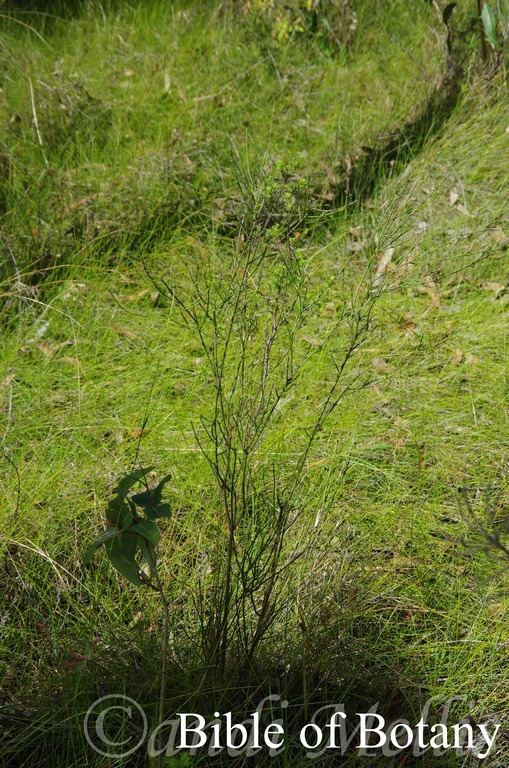
Sherwood Nature Reserve NSW
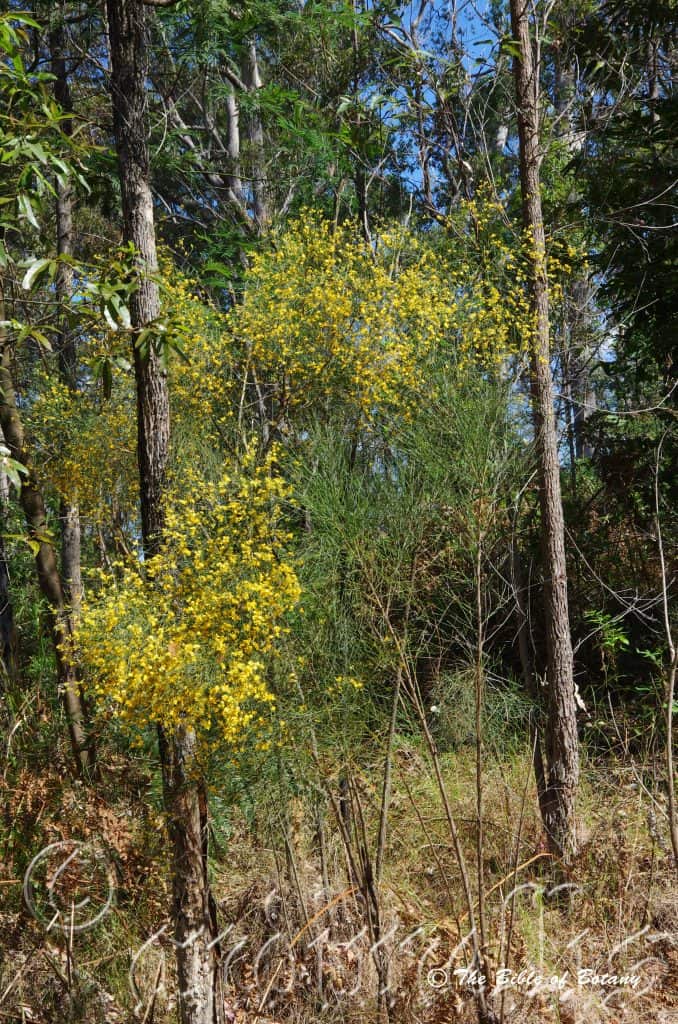
Mount Lyndsey State Forest Qld.
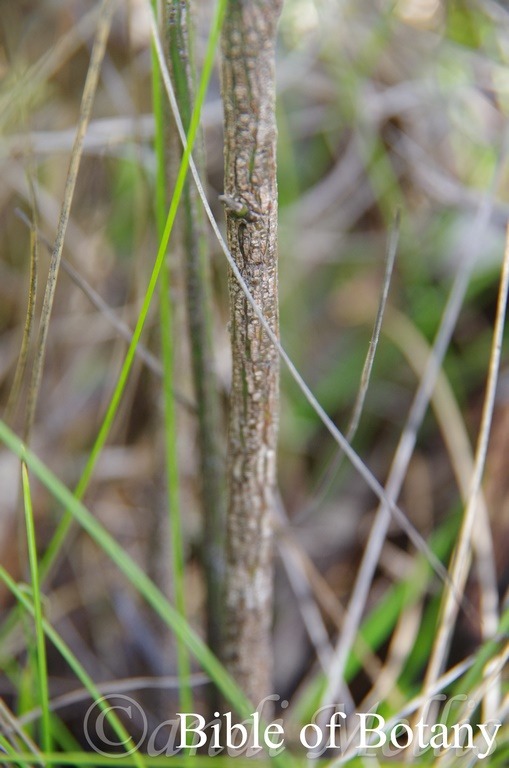
Sherwood Nature Reserve NSW
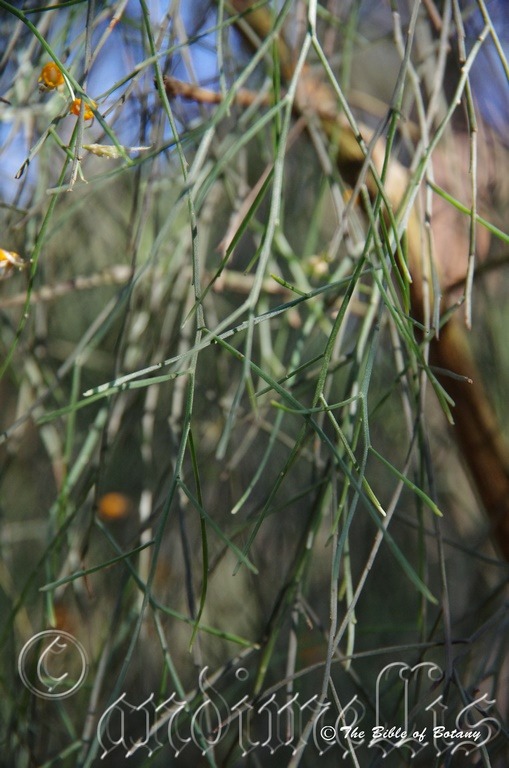
Mount Lyndsey State Forest Qld.
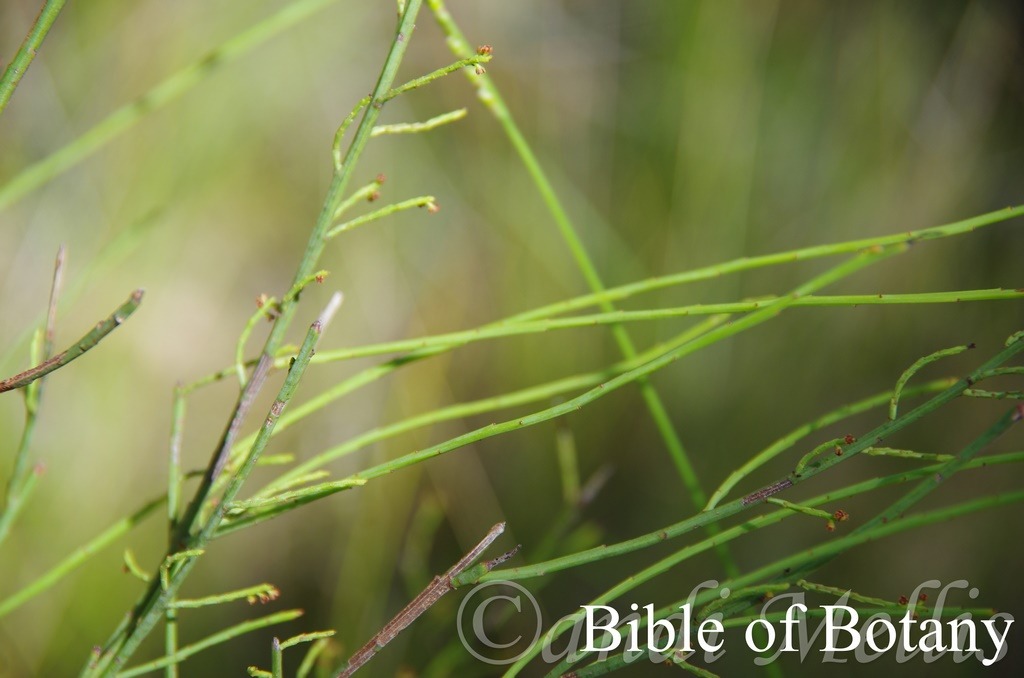
Sherwood Nature Reserve NSW
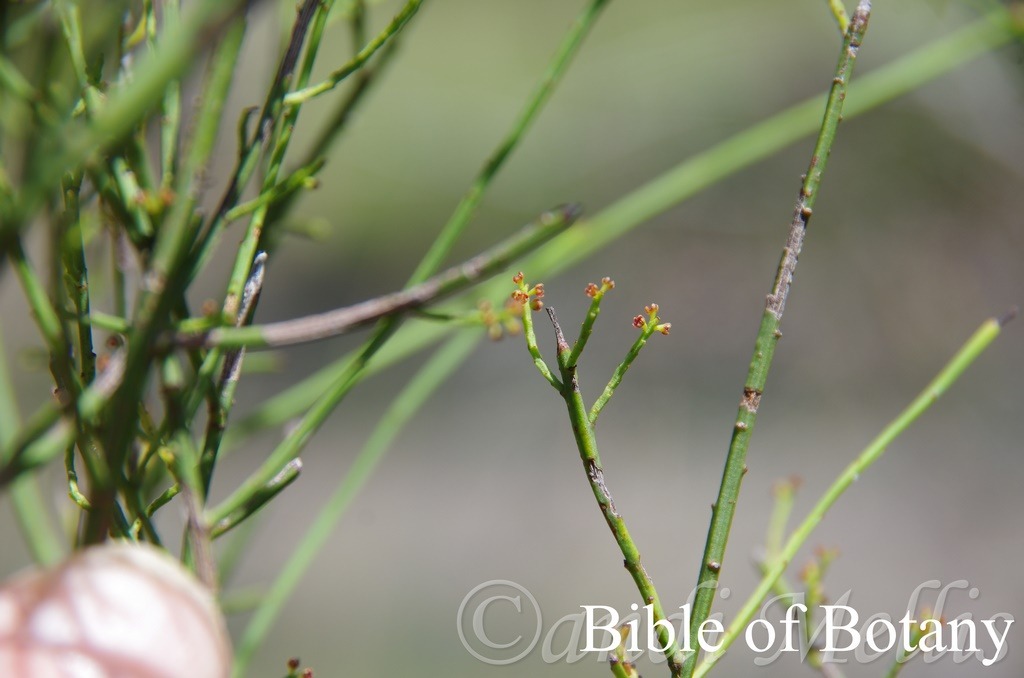
Sherwood Nature Reserve NSW
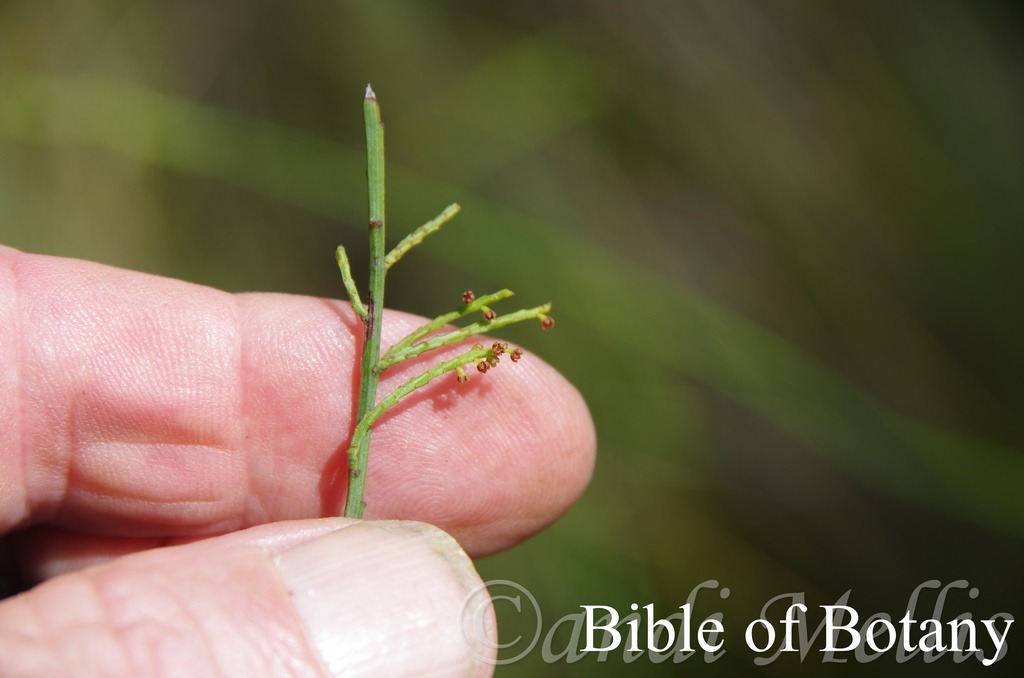
Sherwood Nature Reserve NSW
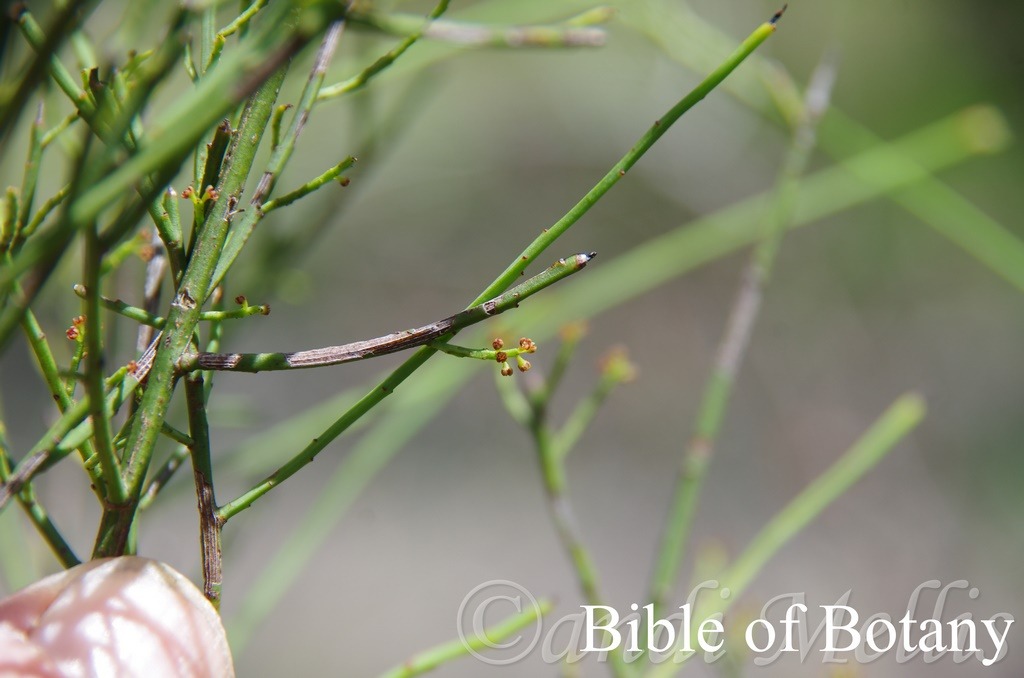
Sherwood Nature Reserve NSW
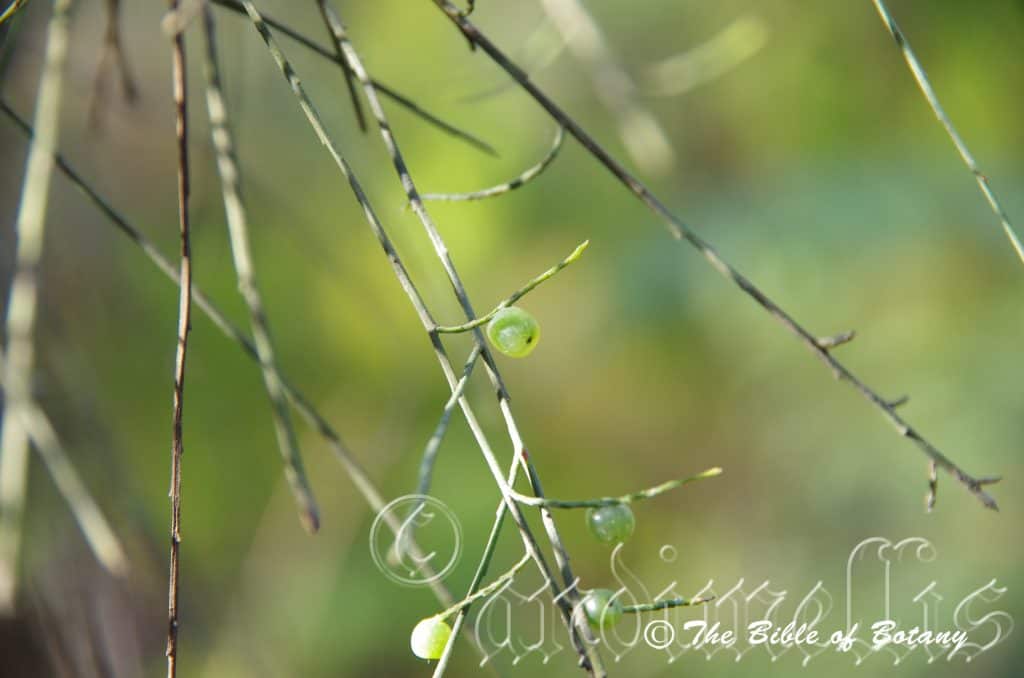
Mount Lyndsey State Forest Qld.
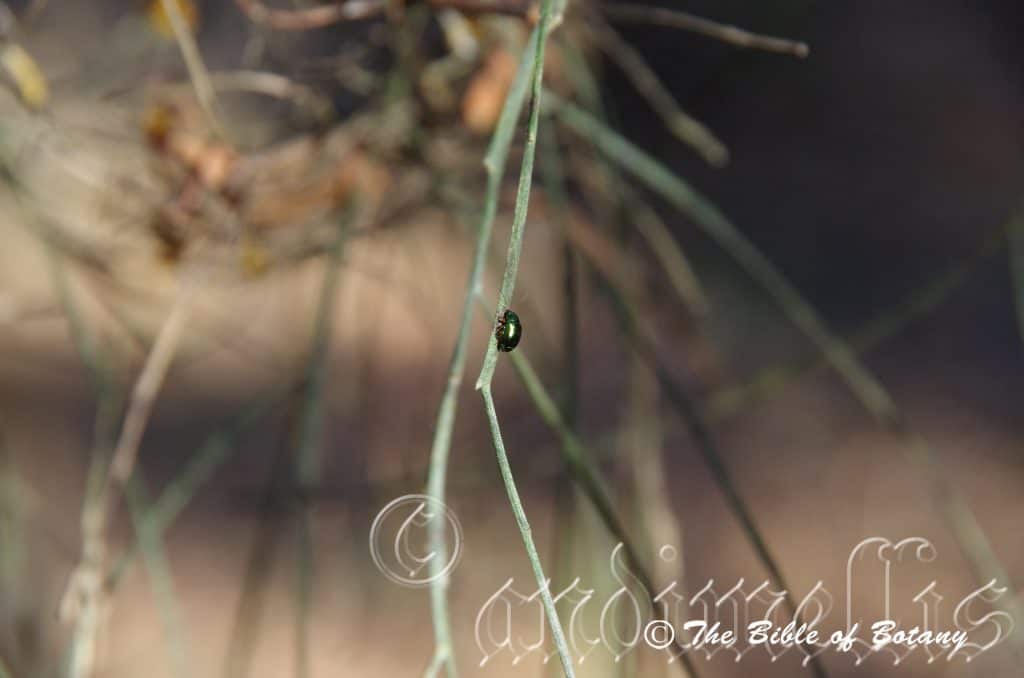
Mount Lyndsey State Forest Qld.
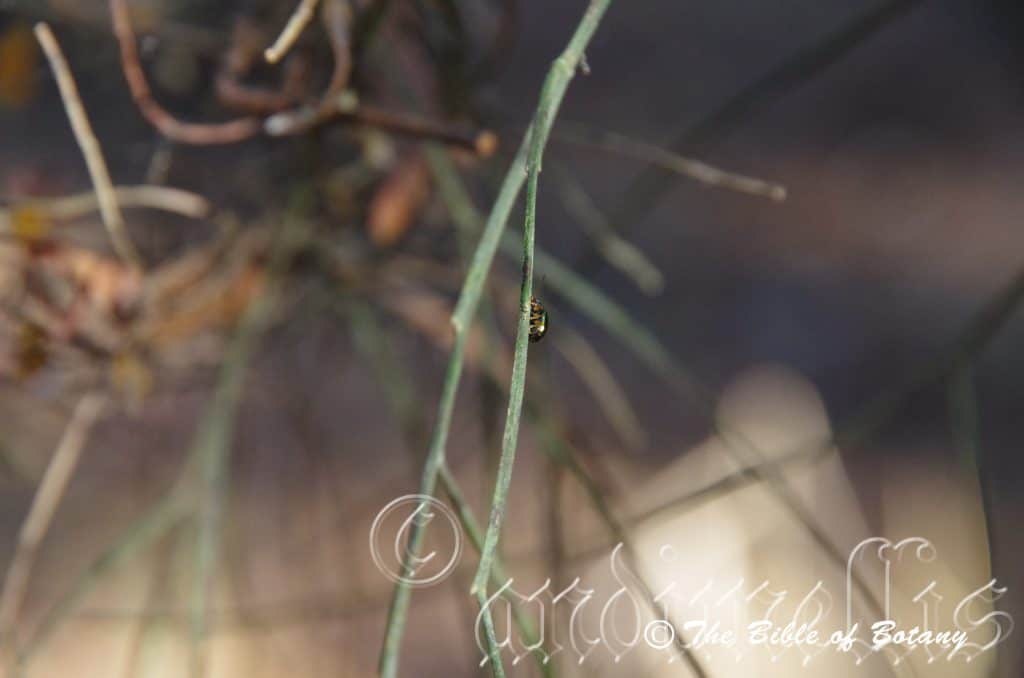
Mount Lyndsey State Forest Qld.
Leptomeria acida
Classification:
Unranked: Eudicot
Unranked: Core Eudicot
Order: Santalales
Family: Santalaceae
Genus: From Leptós, which is Ancient Greek for fine or slender and Meros, which is Ancient Greek for an organ or part. It refers to parts of flowers, which all have 5, slender sepals, petals, and stamens.
Specie: From Acidus, which is Latin for acidity or sour. It refers to the fruits having a sweet and sour taste.
Sub species:
Common Name: Native Currant or Sour Currant Bush.
Distribution:
leptomeria acida is found south from Bundaberg in coastal eastern Queensland south tagline in north eastern coastal Victoria. There are several disjunct populations further north and west on Rainbow Creek near Banana and Clyde Mountain north of Albury. It is mainly found on and east of the Great Dividing Range except for an area between Scone and Rylstone.
https://avh.ala.org.au/occurrences/search?taxa=Leptomeria+acida#tab_mapView
Habitat Aspect Climate:
Leptomeria acida prefers light dappled shade to full shade. It grows in dry sclerophyll forests in sheltered positions. The altitude ranges from 10 meter ASL to 700 meters ASL.
The temperatures range from minus 2 degrees in August to 38 degrees in January.
The rainfalls range from lows of 800mm to an average of 2000mm however this is of little consequence as the plants derive most their moisture from the creeks or streams they grow along.
Soil Requirements:
Leptomeria acida prefers better quality sandy loams to light gravelly clays. The soils are usually derived from decomposed granites, sandstone, metamorphic rocks or accumulated sands. The soils pH ranges from 5pH to 6pH. It does not tolerate waterlogged soils. Non saline soils to moderately saline soils are tolerated.
Height & Spread:
Wild Plants: 1m to 3m by 1m to 2.5m.
Characteristics:
Leptomeria acida’s is a small, erect parasitic plant that attaches itself to the roots of the host plant. The bark is grey-green and glabrous. The pale green branchlets are terete, strongly striated and glabrous.
The alternate, subulate to triangular caduceous leaves measure 1mm to 2mm in length by 1mm to 2mm in width. The bases are sessile while the apex is acute. The concolourous laminas are pale green, glabrous to sparsely cover in white appressed or semi appressed hirsute hairs. The margins are entire.
The inflorescences are born on short racemes from the old leaf axils. The racemes measure 10mm to 46mm in length. The flowers are sessile or shortly pedicillate. The caduceous bracts are ovate with acuminate apexes and measure 1mm in length. The tepals measure 0.35mm to 0.5mm length. The apexes are hooded to curved and are pale greenish-brown externally and mid to deep greenish-brown internally. The disc is not lobed. The flowers appear from December to early March.
The fruits are ovoidal drupes. The drupes measure 6mm to 9mm in length by 6mm to 10mm in diameter. The pale green drupes usually turn translucent lime-green or at times have a purple or reddish maroon tinge and soften when ripe. The style or style remnant turns black and is persistent on the ripe fruit. The drupes are ripe from to early November.
Wildlife:
Leptomeria acida’s wildlife is unknown to the author. The fruits are edible and have a pleasant acid currant flavour hence the common name. They were relished by aborigines in the past.
Cultivation:
Leptomeria acida is a beautiful erect small tree that grows particularly well on dry sandy loams to medium clays with plenty of leaf litter. It is suitable for small, medium and large bush gardens close to the coast or in the mountains in warm temperate, sub-tropical or tropical gardens. As garden subjects they will grow from 2 meters to 3 meters in height by 1 meter to 1.5 meters in diameter. It is cold tolerant to temperatures at least as low as minus 4 degrees once established. It can be lightly tip pruned if a smaller bushier shrub is required.
It would probably be difficult to establish and maintain. Jacksonia scoparia and Leptospermum polygalifolium especially subsp. flavescens are 2 of the natural hosts that I am aware.
Propagation:
Seeds: Leptomeria acida seeds can be sown directly into 250mm native pots where Jacksonia scoparia or Leptospermum polygalifolia are growing strongly and are at least meter in height. I would be hesitant to place the seeds on pots that have had synthetic fertilizers or chemicals added. Ensure the mixes are neutral and of a sandy nature.
Place 2 or 3 seeds 20mm to 25mm from the edge of the pots and water as normal for the host. Parasitic seeds normally germinate within a week and seek out the hosts roots fairly quickly.
Once the plants have established themselves and are 60mm to 100mm in height plant the host out in its final position. Sever the smaller plants if more than 1 has grown as more than 1 plant will weaken the host and could kill it.
I have grown Leptomeria acida successfully using this method and they have transplanted successfully without any problems.
Fertilize using seaweed, fish emulsion or organic chicken pellets soaked in water on an alternate basis. Fertilize every two months until the plants are established then twice annually in early September and March to maintain health, vitality and better flowering.
Further Comments from Readers:
Hi reader, it seems you use The Bible of Botany a lot. That’s great as we have great pleasure in bringing it to you! It’s a little awkward for us to ask, but our first aim is to purchase land approximately 1,600 hectares to link several parcels of N.P. into one at The Pinnacles NSW Australia, but we need your help. We’re not salespeople. We’re amateur botanists who have dedicated over 30 years to saving the environment in a practical way. We depend on donations to reach our goal. If you donate just $5, the price of your coffee this Sunday, We can help to keep the planet alive in a real way and continue to bring you regular updates and features on Australian plants all in one Botanical Bible. Any support is greatly appreciated. Thank you.
In the spirit of reconciliation we acknowledge the Bundjalung, Gumbaynggirr and Yaegl and all aboriginal nations throughout Australia and their connections to land, sea and community. We pay our respect to their Elders past, present and future for the pleasures we have gained.
Leptomeria drupacea
Classification:
Unranked: Eudicot
Unranked: Core Eudicot
Order: Santalales
Family: Santalaceae
Genus: From Leptós, which is Ancient Greek for fine or slender and Meros, which is Ancient Greek for an organ or part. It refers to parts of flowers, which all have 5, slender sepals, petals, and stamens.
Specie: From Drupacea, which is Ancient Greek for an over ripe fruit. It refers to a fruits, which have a soft fleshy mesocarp.
Sub species:
Common Name:
Distribution:
Leptomeria drupacea is found from Tweed Heads in far north eastern New South Wales in New South Wales to Orbost in the far north eastern coastal Victoria. It is mainly found on and east of the Great Dividing Range except for a couple of populations that venture further west near Mount Kaputar and El Dorado.
In Tasmania it is found on the eastern Bass Strait Islands of the Flinders Island Group and on the mainland it covers most the Island except for the south western highlands.
https://avh.ala.org.au/occurrences/search?taxa=Leptomeria+drupacea#tab_mapView
Habitat Aspect Climate:
Leptomeria drupacea prefer light dappled shade to full shade. It grows in dry sclerophyll forests to wet Eucalyptus forests along creek beds. The altitude ranges from 20 meter ASL to 1000 meters ASL.
The temperatures range from minus 4 degree in August to 38 degrees in January.
The rainfalls range from lows of 500mm to an average of 3200mm.
Soil Requirements:
Leptomeria drupacea prefers to grow on peaty sands, sandy loams to light gravelly clays and skeletal rocky terrain. The soils are usually derived from decomposed granites or at times sandstone. The soils pH ranges from 5pH to 6pH. It tolerates waterlogged soils. Non saline soils to moderately saline soils are tolerated.
Height & Spread:
Wild Plants: 1.5m to 3m by 1m to 2m.
Characteristics:
Leptomeria drupacea’s is a small erect parasitic plant that attaches itself to the roots of the host plant. The bark is grey brown and flaky often hangs on the trunk and lower branches. The green to grey-green branchlets are semi terete, striate and somewhat glaucous.
The alternate, caduceous leaves are subulate to triangular and measure 1mm to 1.5mm in length by 1mm to 1.5mm in width. The bases are truncate and sessile while the apexes are acute. The concolourous laminas are blue-green and mainly caduceus. The margins are entire. The mid vein is slightly prominent on the lower lamina and is not visible on the upper lamina.
The inflorescences are born in short racemes from the leaf axils and measure 10mm to 40mm in diameter. There are 6 to 16 individual flowers on a raceme. The sessile caduceous flowers’ bracts are ovate with an acute apex and measure 0.7mm to 0.9mm in length. The 5 white petals measure 0.5mm to 1mm in length. It is covered in white ciliate hairs on the margins. The 5 glabrous petals measure 2mm to 3mm in length by 2.5mm to 3.5mm wide.
The disc is distinctly lobed between the 10 stamens. The anthers are circular and flattened. It is fused to the outer rim of the hypanthia. The green style is centrally located on the bright glossy lime-green disc. The flowers appear from November to January.
The fruits are small ovoidal berries. The berries measure 4mm to 9mm in length by 4mm to 8mm in diameter. The grey-green capsules turn glossy lime-green when ripe. The style remnants and tepals are persistent at the apex of the ripe berries.
Wildlife:
The fruits are apparently fed upon by numerous small honeyeaters.
Cultivation:
Leptomeria drupacea are beautiful semi weeping to weeping small shrub that grows particularly well on drier medium clay soils. It is suitable for small, medium and large gardens close to the coast or high in the mountains in warm temperate, sub-tropical or tropical gardens. As garden subjects they will grow from 2 meters to 3meters in height by 1.5 meters to 2 meters in diameter. It is cold tolerant to temperatures at least as low as minus 4 degrees once established. It can be lightly tip pruned if a smaller bushier shrub is required.
Propagation:
Seeds:
The hosts of Leptomeria drupacea are probably the same as for Leptomeria acida so can be treated similar to Leptomeria acida. These includeMyoporum parvifolium, Jacksonia scoparia or Jacksonia Chappilliae should be prepared earlier and preferably in a semi advanced state in 150mm pots.
Leptomeria drupacea seeds can be sown directly into a plastic bag with moist vermiculite.
Leptomeria drupacea can then be introduced into a 250mm pot with its selected host plant, where it will survive for some time on its own food reserves. The new roots of the host will be produce and these roots will be parasitised in a couple of weeks.
When growing vigorously they can be planted out in their permanent position.
Do not add synthetic fertilizers but use half strength seaweed, fish emulsion or organic chicken pellets soaked in water on an alternate basis. Fertilize every three months until the plants are established then twice annually in early September and March to maintain health, vitality and better flowering.
Further Comments from Readers:
Hi reader, it seems you use The Bible of Botany a lot. That’s great as we have great pleasure in bringing it to you! It’s a little awkward for us to ask, but our first aim is to purchase land approximately 1,600 hectares to link several parcels of N.P. into one at The Pinnacles NSW Australia, but we need your help. We’re not salespeople. We’re amateur botanists who have dedicated over 30 years to saving the environment in a practical way. We depend on donations to reach our goal. If you donate just $5, the price of your coffee this Sunday, We can help to keep the planet alive in a real way and continue to bring you regular updates and features on Australian plants all in one Botanical Bible. Any support is greatly appreciated. Thank you.
In the spirit of reconciliation we acknowledge the Bundjalung, Gumbaynggirr and Yaegl and all aboriginal nations throughout Australia and their connections to land, sea and community. We pay our respect to their Elders past, present and future for the pleasures we have gained.